Culture of Conservation
Experiencing the biodiversity-rich rainforest and coast of Costa Rica, students will have the opportunity to conduct field investigations and contribute to citizen science projects. Some of the activities may include touring local organic farms, monitoring wildlife through camera traps, and participating in sea turtle night monitoring. Students studying Spanish will be able to practice and improve their communication skills in this course while doing fieldwork with local research partners. As a culmination of the course, students will identify a problem of their choosing, for example, land conservation, climate change, and indigenous communities or bridging Indigenous Ecological Knowledge and “Western Science.” They will use research, their fieldwork in Costa Rica, and creative problem-solving to present a solution that could potentially apply to their own communities.
Read the student reflections on their travel experience below, which will be updated throughout their trip.
Oct 1 | Oct 2 | Oct 5 | Oct 6 | Oct 7 | Oct 8 | Oct 9 | Oct 10
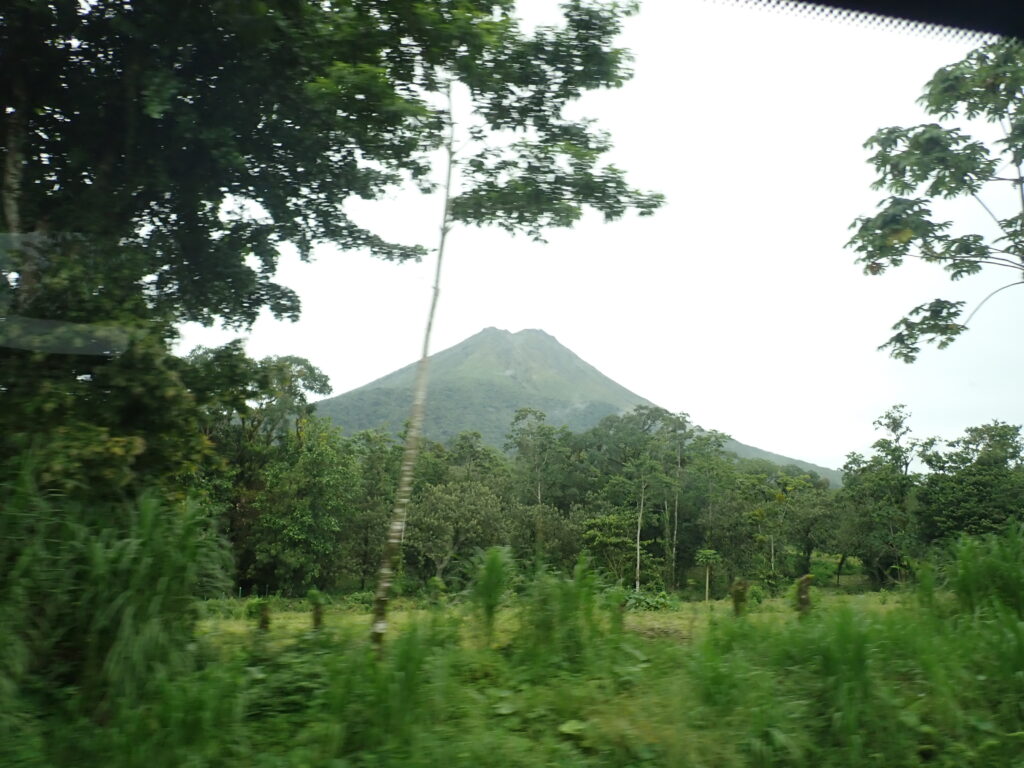
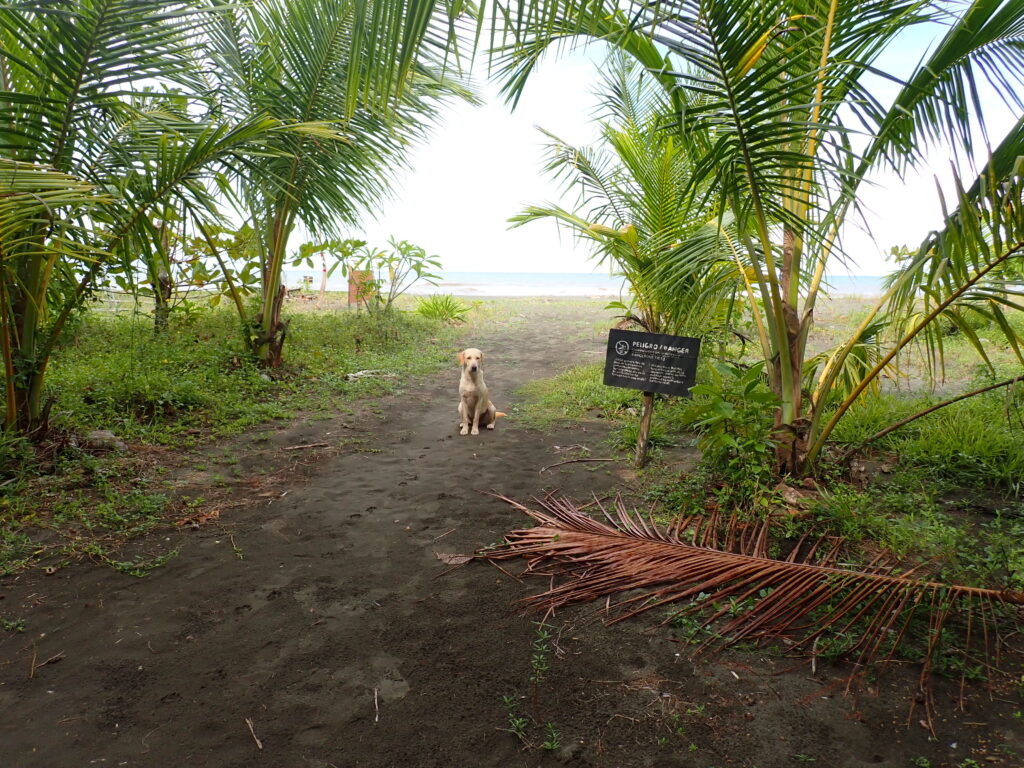
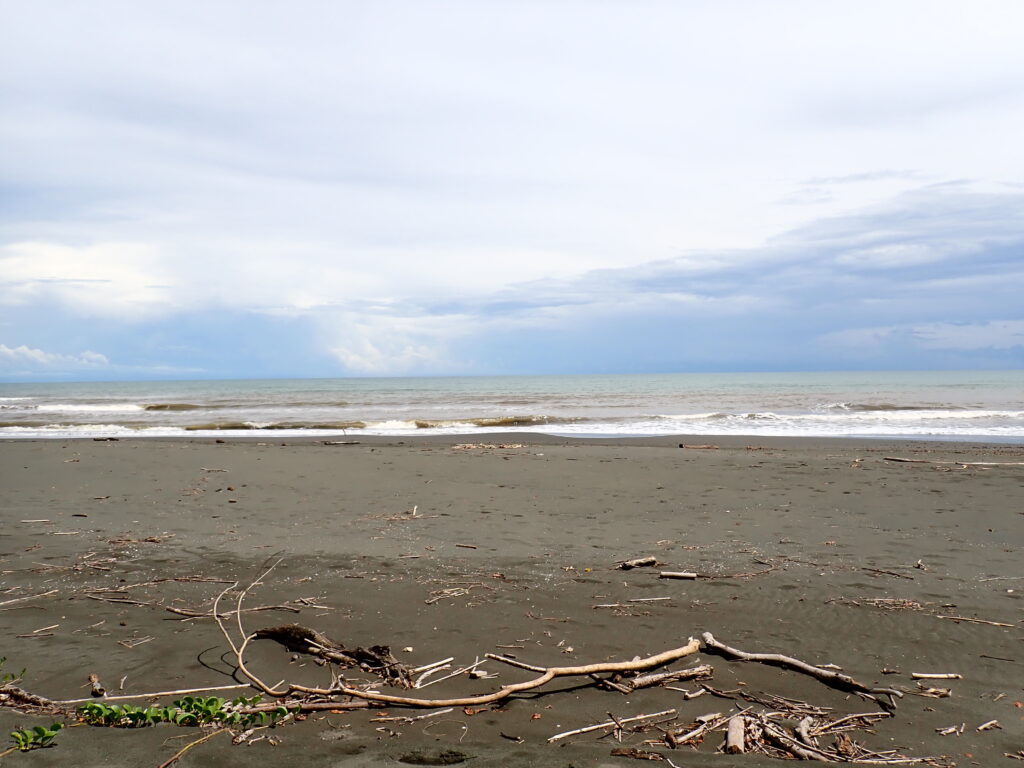
October 10, 2023
Student Author: Helena
Today was the Grand Finale of our trip to Costa Rica! Early in the morning, we ate breakfast and headed to go white water rafting. We had such fun paddling together in our groups and riding the currents in the river. Our guide, Jeff, was so funny and kept our boat group entertained the entire time. He was very knowledgeable about the surroundings of the river and informed us about the different types of birds and reptiles that we saw as we paddled. He picked out a few ferns from the bushes near the water’s edge and used them to decorate all our helmets. Our group was then known as the Fern Team! In the middle of our journey down the river, we got out of the boat and walked to a mini cliff where our entire class jumped from. We all did cool and silly poses and cheered each other on. Later in our journey, we were allowed to jump off the boat and go for a swim in the river. It was very calm as we all drifted along in the stream and chatted with one another. After a while, we stopped to enjoy some freshly cut-up pineapples, sour oranges, and cookies. It tasted super good and gave us more energy to paddle for the last section of our river rafting experience. Then, after a bit more paddling, splashing water on other boats, and swimming, we arrived back at our stay in the Chilamate Eco Retreat.
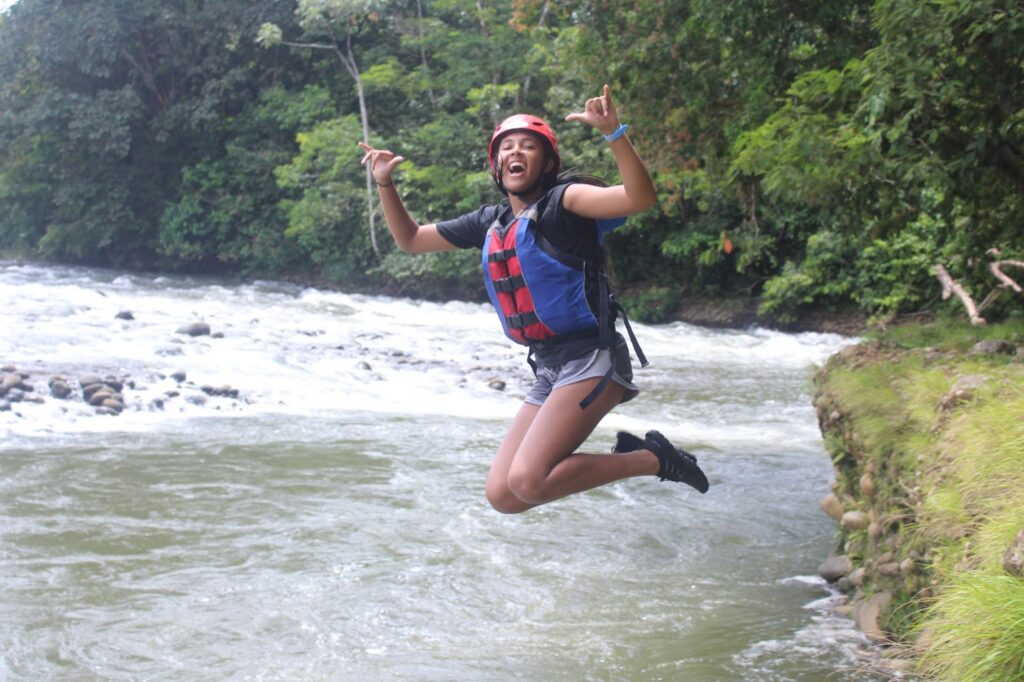
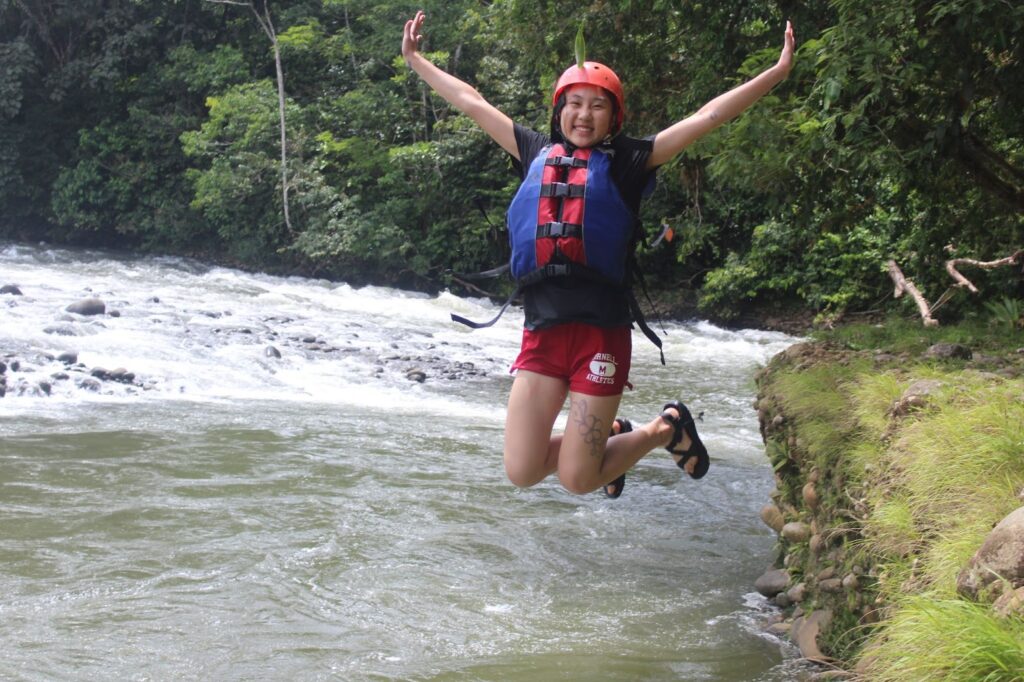
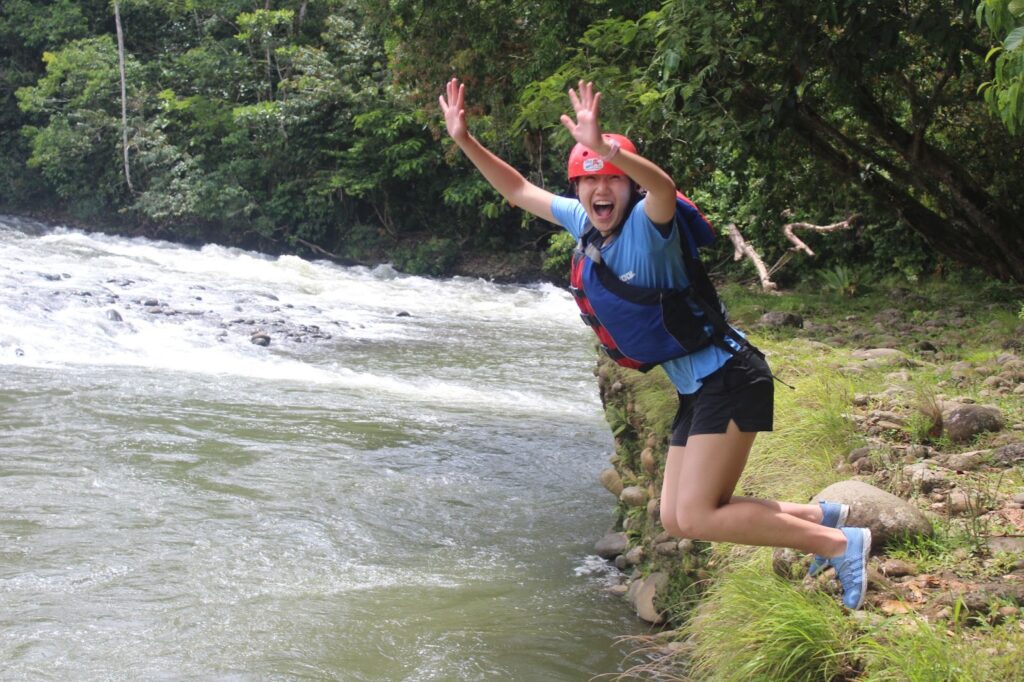
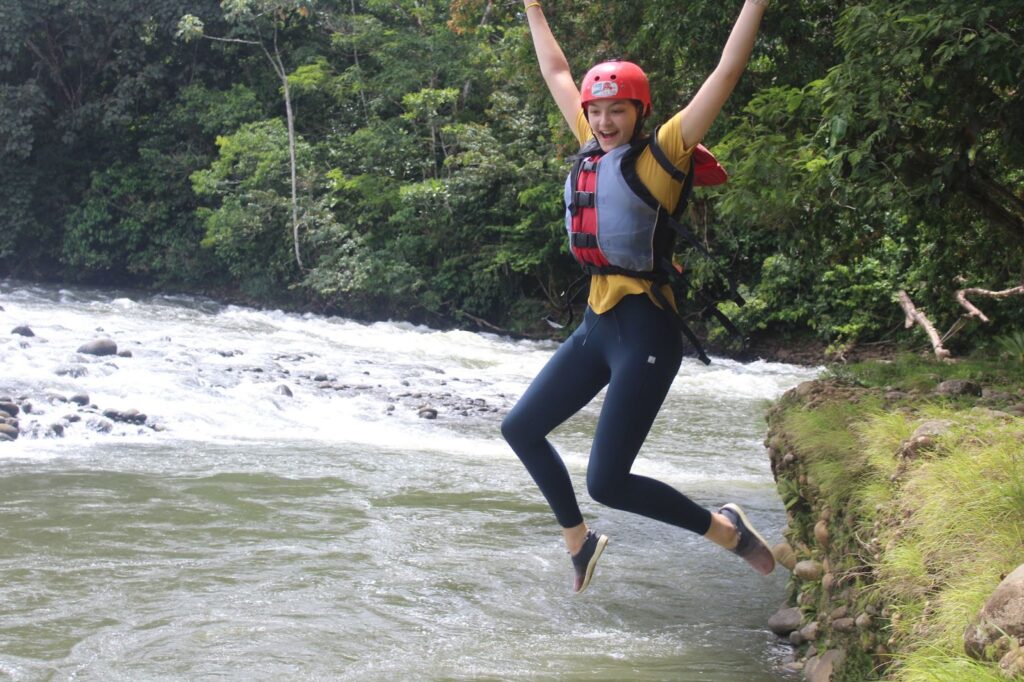
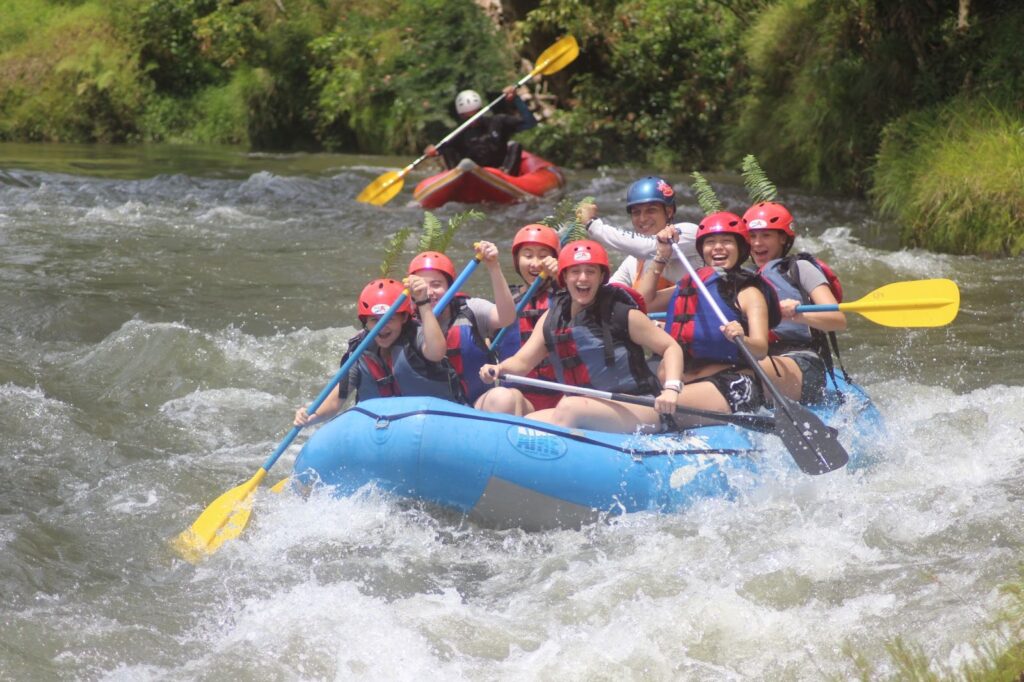
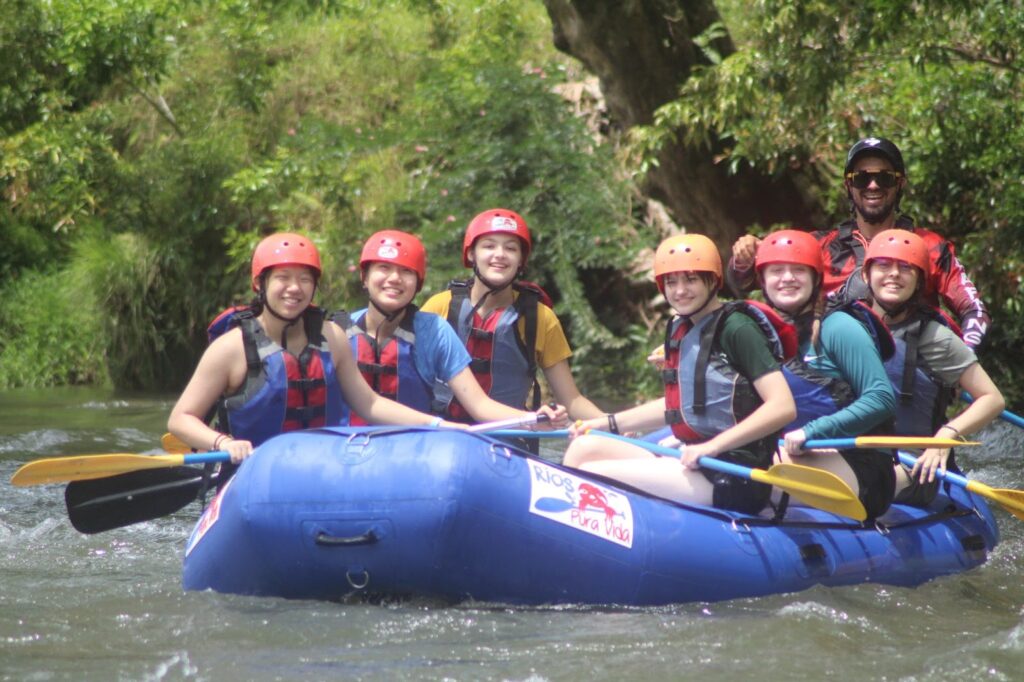
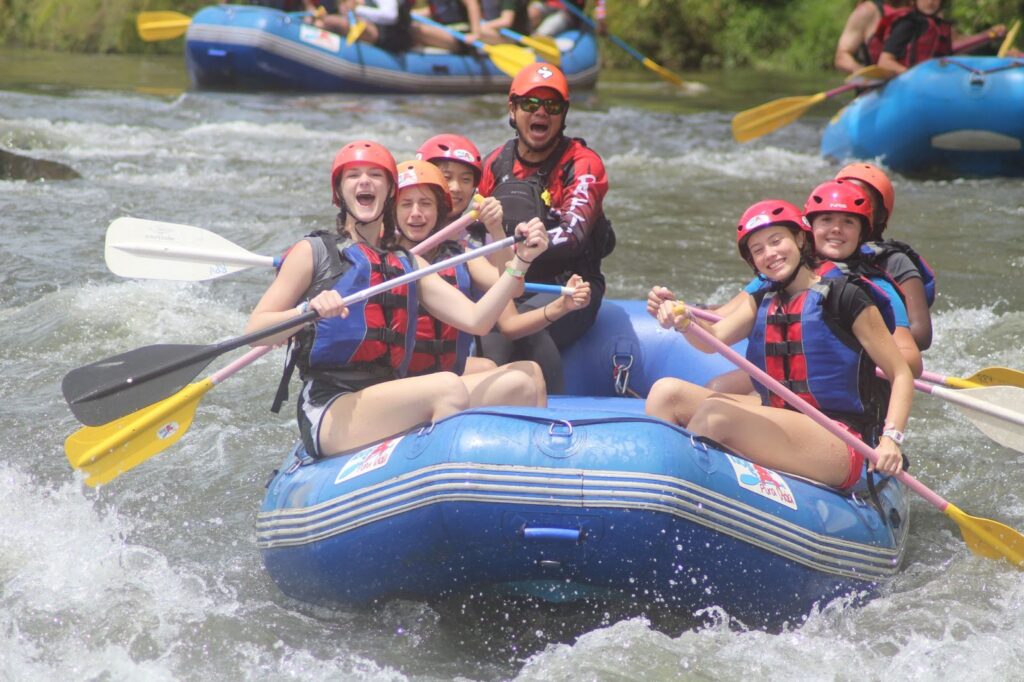
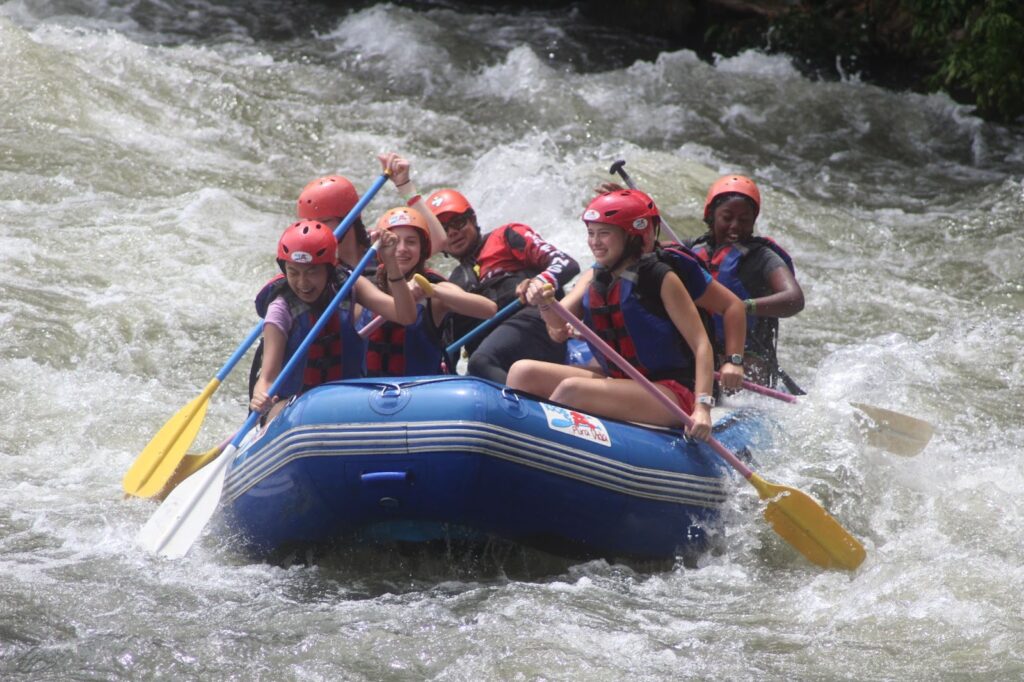
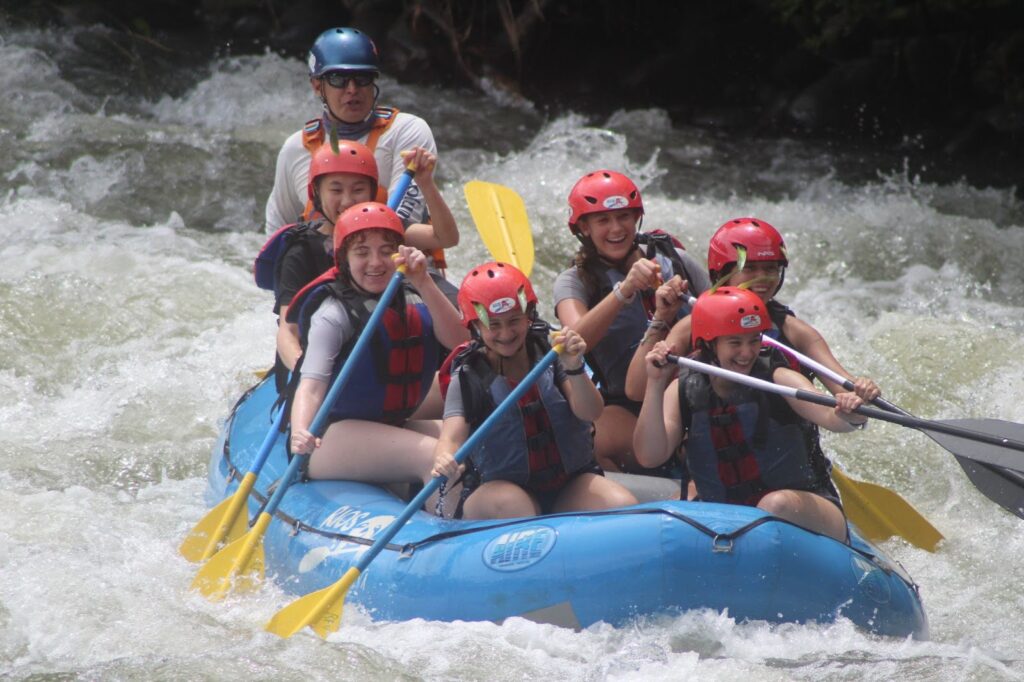
Student Author: Mary
As the afternoon rolled around, local artisans visited Chilamate to set up a sale of hand-made artifacts, including bracelets, wooden carvings, and a variety of daily accessories. Many of the items displayed artistic elements unique to Costa Rica and were decorated with feathers and beads. The purchases made by the class would support the artists and their families, which, in turn, would help preserve art and culture essential to the local community. Although many of us were not fluent in Spanish, the artisans kindly introduced to us the meaning behind different pieces. We learned that many of the items were made from recycled paper and metals that produce minimal harm to the environment.
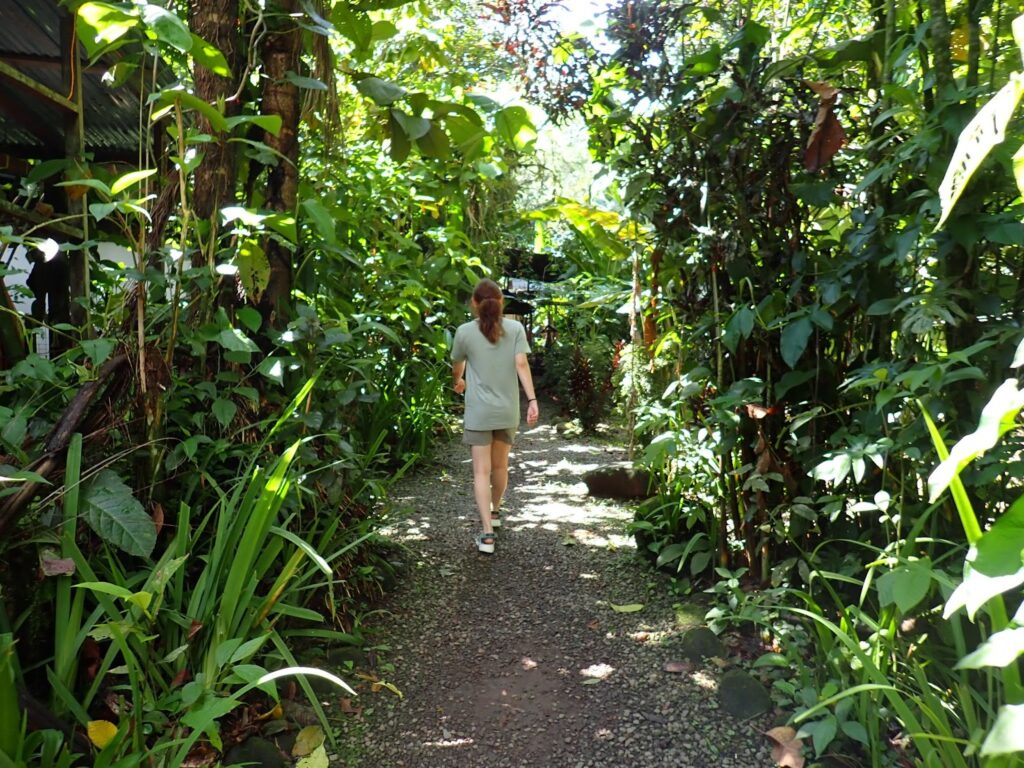
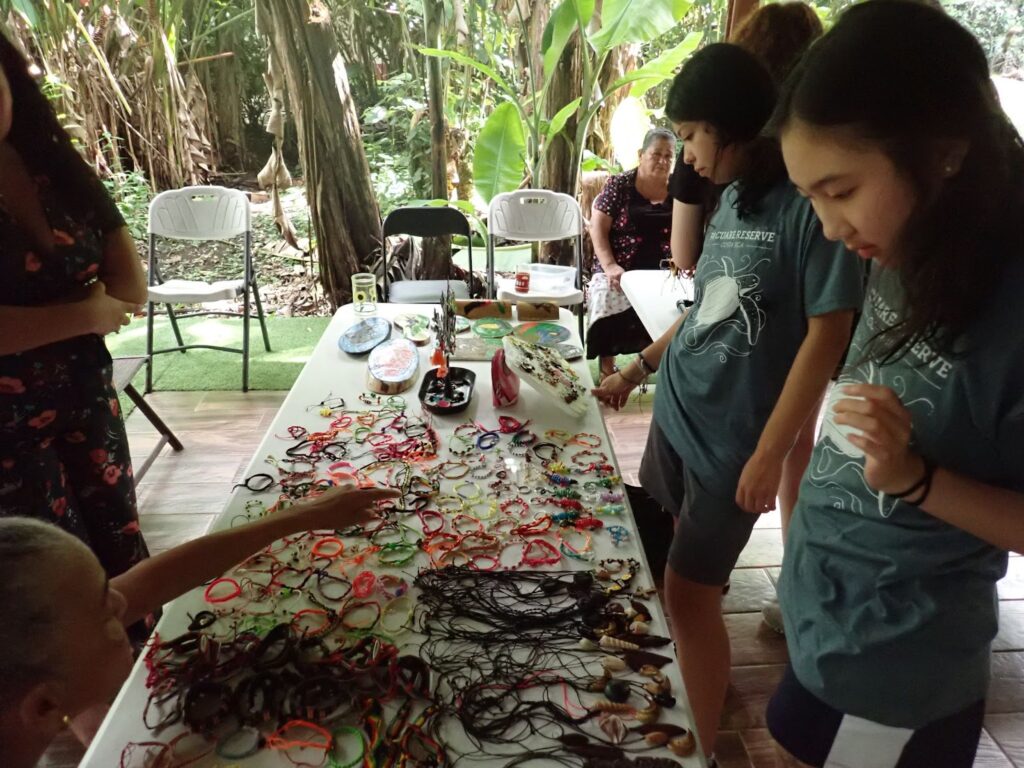
Student Author: Jeva
After dinner, we headed back to the classroom, where we had a dance party. Three guests native to Costa Rica were invited to teach us about the traditional dances and why they were important to the community. We were taught how to dance bachata, cumbia, swing criollo, and the told us about the masquerades (a type of parade with big heads). We even got to wear the big heads and dance with the scarves. All these dances were and are still vital because they represent the different aspects of Costa Rican culture. Some of us also got to try on traditional Costa Rican clothing, which consisted of beautiful long skirts and a top for the woman and a bandana and a hat for the man. I felt like time went by so fast because we were having so much fun being in the moment and embracing the pura vida lifestyle. The music played was also magical to the ear. Not only was this experience fun, but it also helped us deeply immersed in and learn about the Costa Rican culture.
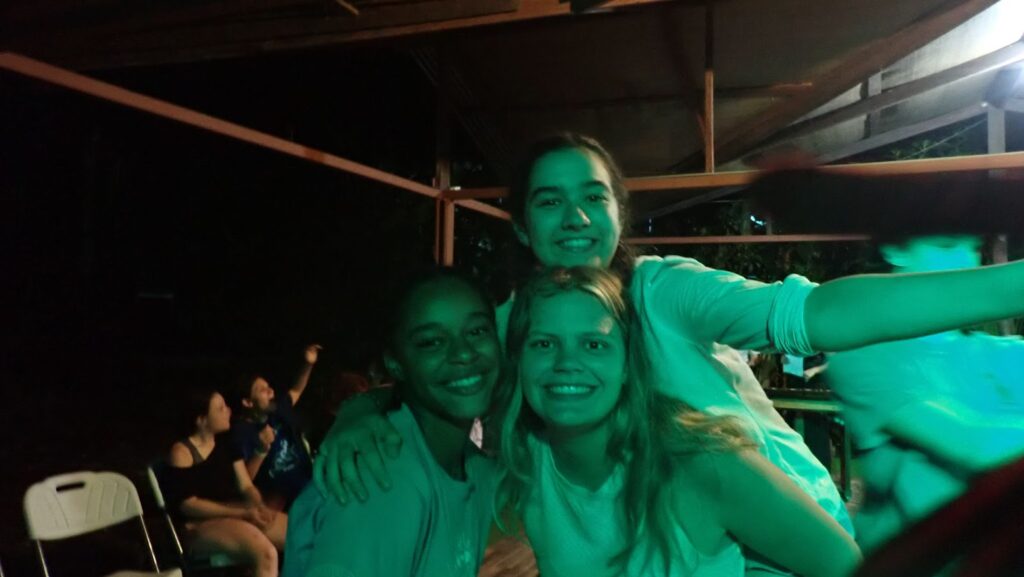
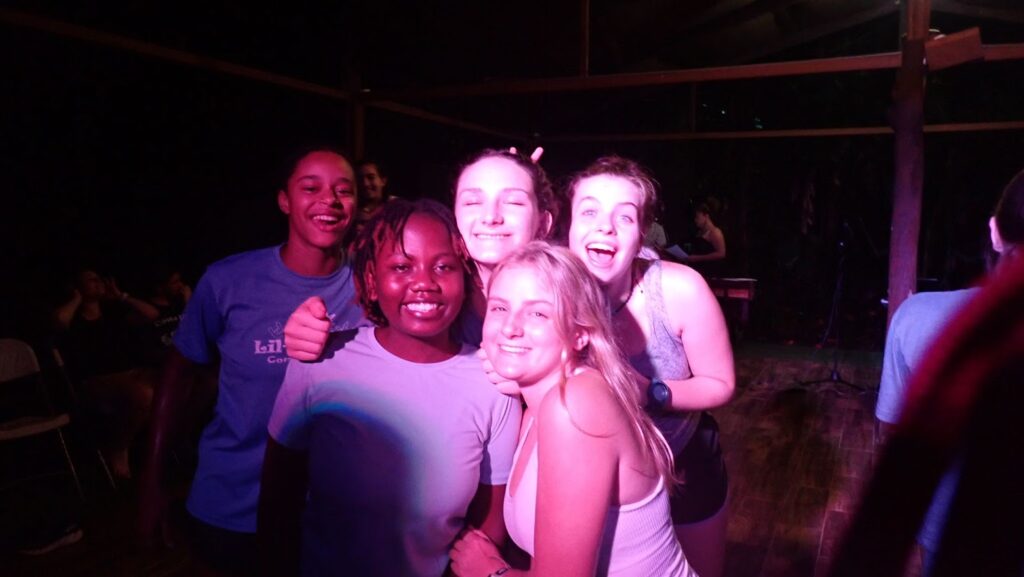
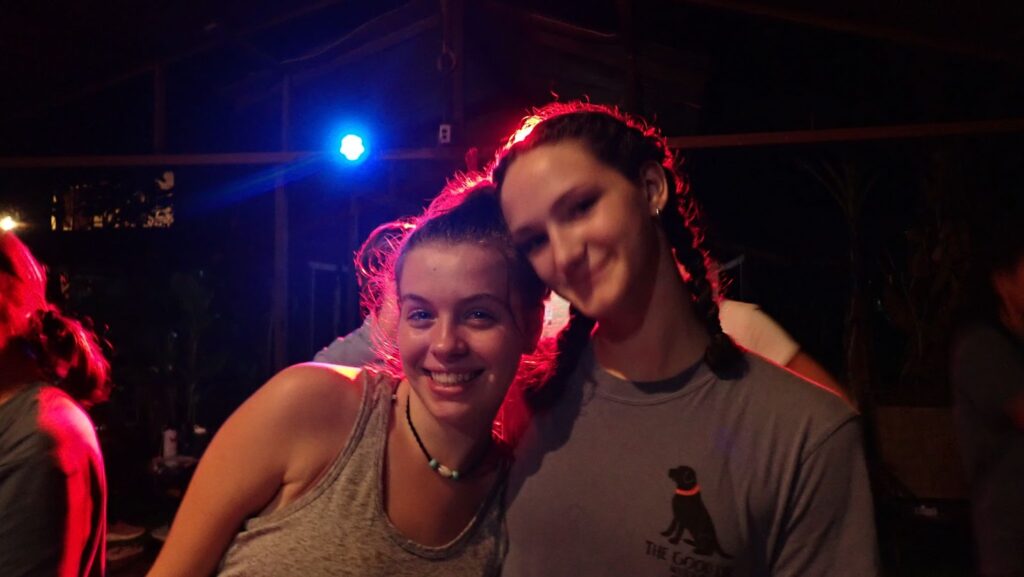
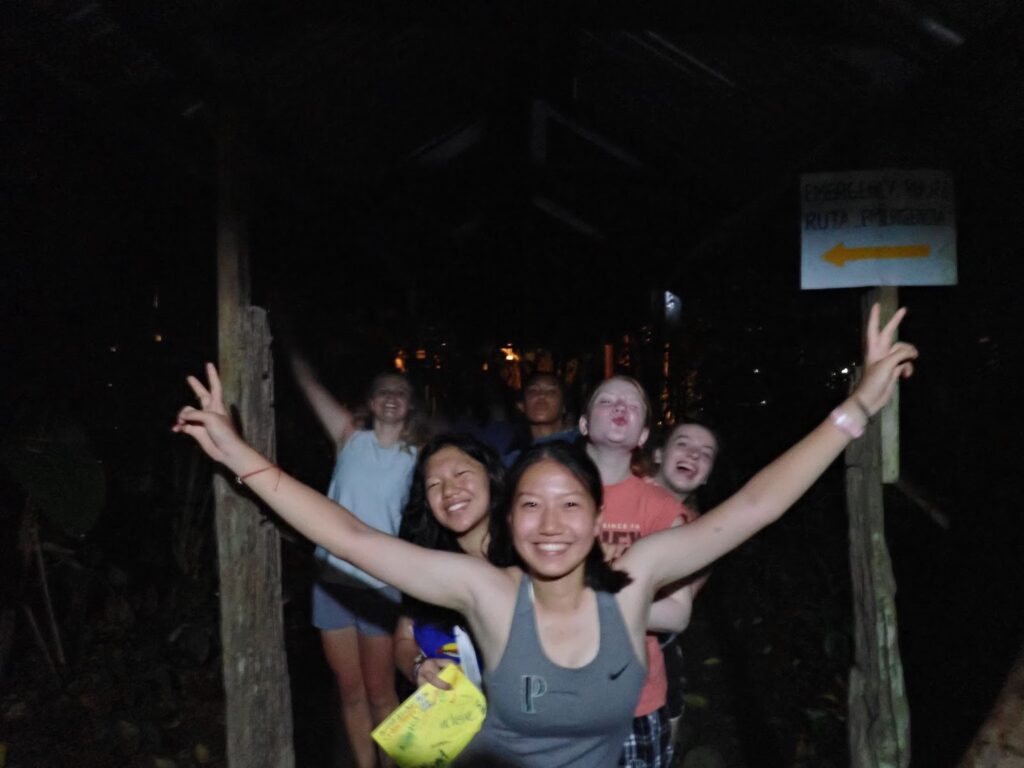
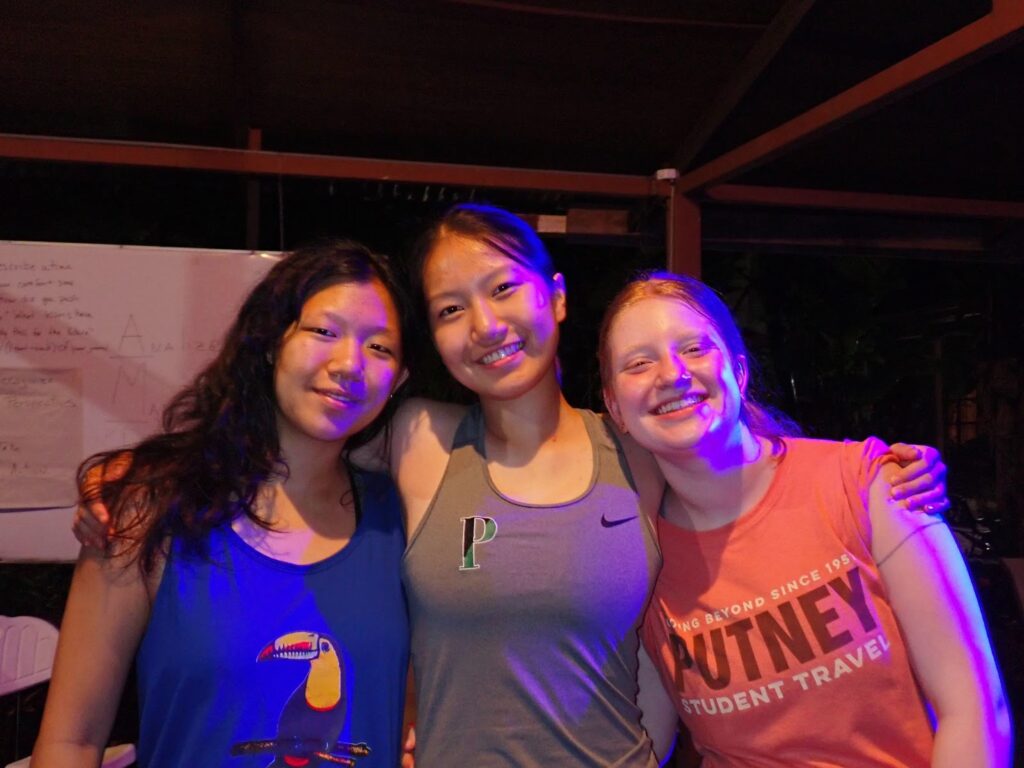
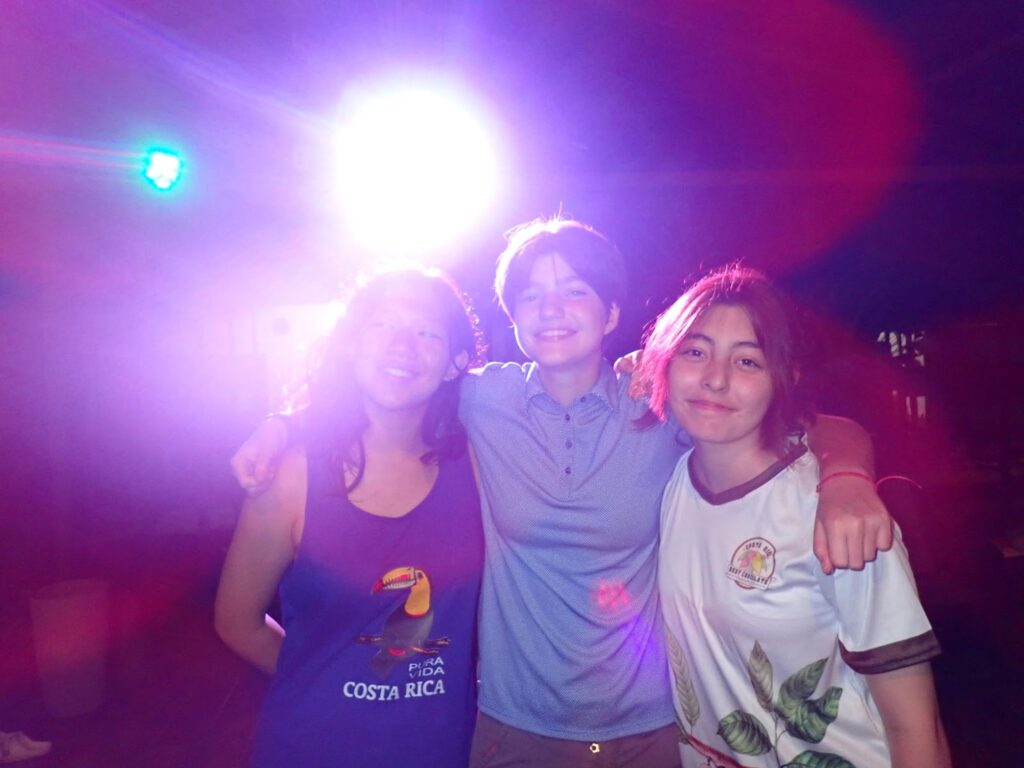
Student Author: Mary
With the blink of an eye, it’s time to say goodbye. From days one to eleven, our experience cannot be captured in a few sentences. For me, Costa Rica has become far more than a travel guide. It is the canopy that runs to the horizon from the tower of Lapa Verde; it is the colorful butterflies at Tirimbina and the dense forest at Bijagual; most of all, it is the people we have met along the way. Part of the journey is the end, but I believe that we will bring with us the lessons learned and relationships formed in the process. Maybe you will hear some of us talk about the amazing white-water rafting and the migration of turkey vultures (both of which made their way to the top of my list of favorite experiences in Costa Rica). Just so you know, we would love to have you as part of the conversation and tell you anything you want to hear about our trip.
October 9, 2023
Student Author: Victoria
Hi everyone!!! Today, we concluded our final day of visiting research facilities. My group and I went to Tirimbina, a reserve that focuses on butterflies. First, we started off by learning about a little bit of the background of what we were going to see; then, we walked across a suspension bridge, which was quite scary but a fun experience. We then walked around the reserve, caught some butterflies, and tried to figure out whether they were female or male and what type of butterfly they were. We finally walked back to where we started and had a delicious lunch with many buffet options. After, we took a 20-minute bus drive back to Chilamate, soaking in all the AC we could. Shoutout to Group 3 Me, Kinley, Hua, Zaria, Anna R, Emmy, Helen and Mary for being there for each other and making funny memories throughout each visit. Later on in the day, we did an adventure race where we separated into 5 different groups and had to complete certain tasks at 5 stations that were around the community. My group and I started off with some dancing, where we learned some Costa Rican traditional dances like Bachata, Merengue and Salsa. We then went over to other families’ homes, where we milked a cow, made tortillas, and learned about yuca, which is a root that’s similar to potatoes. Sadly, we couldn’t complete our final activity, which was in the river due to the crazy weather but looking forward to white water rafting tomorrow to conclude our final activity on our 12-day trip to Costa Rica!

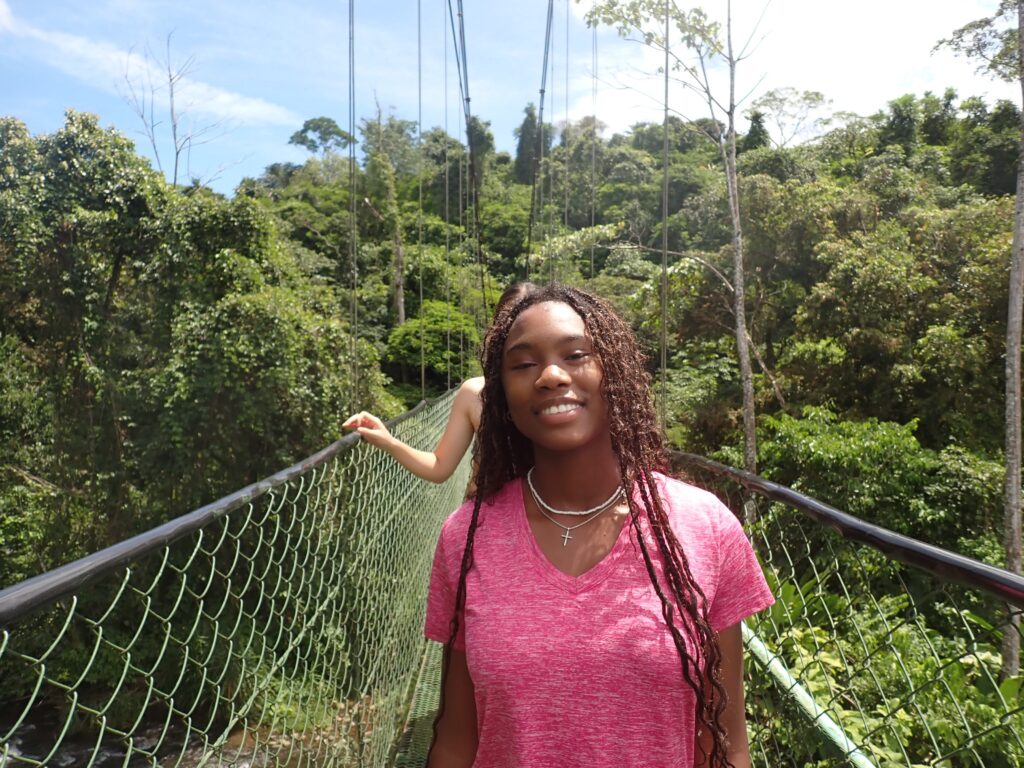
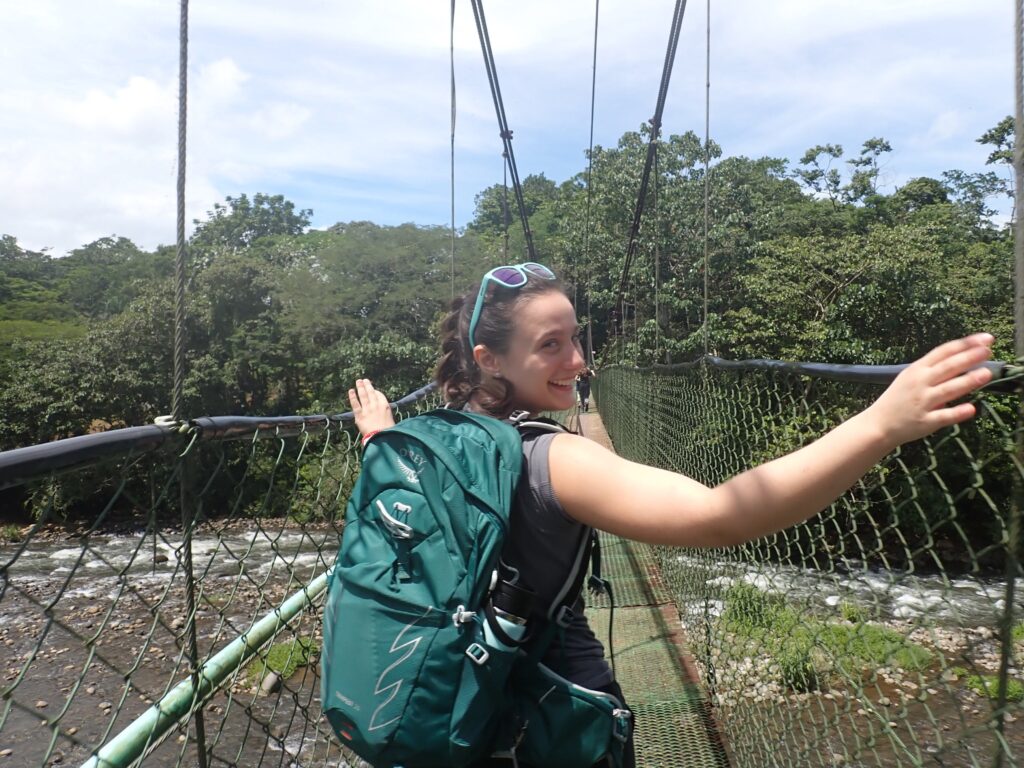
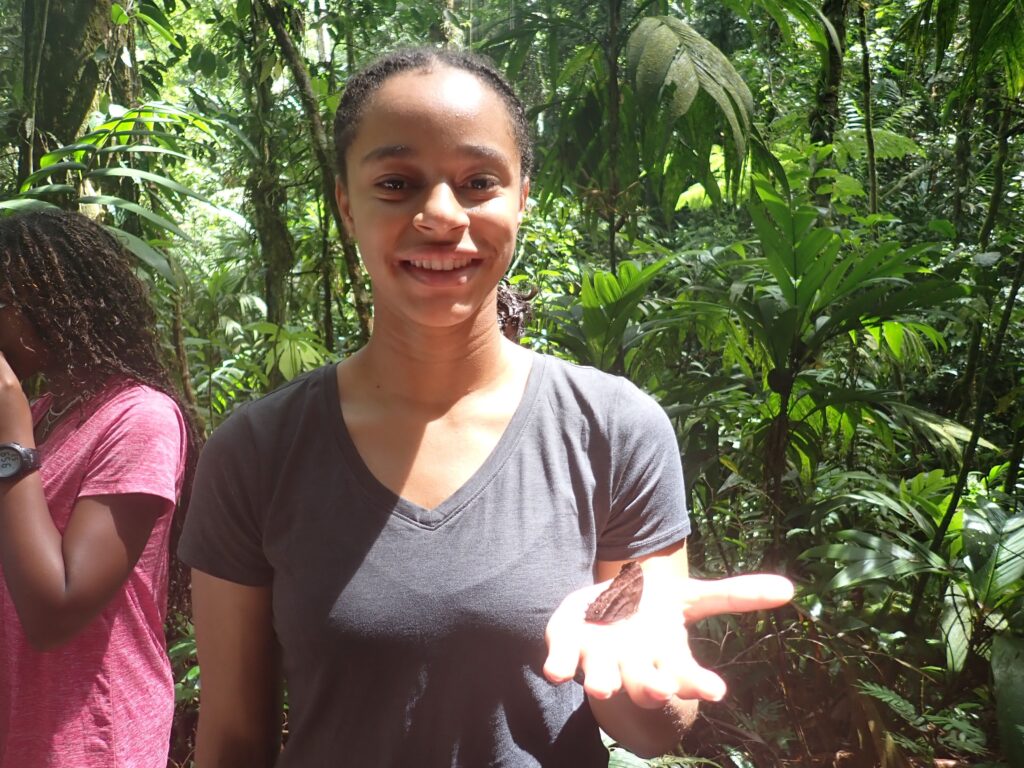
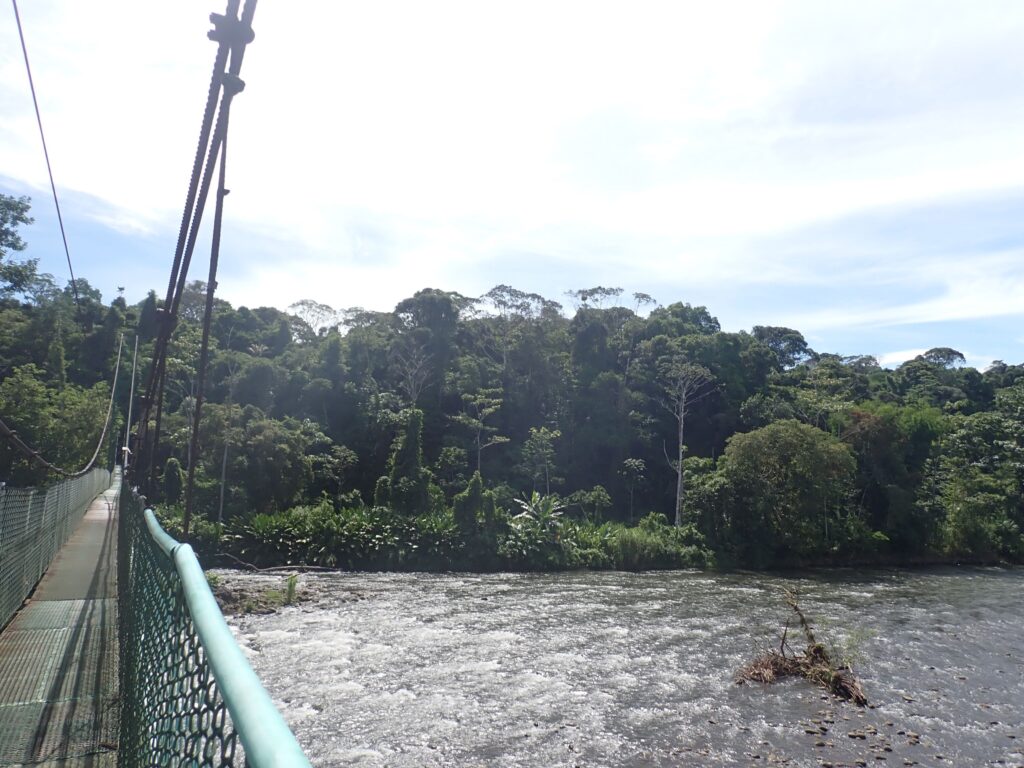
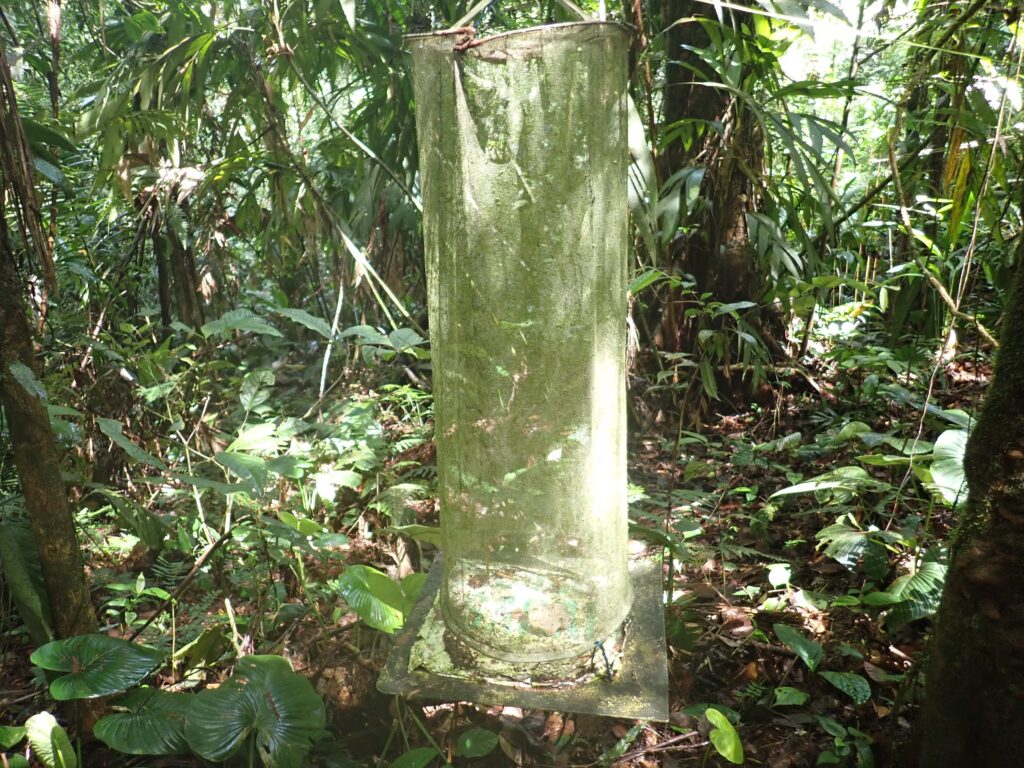
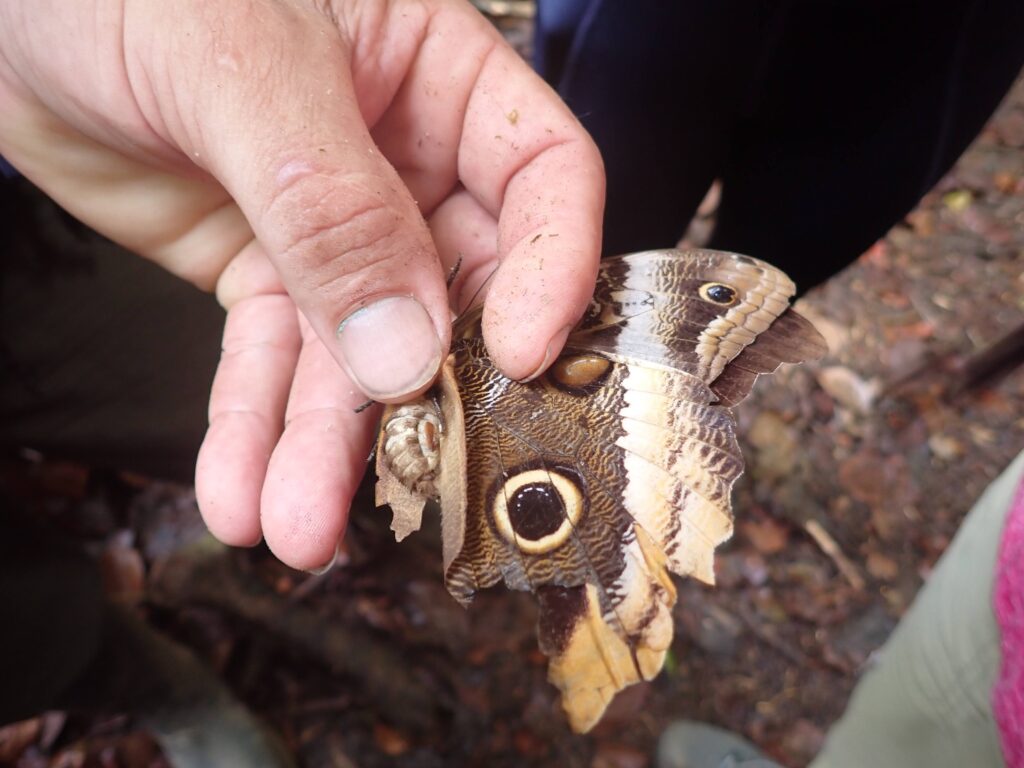
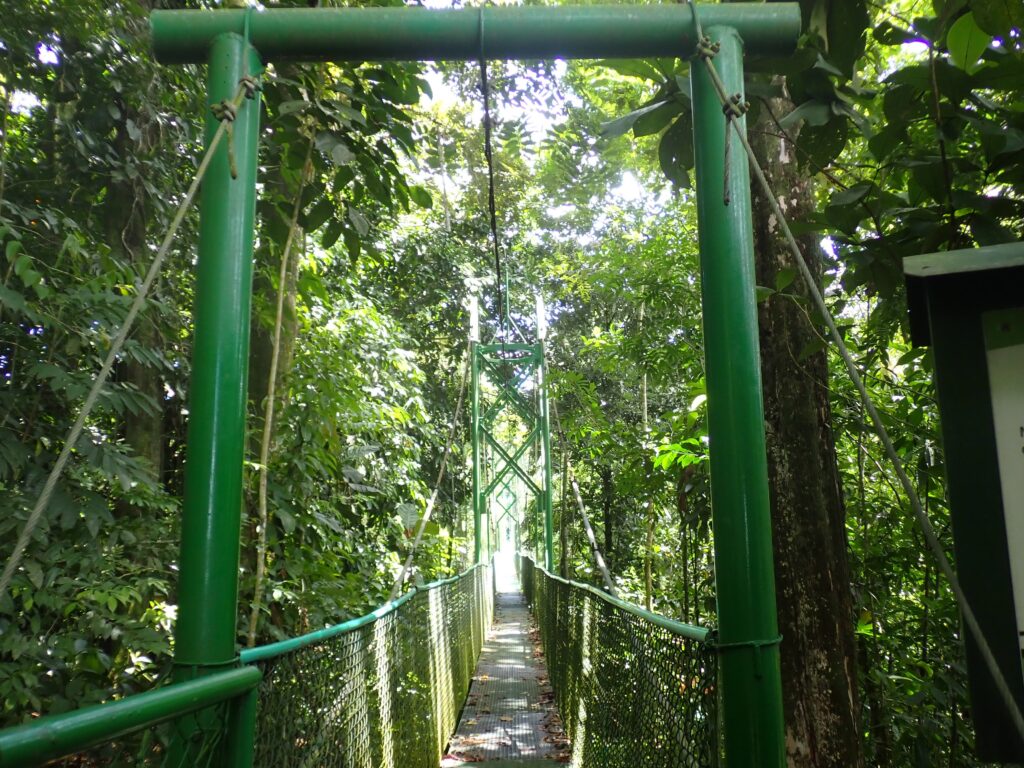
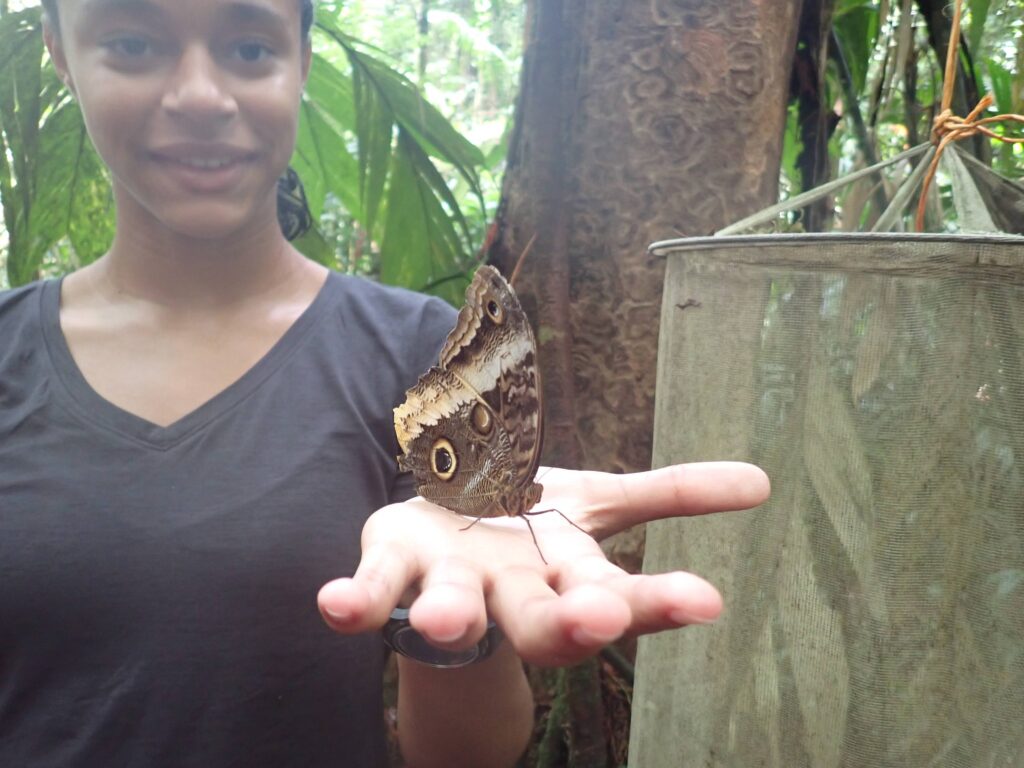
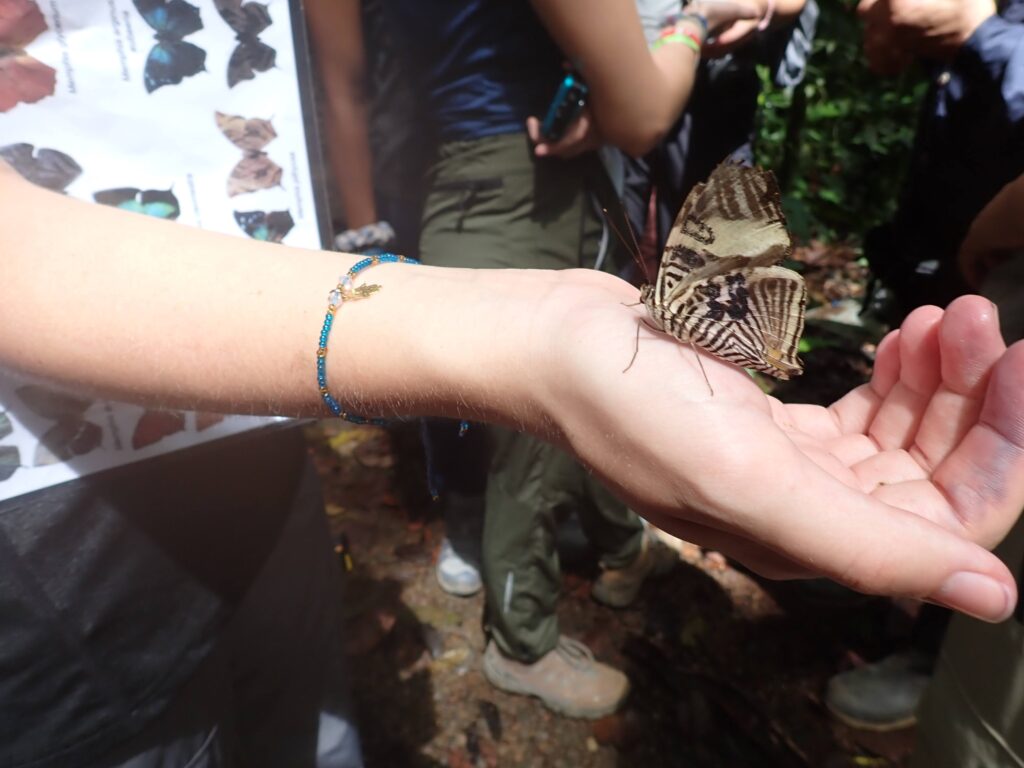
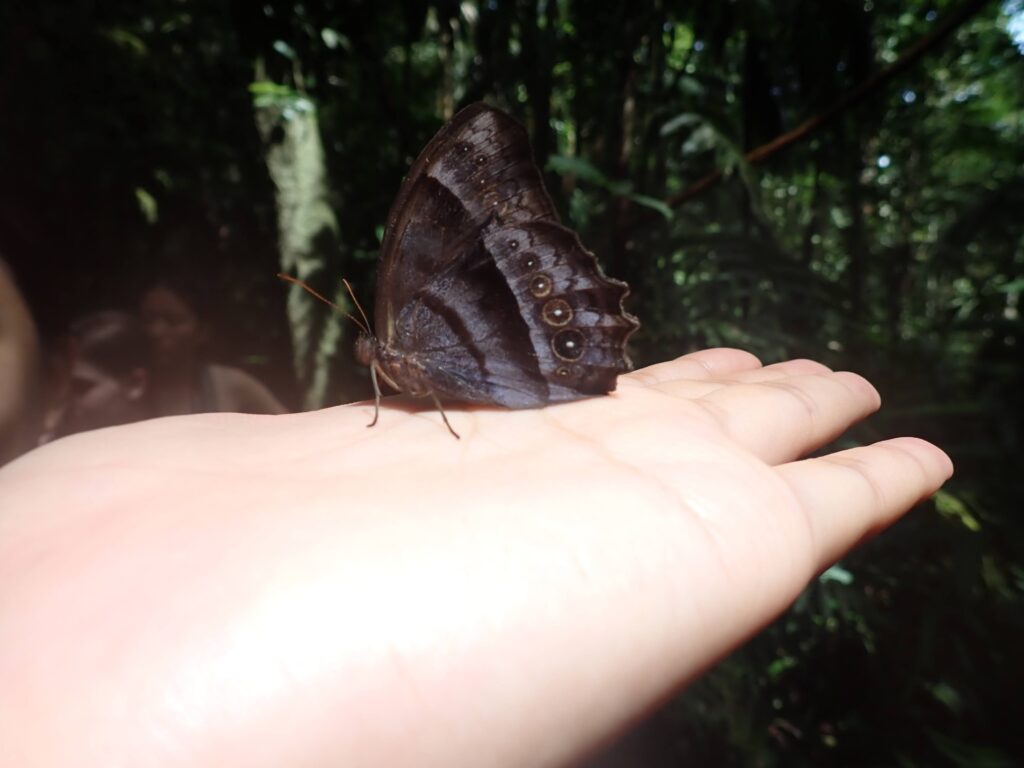
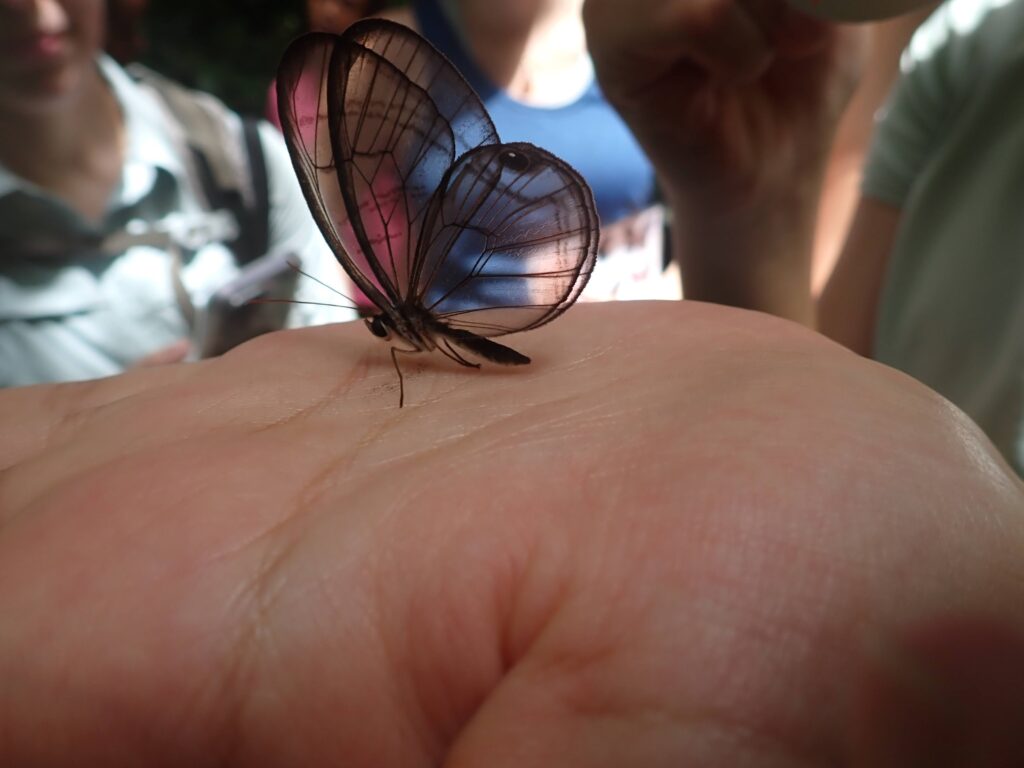
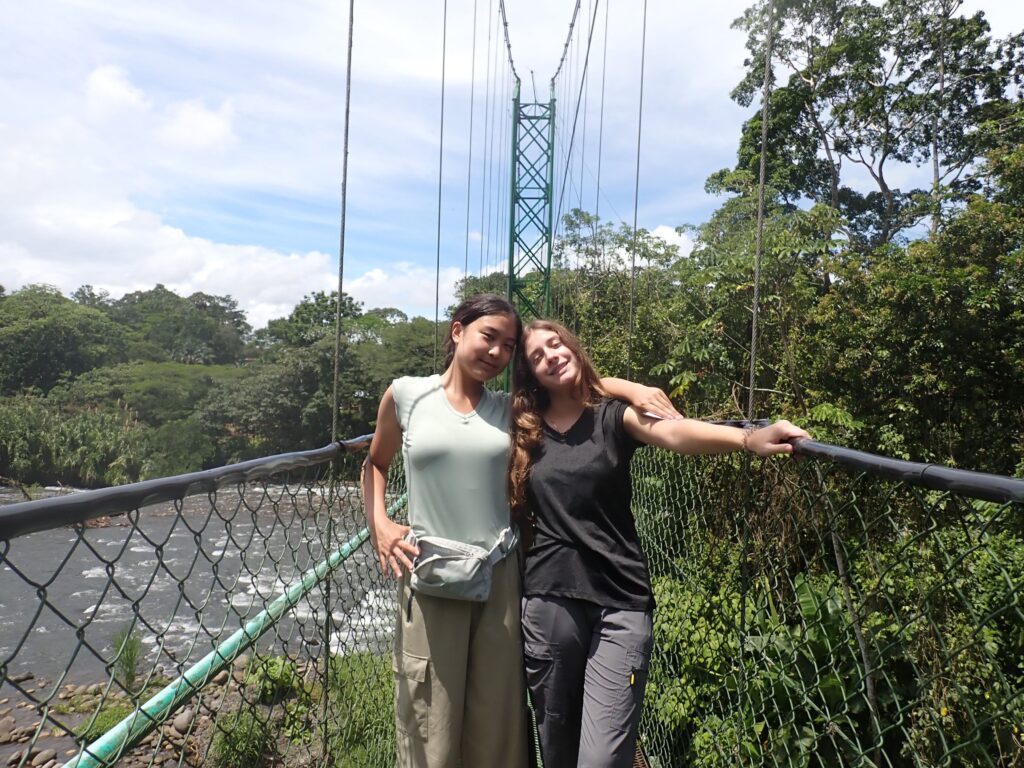
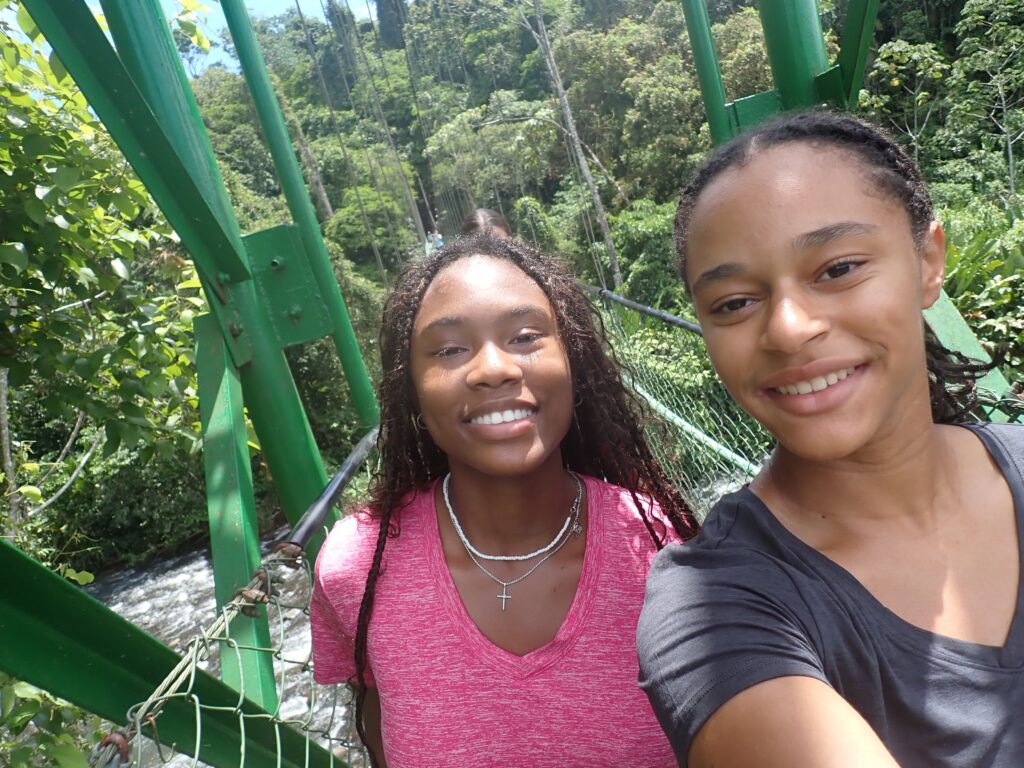
Student Author: Holly
¡Hola desde Costa Rica! On our penultimate day, my group spent the first half at Lapa Verde, where we took a brief hike to the observation tower. The name comes from the gorgeous Green Macaw, an unfortunately endangered species of Costa Rica. Although we were only able to spend one day at Lapa Verde, we enjoyed the very steep hike up the mountain, as well as the view from the top. We took turns looking through the monoculars and identifying Black Vultures, Turkey Vultures, Short-tailed Hawks, and Ospreys, as well as other birds. Our time was guided by John, who thoroughly enjoyed pointing out each and every reptile or amphibian we saw on the hike, especially the Strawberry Frog, also known as the Blue Jeans Frog (he looks like he’s wearing jeans!). After enjoying some delicious sweet tea and lunch, we made our way back to Chilamate, where we would prepare for our Adventure Races. My group was Wei, Lily, Helena, Ariana, and myself. For each task we completed, we could earn up to three rubber bands. To begin, we had to complete a race while being taped together with masking tape without breaking it. The next three tasks were to be completed in other houses within the community. As we made our way to the first real task, it started to rain, but we didn’t think too much of it. We were greeted at the very first house by Alejandro but were rudely interrupted by the cracking sound of thunder and the call from Oscar and Cate to wait inside until it calmed down. After some time, we could finally continue and learn about the history of yuca, a starch similar to a potato, and all of its uses in food. Next, we made our way down the road to be taught how to dance salsa, bachata, and merengue. Shoutout to Ariana, she killed it! Our last two tasks were to learn how to make tortillas and then to visit farther up the road and milk a cow. While we were meant to have a final task in the river, the thunderstorms got so bad that a bus had to come to pick us up. Once the races concluded, we had time to shower before a quick activity to learn more about ourselves in relation to the left and right sides of the brain. We were also pleasantly surprised during dinner after the lights turned off and we saw two cakes in front of Wei to celebrate her Sweet 16. Happy Birthday, Wei! We were excited to make her birthday in Costa Rica extra special. Stay tuned for our final update!! #PuraVida #GetExcited
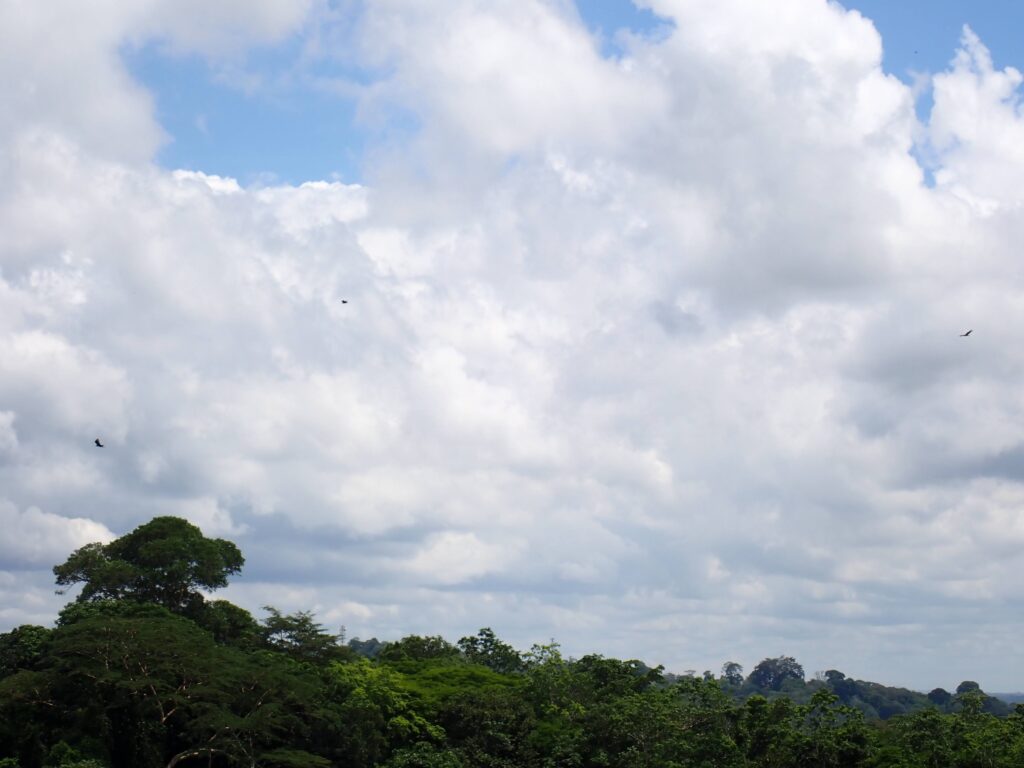
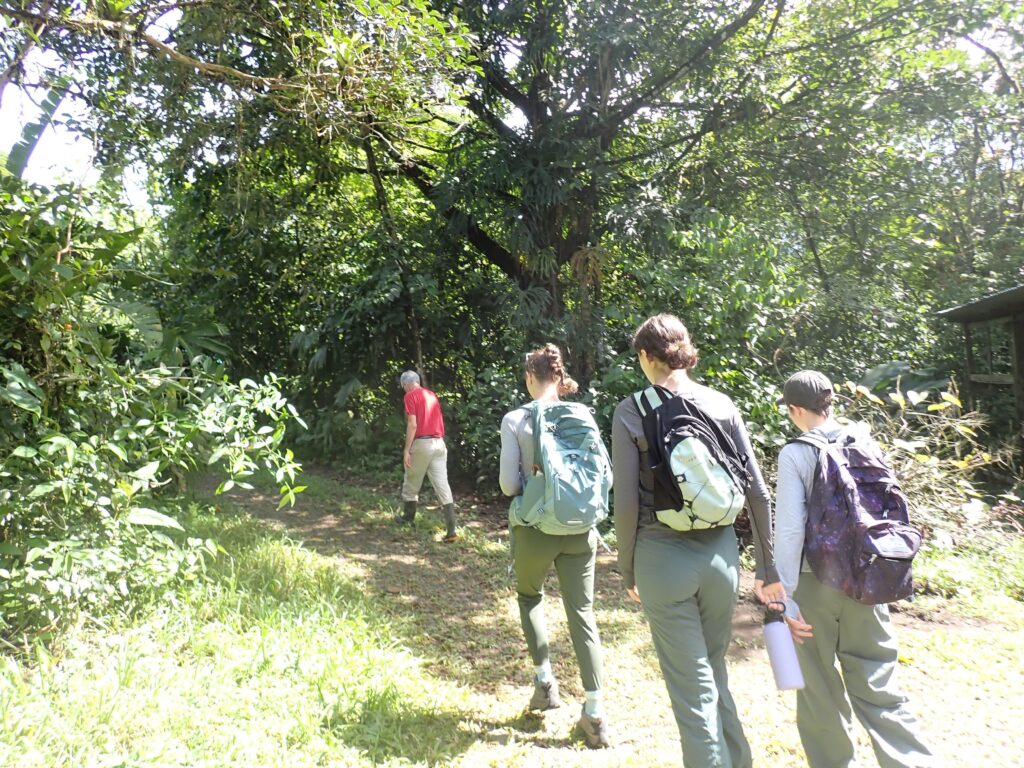
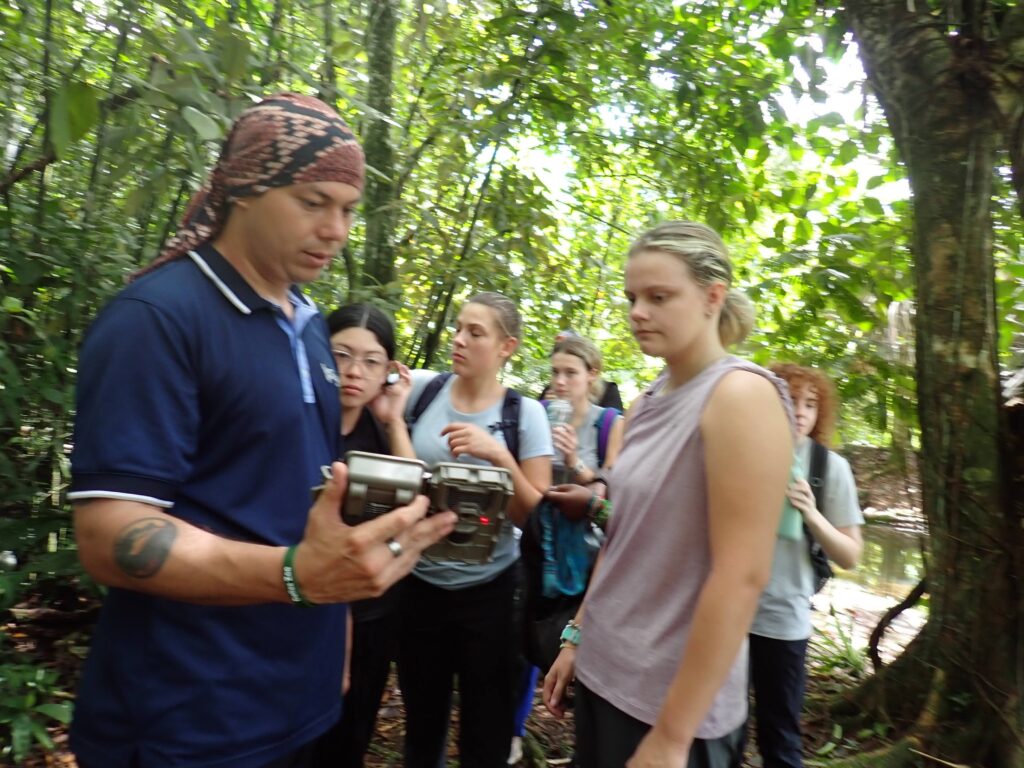
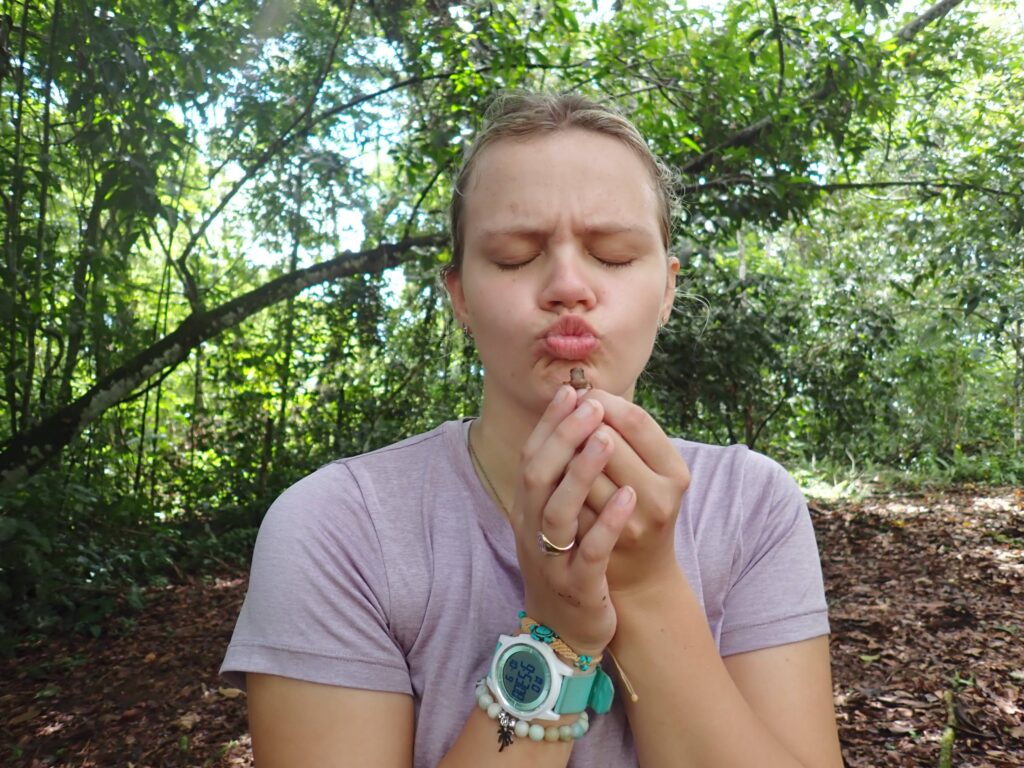
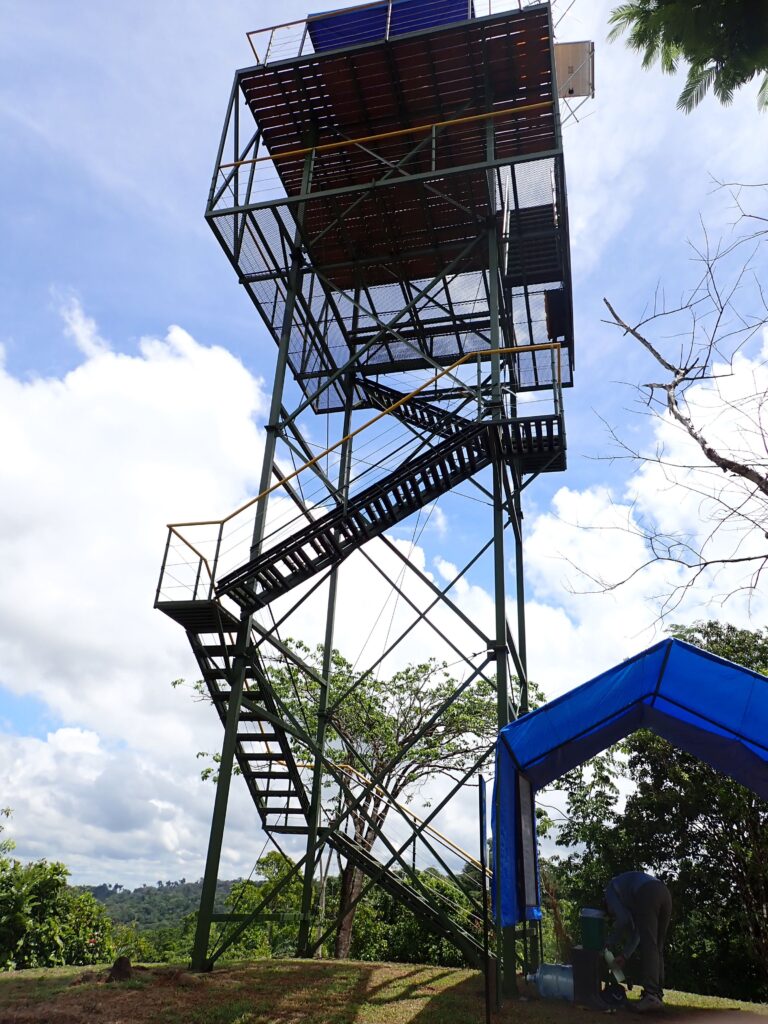
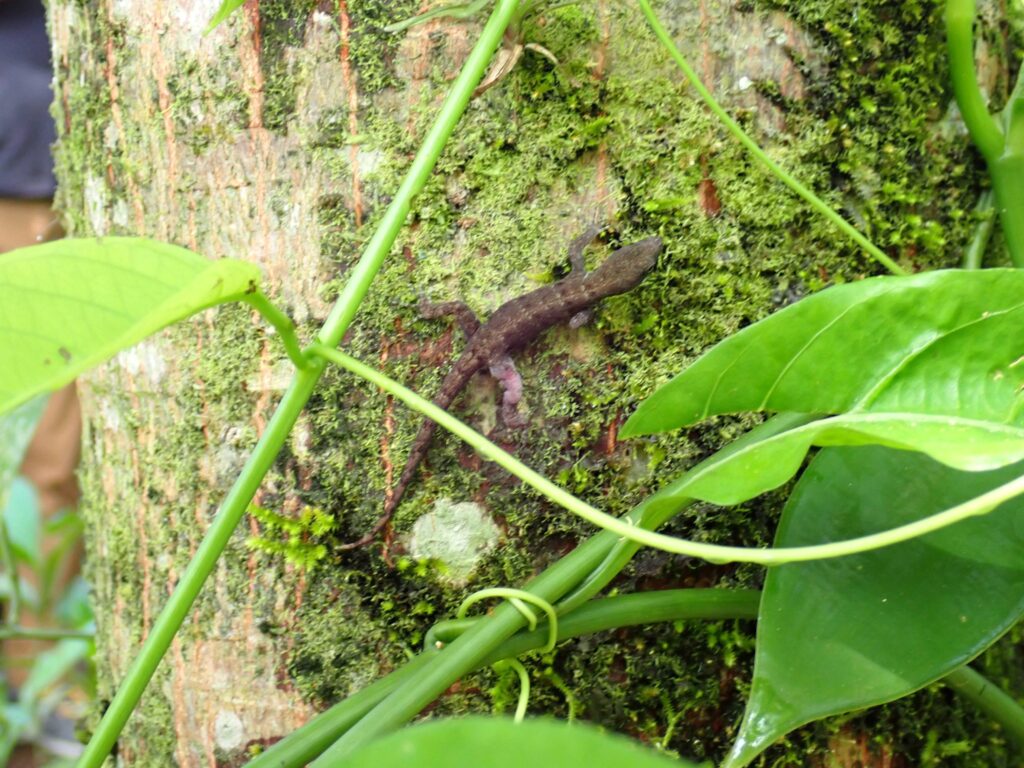
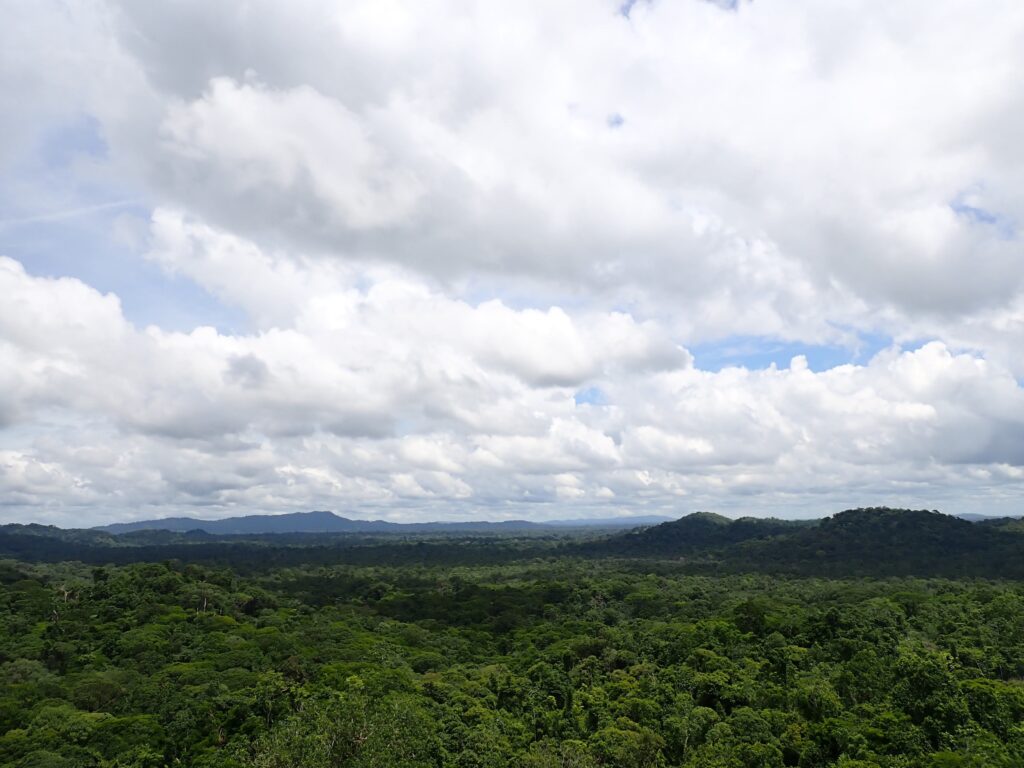
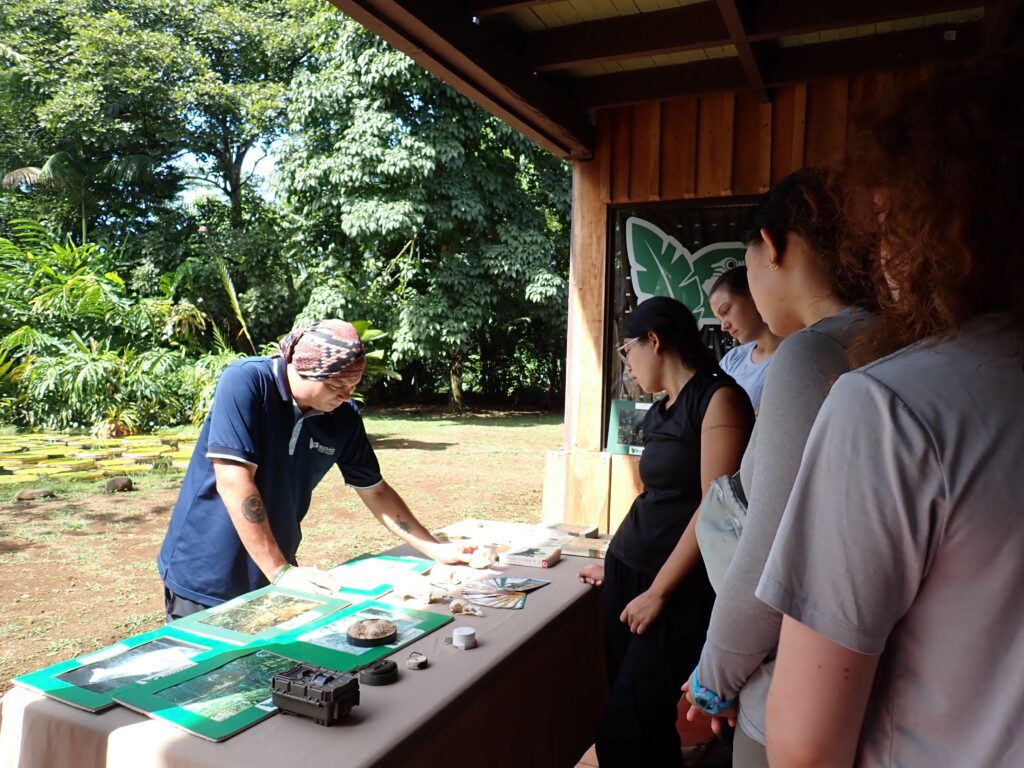
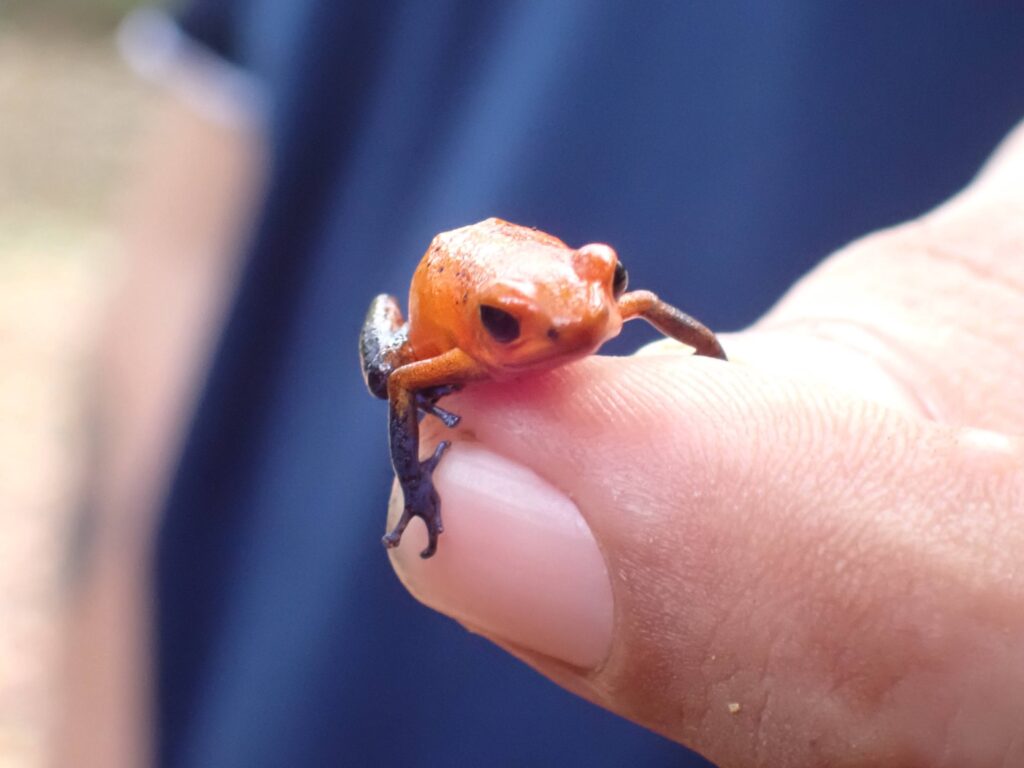
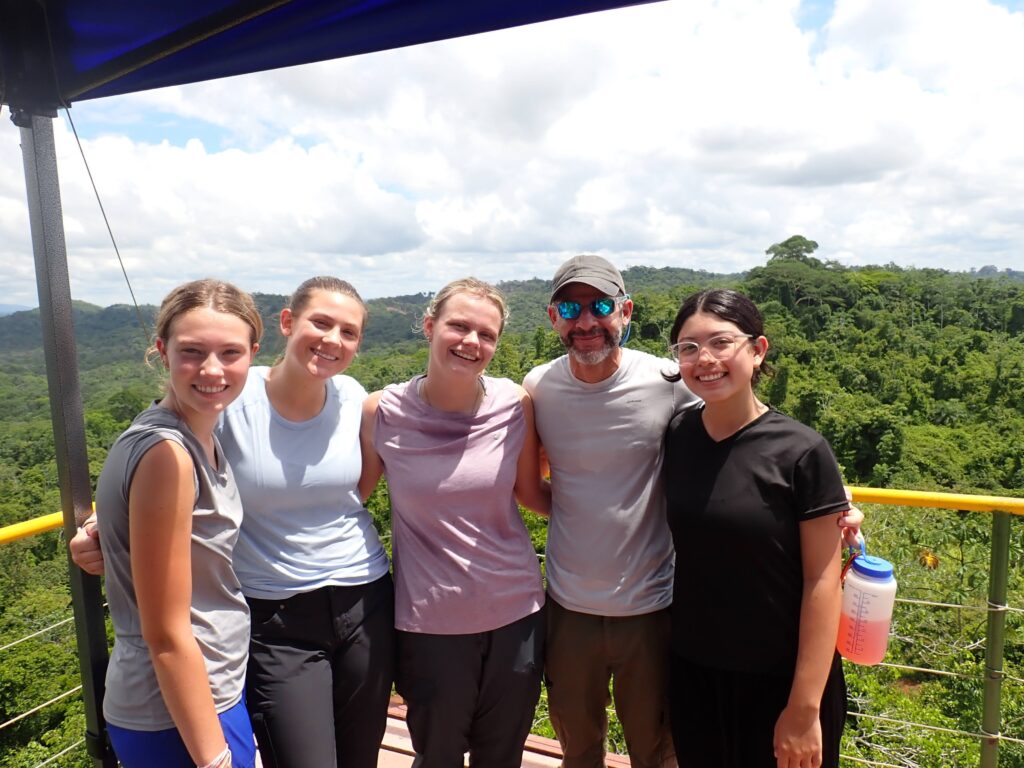
Student Author: Lauren H.
¡Hola! Today was the last day of visiting each project, and my group (group 1) went to Bijagual for the first time in the morning. Bijagual is the furthest project from Chilamate, so we were all able to fall asleep on the 40-minute bus ride on the way. At Bijagual, we measured trees in many different aspects to compare to the measurements recorded in 2017. This information will be further studied to gain a better understanding of the connection between planting trees and its impact on the surrounding environment. This job was led by Paul, who is originally from the United States (Virginia, Ohio, and Michigan) but now lives in Costa Rica to pursue his passion for studying and preserving the environment.
After our work in the midst of the rainforest, we went back to Paul’s house to eat lunch. Lunch consisted of spaghetti, salad, red sauce, meat, pineapple, bread, and a few other sides. Following lunch, my group and I went back on the bus, where we would soon arrive back at Chilamate. When we first arrived, we had free time to relax, and I decided to take a nap to prepare for the upcoming adventure race. After my power nap, we were assigned groups and given information about the upcoming tasks we would have to complete in groups of five. The object of the game was not to finish first but instead to earn three bracelets by doing each task well. Whichever group had the most bracelets at the end of the game would be the winner. I was placed in a group with Jeva, Kinley, Anna R., and Helen, and we all worked together to make a plan. We decided it would make the most sense for us to start at the house that was the farthest away from the starting point so that we could work our way to the finish line in the order of where we had to stop. Each stopping point was at a local family’s house, where they would tell us the instructions in Spanish.
We started the game by milking a cow, which definitely was not my favorite. Even though only Jeva had previously done this, our group worked together to earn three bracelets. We were leaving the first house to proceed to our second stop when a bolt of lightning struck a tree close next to us. We were instructed to go back to our first stop and wait out the rain. The local family was kind enough to invite us to stay with them under their covered entryway, which kept us dry and safe from the storm. After about five minutes, we were given the clear and proceeded to our second house. There, we learned how to roll a tortilla and make a homemade dish. Next, we learned how to dance salsa, and then we finished our race by learning about yuca, which is a starch that can be cooked or used for medical purposes. At each station, my group earned all three bracelets; however, we only earned two at the yuca station because we answered a question incorrectly. The rain from the first stop had not stopped and there was still lightning in the distance, so we were lucky enough to have a bus pick up everybody and drive us back to Chilamate. Unfortunately, my group and I did not win, but instead fell short to the only group that completed the river task before it got canceled due to the storm. When we got back, we had some free time to shower, and then we met in the classroom. In the classroom, we participated in a group activity to figure out which personality we lined up with most. The activity was followed by dinner and a small birthday dessert of cake and ice cream for Wei’s 16th birthday. After celebrating, we went to the classroom for A.N.C.H.O.R; our activity was a freeze dance competition. Shoutout to Maggie, who won both the freeze dance and the adventure race!! Another big shoutout to Wei for celebrating her 16th birthday here today; we were so lucky to celebrate with you!! Get excited for tomorrow’s final update!!! ¡Hasta Luego!
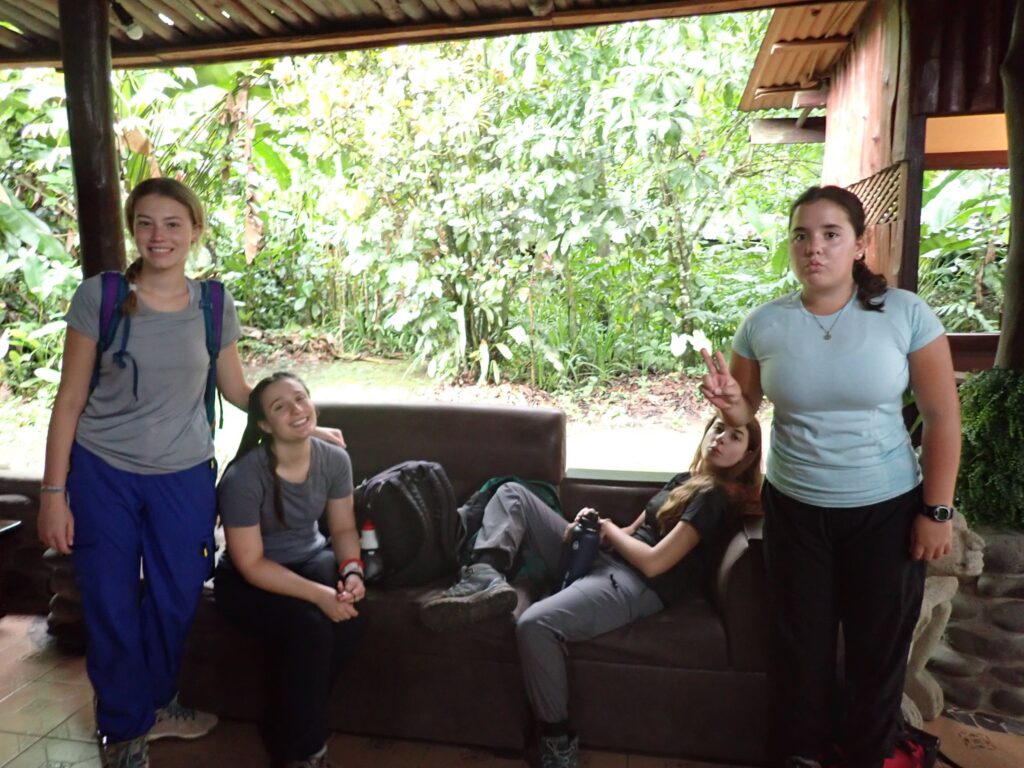
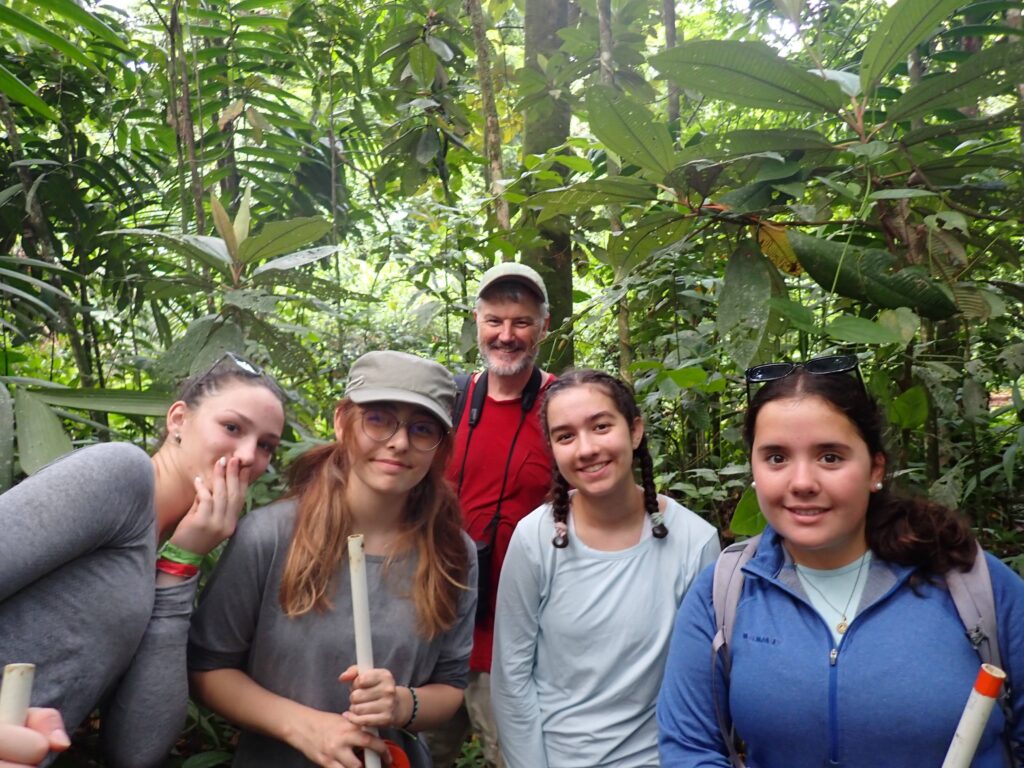
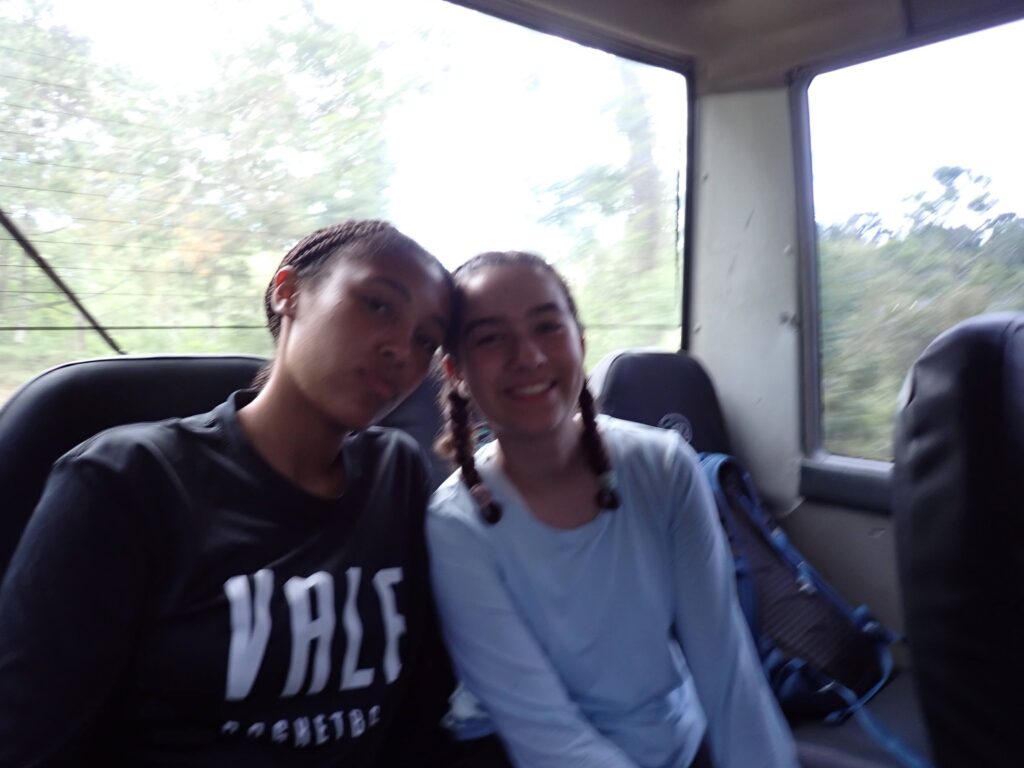
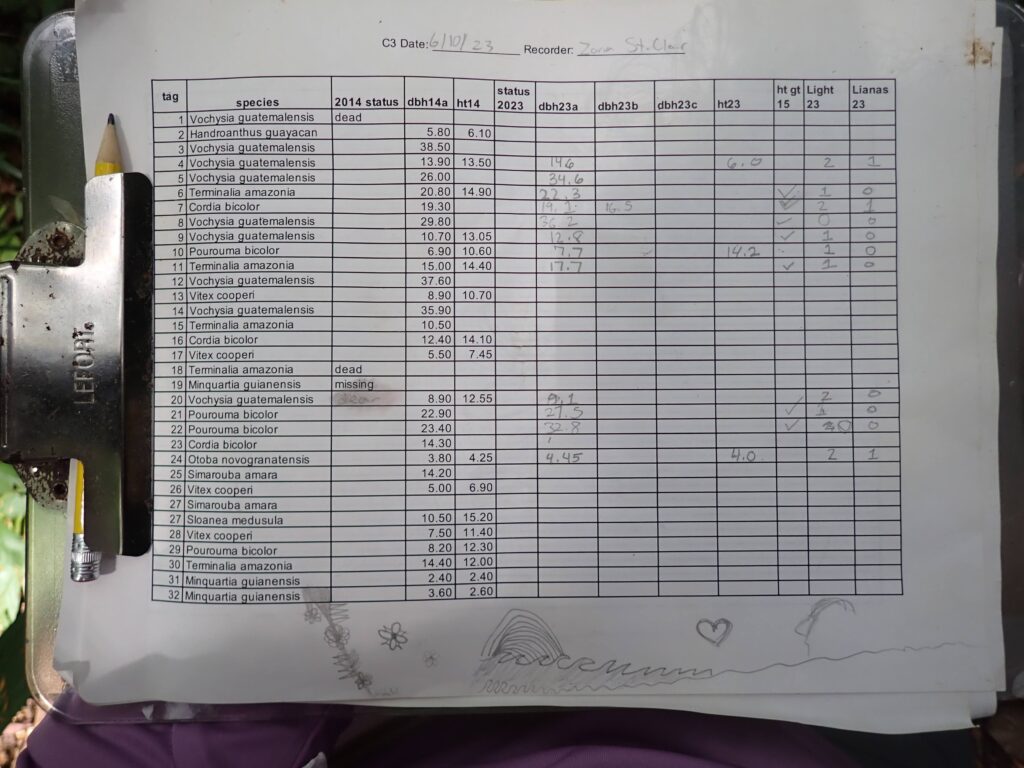
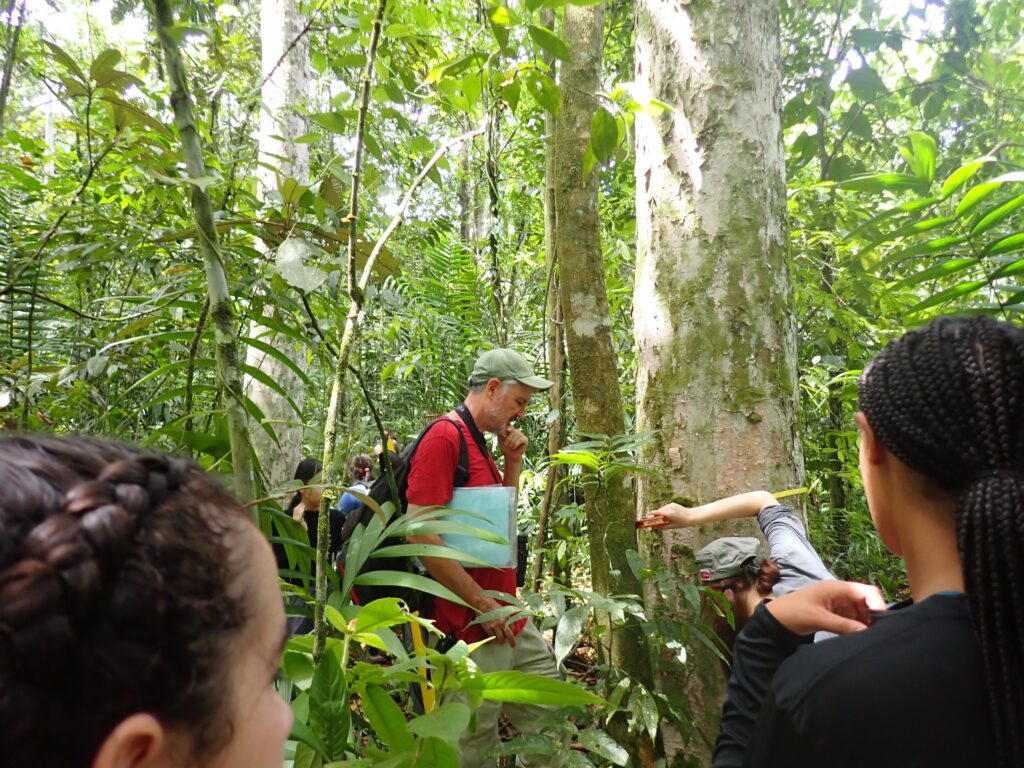
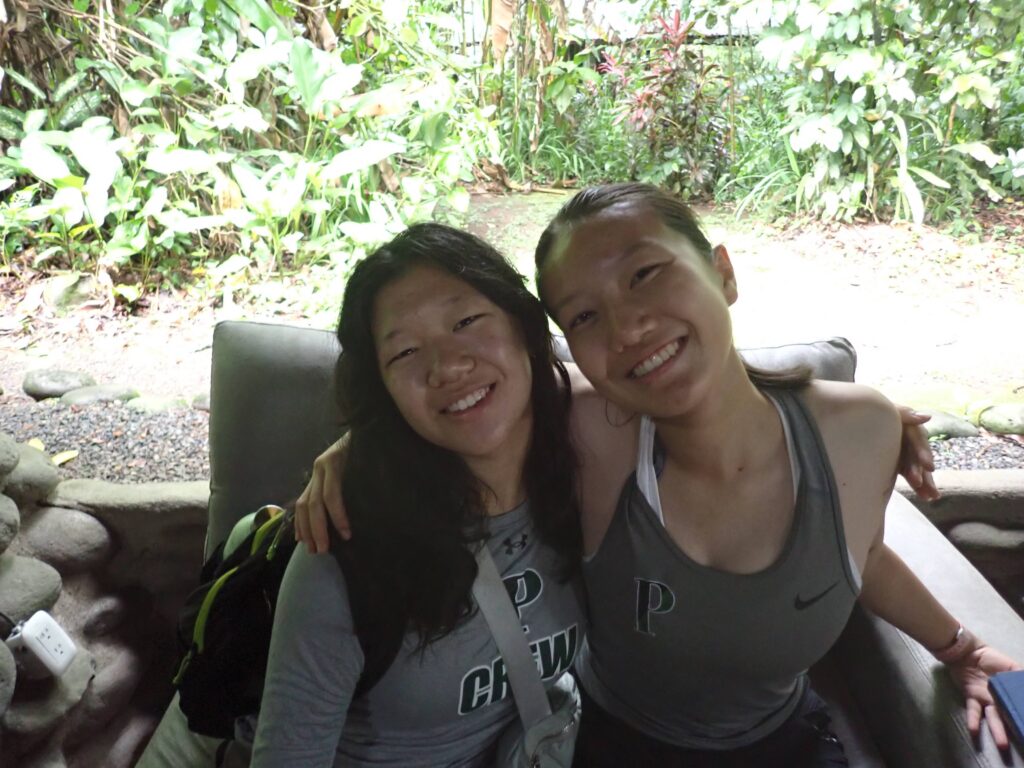
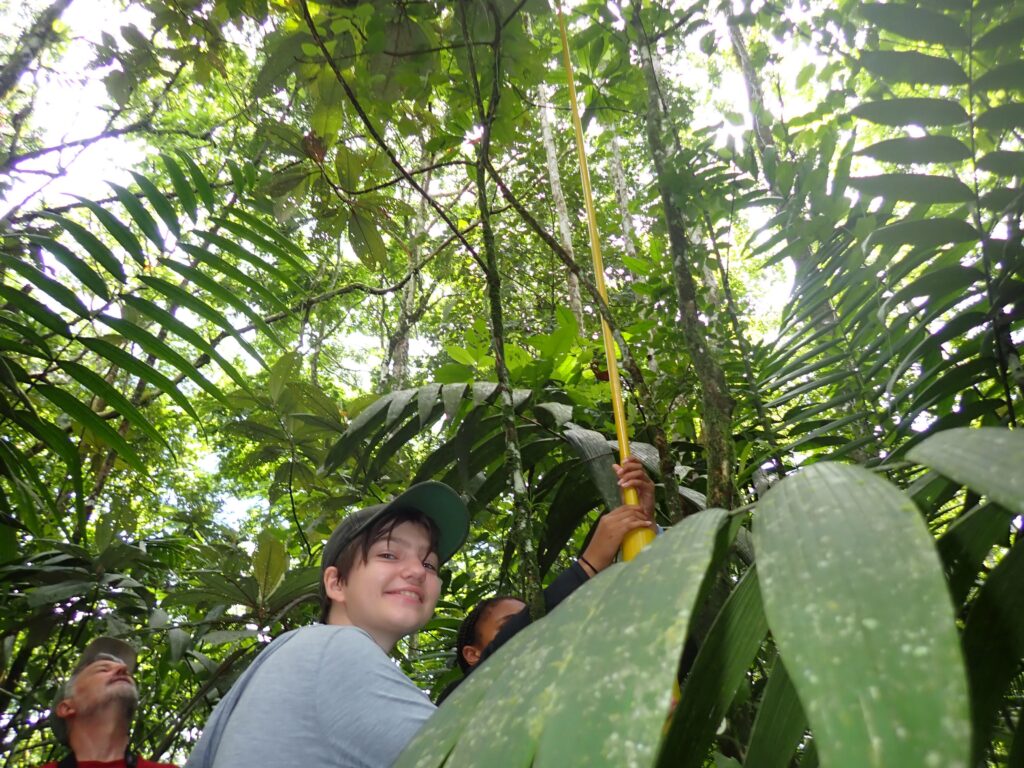
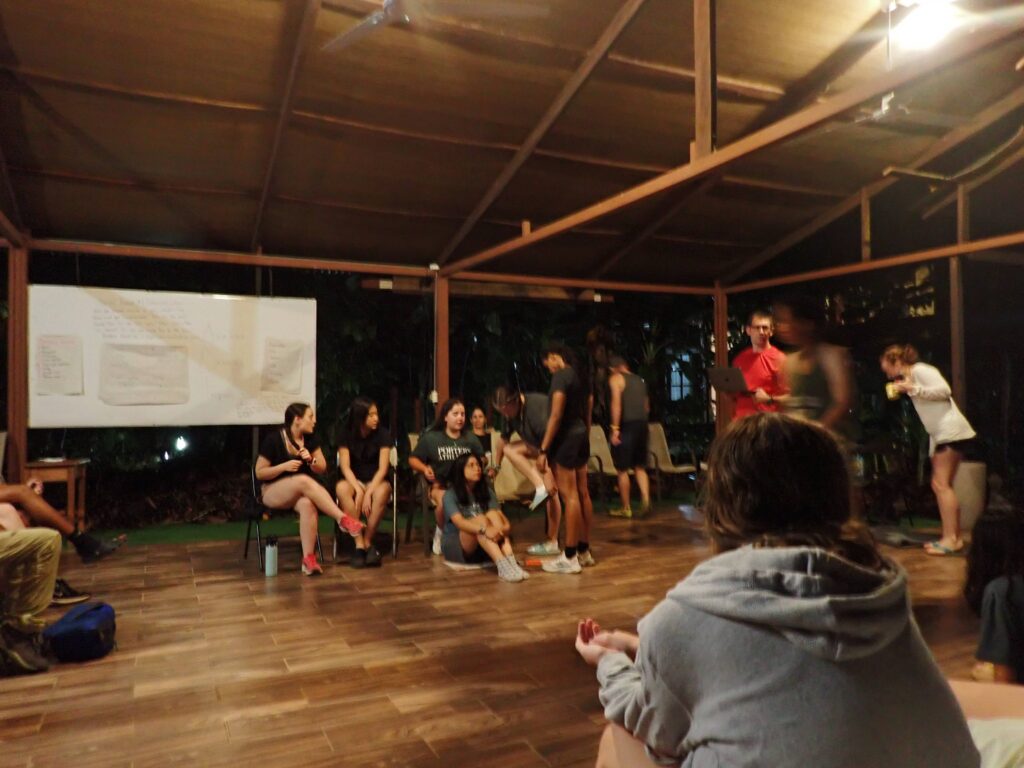
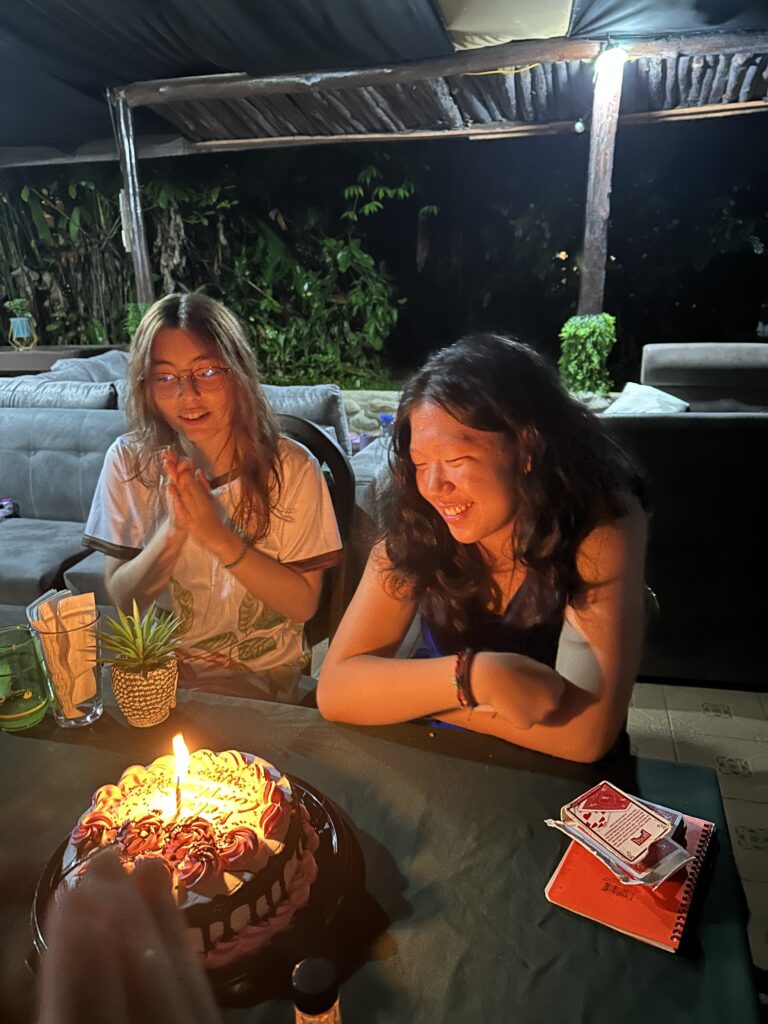
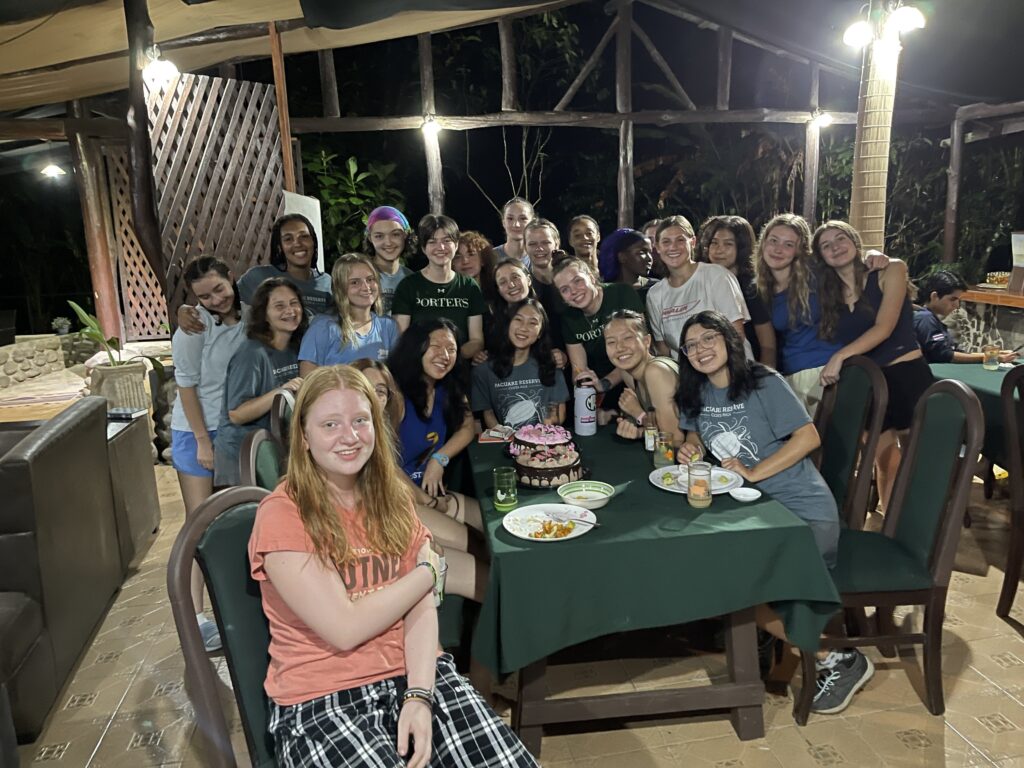
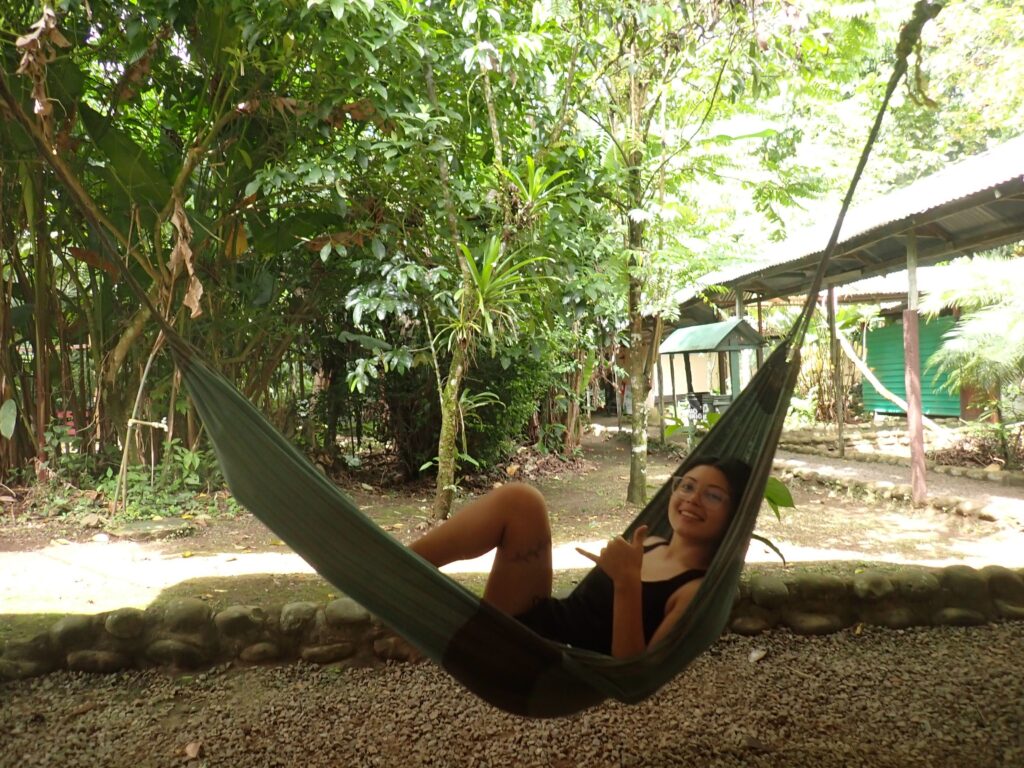
October 8, 2023
Student Author: Emmy
Hola! Group 3 made our way to Bijagual again today. We ventured into the trees and split into pairs to do each task. Although we ran into many different insects, like ants and spiders, we were able to do our jobs and collect the data. After around an hour and a half of measuring trees, we began to head back when we were stopped by a big ant colony around a tree. Paul explained to us the different roles the ants have in their colonies and how a colony the size we saw could have millions of ants. He told us about their reproduction process and how when the males are born, they fly into the air to mate, and then they fall to the ground and die.
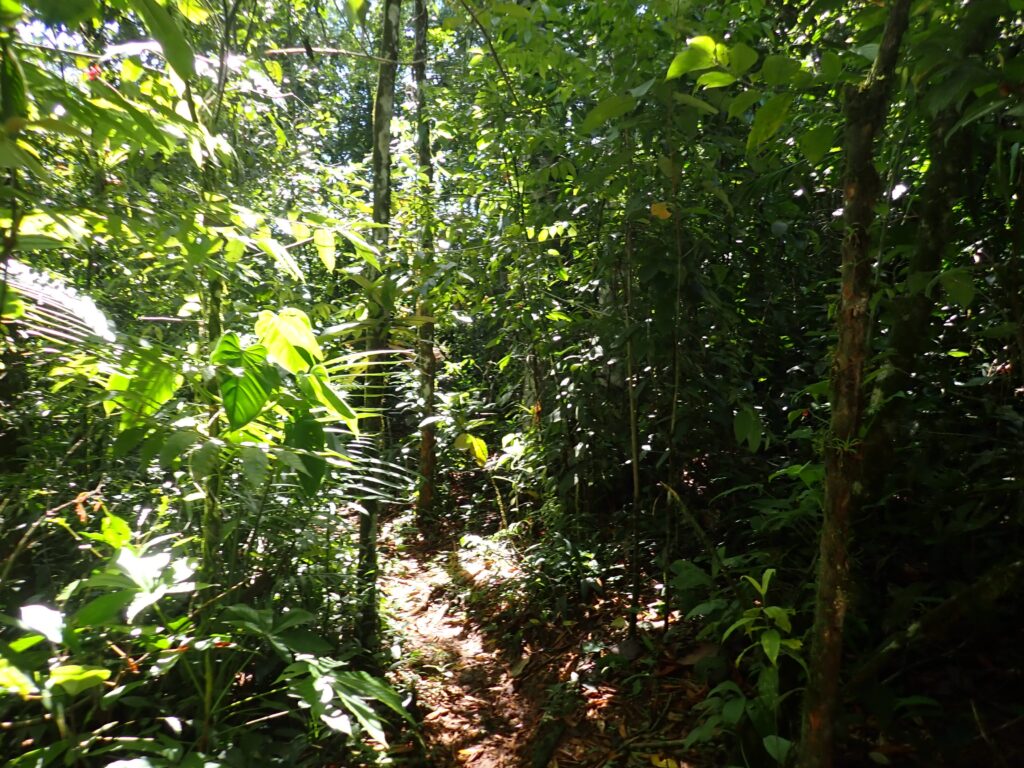
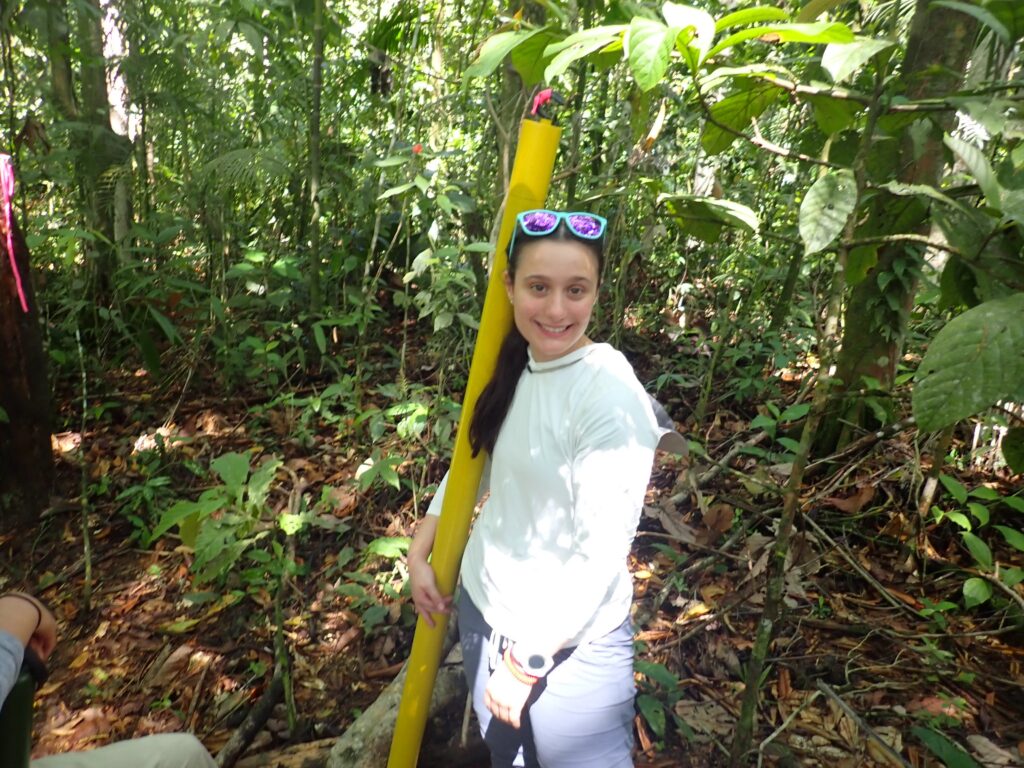
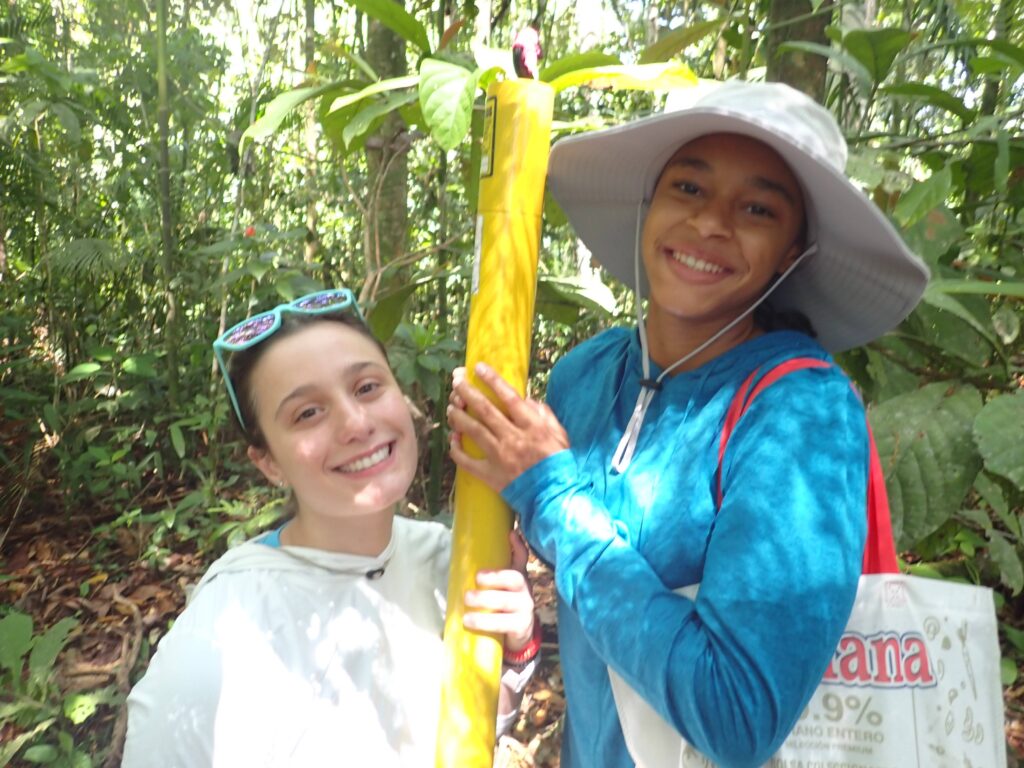
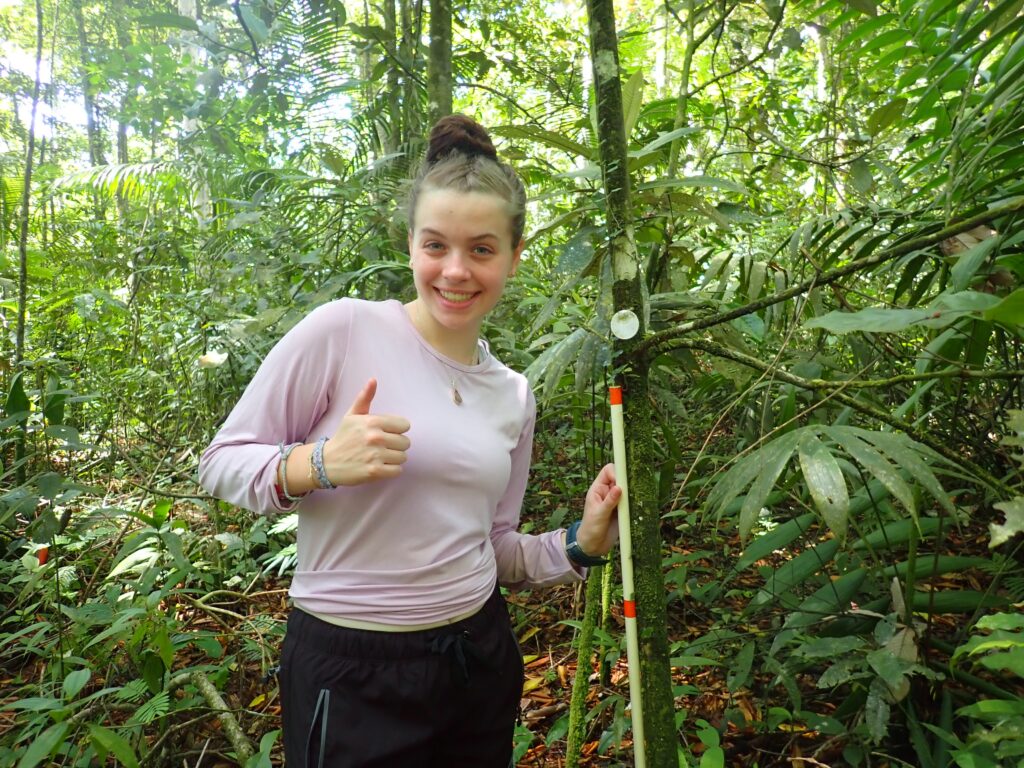
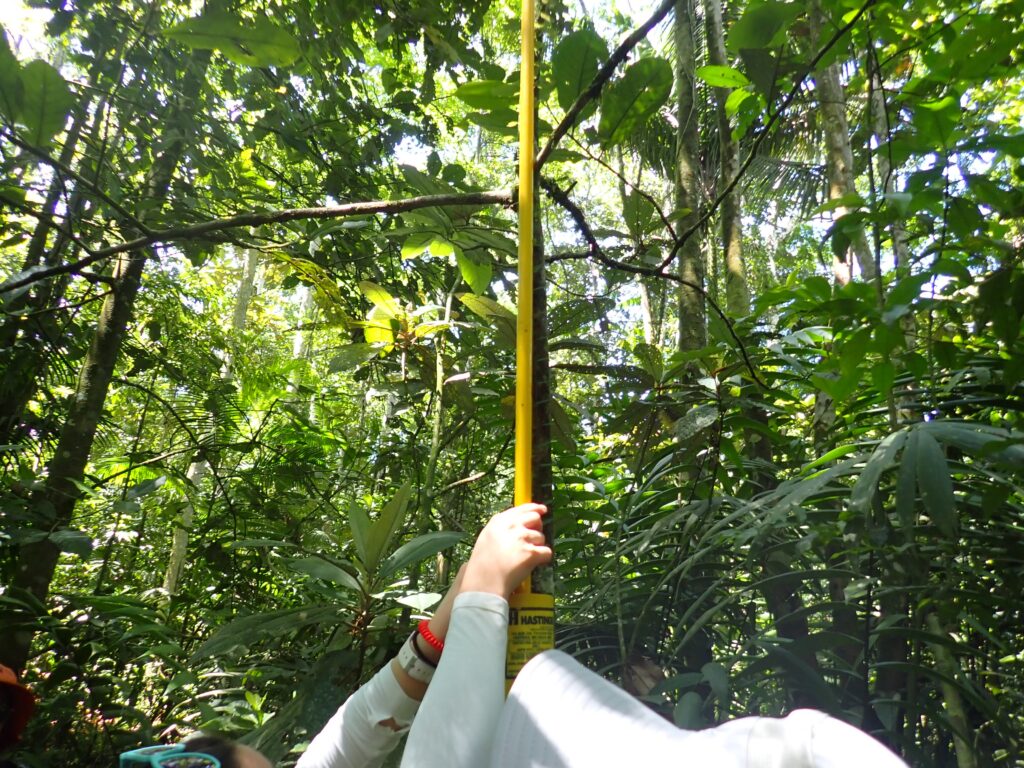
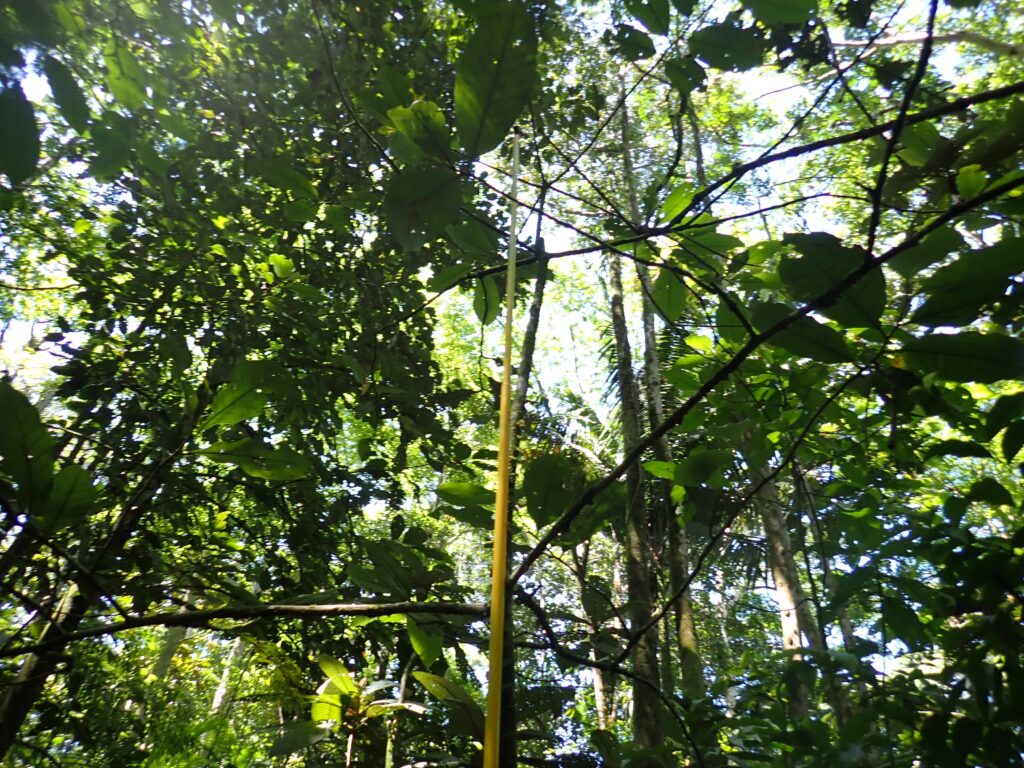
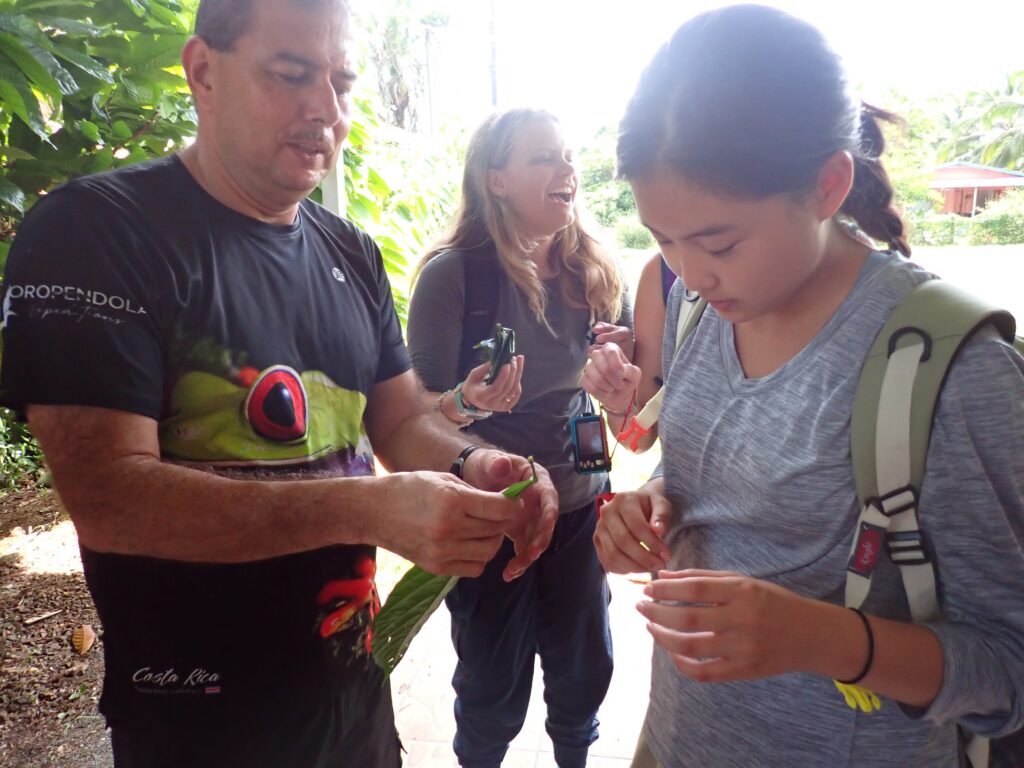
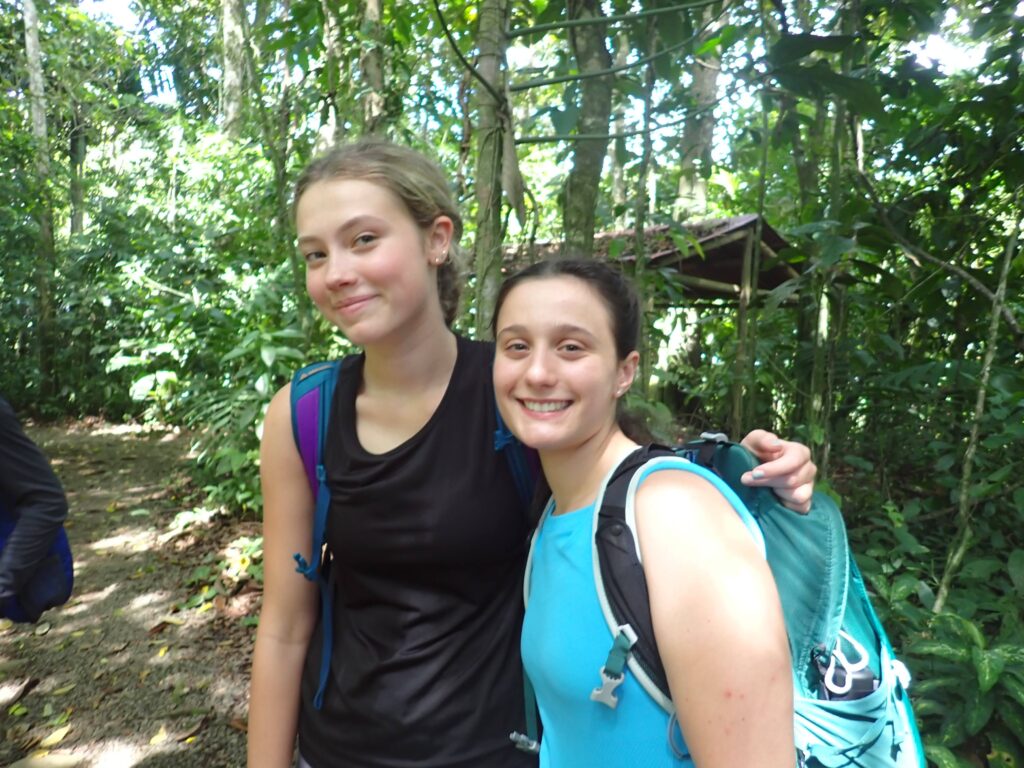
Once we finished, we headed back to the bus to pick up half of the Tirimbina group to drive to the Chocolate tour. Once we got there, we ate a delicious lunch and then began the tour. We started by looking at the cacao tree and learning where they are native and how the big U.S. companies, like Hershey’s, get their cacao from Africa because it is cheaper than places in South America. Next, we moved to the viewing area and got the chance to taste the fruit of the cacao plant. Most of us agreed when you suck on the plant, it tastes like mango. Our guide then told us to chew on the seed, and we tasted the bitter cacao that looked purple when we spit it out. He showed us the ax he has named “Justin” and joked that it is “Just in case” you drop the cacao. We then got to try the dried and fermented seeds that tasted very bitter. They showed us seeds that they warmed and told us to smell and taste them, and we noticed the bitterness was beginning to leave, but it didn’t quite taste like chocolate yet. Afterward, we had to grind the seeds with a machine like a bike, and then we had to separate the shells from the seeds by using an old ice cream lid as a fan. Then, we ground it up even finer into somewhat of a paste using a machine with a handle. Next, we finally got to taste it by turning it into hot chocolate, melted chocolate candy, and chocolate candies that they had previously made. We got to taste the difference between the fresh chocolate they made there and some industrialized chocolates. Finally, we went to the shop and were able to purchase all the things that we tried, like bars, nibs, cacao butter, and more. It was a very fun day with lots of learning and fun!
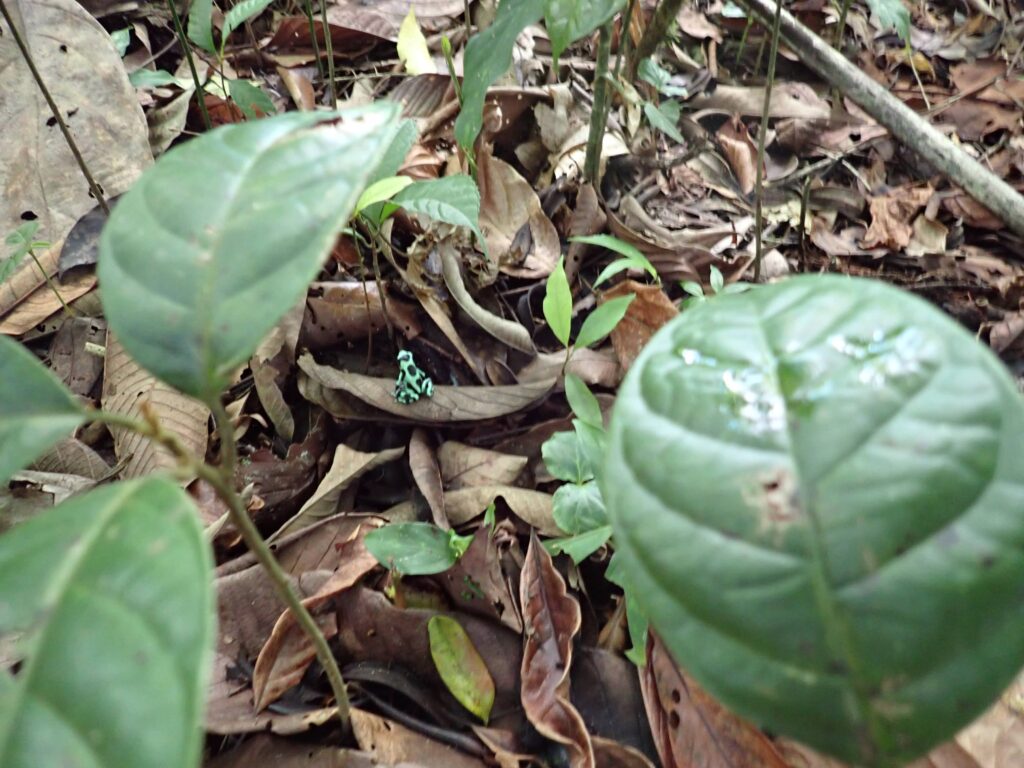
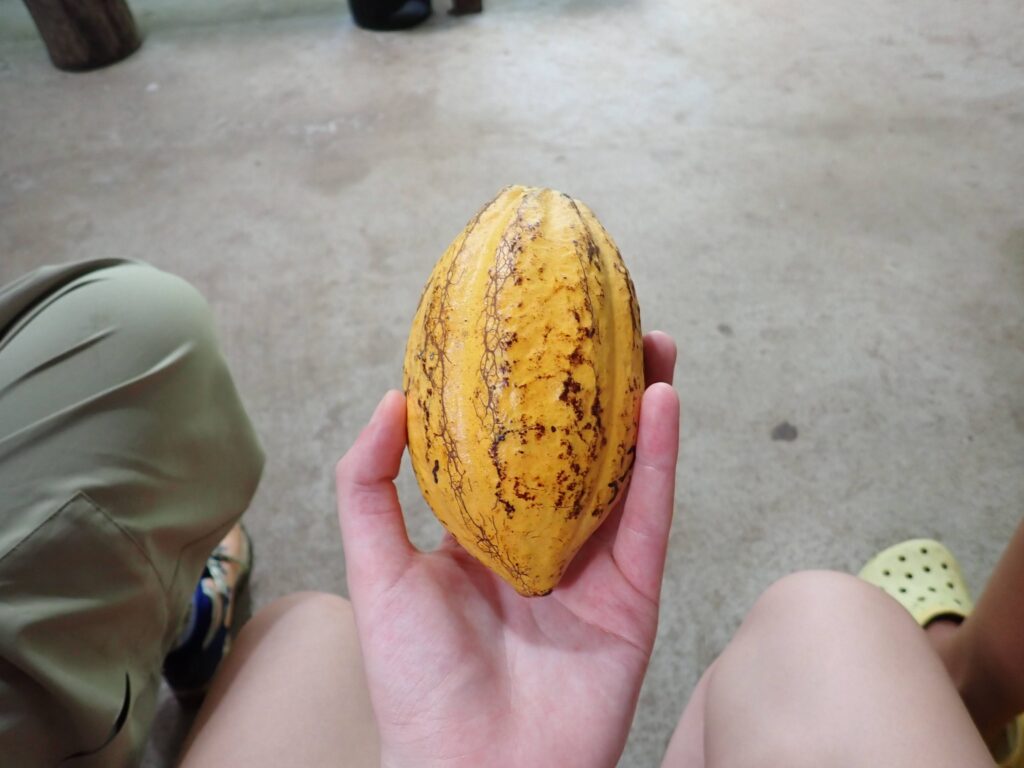
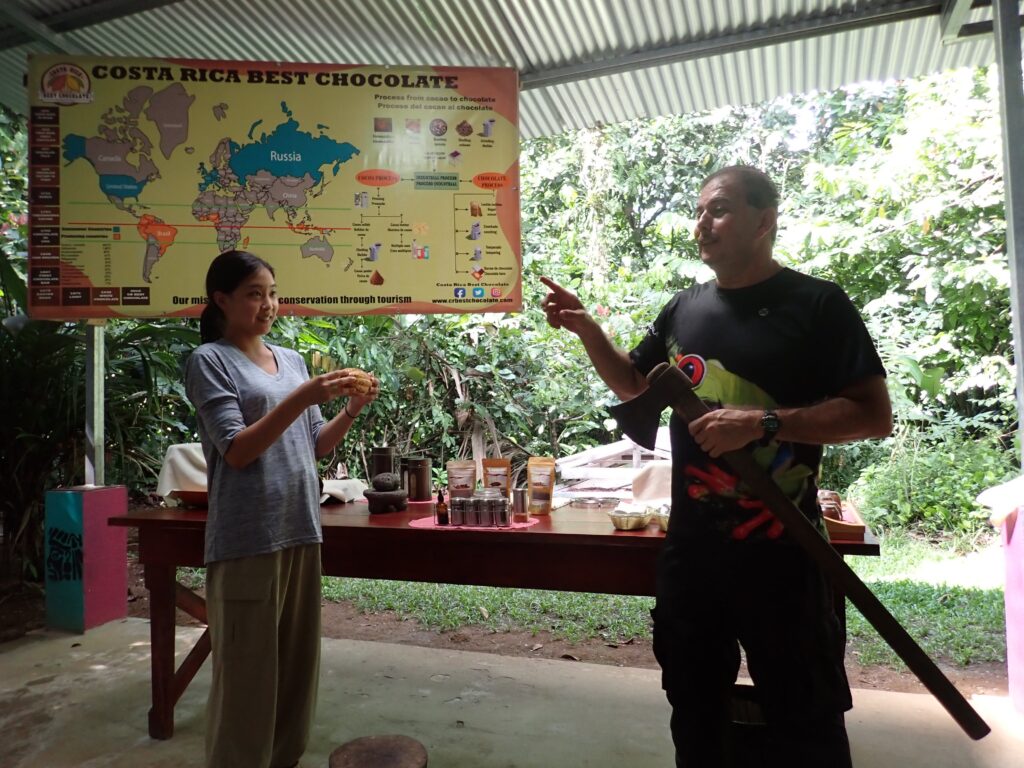
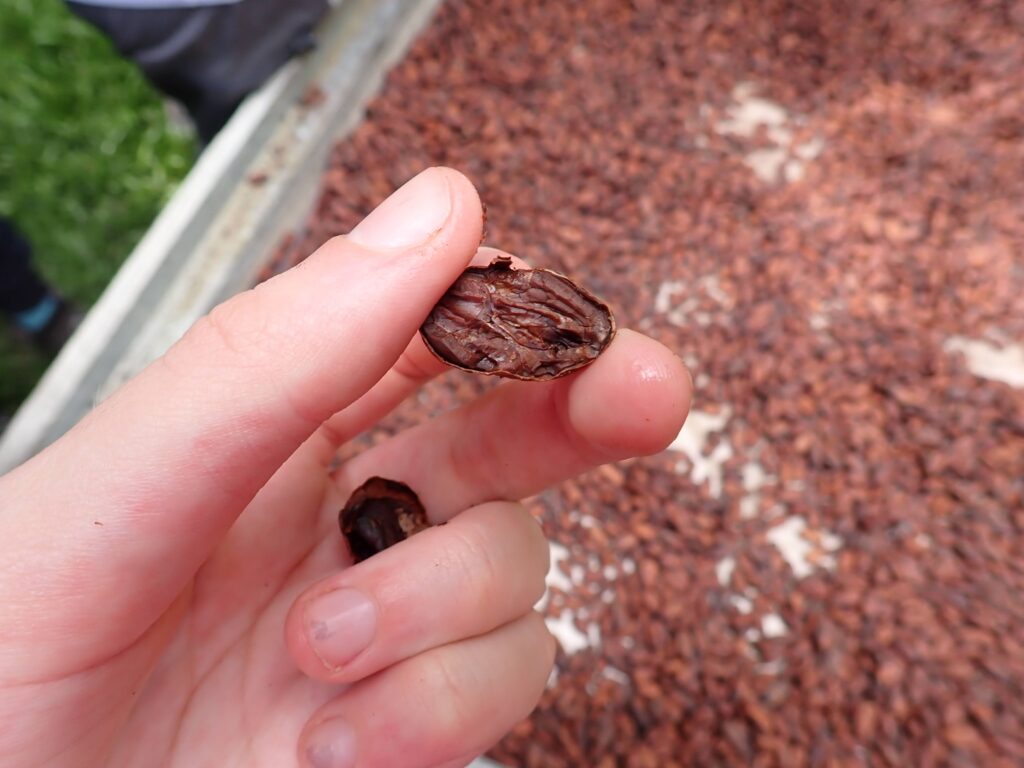
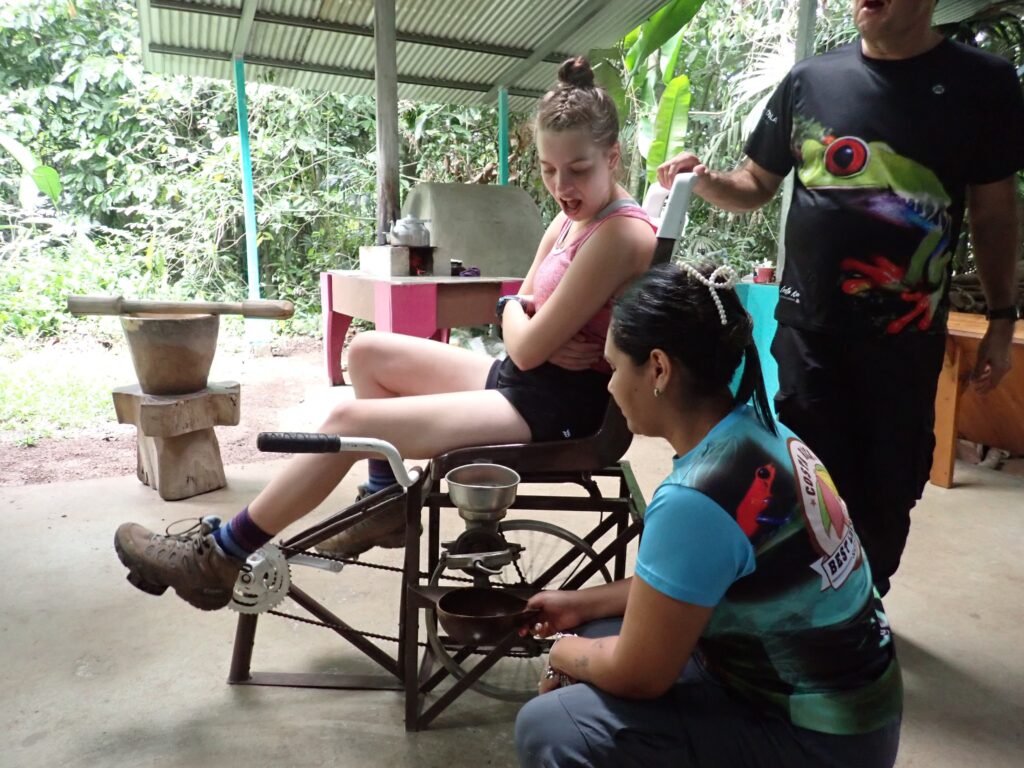
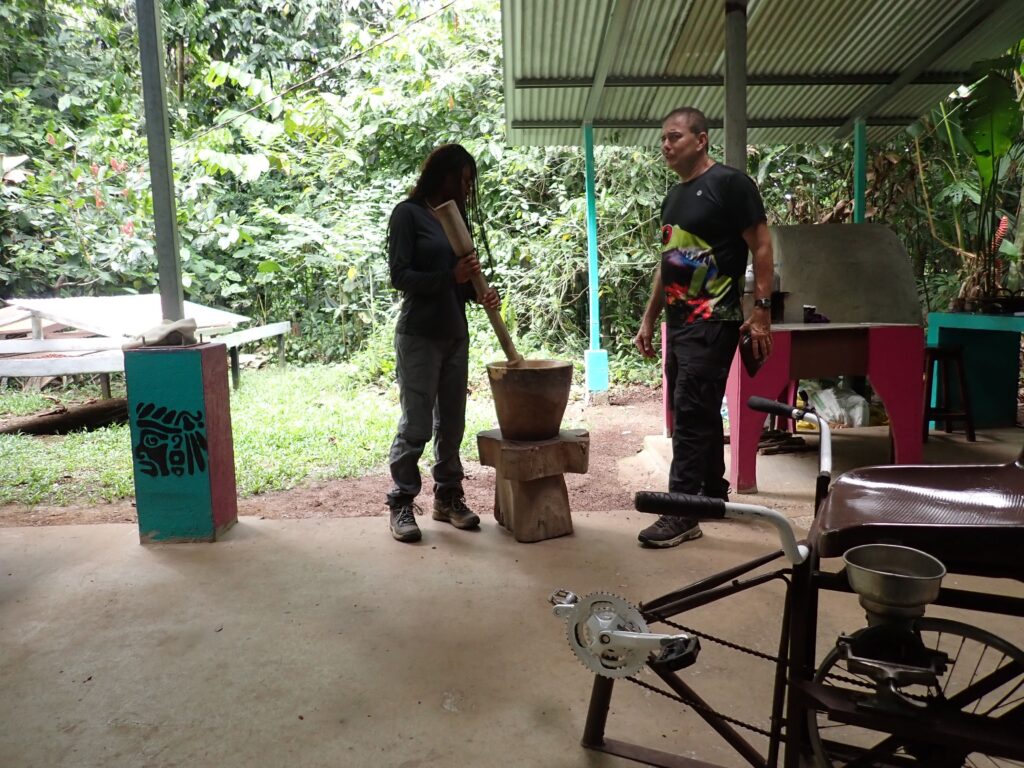
Student Author: Anna G.
¡Hola leyendo! Group 1 started our day off by going back to Lapa Verde, assisting John by searching for various birds and frogs. John taught us that using a small speaker playing the call sound of the male would allow us to spot the blue jeans frog more easily. Using the speaker and John’s expertise, and we were able to spot FOUR blue jean frogs. Although we were only able to catch and identify one female, we all gained so much knowledge about frogs. To get to the summit of the mountain, we took a route that typically only biologists are allowed to take. This consisted of hiking in a small area through many bushes and trees. At the top, we went up to the tower to observe the birds and their flight patterns. Today, we did not see a significant number of birds; however, the views made up for the steep hike. Sadly, today was the last day we will spend with John, but we enjoyed learning and playing games with him. We are all looking forward to seeing what Bijagual has to offer mañana!
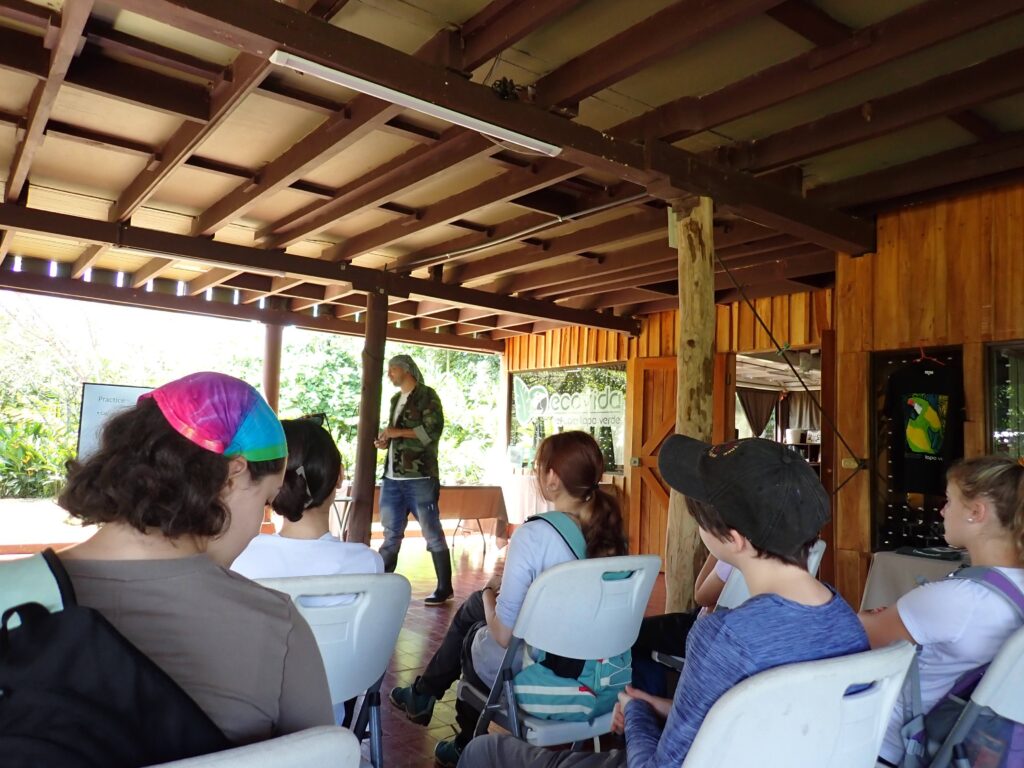
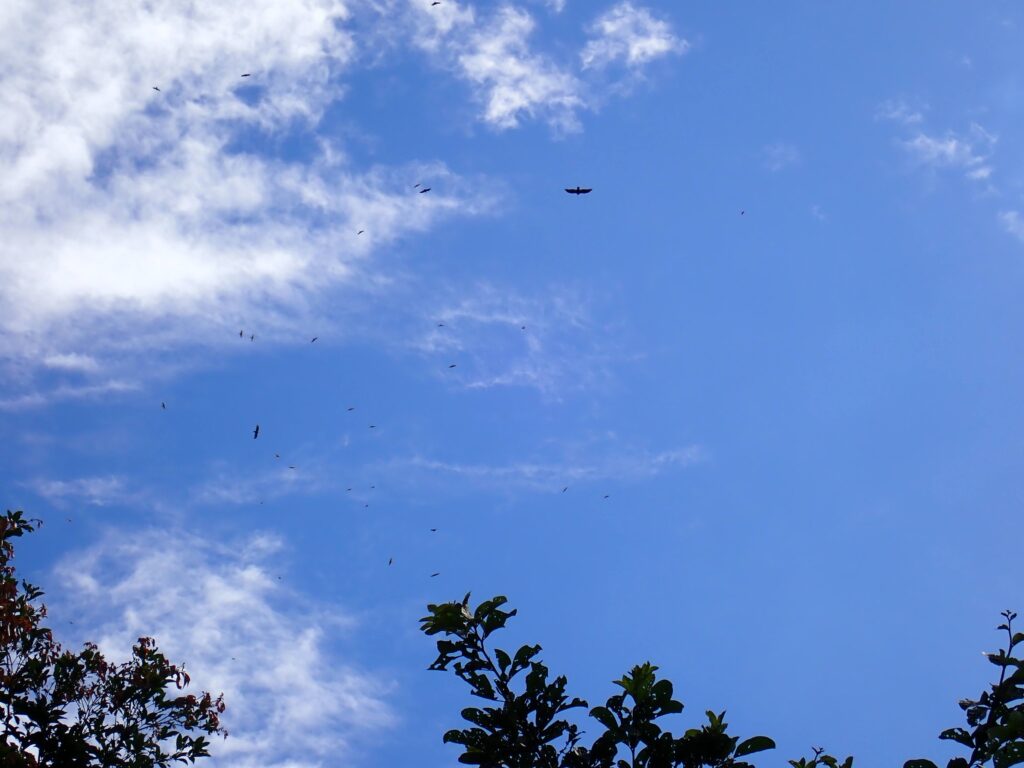
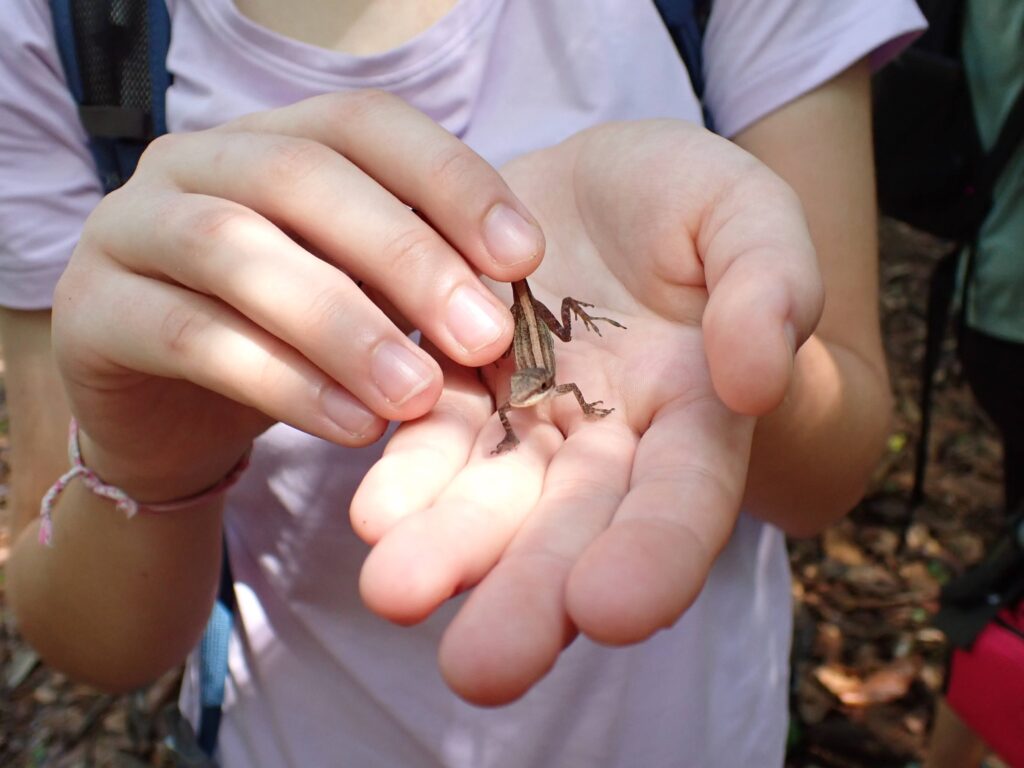
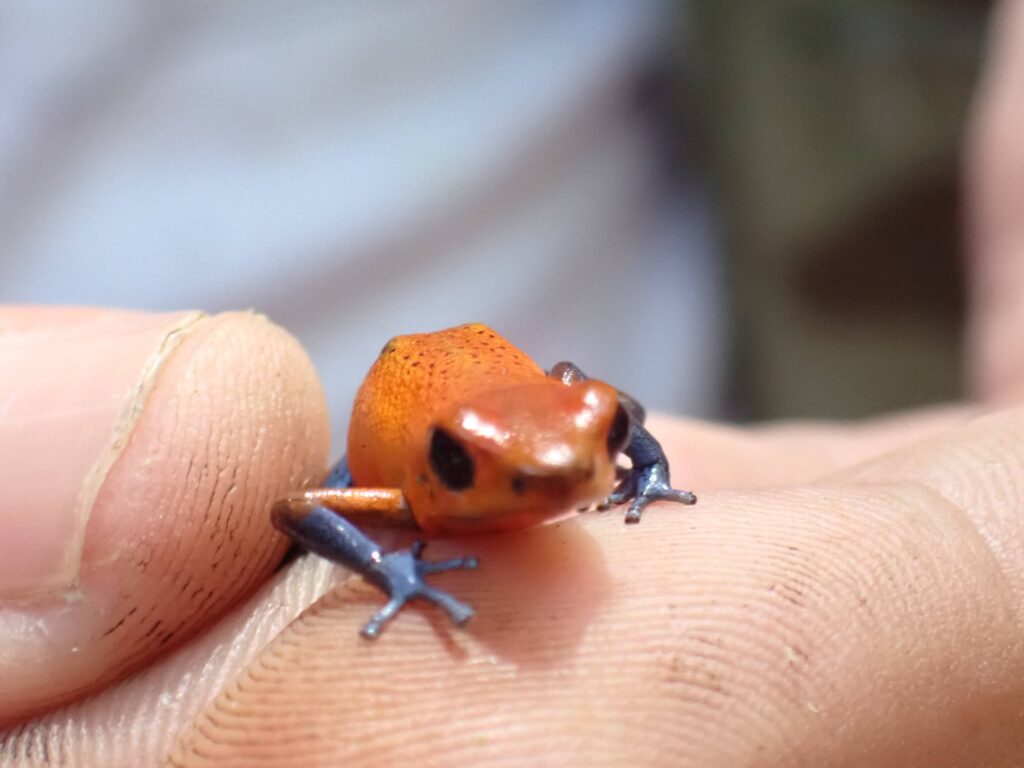
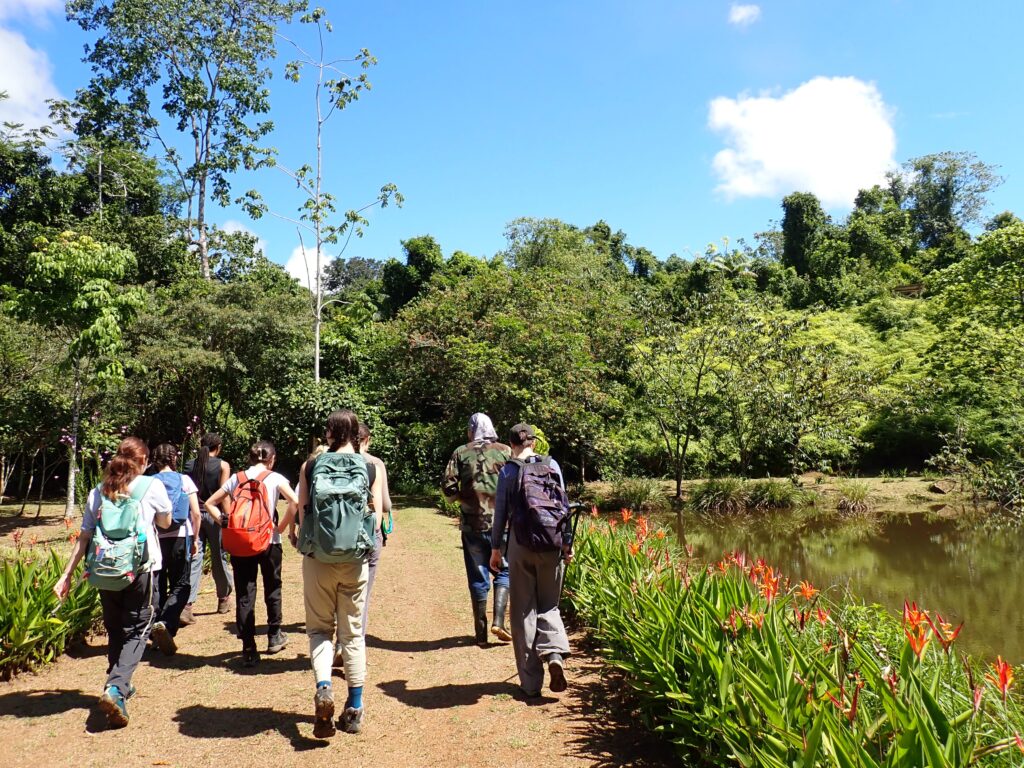
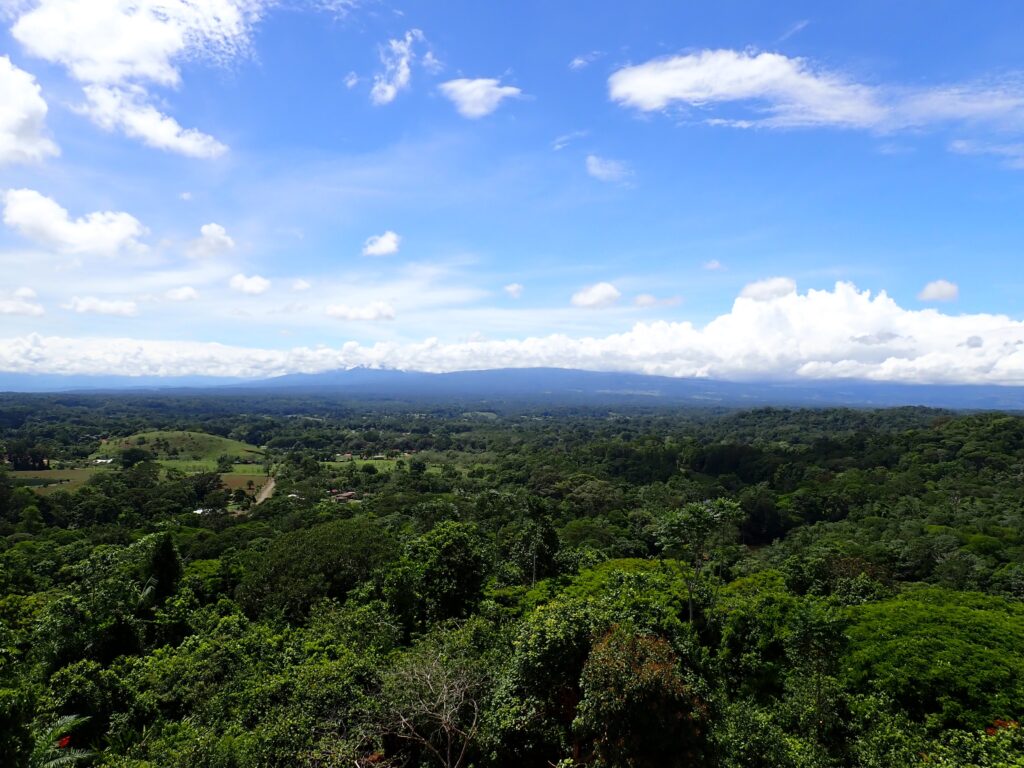
Student Author: Maggie
Hola amigos! Today, we went back to Tirimbina and helped our guide, Christian, take data on the butterflies. There are three main points of data that we record: the gender, the species, and the trap it was caught in. This information helps Tirimbina keep track of butterfly species and ensure they are not endangered. Their main goal is to help create a biological corridor through Costa Rica. We took the long suspension bridge over to the butterfly traps and saw a blue morpho! During our hike, we saw a toucan, capuchin monkeys, and a poisonous dart frog. The weather was very hot and humid, but luckily, there was a bit more of a breeze than usual. After we caught the butterflies, we went back over the suspension bridge and went to the souvenir shop for a bit. Right before we were going to leave, Christian spotted a sloth, and we were able to see it! It was very high up in the tree, but still a very exciting moment on the trip! We all had a very amusing time in Tirimbina, and we are all very grateful for the new information that we learned! Tomorrow is Lapa Verde! Pura Vida!
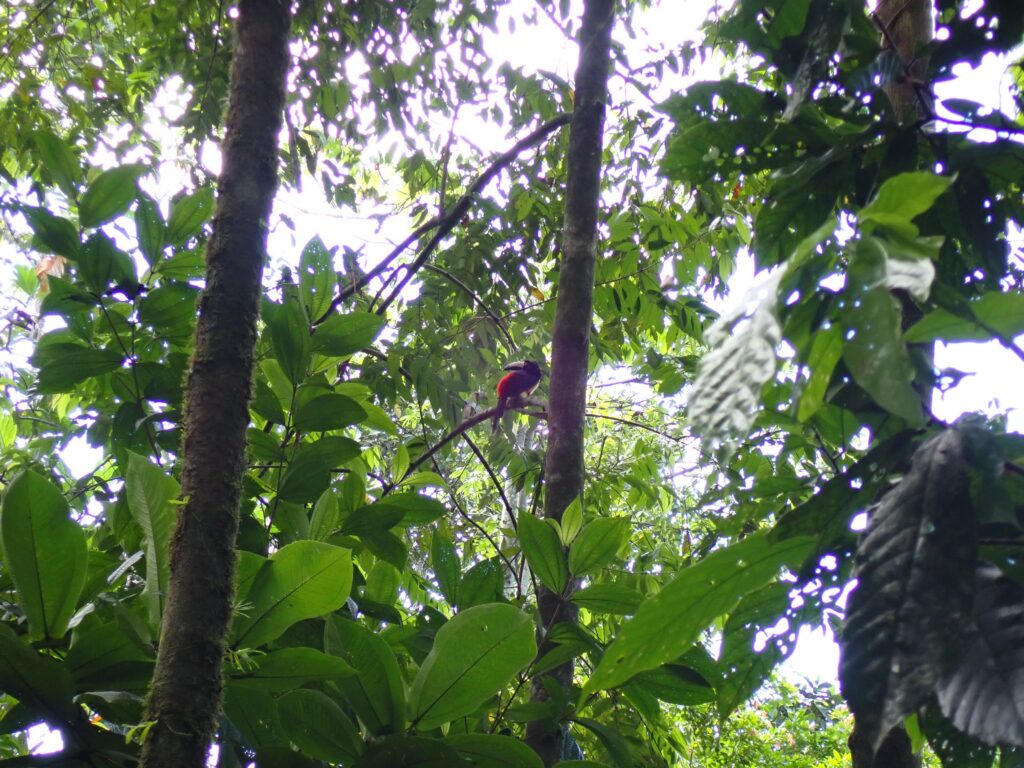
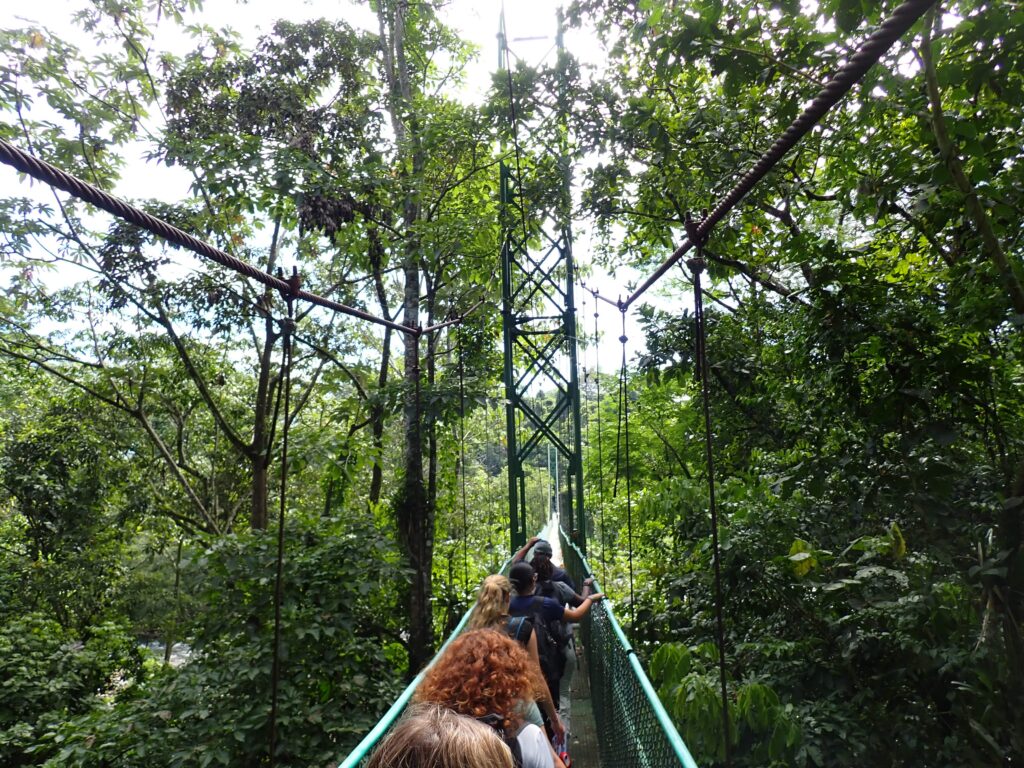
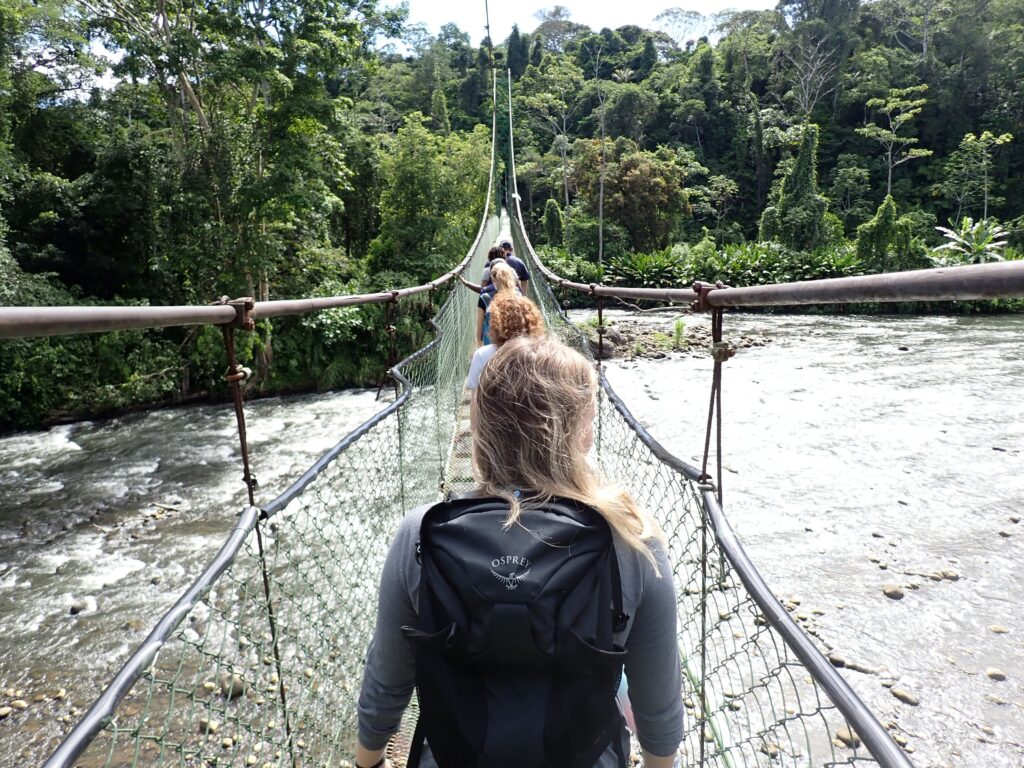
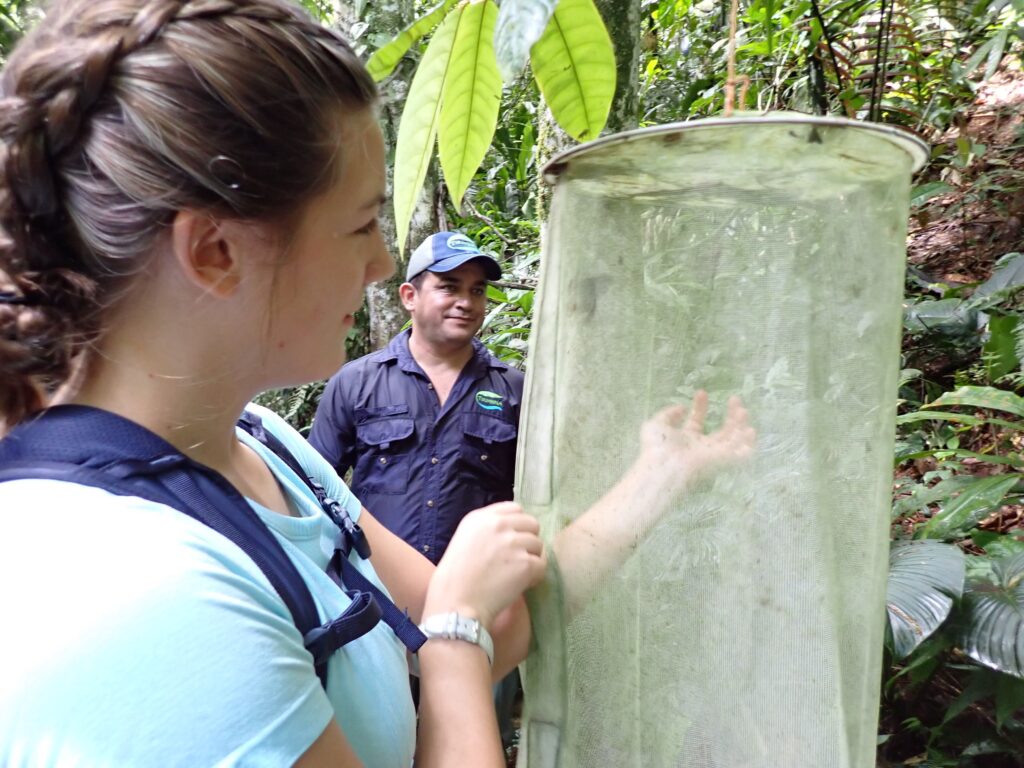
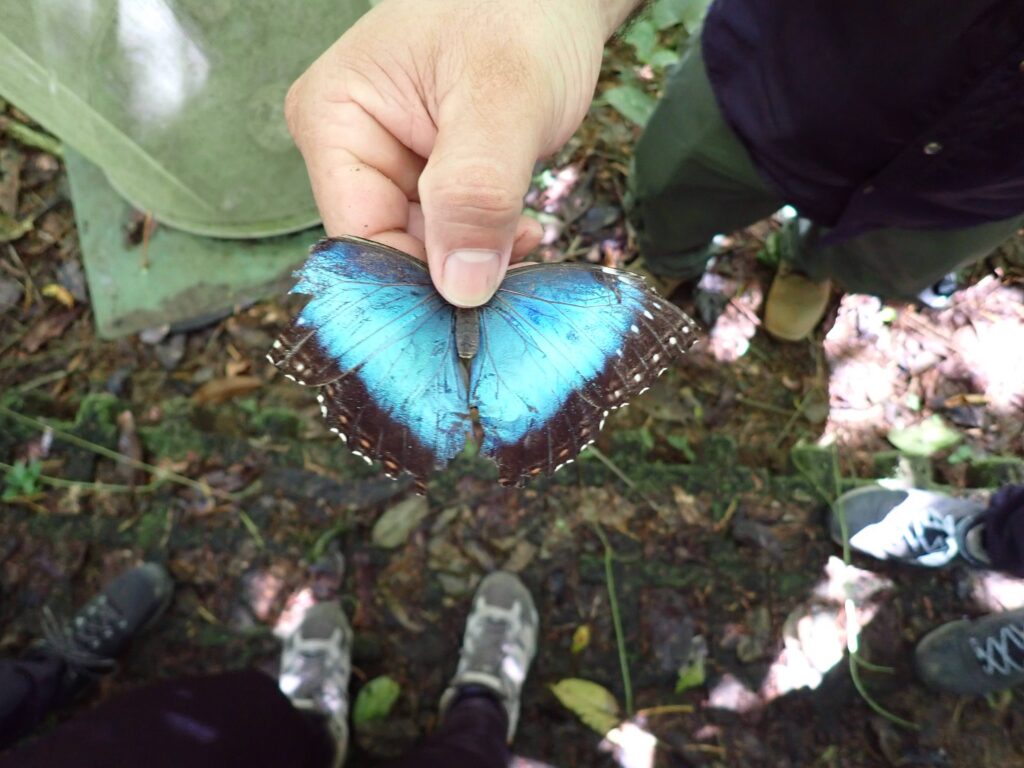
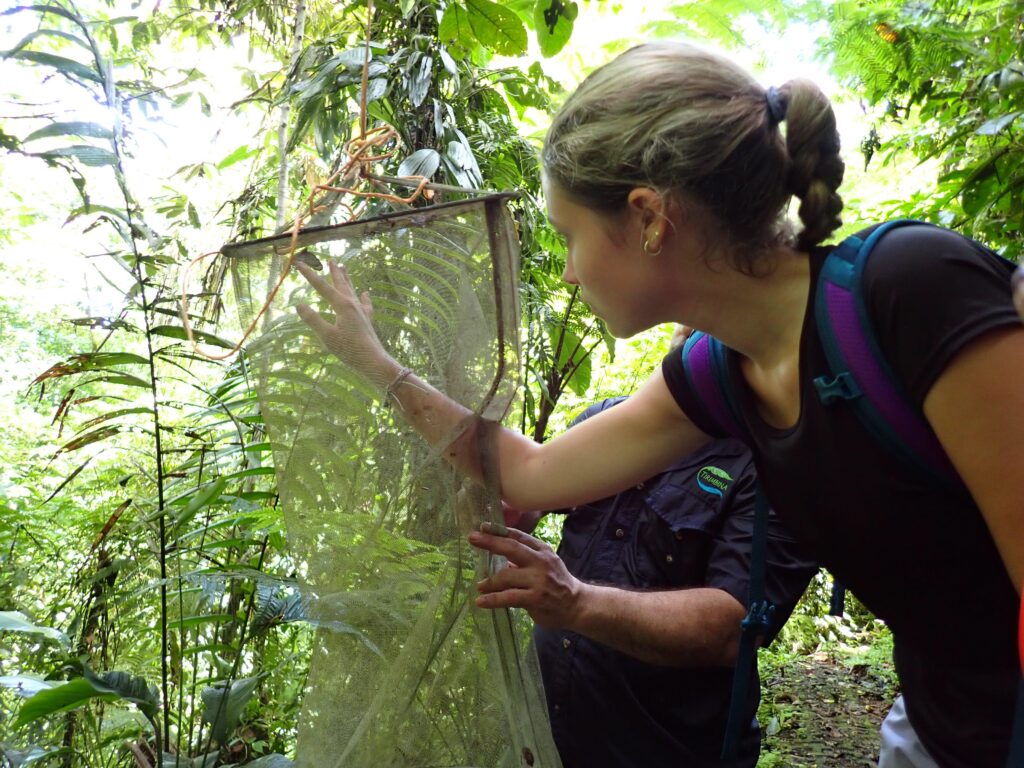
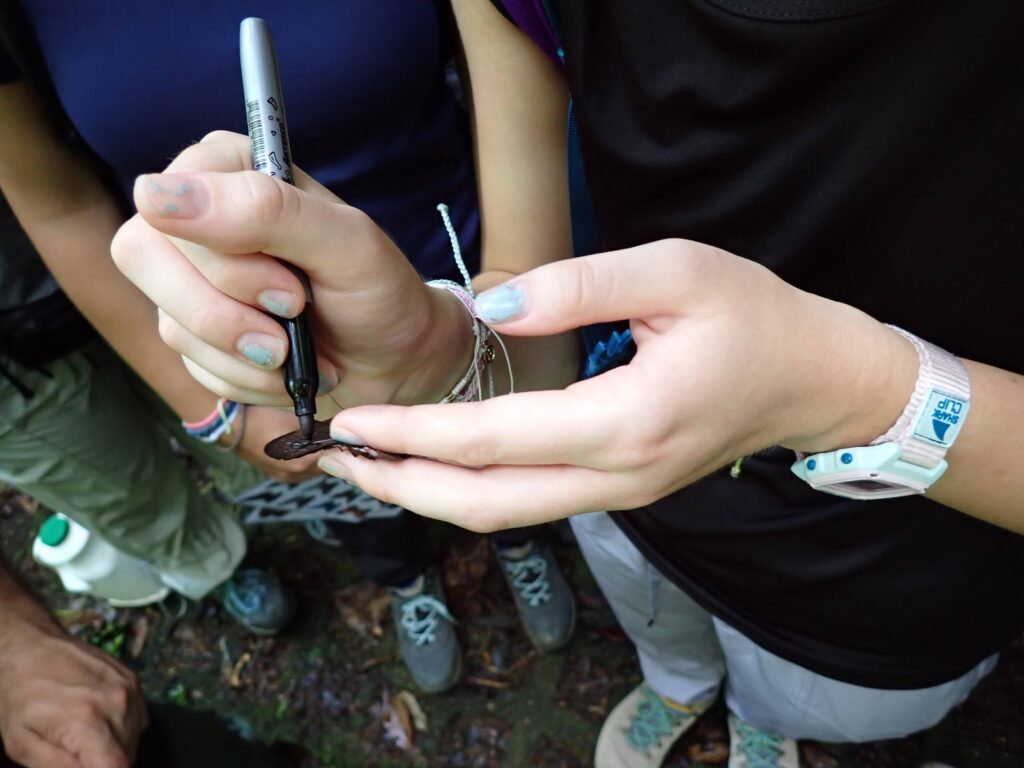
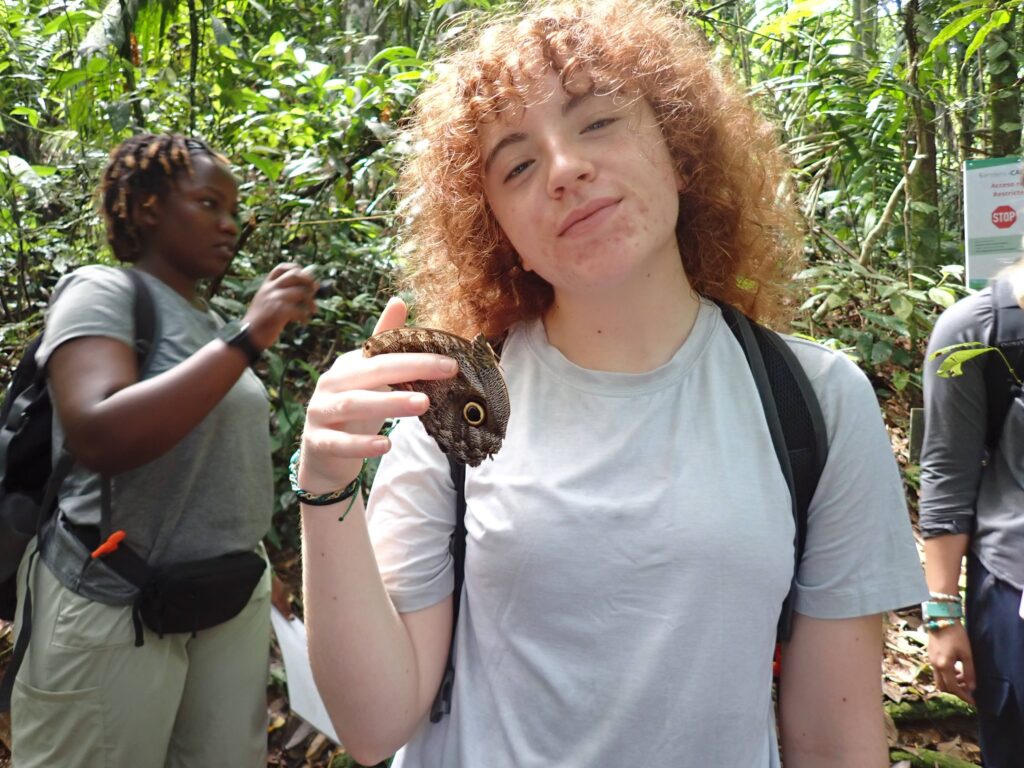
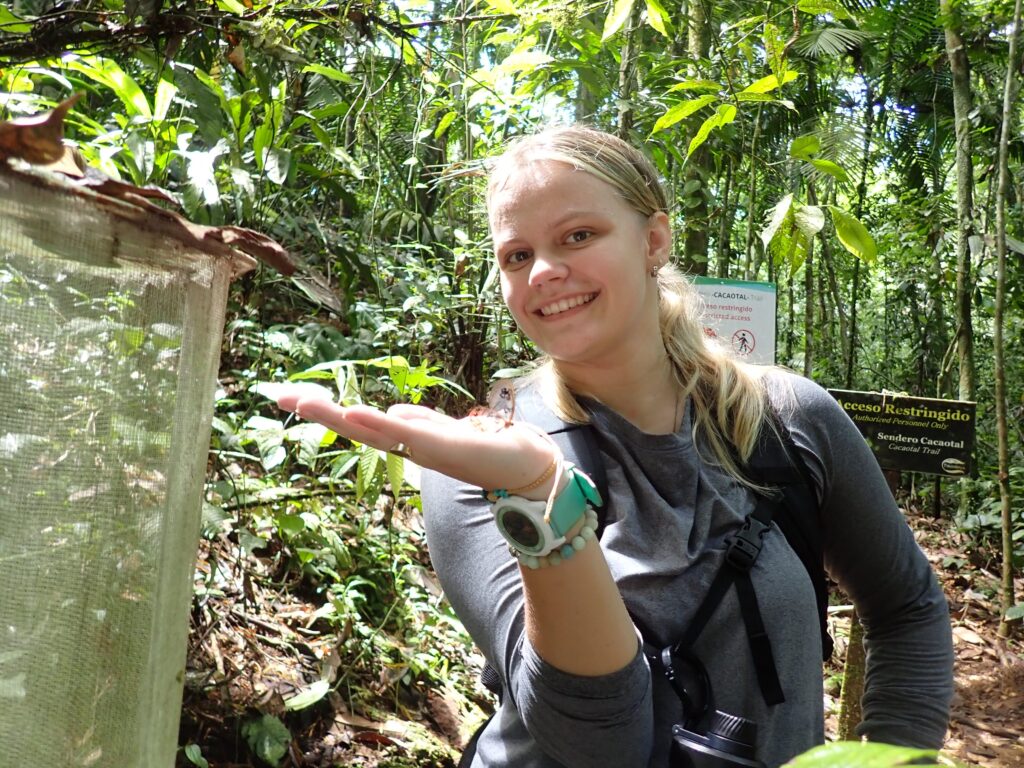
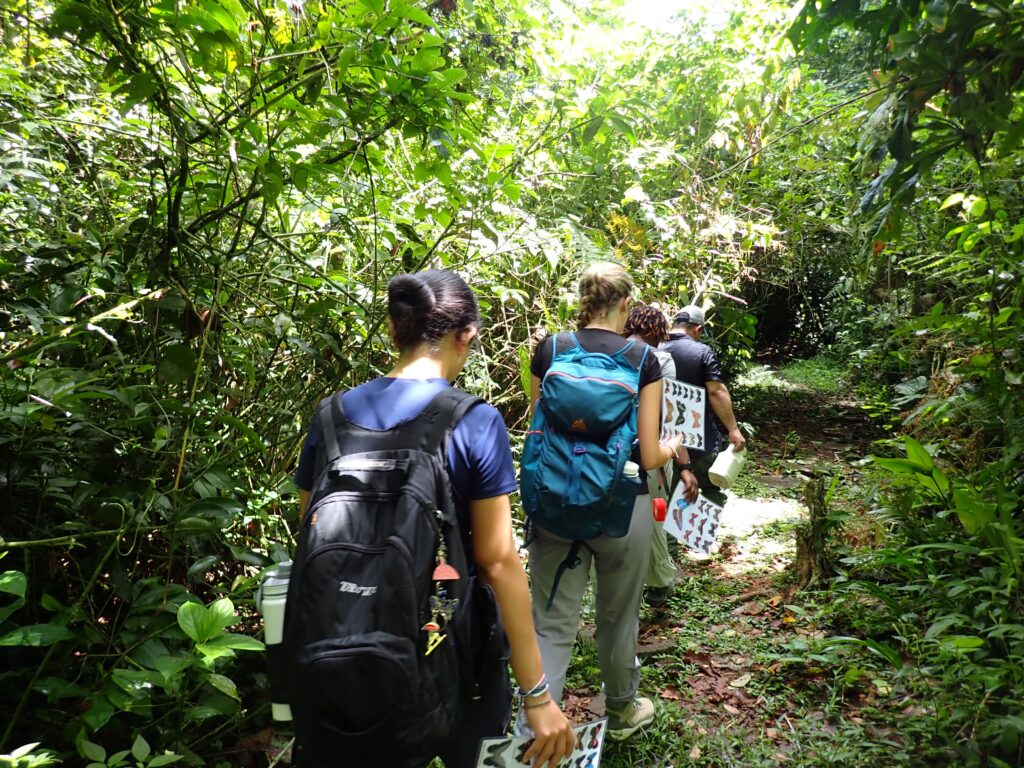
Student Authors: Anna G. and Maggie
After everyone finished in their morning groups, we split into two new ones, going to either the chocolate tour or the organic farm! On Friday, half of Group 2 and all of Group 1 went on the chocolate tour, and today, these groups went to the organic farm. This farm is run by Daniel on land he bought twenty years ago. We met Daniel’s family, got to explore his farm, had a delicious lunch, planted cacao trees, made compost, and listened to Daniel’s story explaining why he became an organic farmer. Years before, he worked on banana and pineapple plantations full of pesticides. After his time at the plantations, he started a co-op with 7 other plantation workers to open organic farms because he saw the horrible effects that plantations had on the environment and wanted to find a way to farm that was beneficial to humans, wildlife, and the land. Daniel’s story was very touching and meaningful to hear, and all of us took many lessons away from what he had to say. Also, we learned how to make compost by mixing wood ash, animal manure, sawdust, charcoal, and coffee grounds to create a healthy fertilizer for the plants to soak up. Daniel’s grandson, Josué (7), walked around with us, put our Spanish skills to the test, and taught us the ways of the farm. We all want to give one big thank you to Daniel and his family for the impact he is having on Costa Rica and the information and stories he shared with us today!
To end the day, the group was treated to a special treat. We all enjoyed some pink pineapple!!
A fruit so rare to find, it is almost impossible to find in Costa Rica. It was delicious!!!
¡Pura Vida!
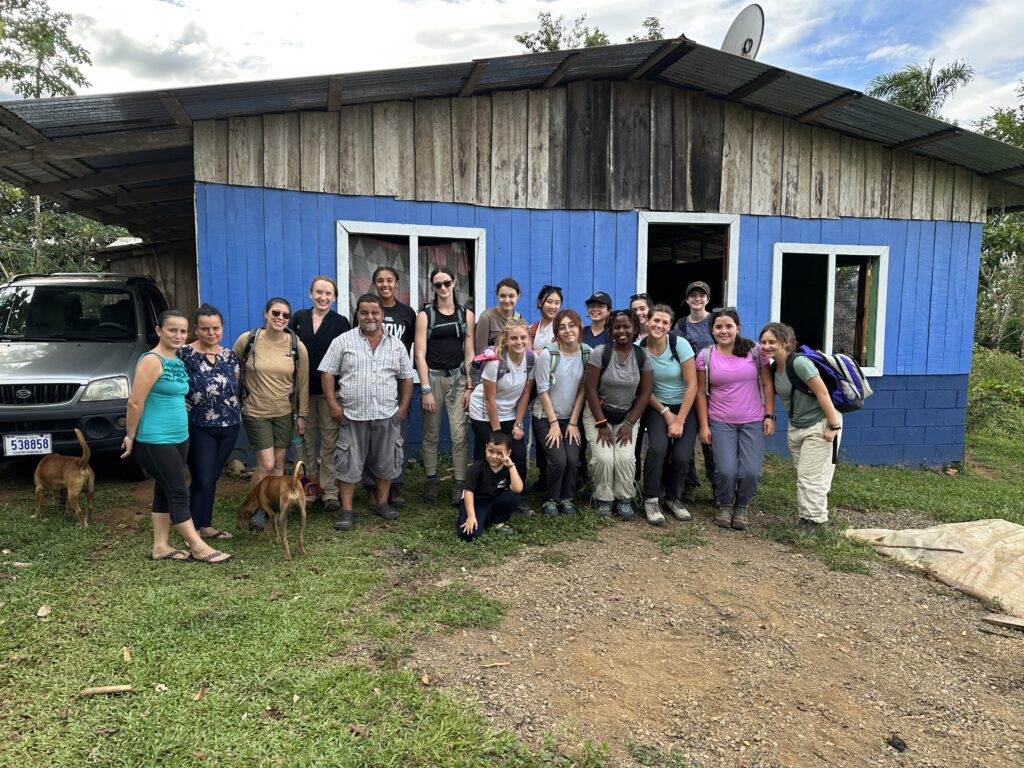
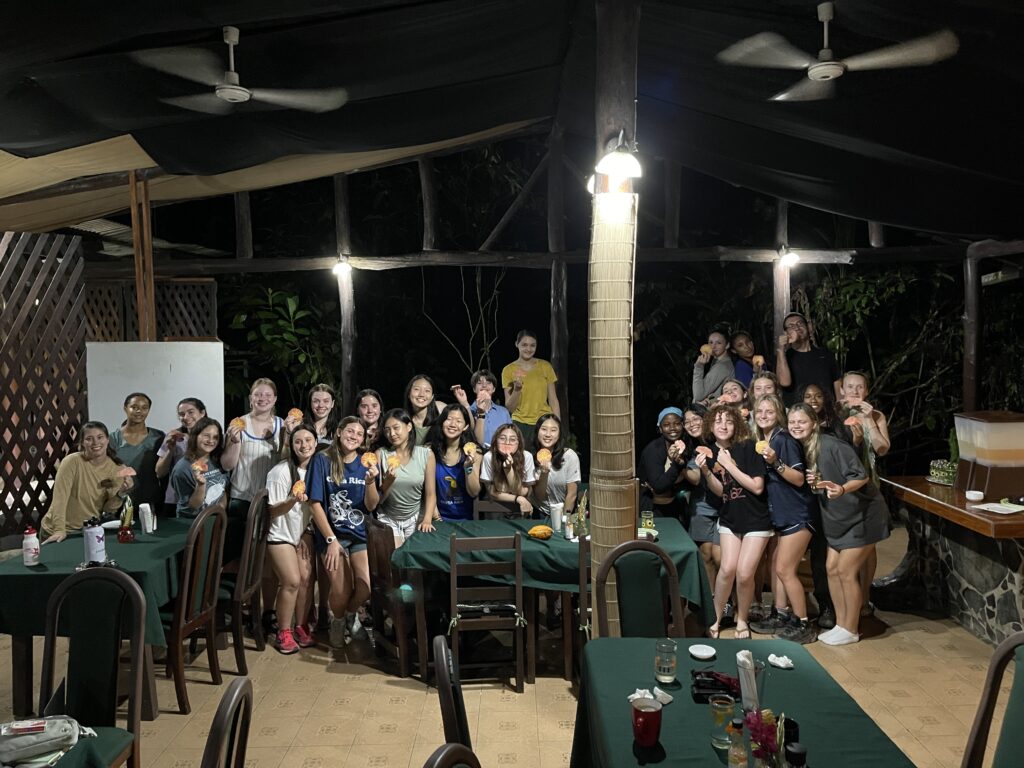
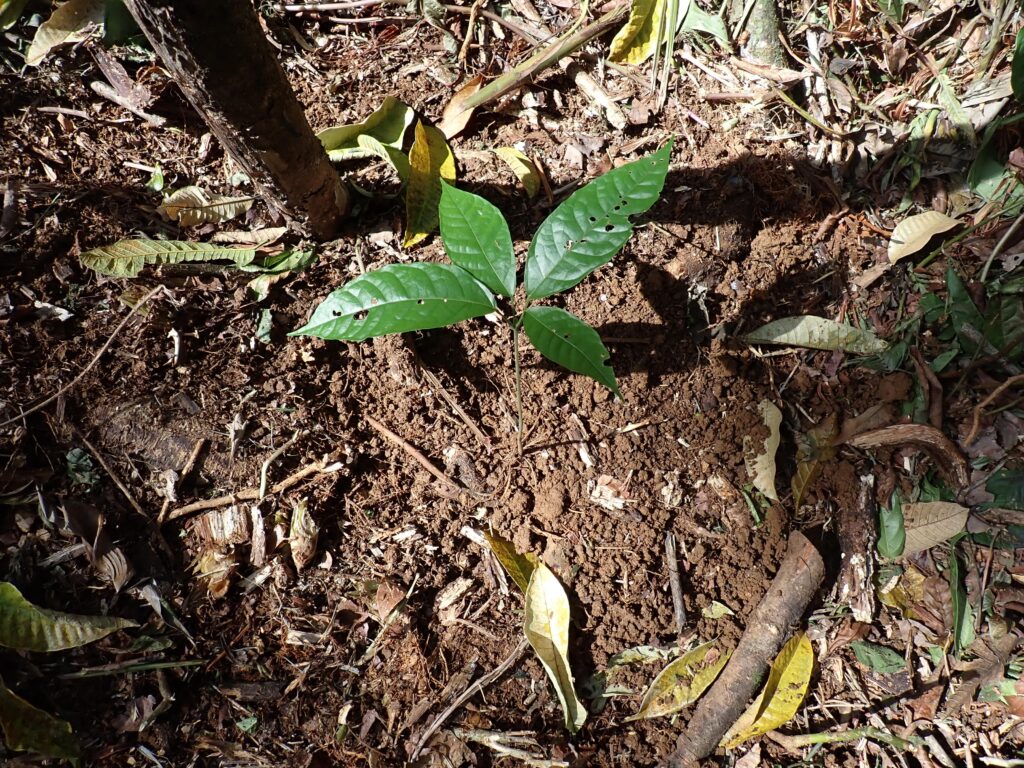
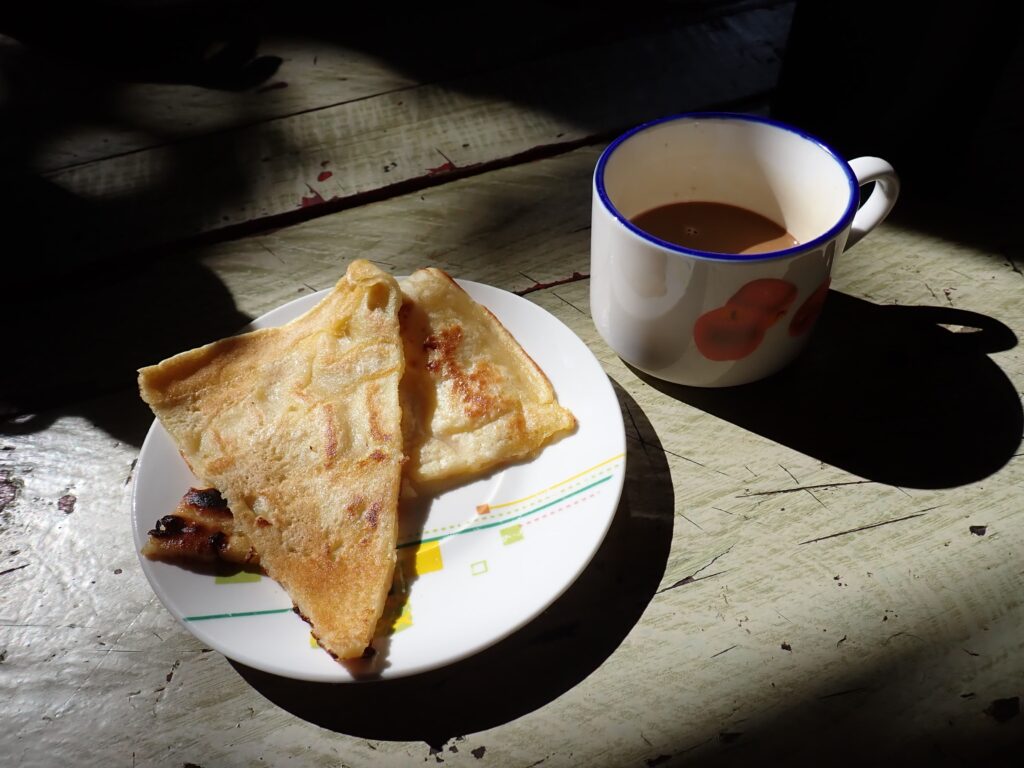
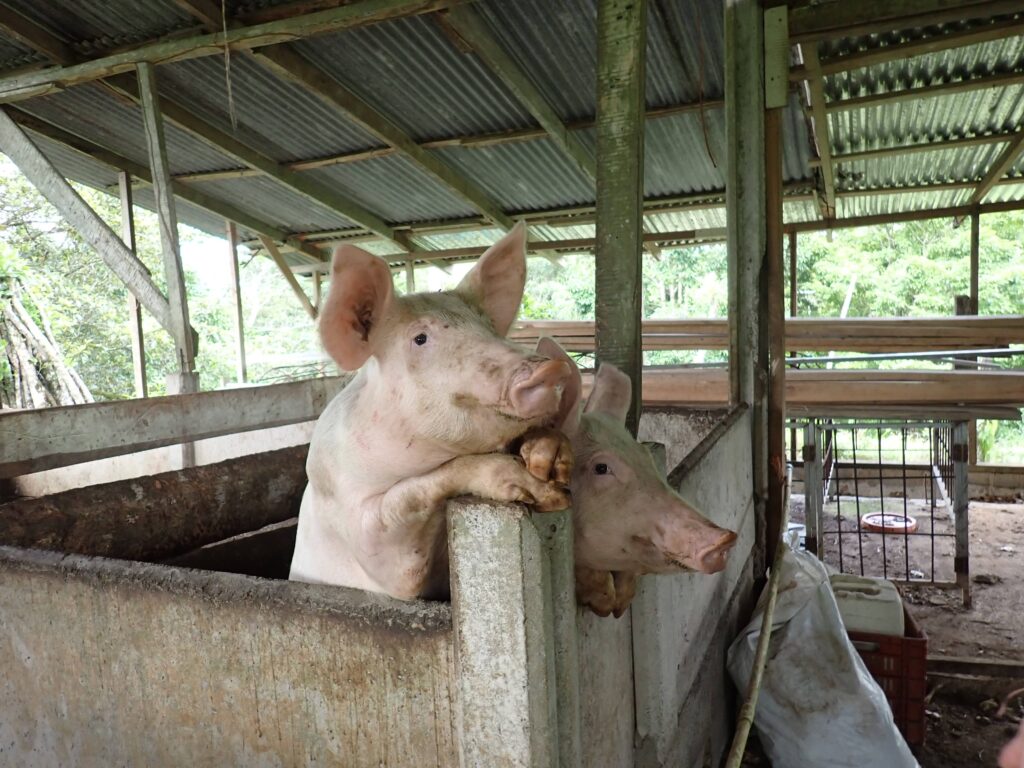
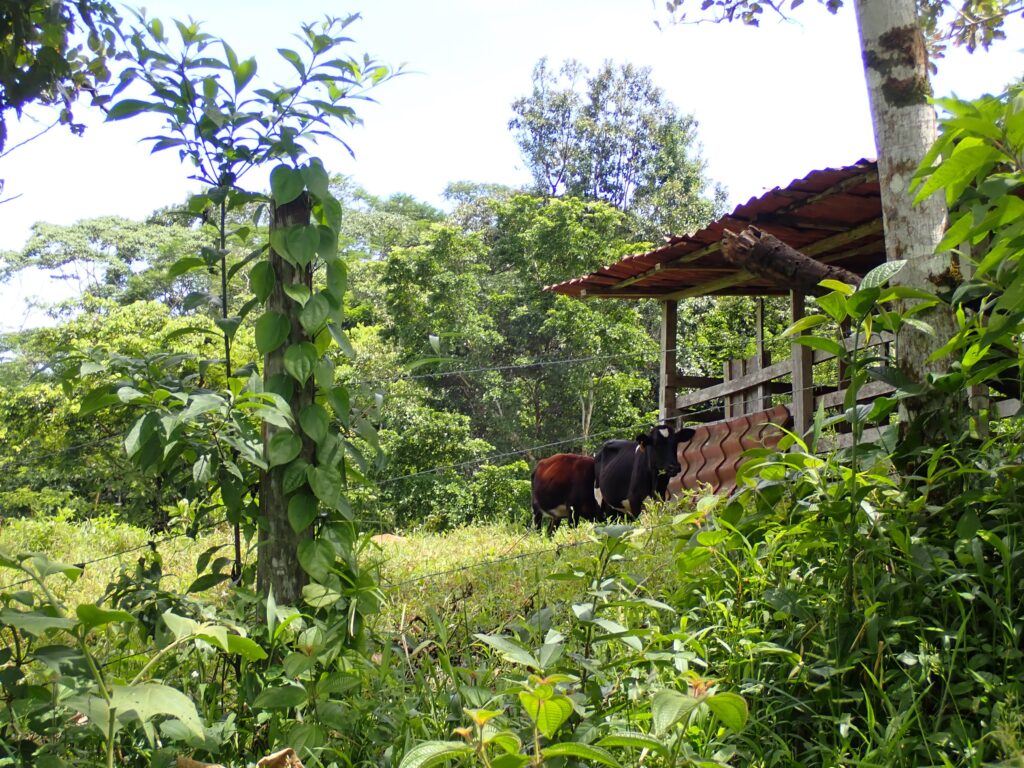
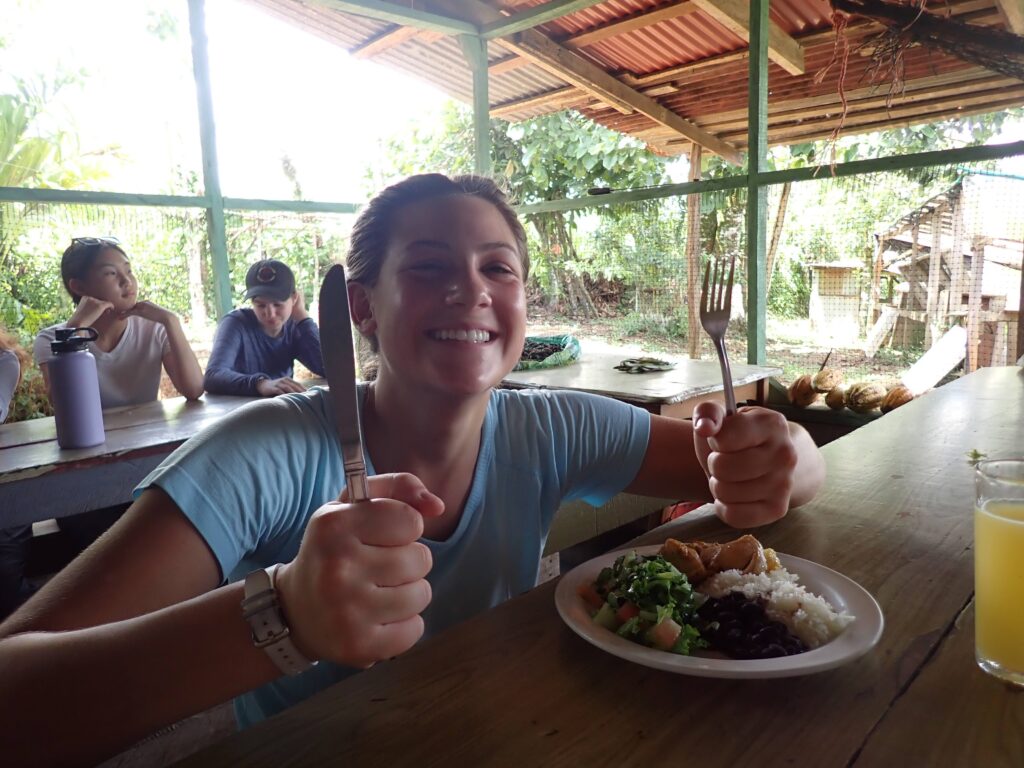
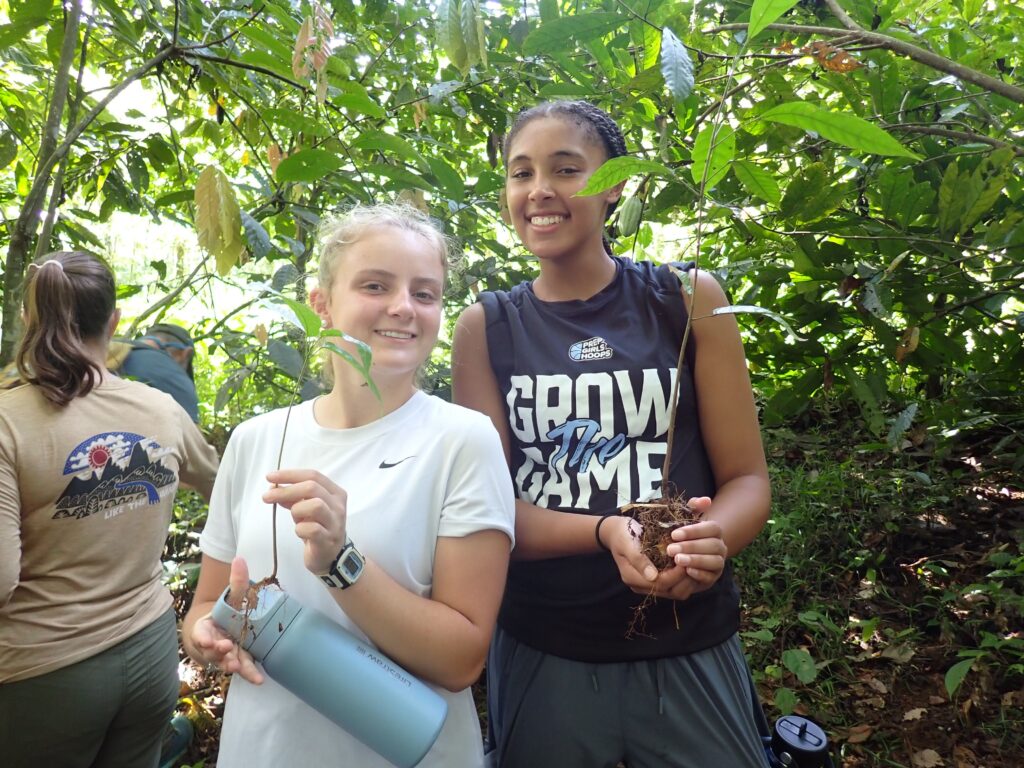
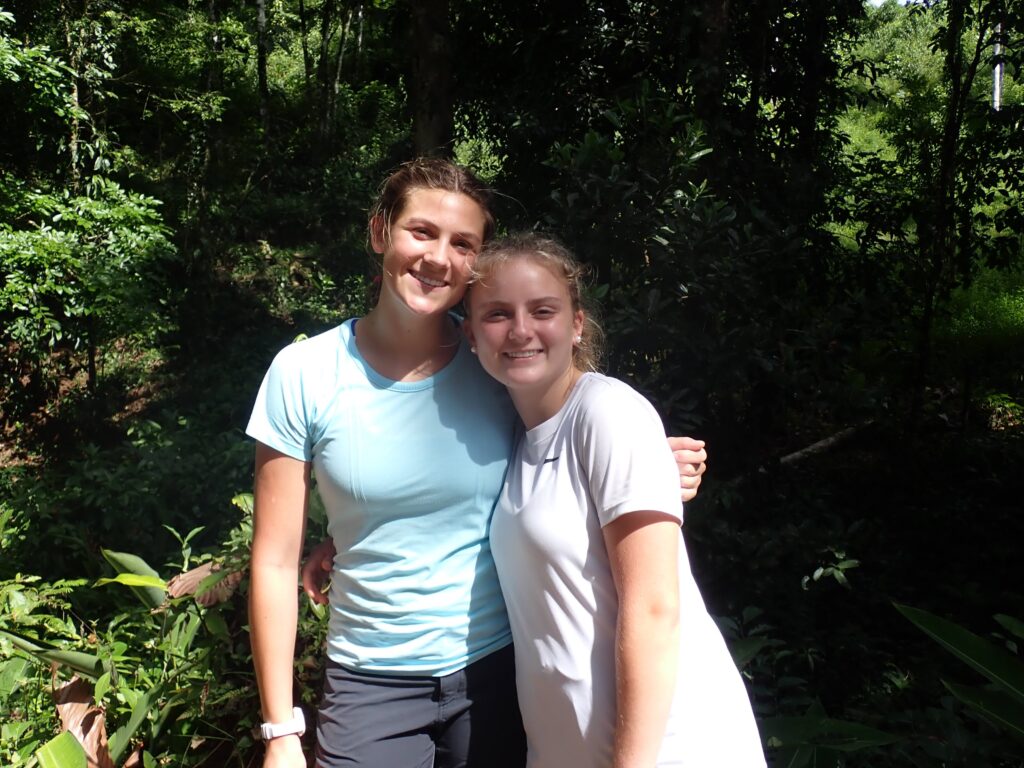
October 7, 2023
Student Authors: Sammy, Ariana, Zaria, Caroline
Pura Vida desde Costa Rica! Today was TOURIST DAY!!! We started off our day with a delicious breakfast at 7:30 a.m. It consisted of fried plantains, gallo pinto, eggs, fresh pineapple, and cas juice. We then embarked on an hour-and-a-half bus ride to La Fortuna. For our first stop, we went ziplining in the beautiful canopy surrounding the Arenal volcano. It was a little nerve-wracking but so much fun. Multiple people faced their fears, and it was definitely worth it because the views were MAGNIFICENT.
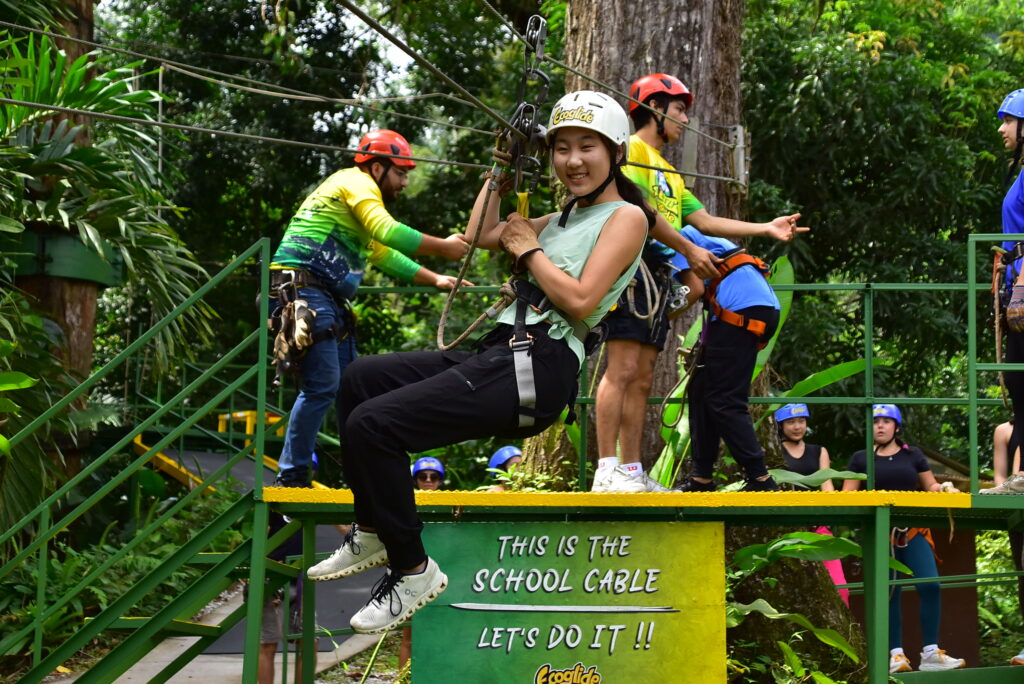
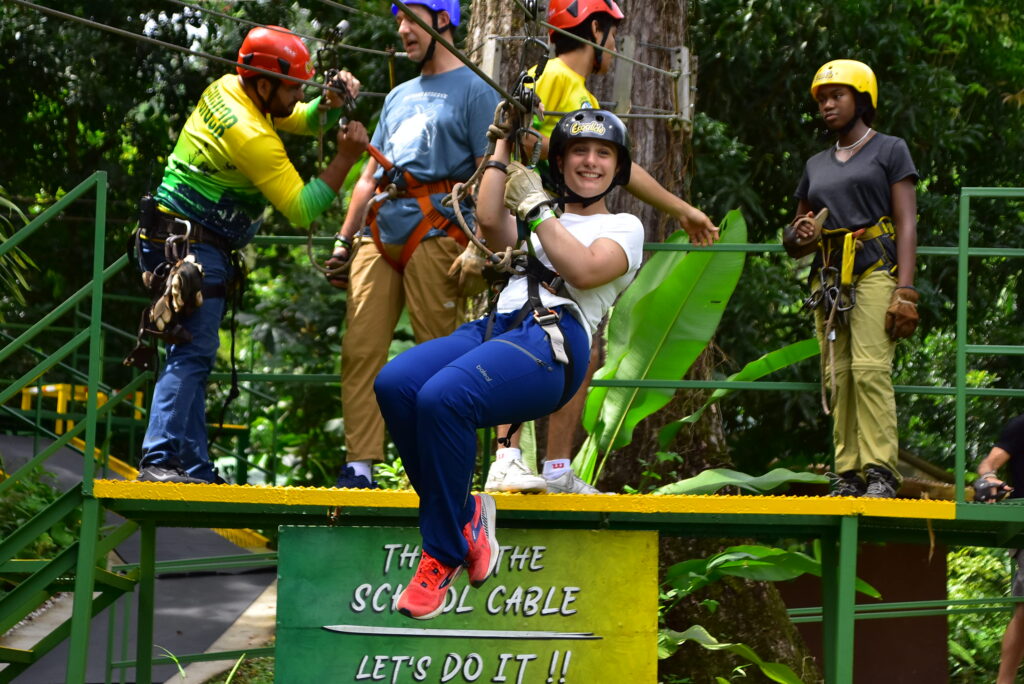
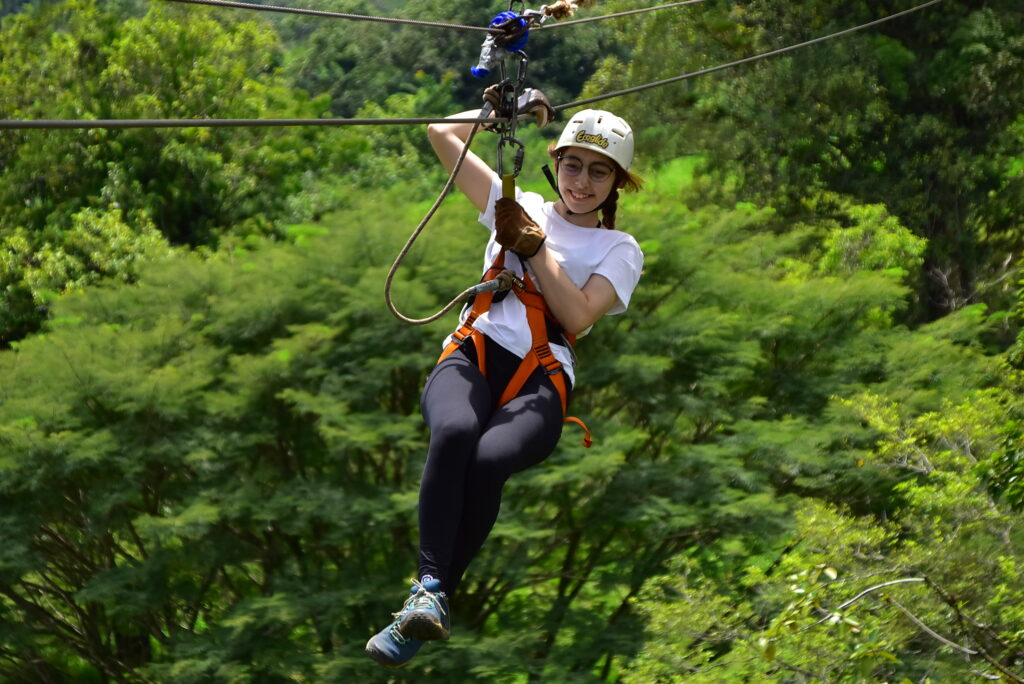
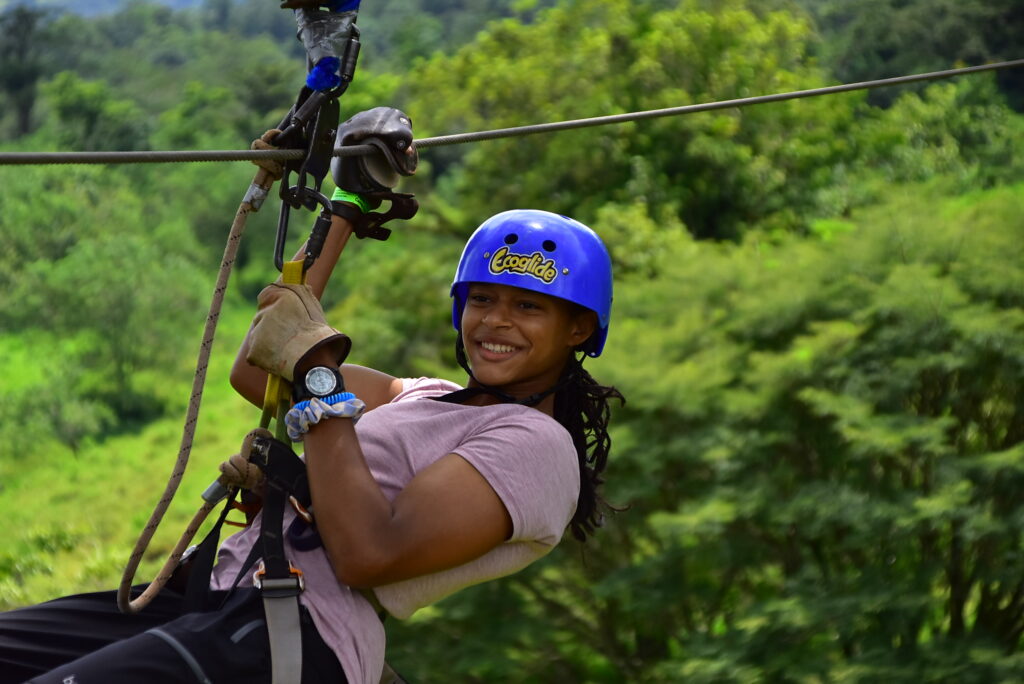
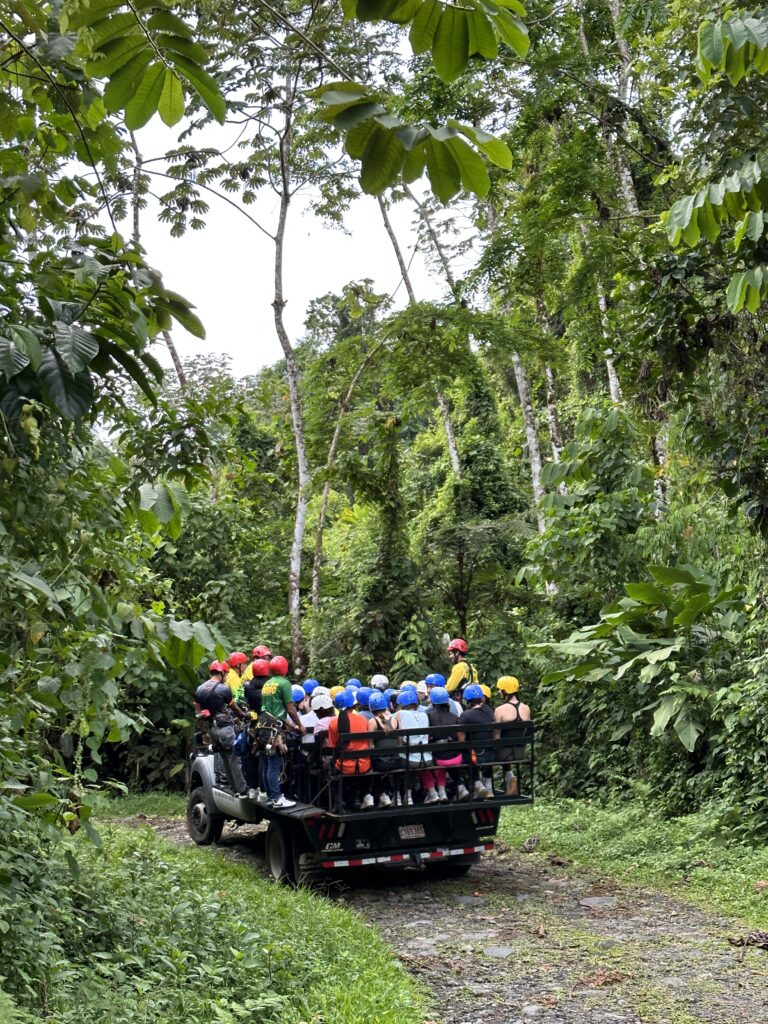
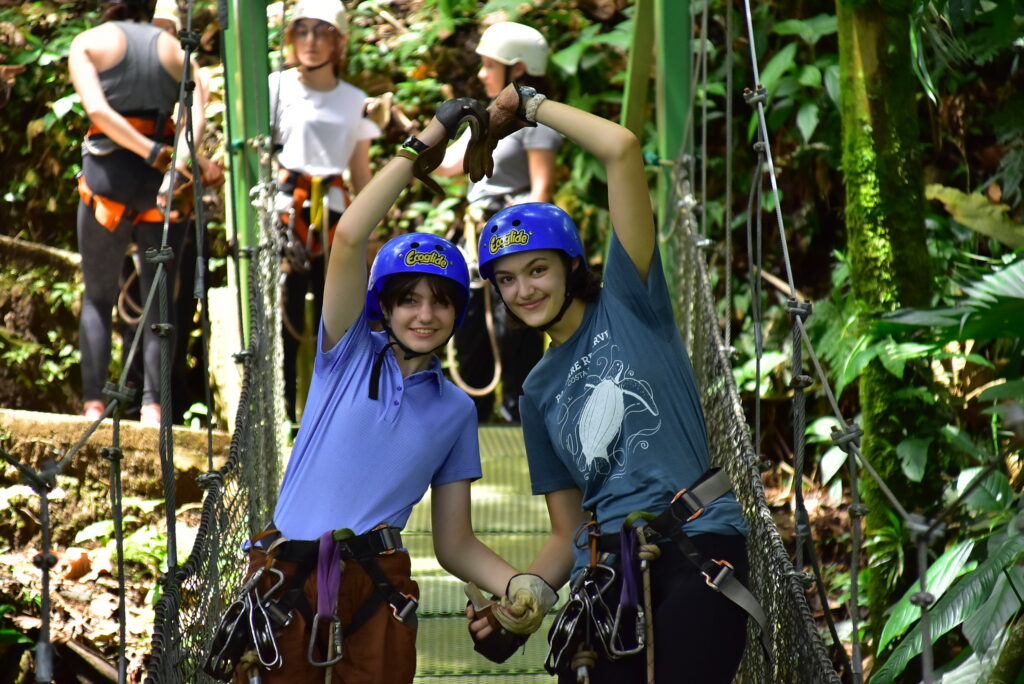
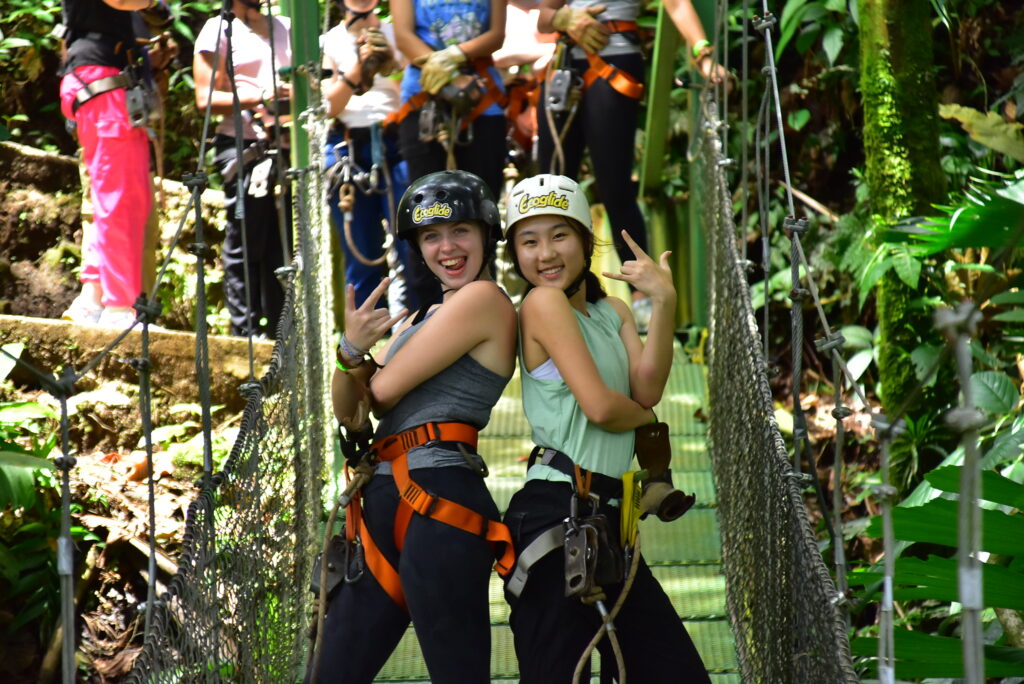
After, we had a great lunch at a local restaurant, where people chose between soups, fish, chicken, shellfish, and beef with rice, beans, and salad. We then broke into groups of five to explore La Fortuna and go shopping. We bought TONS of souvenirs to remember our impactful experiences here in Costa Rica. Some of us bargained for the first time ever (Ariana), while some of us indulged in some delicious ice cream. 😋🍦
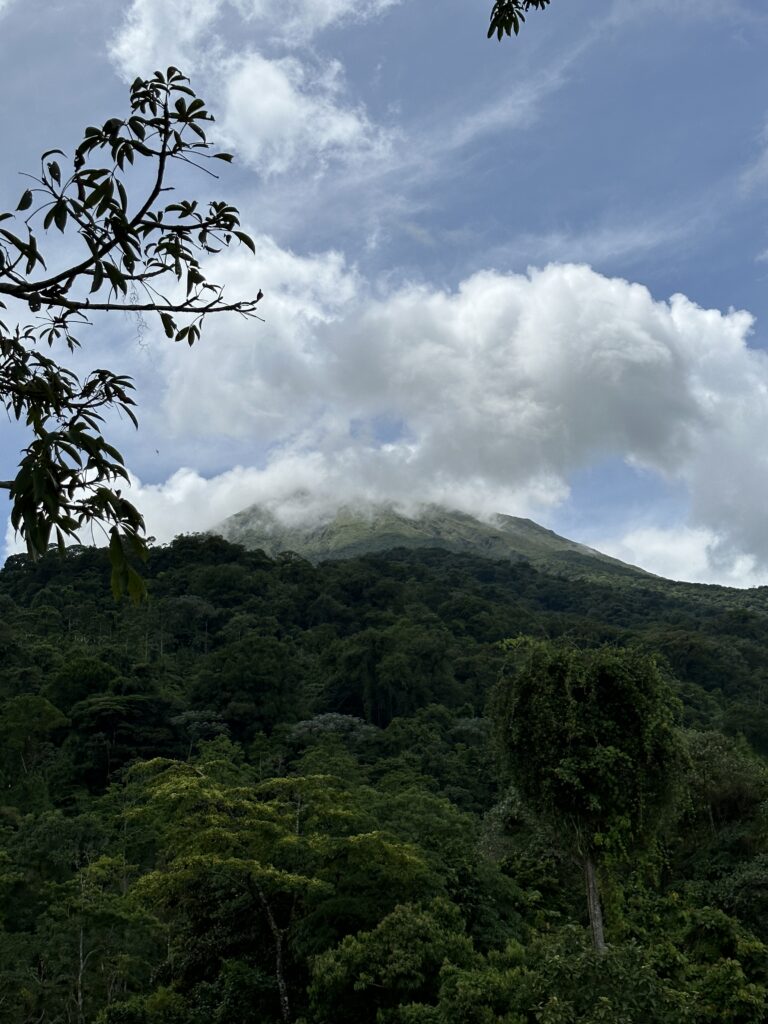
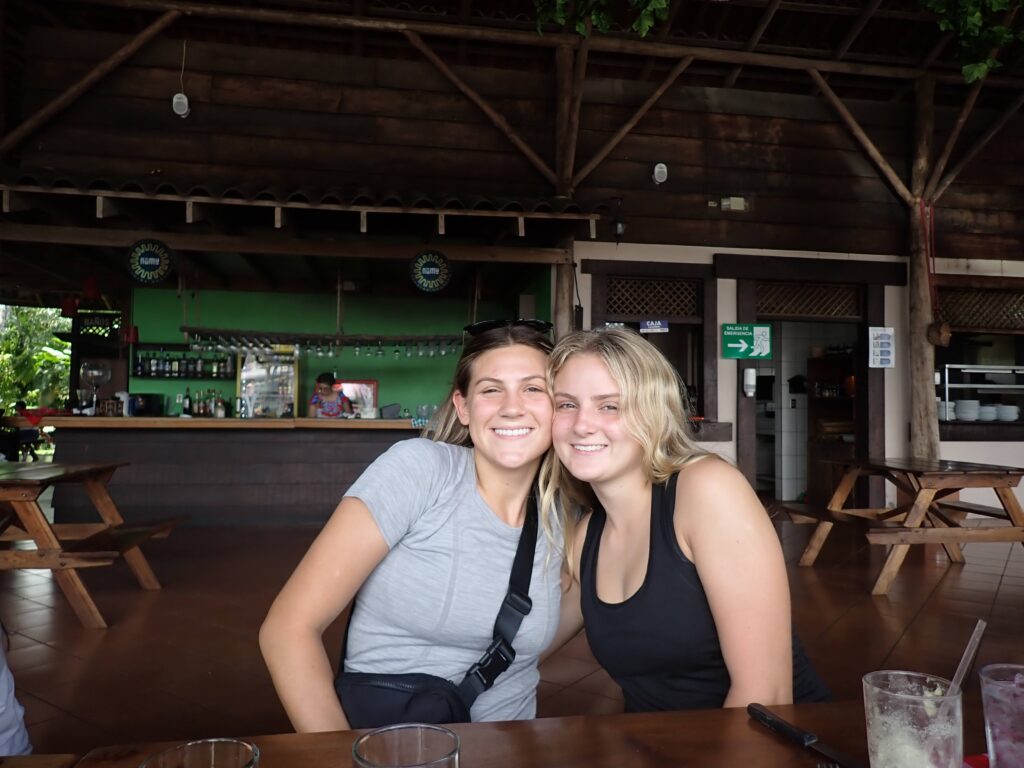
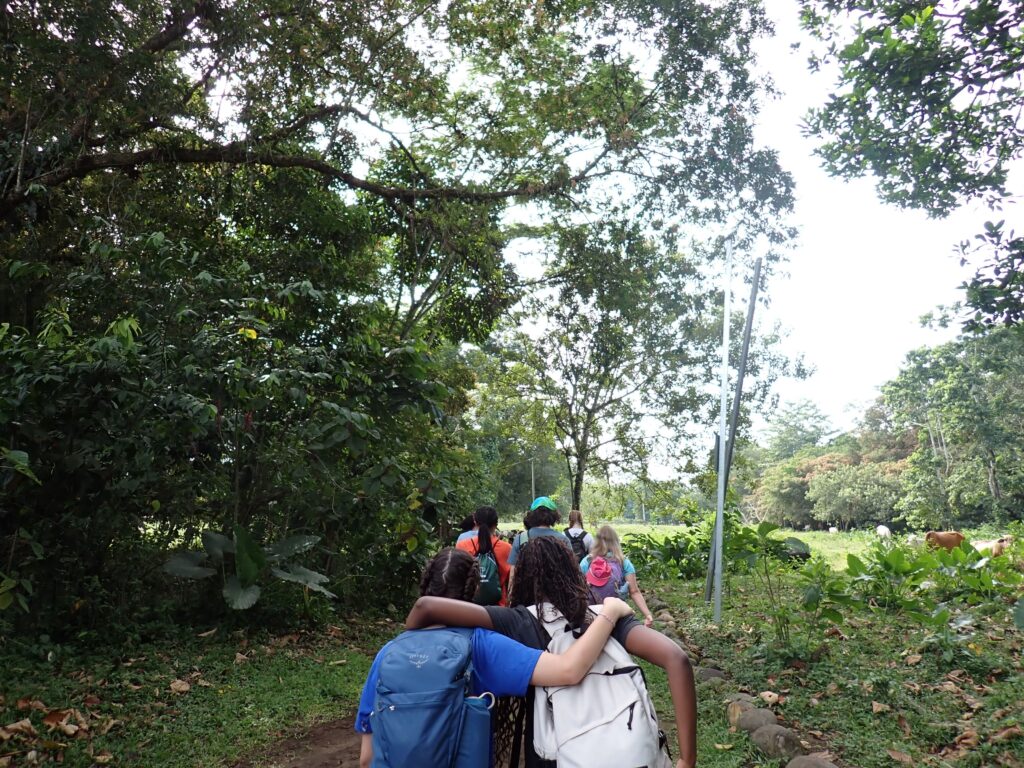
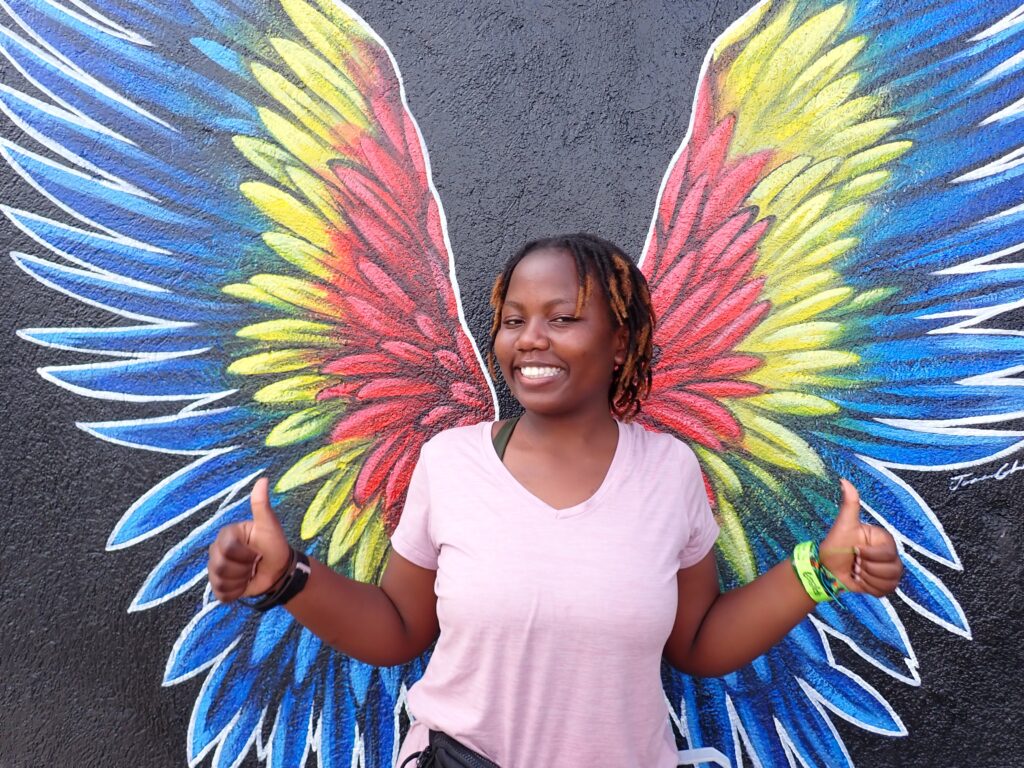
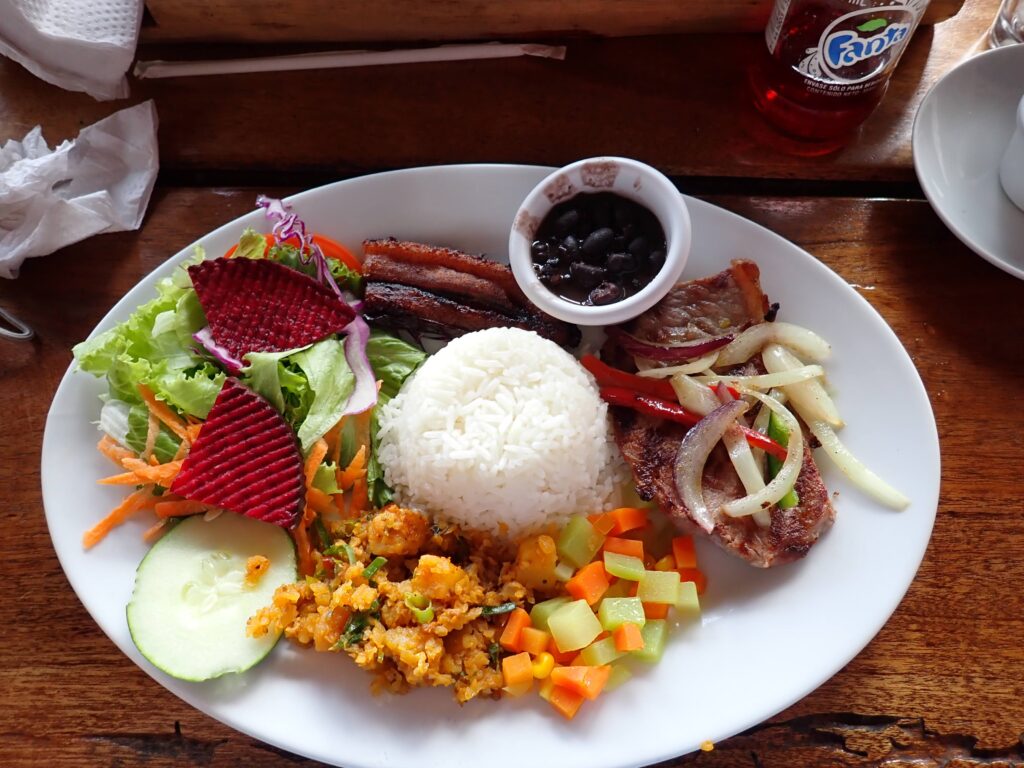
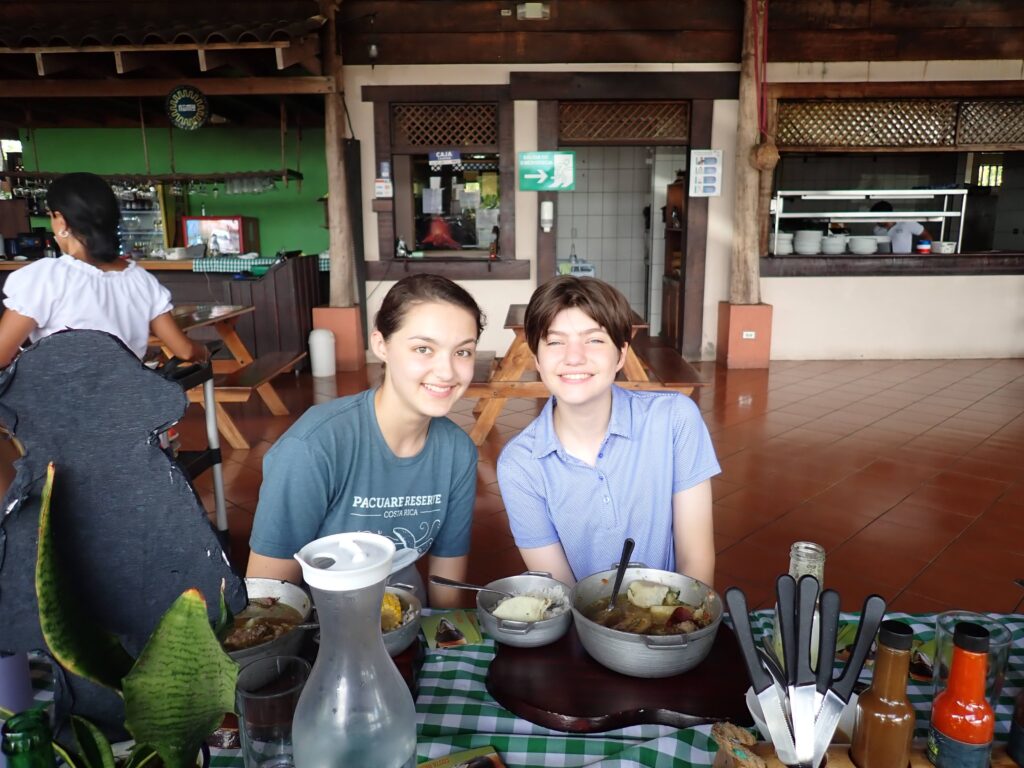
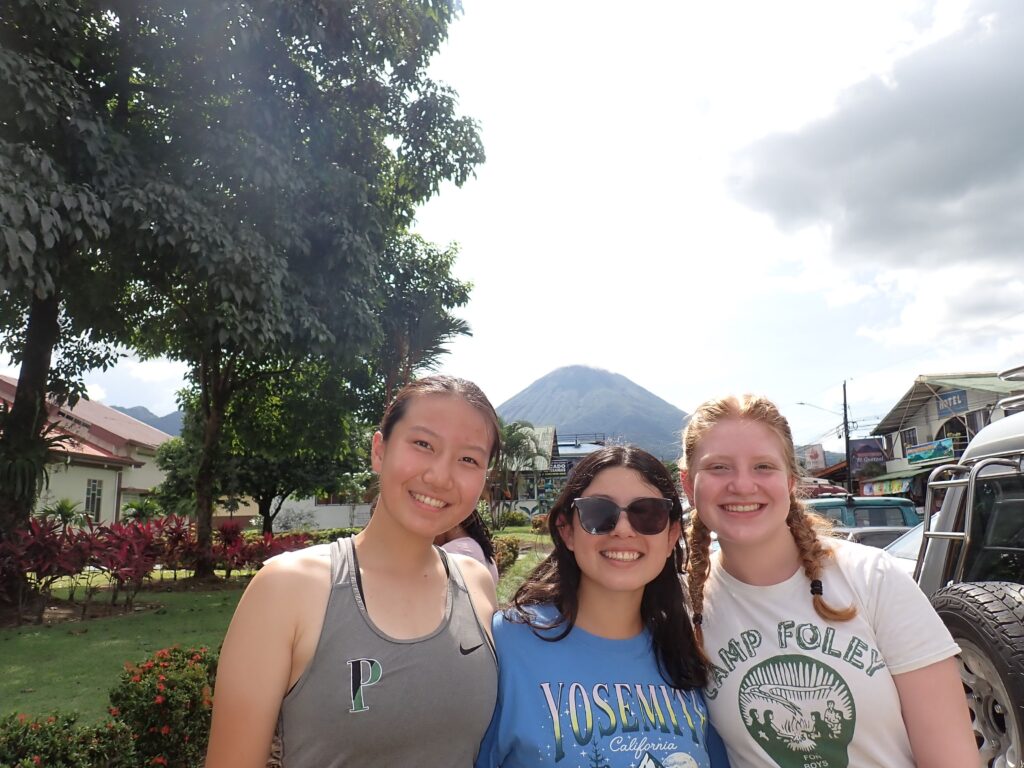
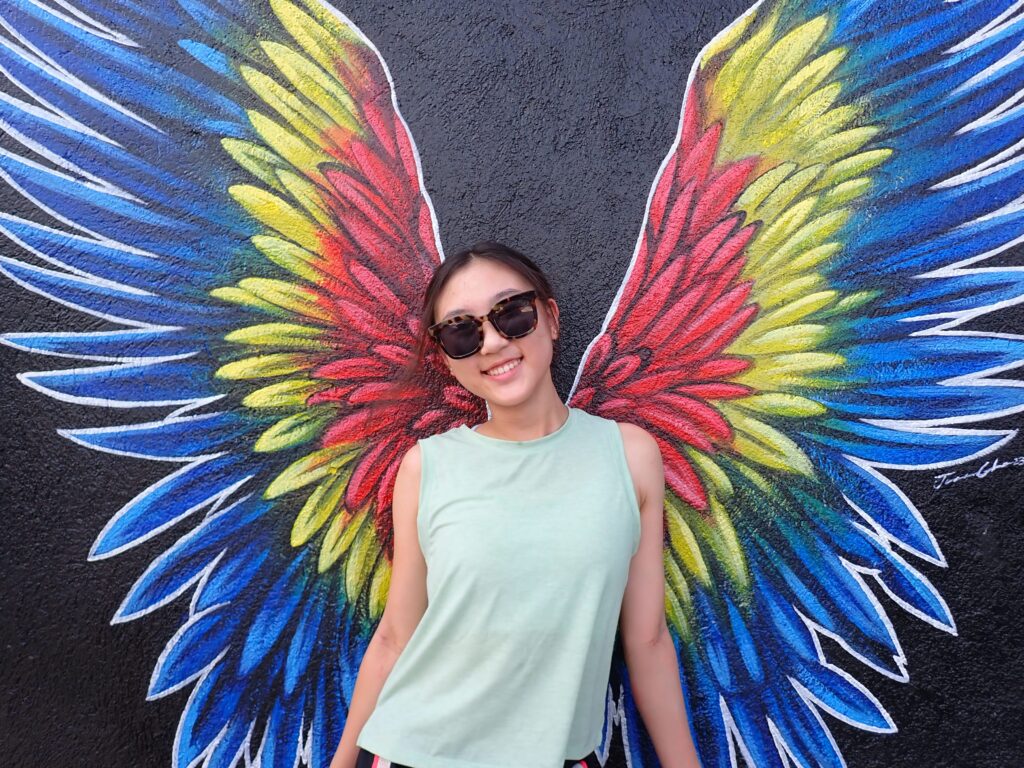
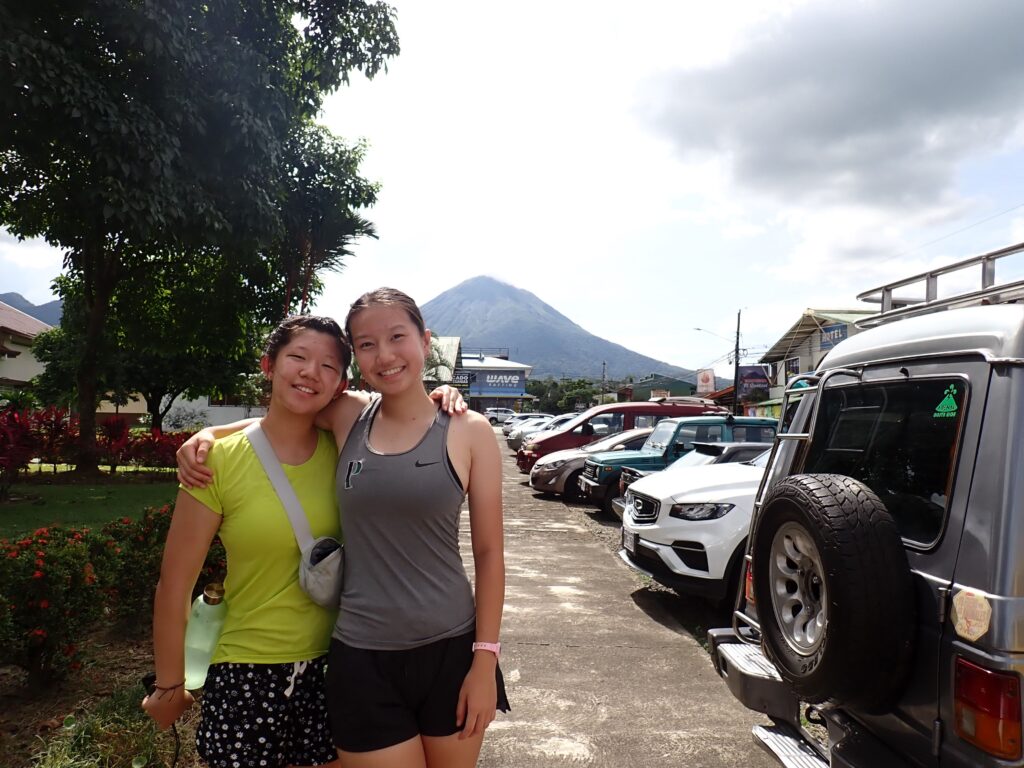
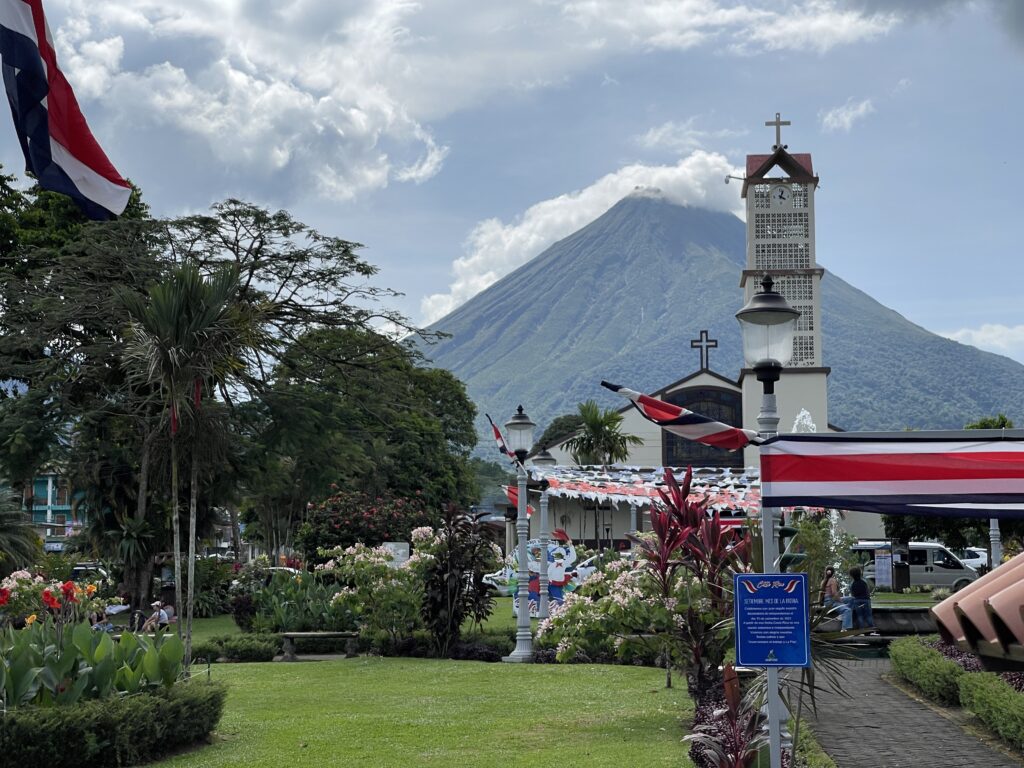
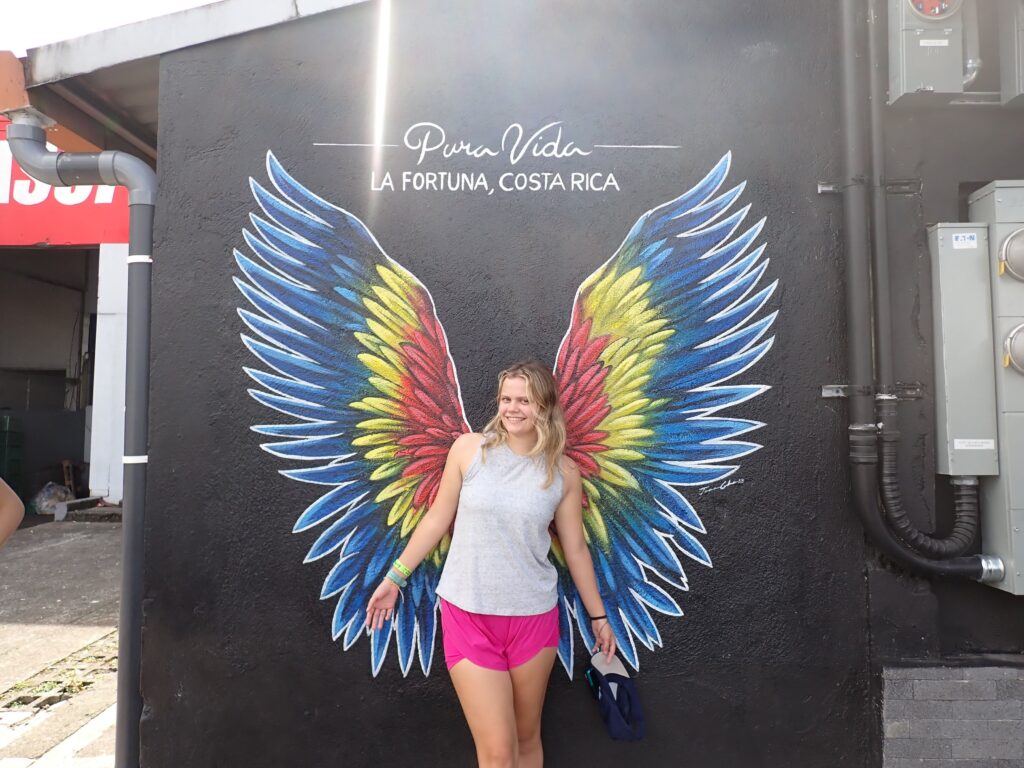
Next, we ventured to some relaxing natural hot springs, with cascading pools of varying temperatures ranging from cold to super hot. While swimming in the springs, we got a shower from above.🌧️
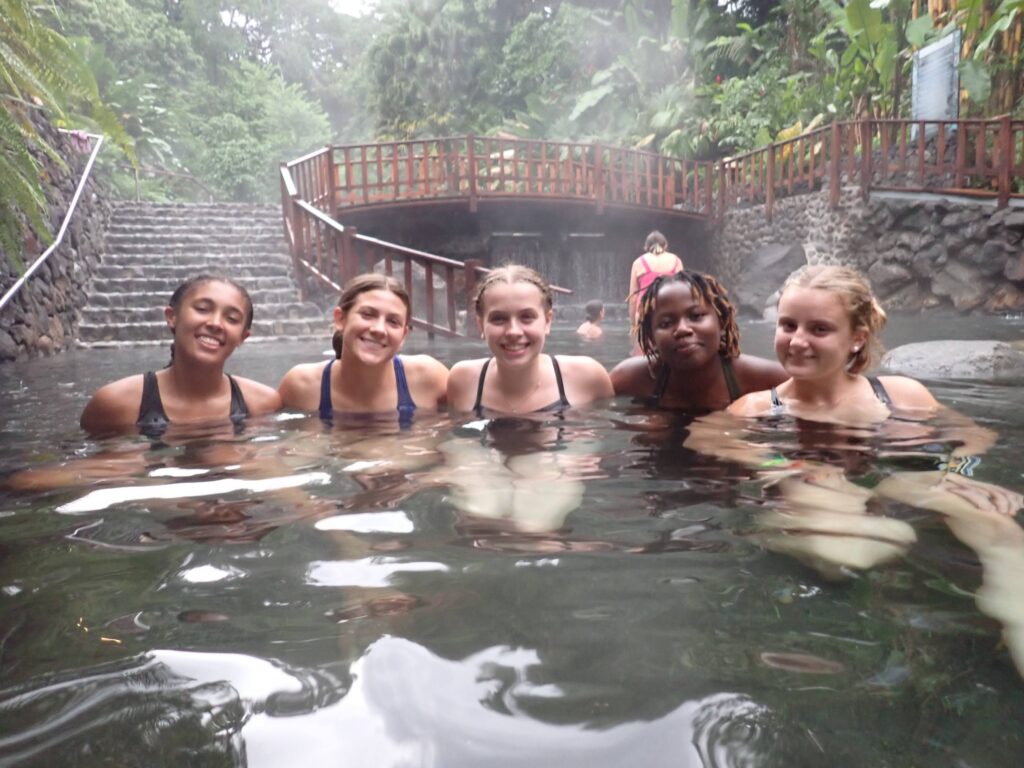
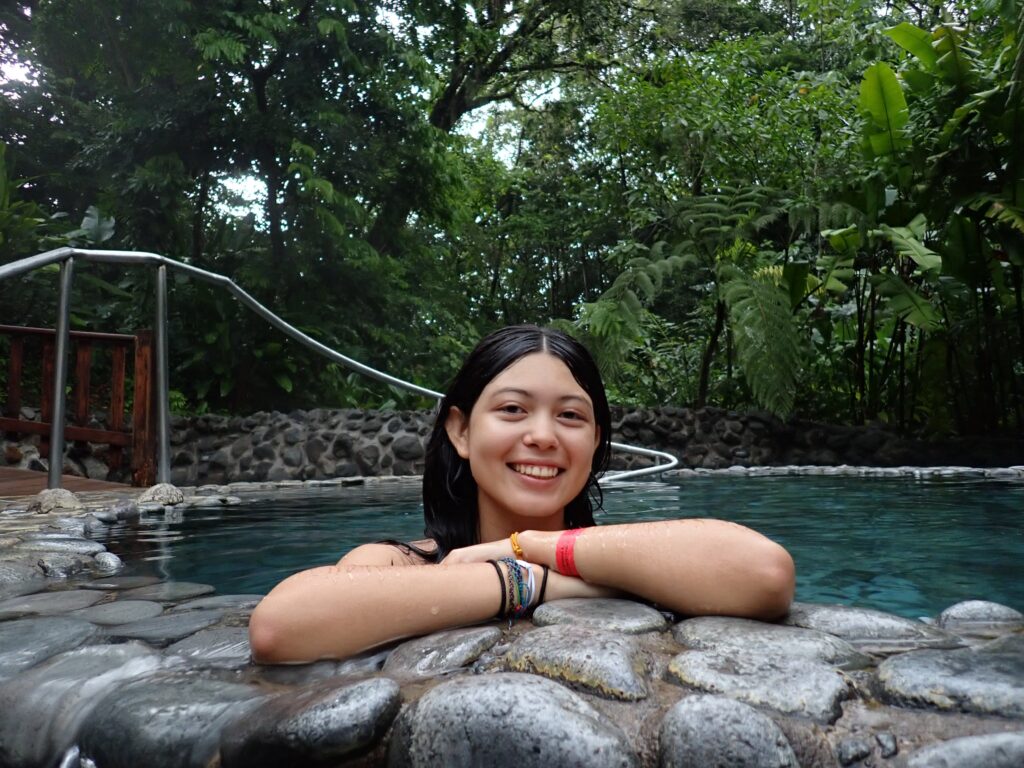
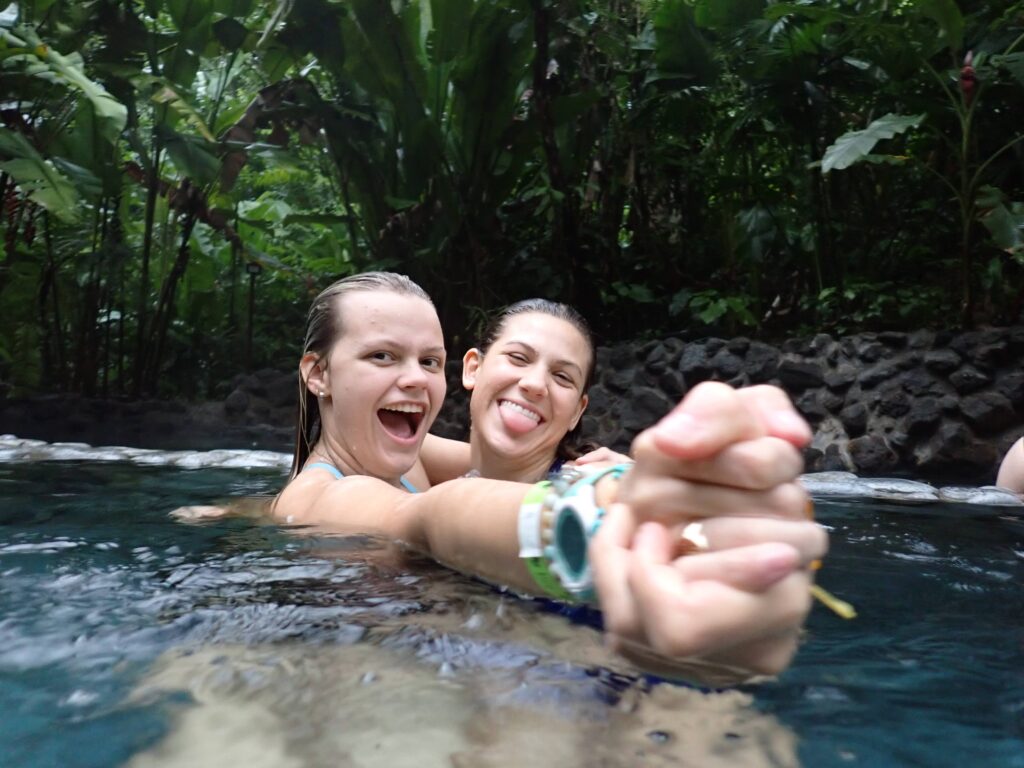
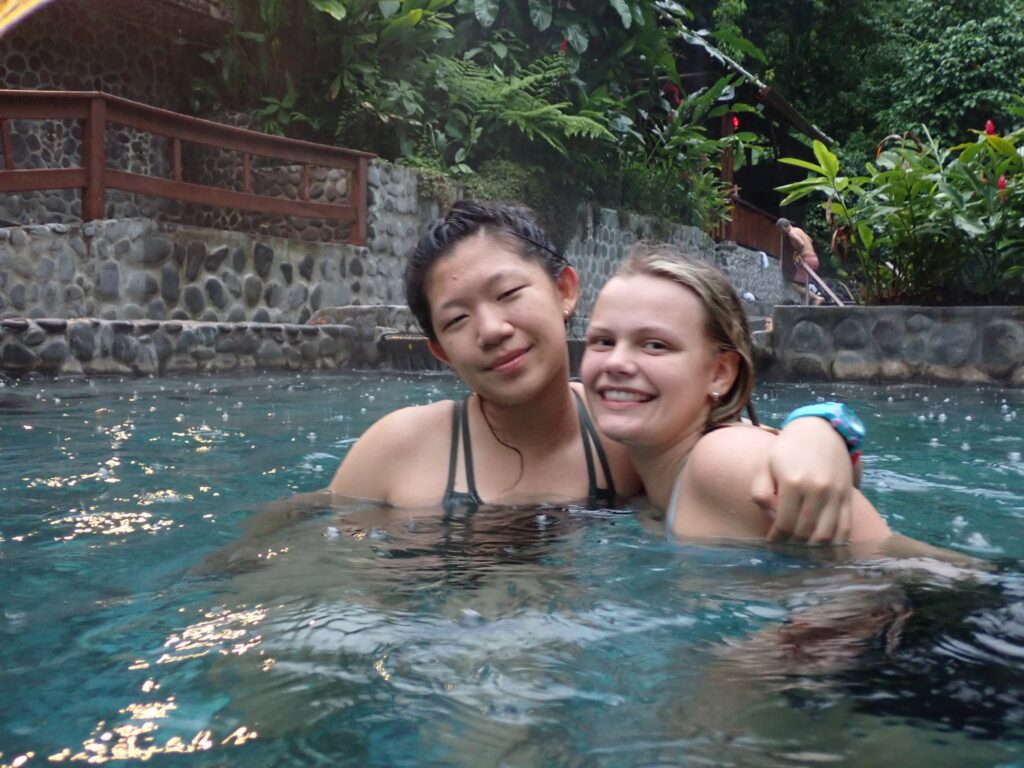
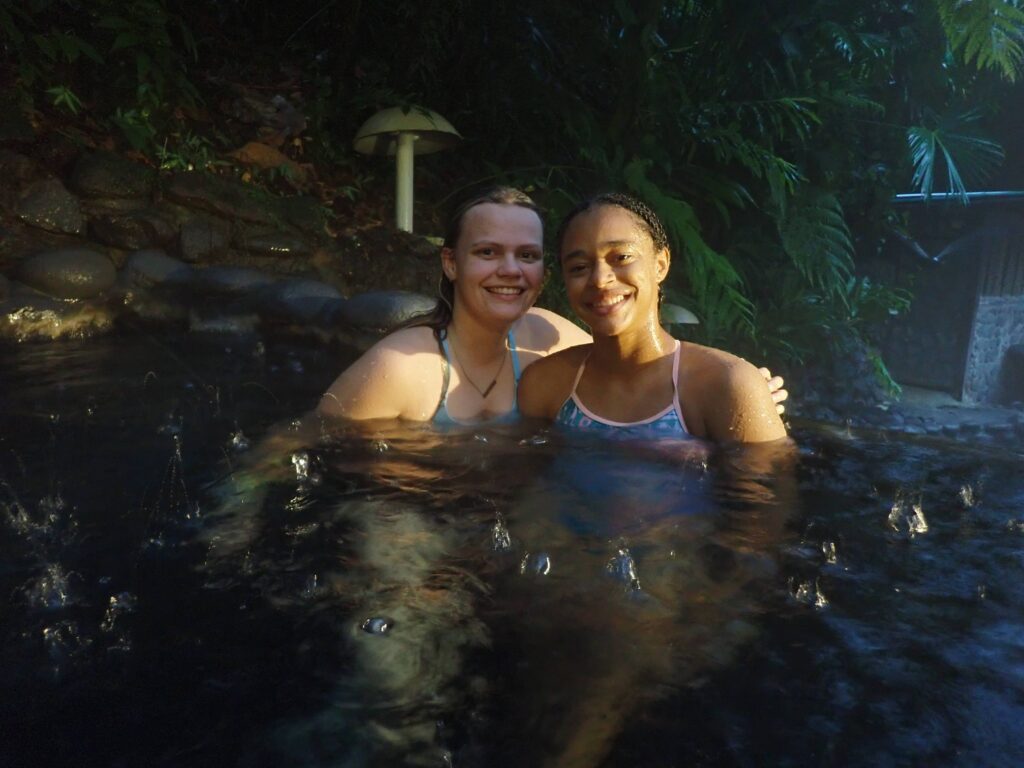
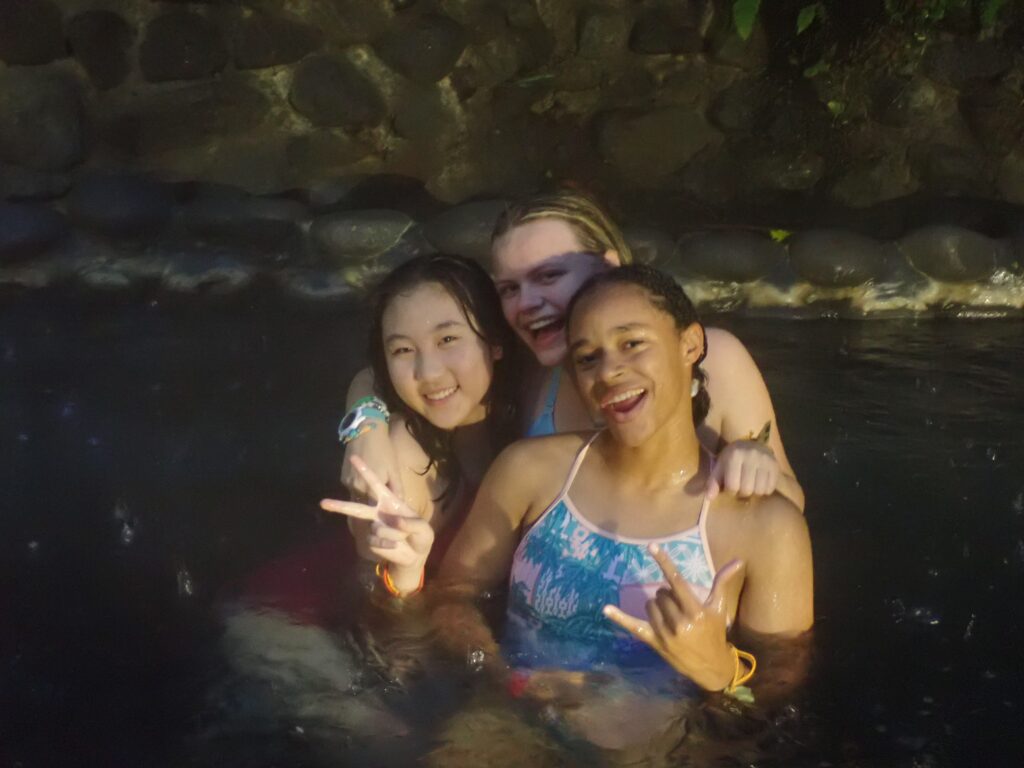
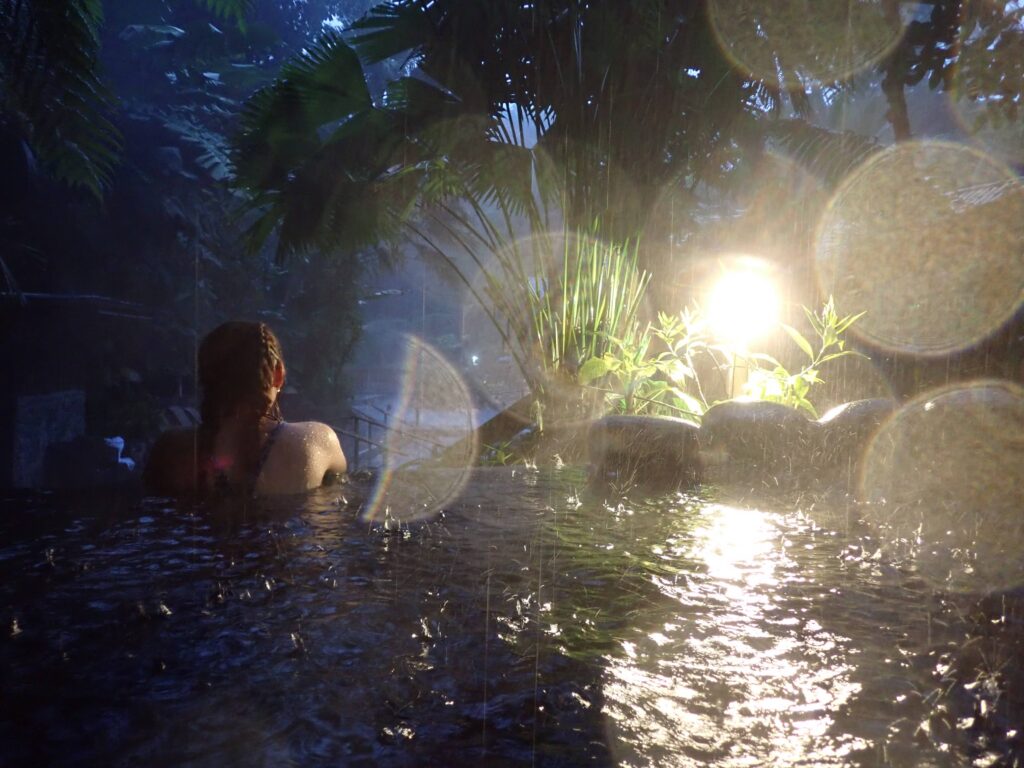
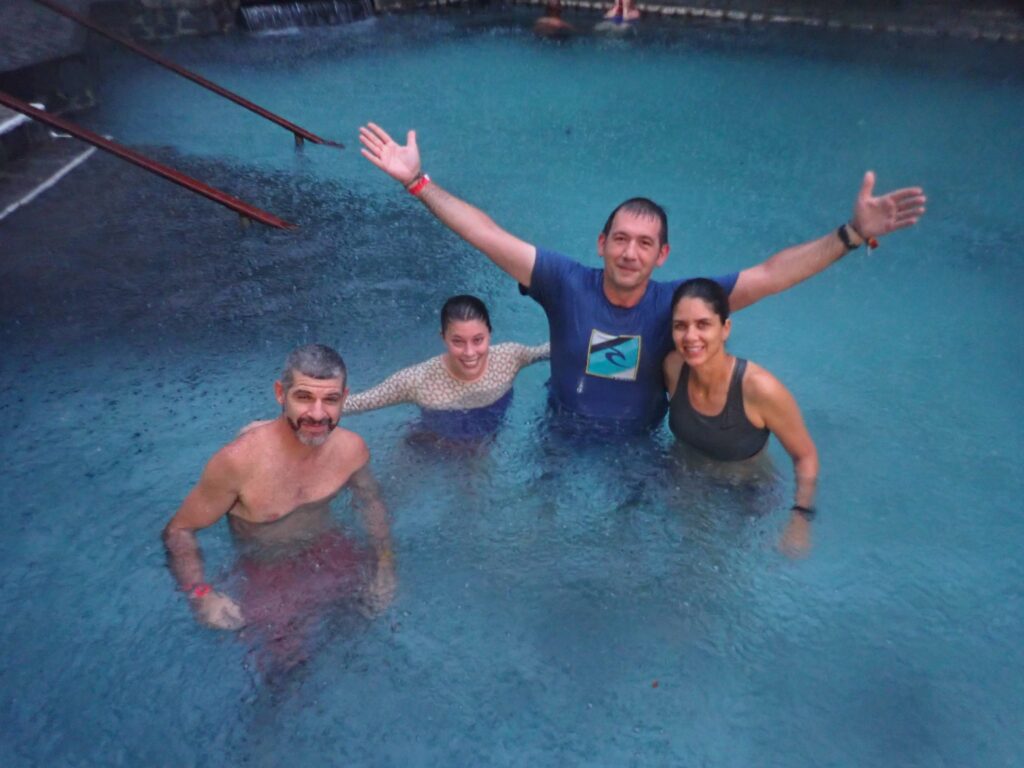
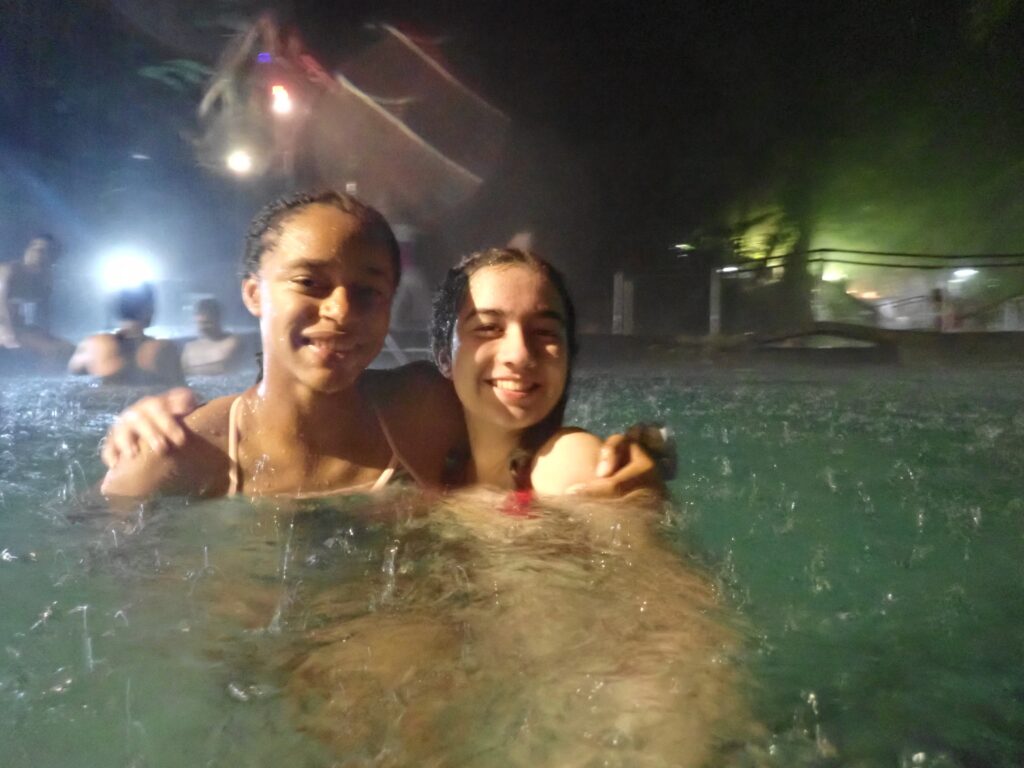
While getting drenched in tropical rainforest style, we sipped on tropical smoothies in the hot pools! After drying off, it was time for a scrumptious all-you-can-eat buffet-style dinner. To end the day, we were all tired and listened to some calming music while we slept on our bus ride back. Although, some of us fell asleep in the restaurant (Sammy). We arrived back at Chilamate around 9:30 and went straight to bed. We all had a phenomenal tourist day! Hasta luego!
#puravida! 🤙
Con mucho amor,
Arianita, Carolinita, Sammita, Zarita
October 6, 2023
Student Author: Kinley
Today, my group went to Bijagual where we measured the height, diameter, and light intensity of trees compared to the data taken in 2017. Our trip there was filled with some unprecedented challenges such as our bus breaking down, taking many wrong turns, and random bathroom stops along the way. However, we persevered, and it made for funny experiences and positive memories that will last a lifetime. While at Bijagual we learned about the lead researcher’s passion for ecology and niche interest in the various types of trees present in the Costa Rican rainforest. The work that we did provides information that can be used to develop ways to help groups become carbon neutral and determine how global changes and weather patterns like El Nino affect the species of trees that grow in the rainforest.
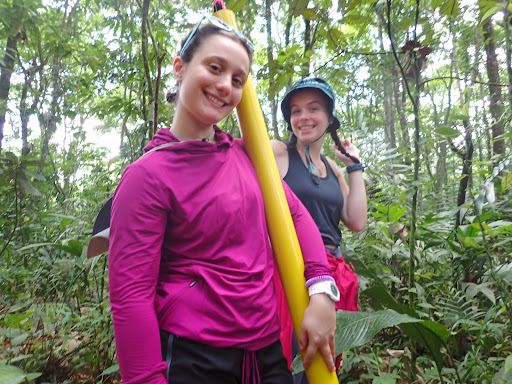
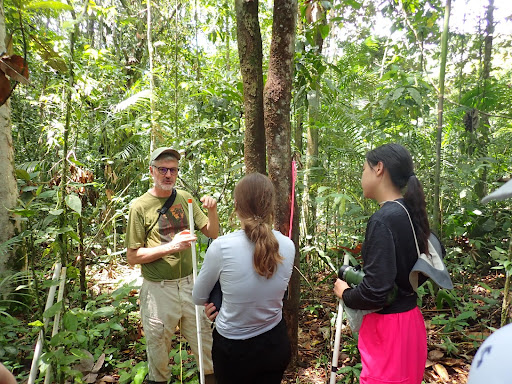
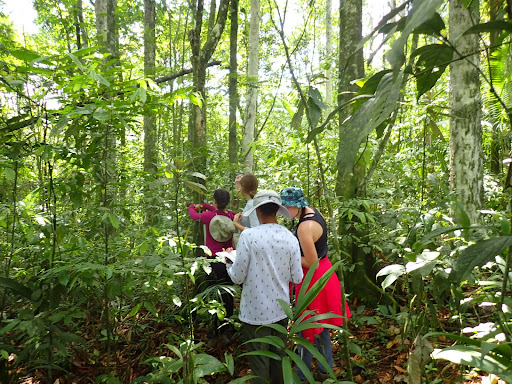
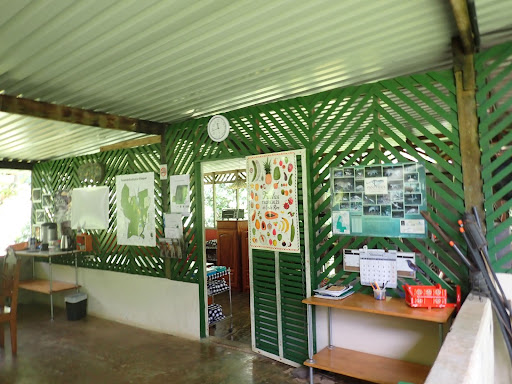
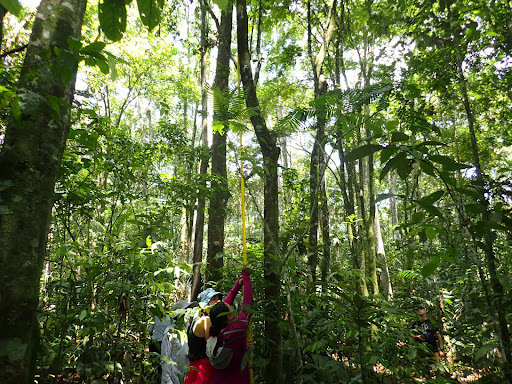
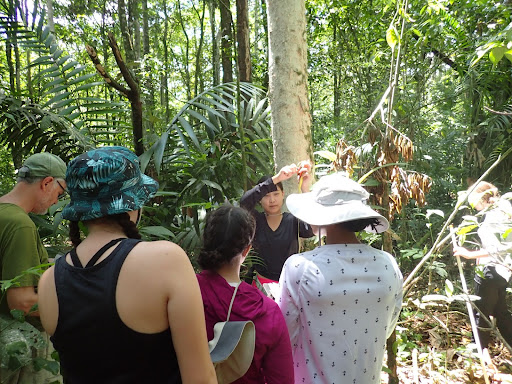
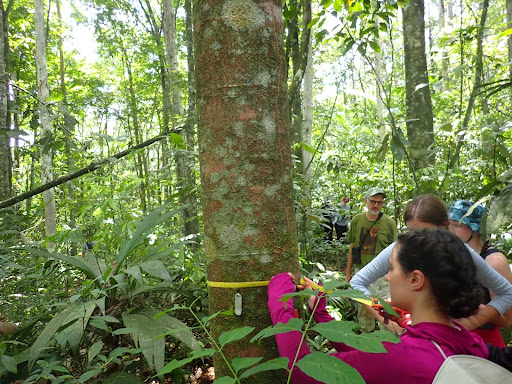
Student Author: Wei
Today, Group 2 went to Tirimbina and saw butterflies. After a short bus ride, we met our guides, Mariella and Christian. We held butterflies that were caught in traps. Rotten banana purée was placed on the bottom of the traps, and the alcohol produced in the fermentation process lured the butterflies in, and the net prevented them from flying away. We were able to determine the species and gender of the butterflies from their wings, legs, and abdomen. One butterfly stood on Ariana’s face and started drinking her sweat. For lunch, we had rice, lentils, and corn. We played Telestrations to pass the time afterward and got ready for our next activity.
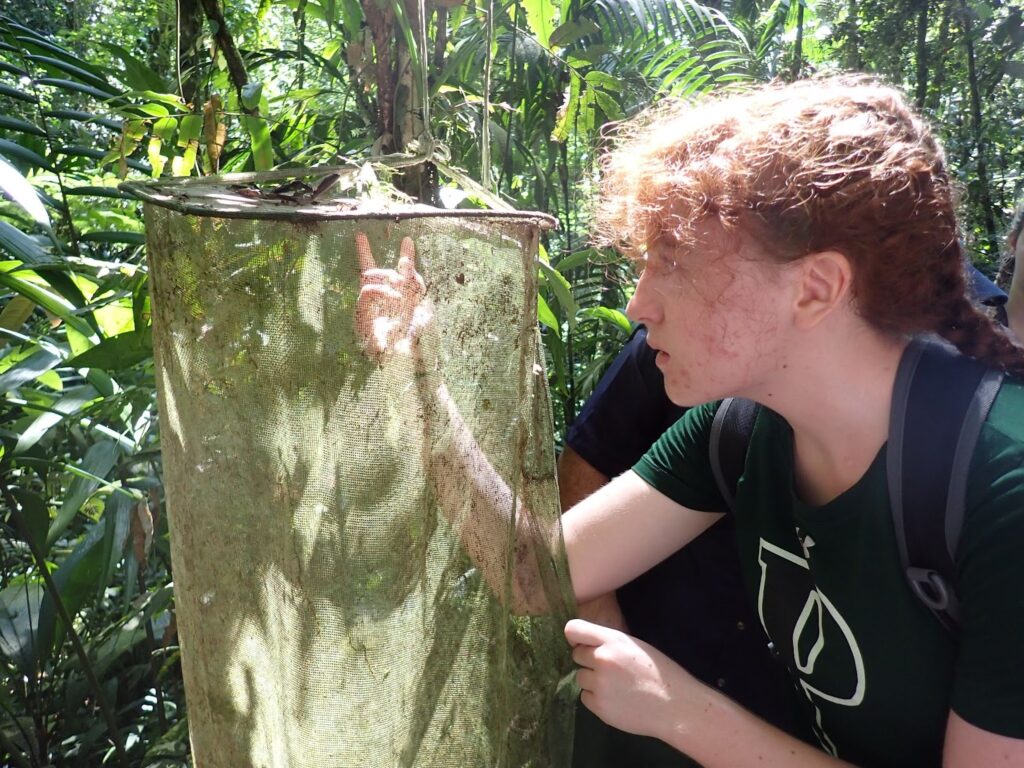
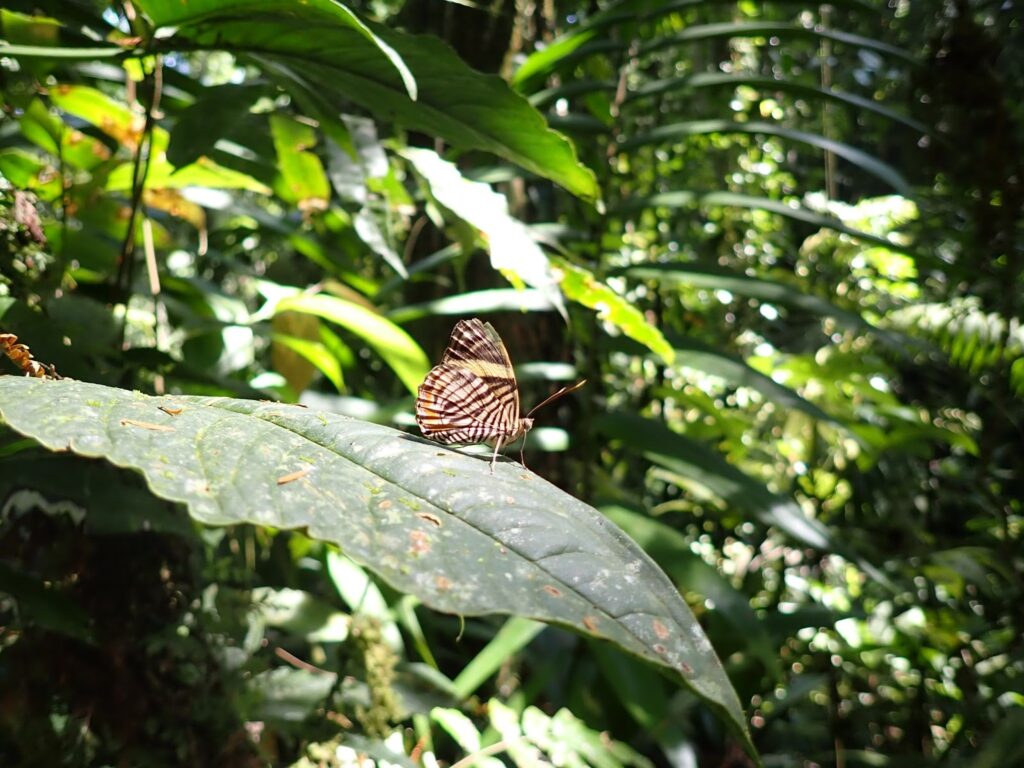
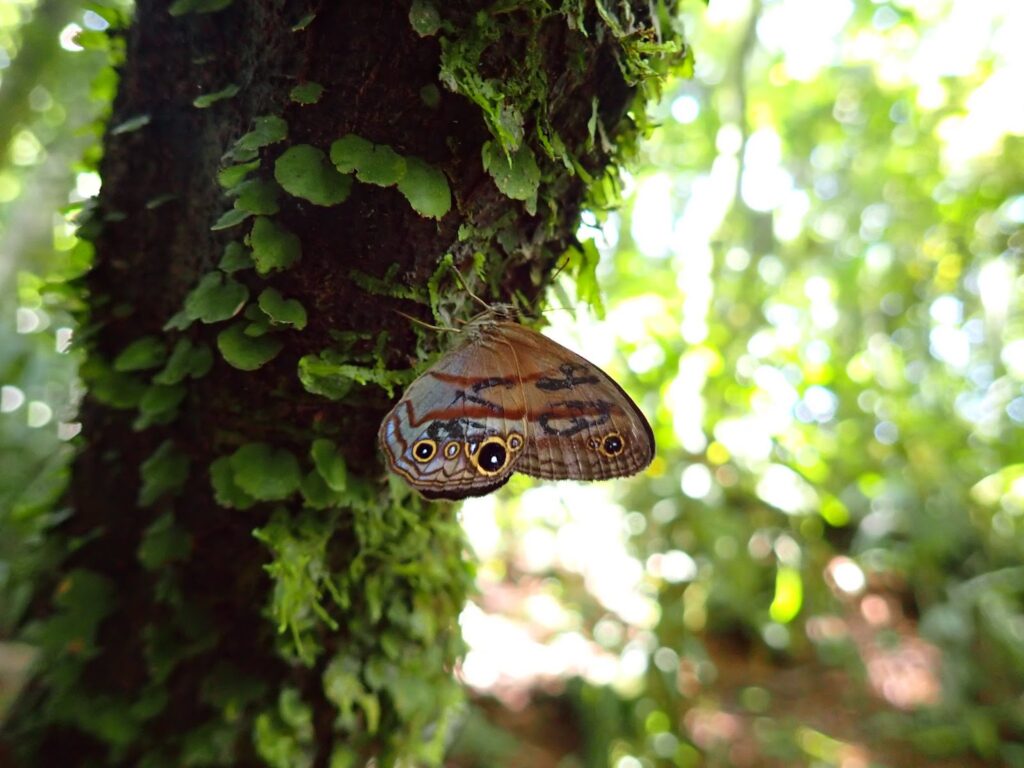
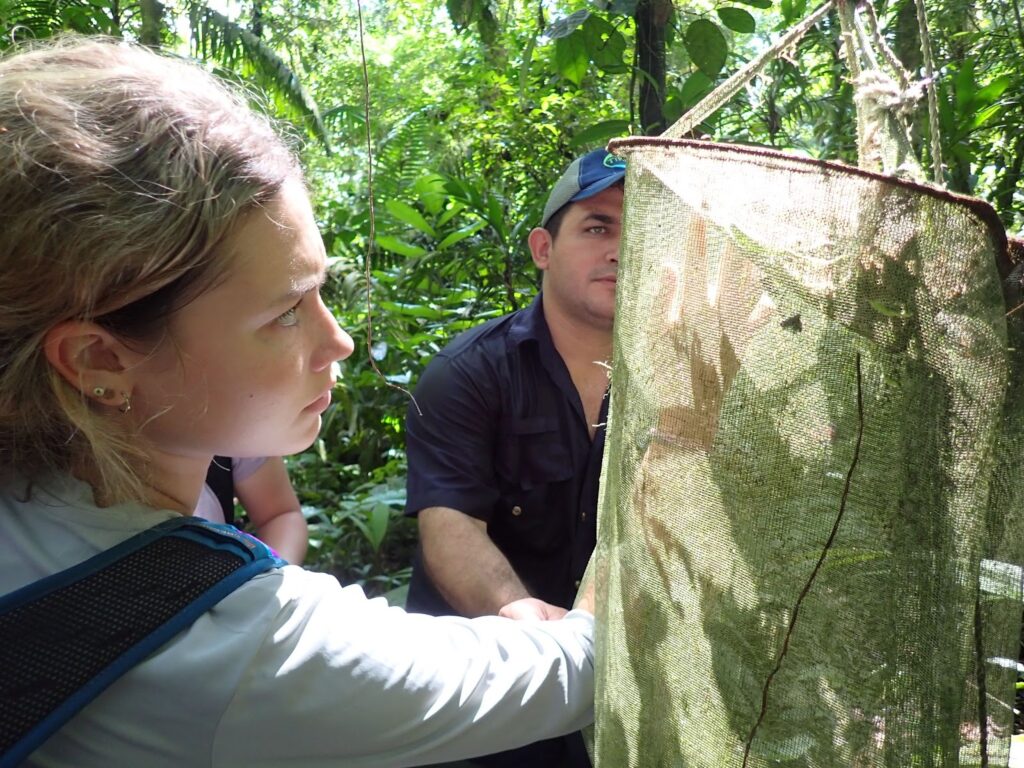
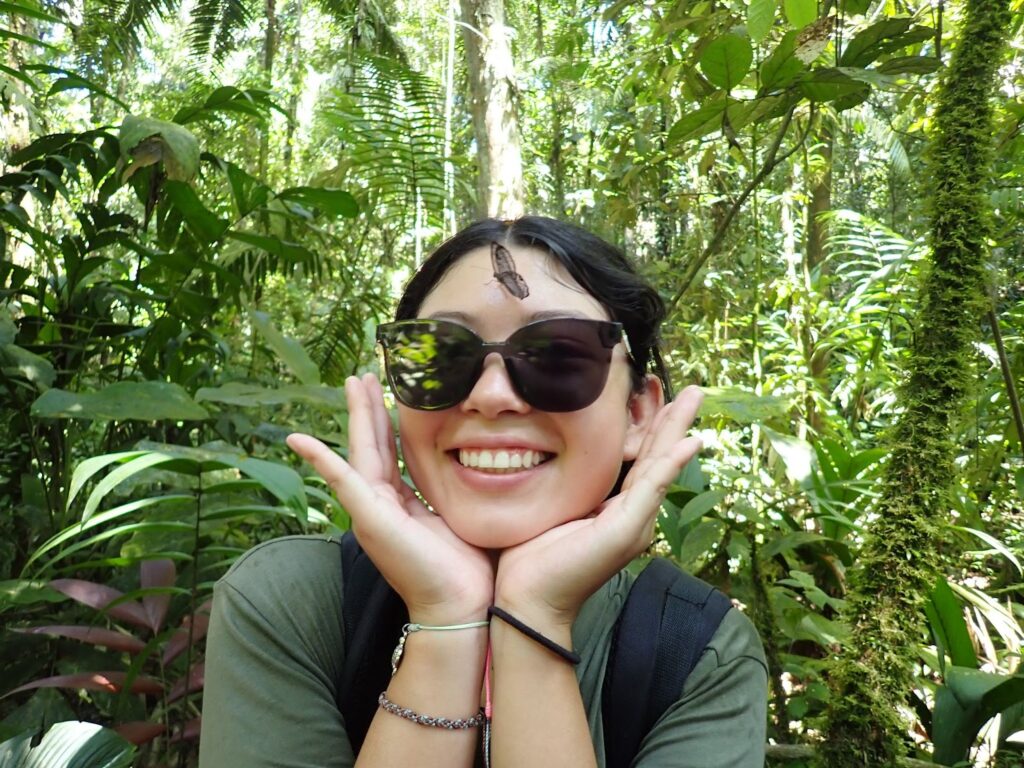
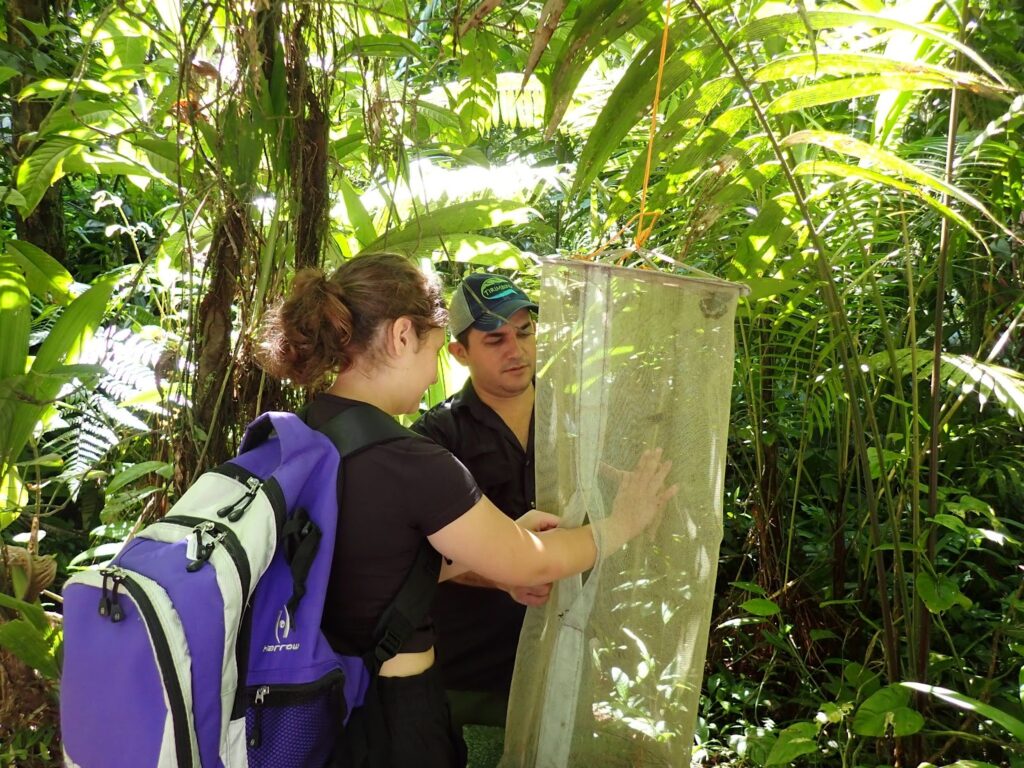
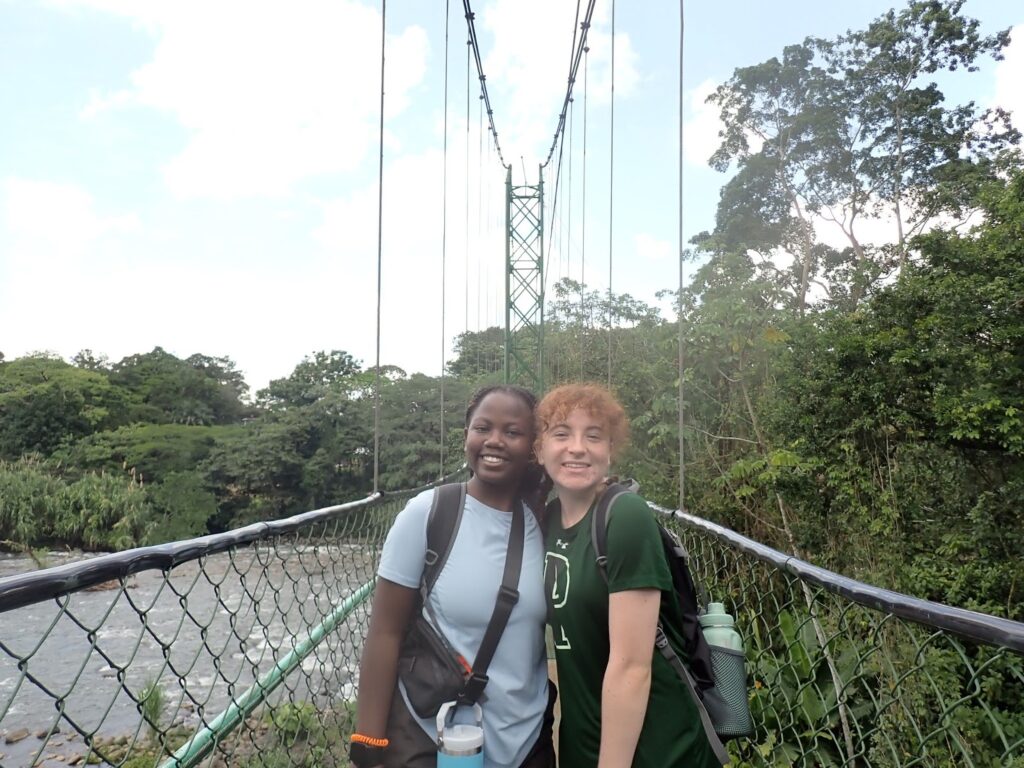
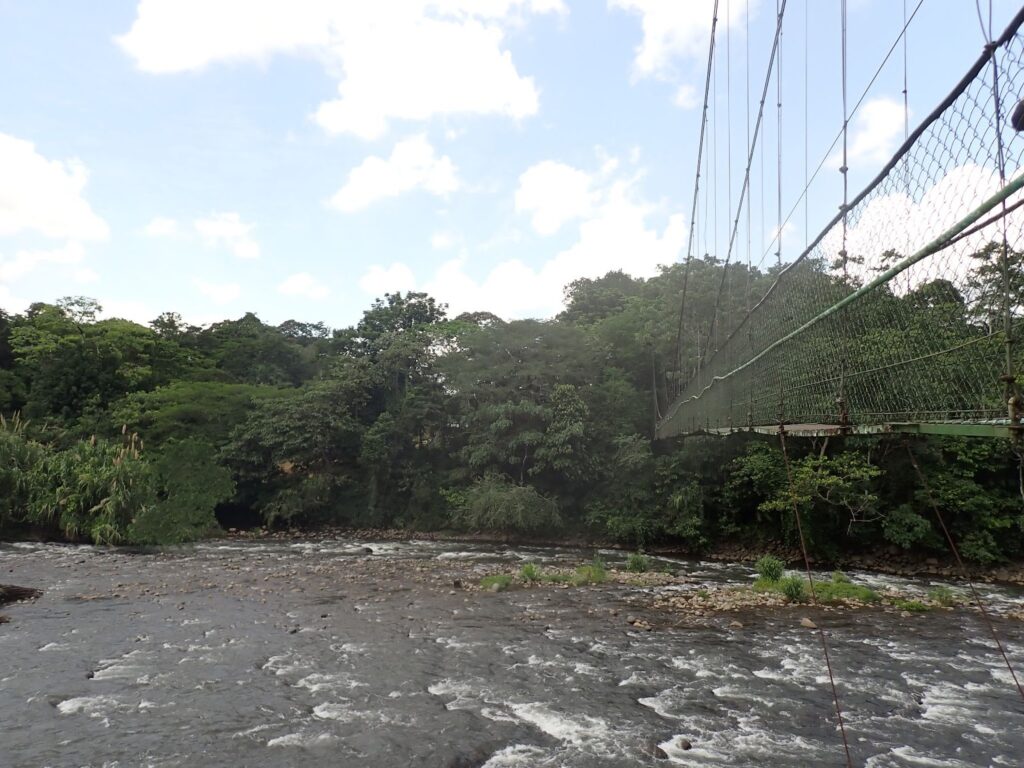
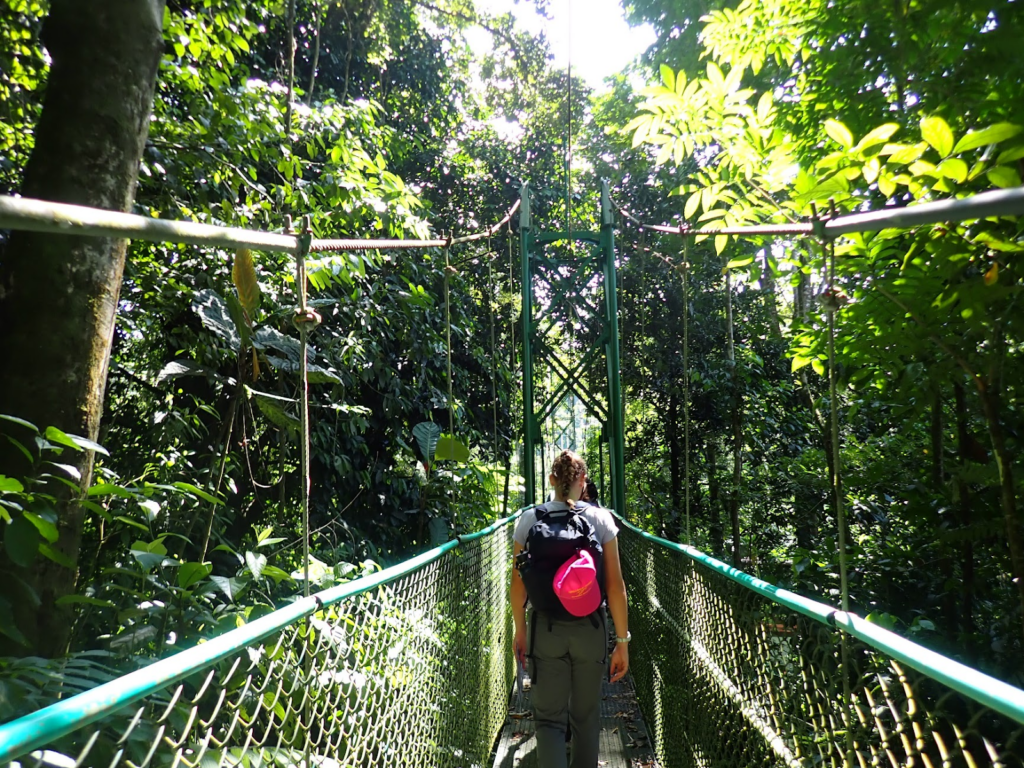
Student Author: Lily
Today, group one went to Lapa Verde! We started with a presentation by the one and only John. We learned about the conservation efforts and history of the reserve and what types of animals we could expect to see during the day. We then went on a short walk to set up a new camera trap which we decided to put on a tree near a small pond. Next, we began our two-hour walk/hike to the bird-watching tower. The first part of the walk was fairly flat, and we got to see two different frogs, the blue jeans frog, and the green/black poison dart frog. Soon after that, we saw a snake. Because our tour guide John loves snakes, as soon as he spotted one, he yelled “SNAKE” and dove to the ground to catch it. We all got a good laugh out of that and took turns holding the snake, which was about three feet long. Lauren, who’s scared of snakes, overcame her fear and touched it, which we were all so proud of her for. We continued on our hike, which got really steep at the top. We were all out of breath and dripping with sweat but we continued until we reached the top. After a short break to catch our breath, half of the group climbed the stairs of the tower and observed all the birds in the area. I went up in the second group and had a great time talking with Anna G and relaxing in the sun. We eventually climbed down after taking tons of cute photos at the top of the tower. We hiked back down, all looking forward to eating a great lunch at the bottom. We were served a delicious meal of arroz con pollo (rice with chicken), which we all devoured. We had an extra hour before heading to the chocolate tour, so we played tons of games to pass the time. Sammy and I also swapped legs on our zip-off hiking pants because we’re fashion icons. Our day at Lapa Verde was amazing, and I know we’re all super excited to go back on Sunday!





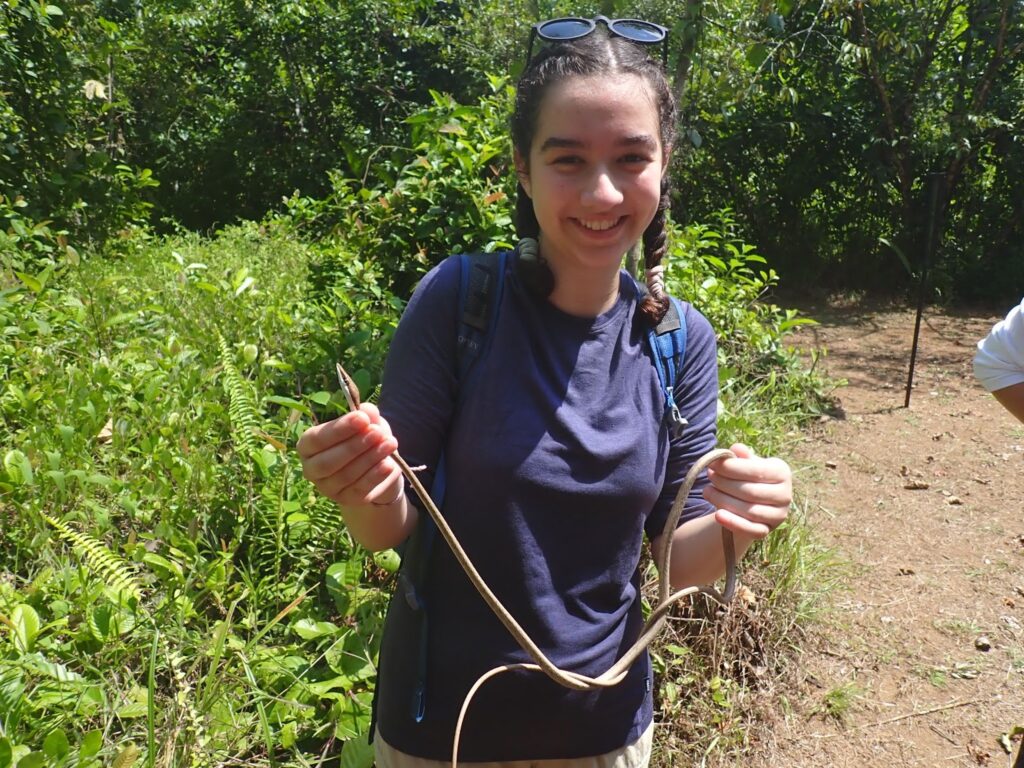
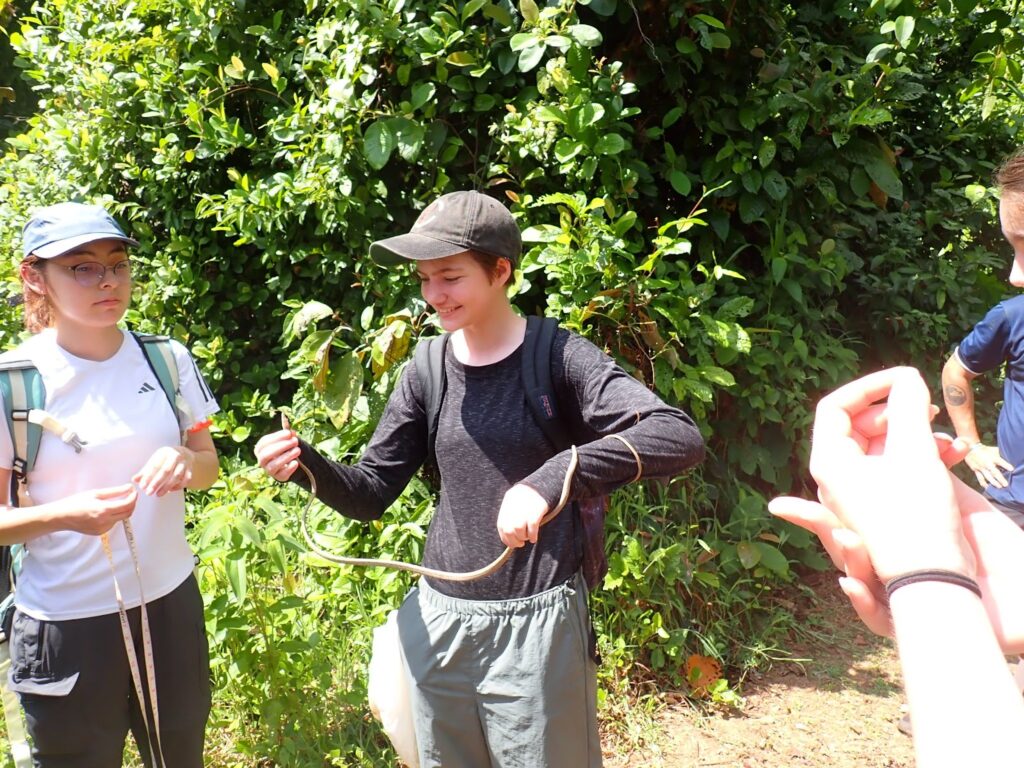
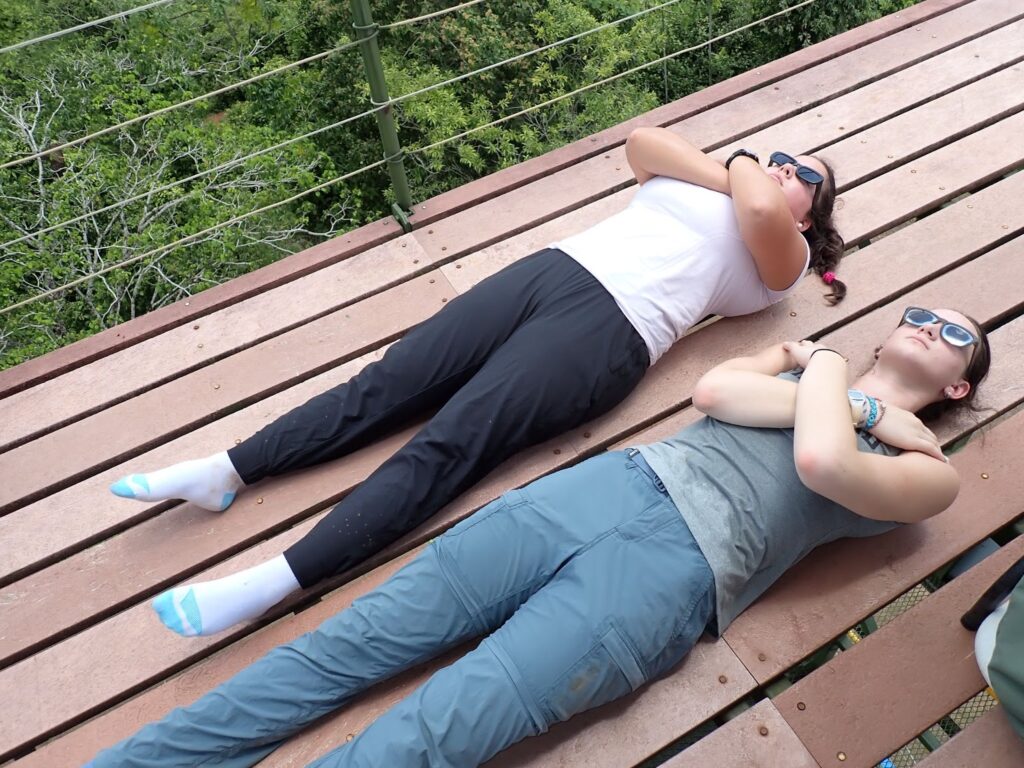


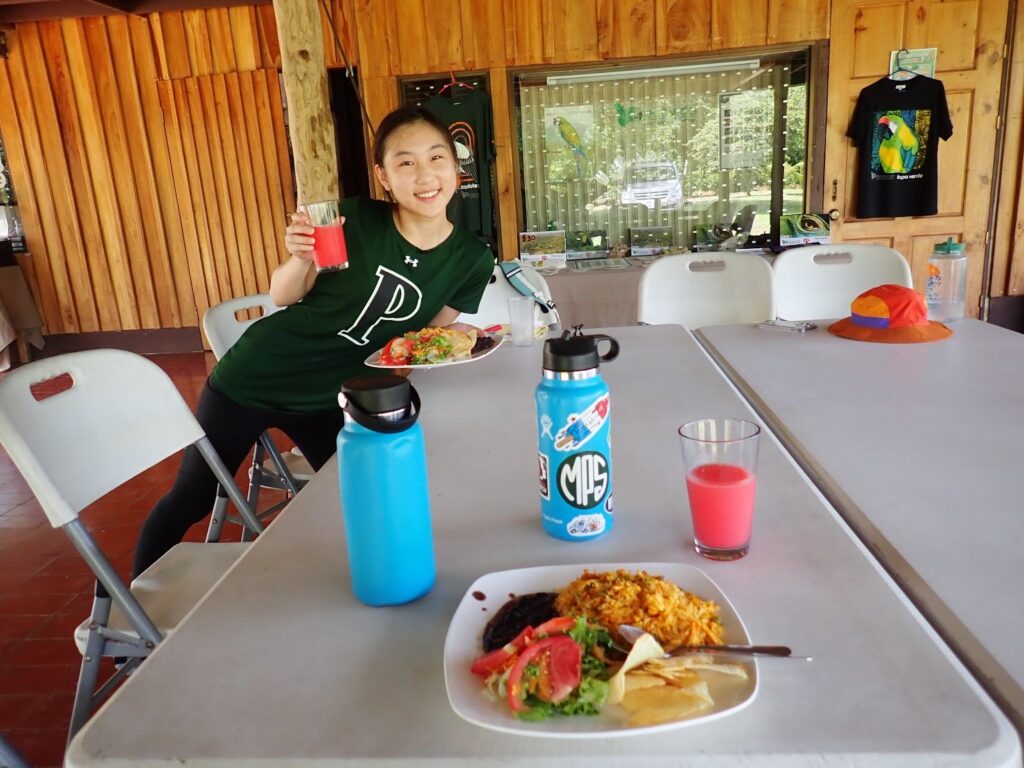
Chocolate Tour
We took a short three-minute van ride to the chocolate tour, where we were joined by half of group two. We met our tour guide, Jeiner, and learned a little about the history of how cacao plants were discovered and how chocolate was first made and popularized. We learned about all the steps of production, from picking the fruits to making the bars. We got to participate by grinding the cacao beans and tasting them at all steps of the production process. We got to have hot chocolate, which we learned used to be called “the drink of the gods,” and we tasted lots of different types of chocolates with varying cocoa percentages. At the end of the tour, we heard a really inspirational speech by Jeiner about the importance of conservation that almost brought lots of us to tears. On our way out, we stopped at the gift shop, where there were lots of people picking up gifts for friends and family back home. I think I speak for the whole group when I say we all gained a deeper appreciation for chocolate and also all left with a little bit of a stomach ache from having so much delicious chocolate.
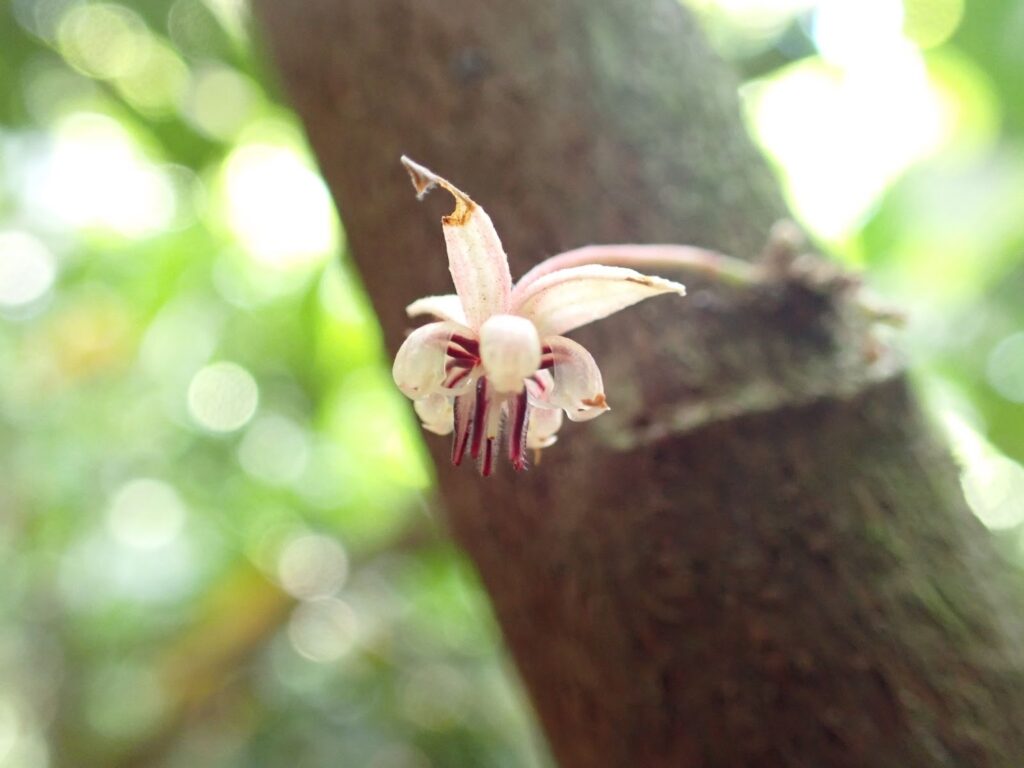
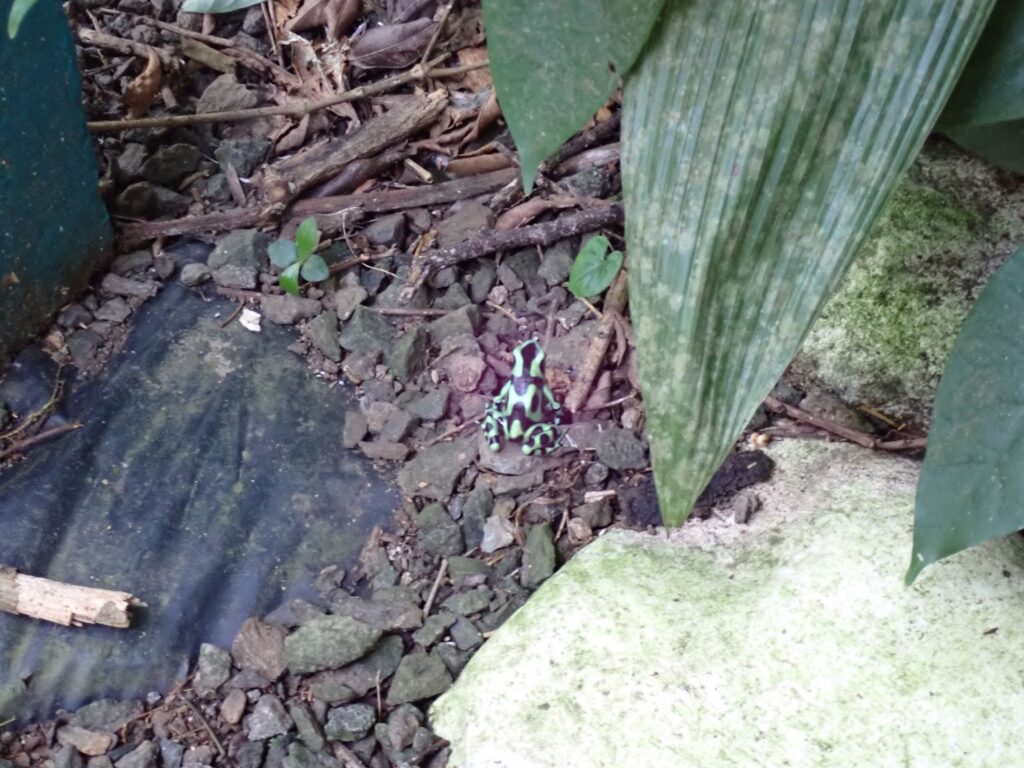
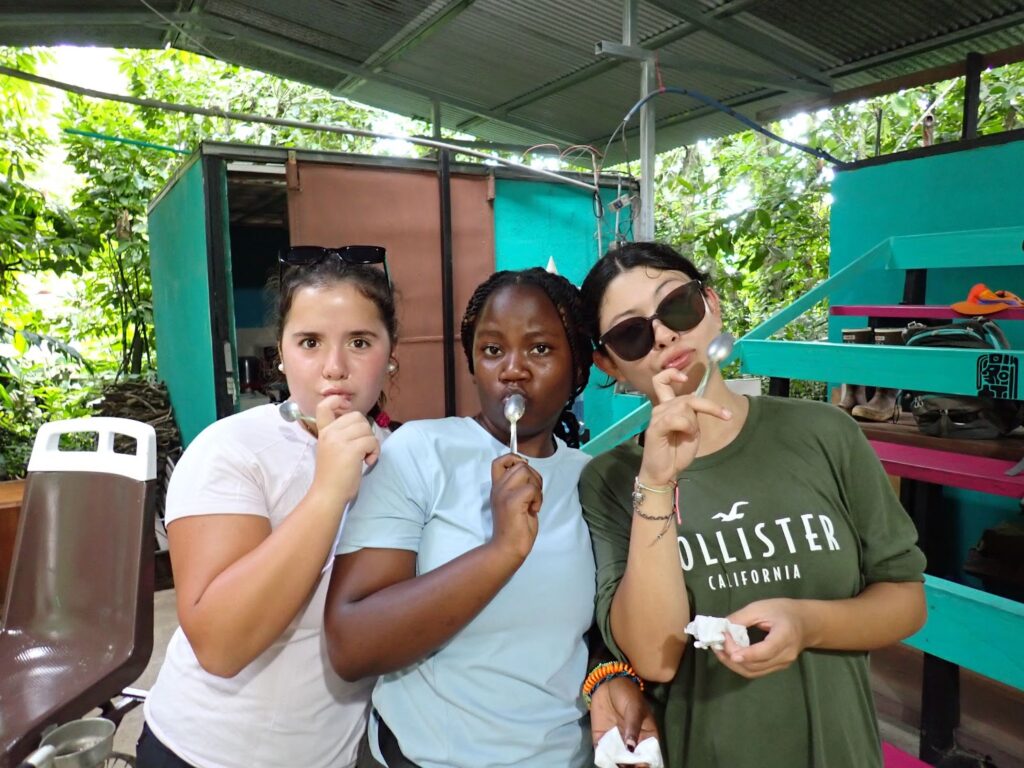
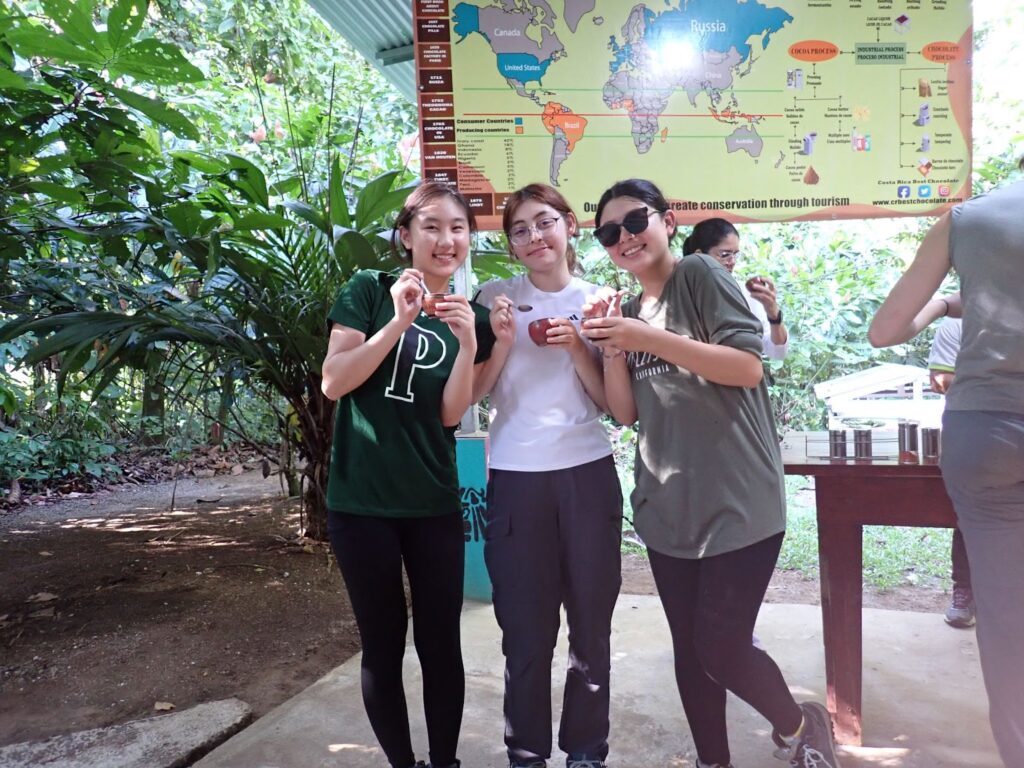
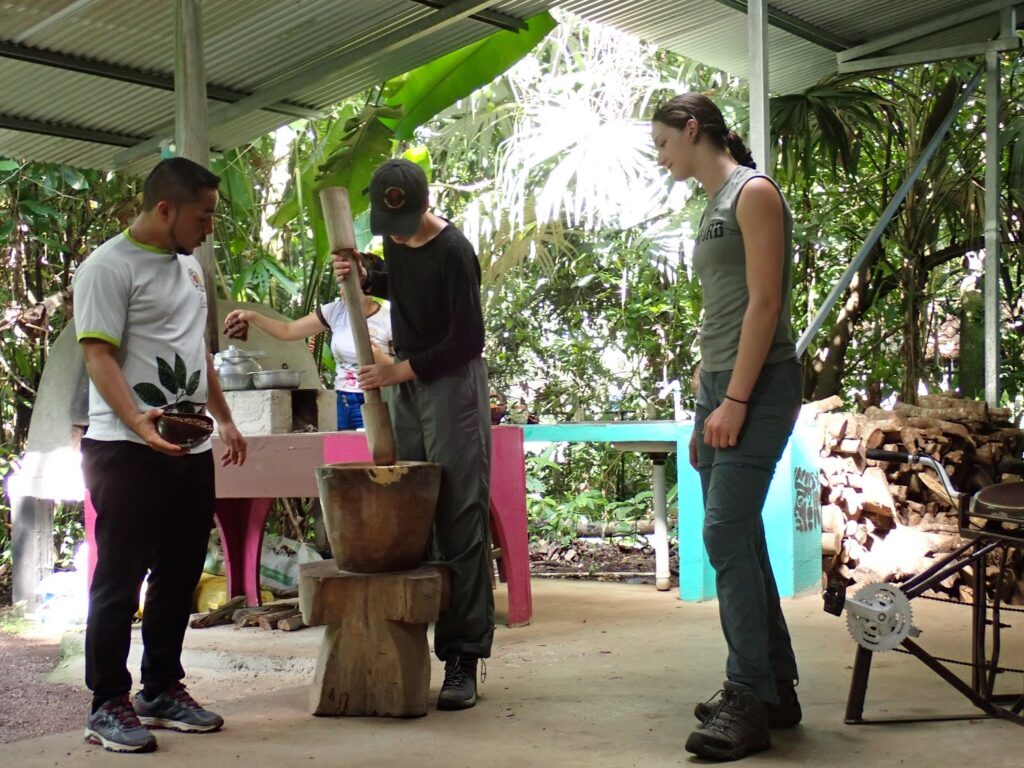
Organic Farm
Content warning: trauma and animal death
On our ride to the organic farm, we stopped by a pineapple plantation to see the extent of the monocropping and observed the sweltering heat the workers had to work in. When we got to the farm, we were greeted by Daniel and his grandson Josué, who became best friends with Vic. We started our tour of the farm by feeding the pigs leaves and discussing their role in the farm, particularly in compost. Following this, we dove deeper into the compost ingredients: ash, coffee grinds, wood shavings, and dried manure. We then learned about the Californian worms that helped create fresh soil and the forest fungus that aids in decomposition and providing nutrients. Next, we ate the fresh peppers growing on the vines and observed the vanilla beans while learning about the plant’s living conditions and its origins. We then relocated cacao trees to better spots and enjoyed the cacao seeds. Finally, we gathered in Daniel’s home, eating fresh empanadas, arepas, and drinking agua dulce while listening to Daniel’s heartfelt life story. He originally worked at a pineapple plantation and had the job of clearing out forests and spraying pesticides. These working conditions were very hazardous and mentally damaging. A pivotal moment in Daniel’s career working on the plantation was when he was clearing the forests, destroying everything in his path, and burning animals, dead or alive. One day, while clearing the forests, he saw a monkey hold his hands out as if he were pleading for Daniel to stop. However, Daniel’s boss was behind him, so he had no choice but to continue and kill the monkey as well as destroy its habitat. That moment still haunts Daniel to this day. Rather than dwelling on his past negative actions, Daniel used pain to motivate him to do the work he does today: uplifting his community while using sustainable practices to create organic products and educating the local community regarding the importance of protecting the environment. As we left the farm, Daniel and Josué waved goodbye while we thought about all that we had learned.
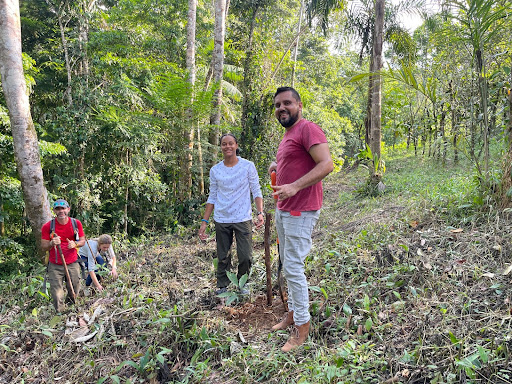
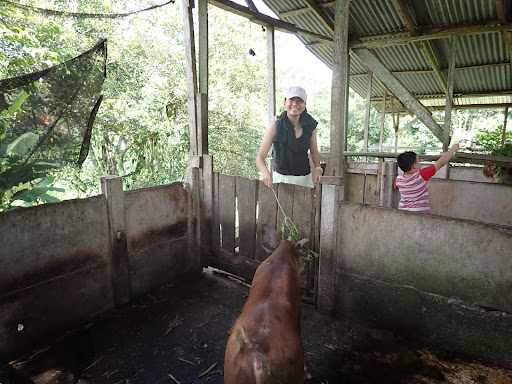
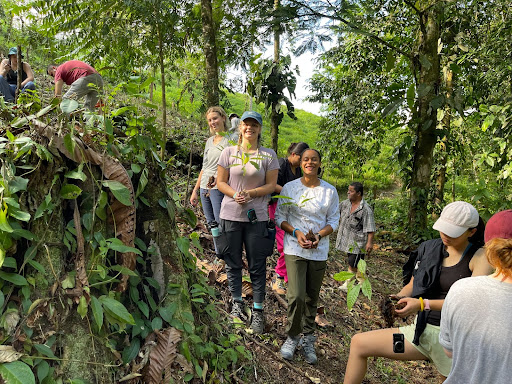
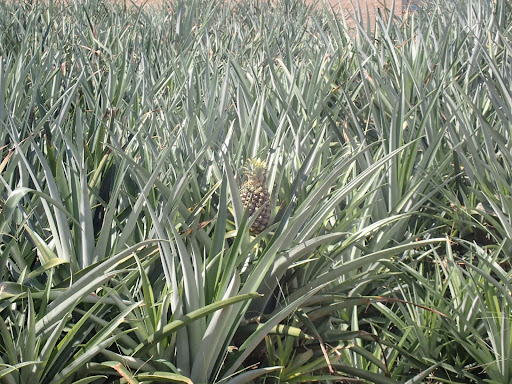
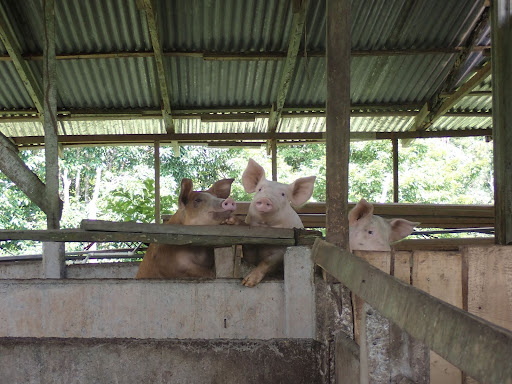
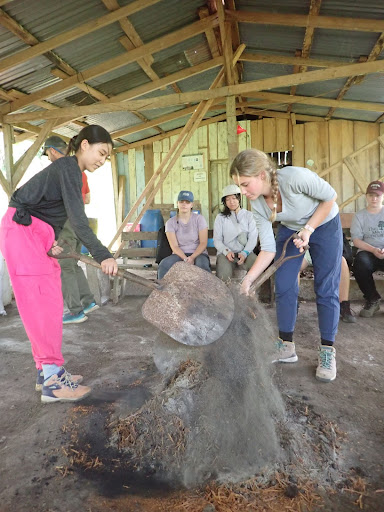
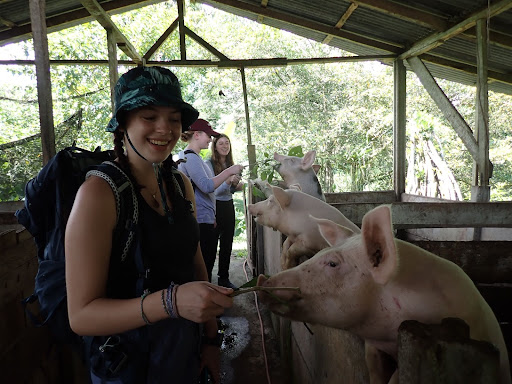
October 5, 2023
Student Authors: Sam, Charlotte, & Helen
On Tuesday, we arrived on Pacuare after a long bus ride and a beautiful boat ride through a canal where you could see crocodiles. Once we stepped onto the island, we ate a typical Costa Rican meal for lunch: rice and beans. We then were led to our rooms and unpacked for our visit. We split into two groups; one started disassembling the sea turtle nursery on the beach while the other group cleaned nets. Both activities, while unglamorous, were necessary for the turtle release that evening.
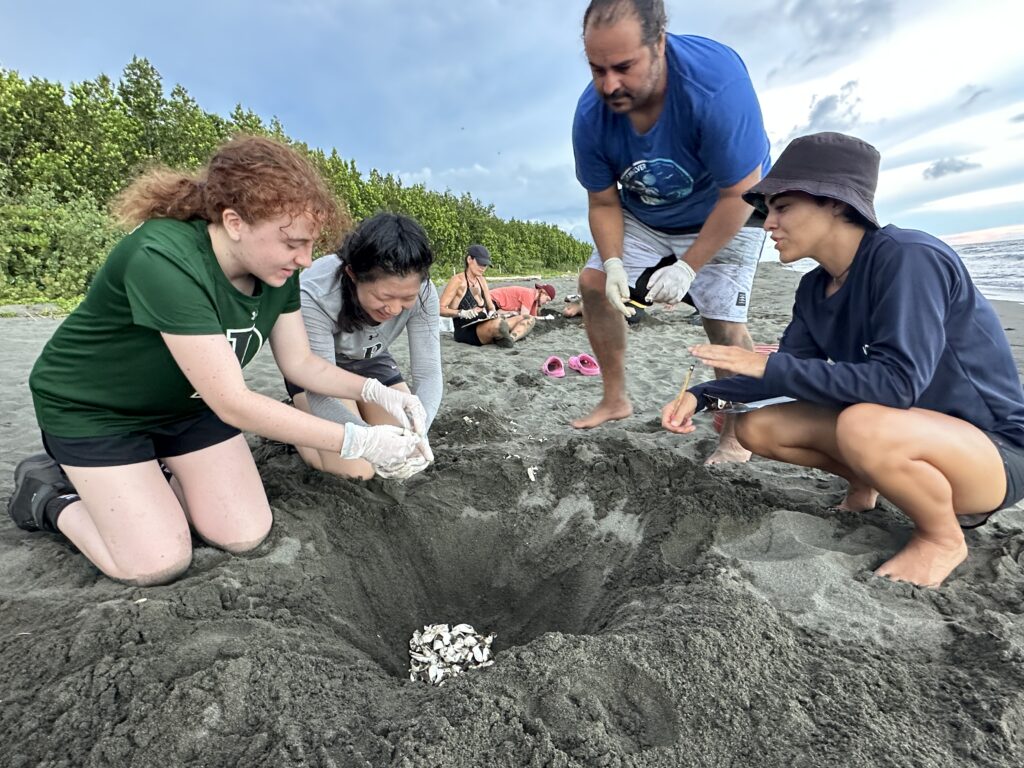
Afterward, we ate dinner and looked at the night sky, where individuals could spot the seven sisters and Taurus constellations. We once again split into groups by cabin. One group was on call in case of a baby turtle hatching while the other went on a night hike, seeing frogs, a baby crocodile, toads, spiders, and birds.
After an early morning wake-up from howler monkeys at 4:00 a.m., we devoured a yummy breakfast of pancakes, fruit, and cas juice. We then started our morning hike with a visit from capuchin monkeys and were lucky enough to capture their presence on video.
Once again, splitting into two groups, half of our class sorted trash found on the beach while the other group cleaned wood and plastic remains from the ocean side. After a grueling few hours under the hot sun, we experienced our second baby sea turtle release after an exhumation of turtles.
Dinner was another home-cooked meal made with love. That night, the evening activities were switched. On our third and final day, we awoke for an early sunrise sighting at 5:00 a.m. Packing our bags and heading to breakfast, some students were excited to return to the comfort of the Chilamate electricity!
October 2, 2023
Student Author: Alyx
¡Hola! In the morning, group one went straight back to Tirimbina, and we set about checking different butterfly traps. We went down a different trail than yesterday but still crossed the suspension bridge above the river. There were a lot more butterflies today and a lot less bullet ants; hooray! We practiced grabbing the butterflies from the net and then tried to guess if they were male or female. It was much harder than it seemed; we were mostly wrong. We learned that male butterflies have tiny hairs on their abdomen that they use to spread pheromones that attract female butterflies. We caught some butterflies that had fake eyes on their wings, to distract birds and we saw several Blue Morphos! We learned that the data that Tirimbina collects is compared with other butterfly centers in Peru and Ecuador.
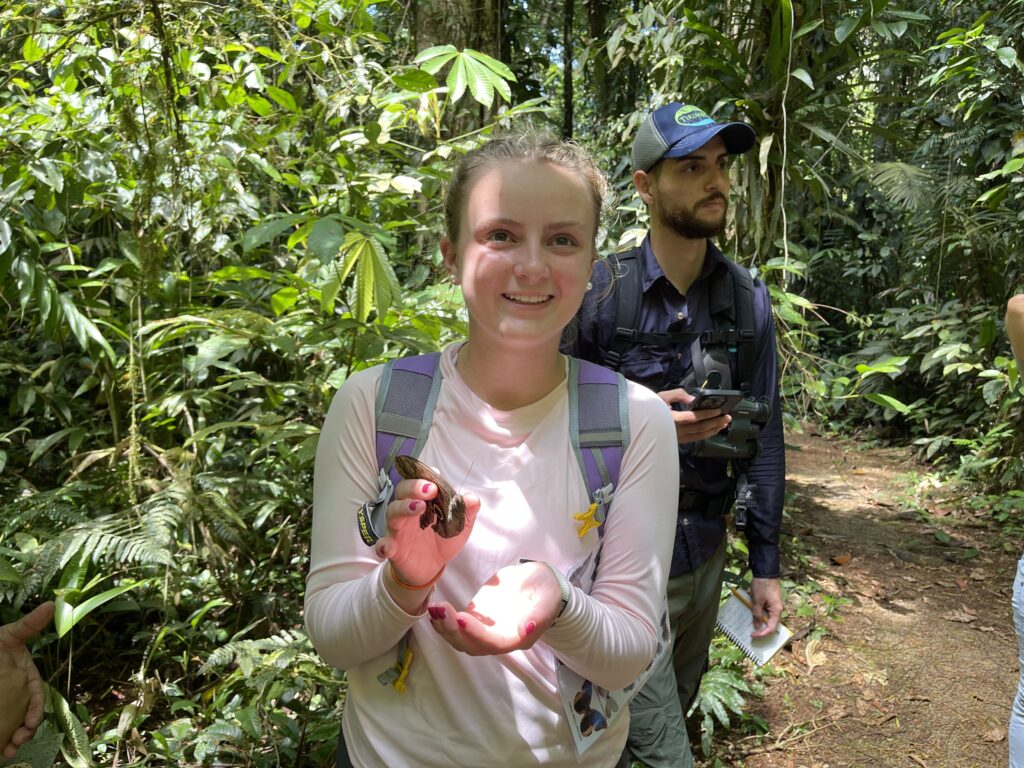
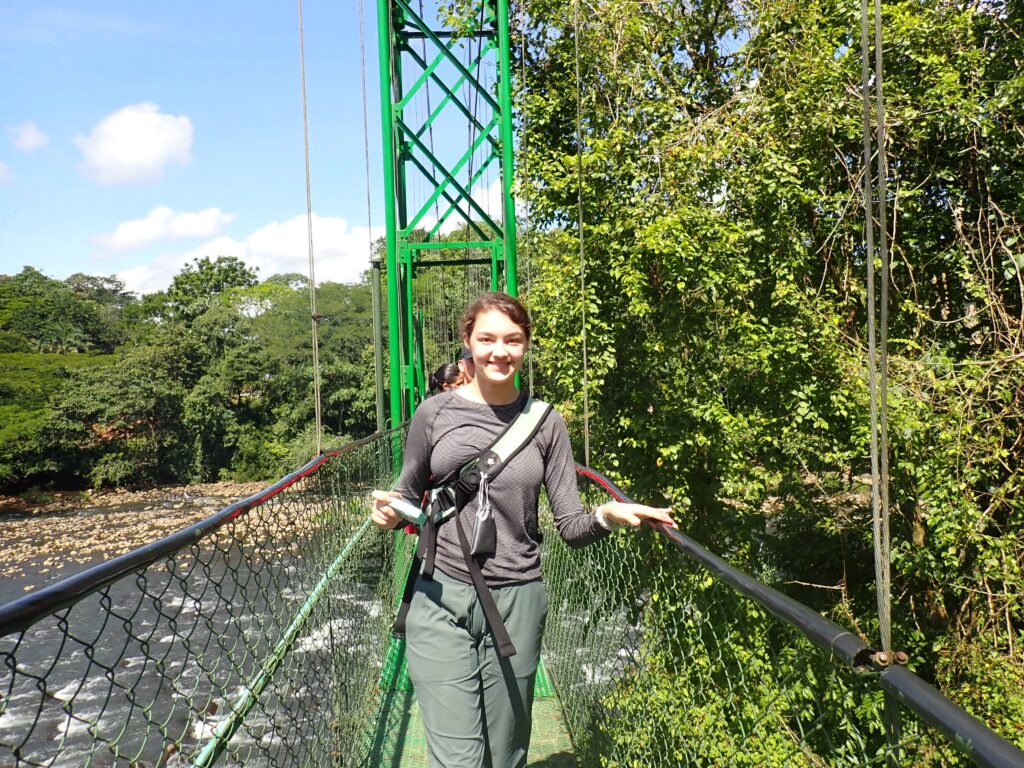
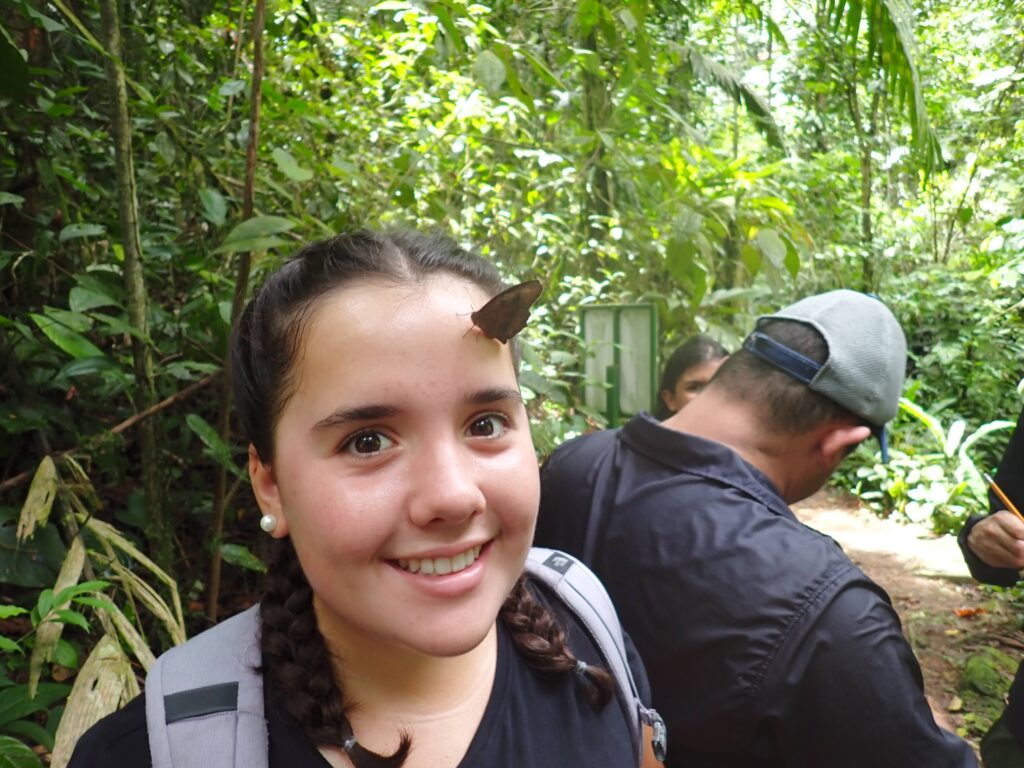
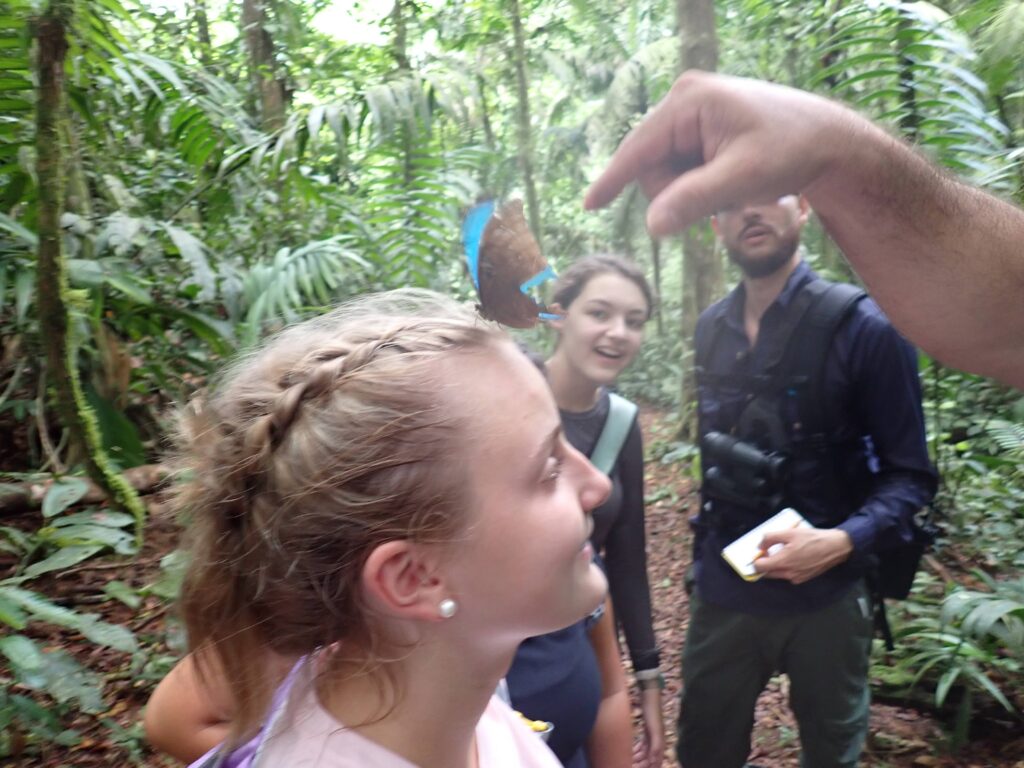
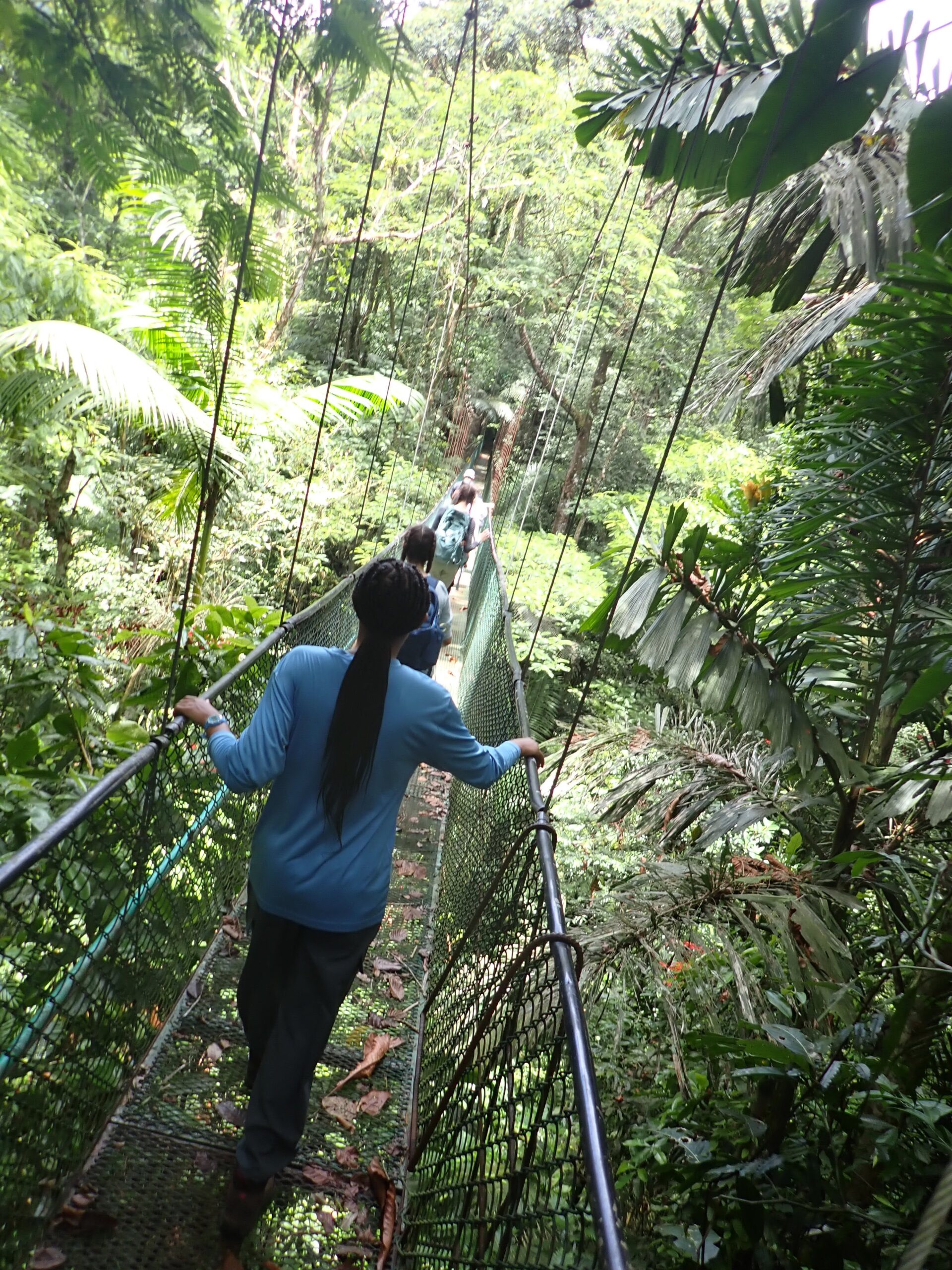
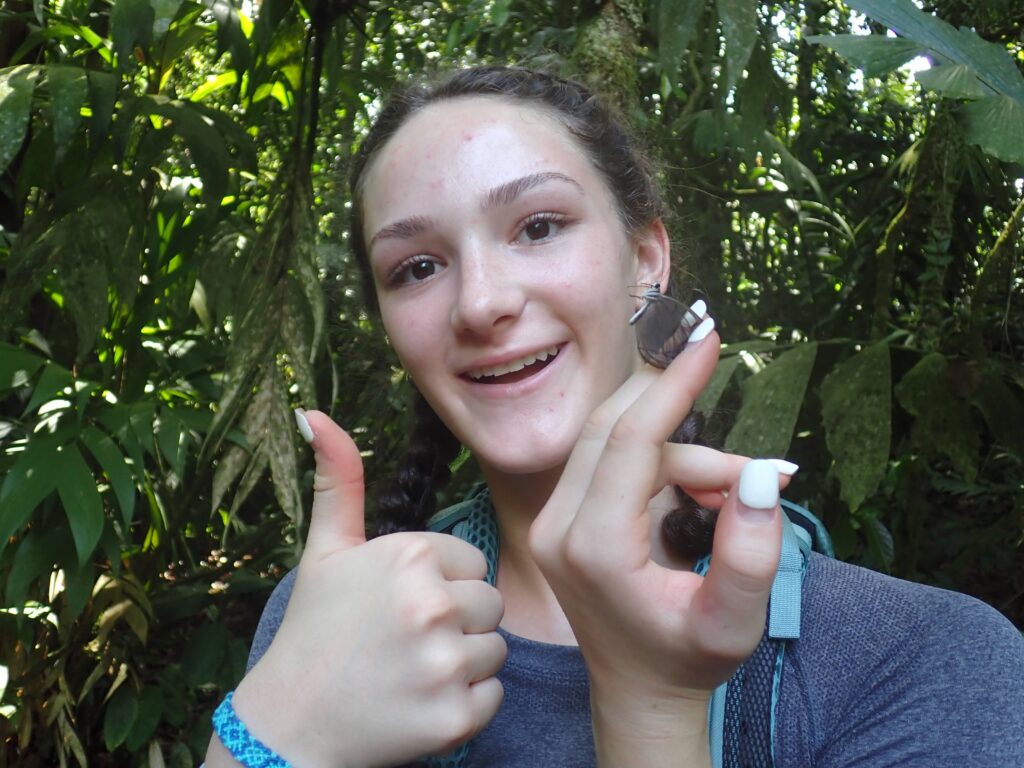
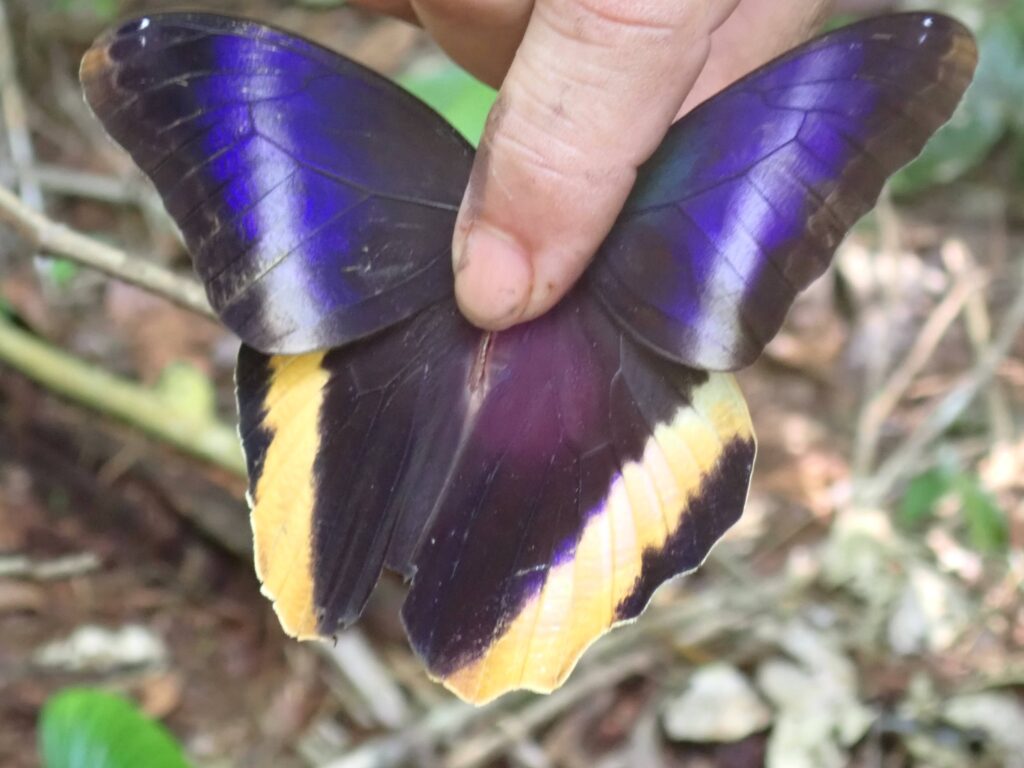
Student Author: Julia
¡Hola Porter’s! Today, we all left early in the morning for our group trips. My group went back to Bijagual to continue collecting data in the same plot we worked on yesterday. When we got off the bus, we went straight into the jungle and got to work. My job this time was to measure the diameter of the trees with Wei, while Ariana and Hadley scouted new trees and cleaned the tags, while Maggie and Charlotte measured the height and amount of other flora around the tree. Meanwhile, Holly recorded all the data on paper. When we finished collecting data, we stopped by a big leafcutter ant colony to talk about the overall biodiversity of the rainforest and why mono-cropping is not practical in tropical areas because each plant thrives off the other. After we walked back to the base, we had an amazing lunch of arroz con pollo, yucas fritas, with mango and pineapple juice. I had so much fun during my two days at Bijagual, and I’m so excited to go to Pacuare tomorrow!
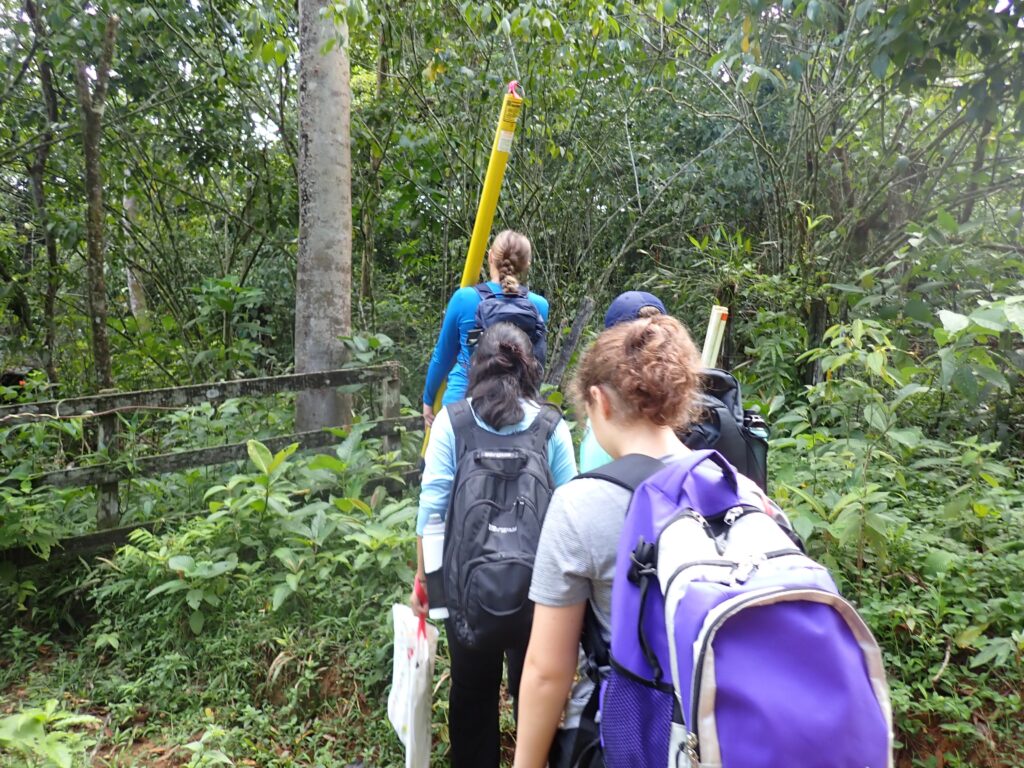
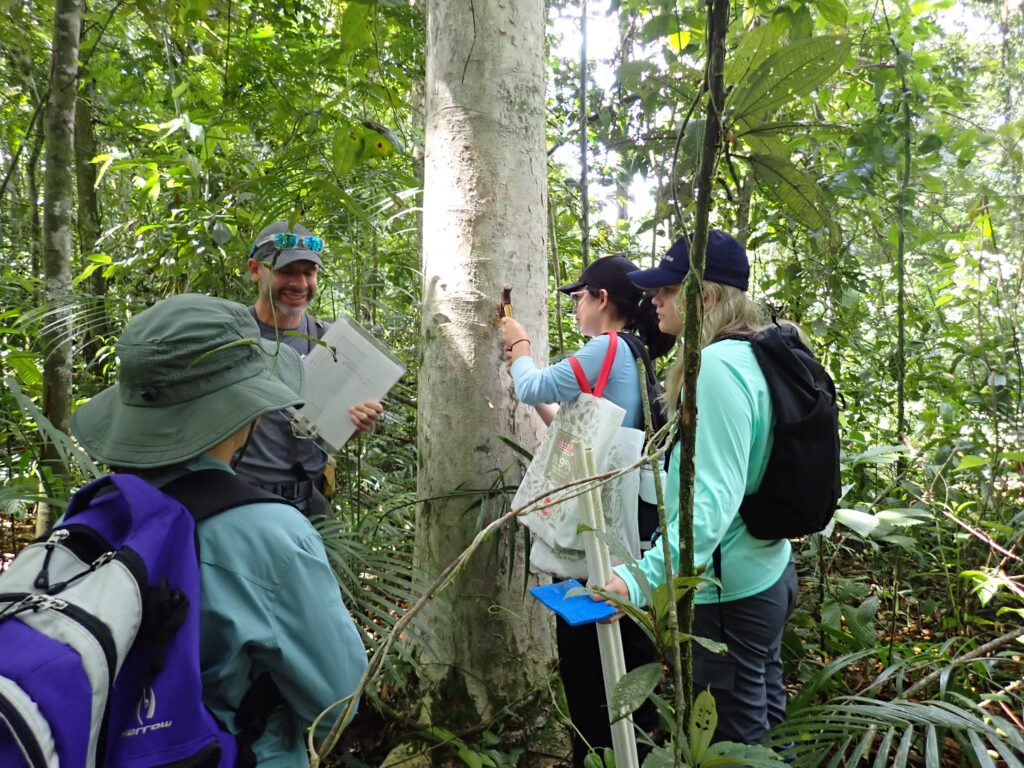
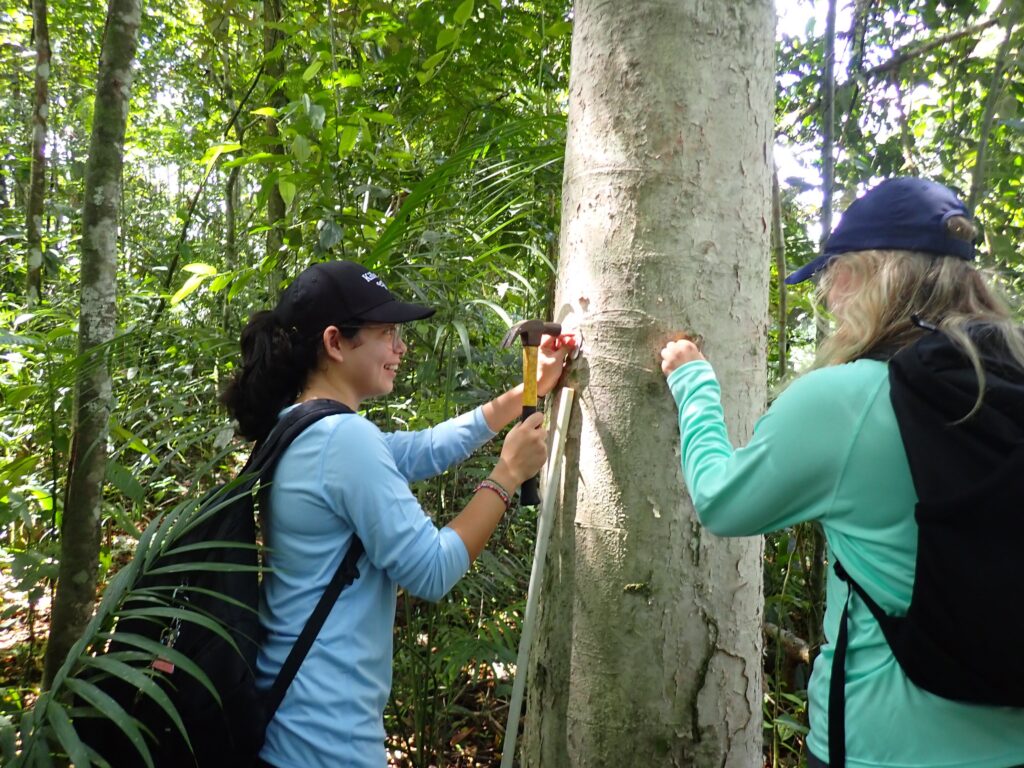
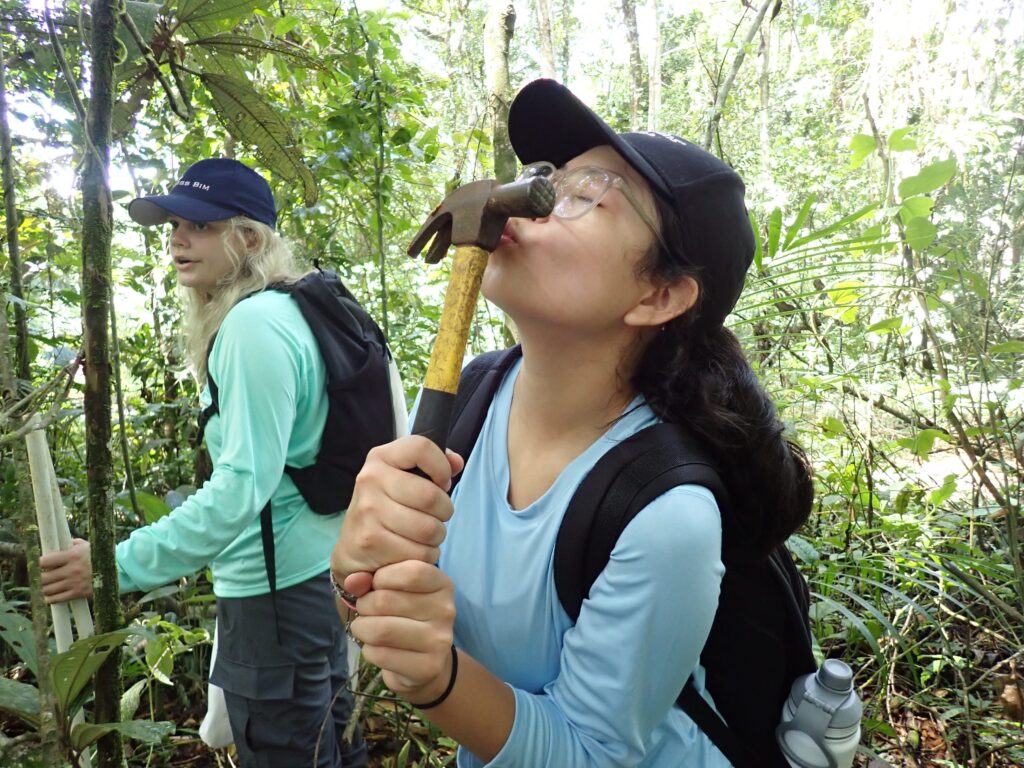
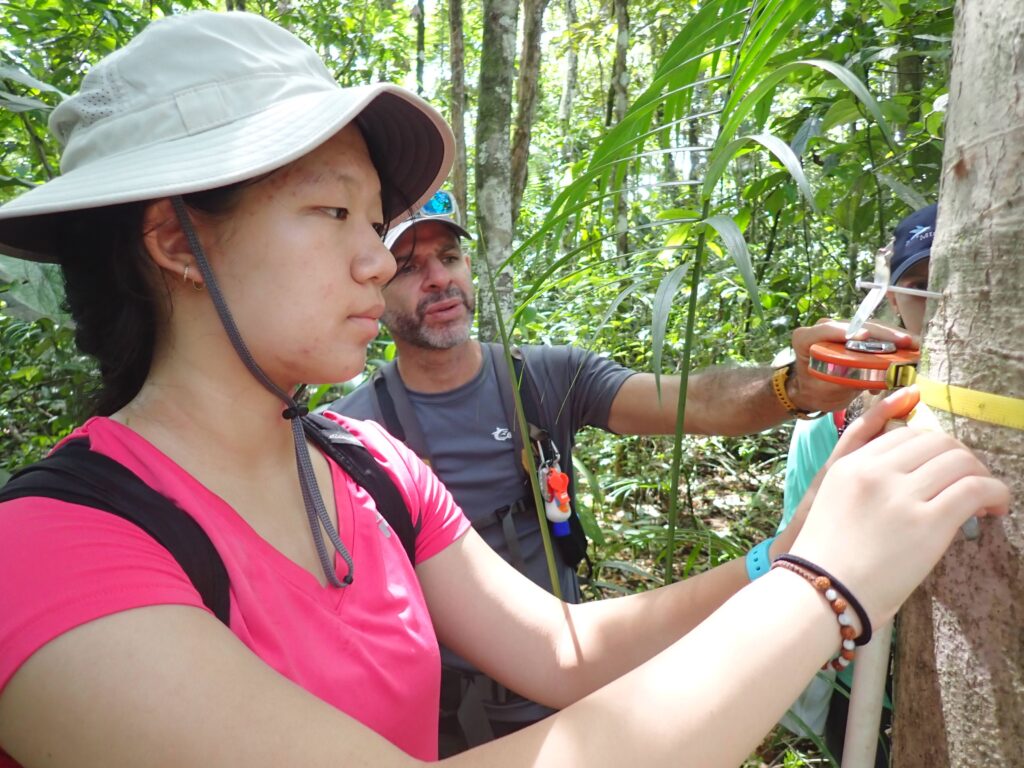
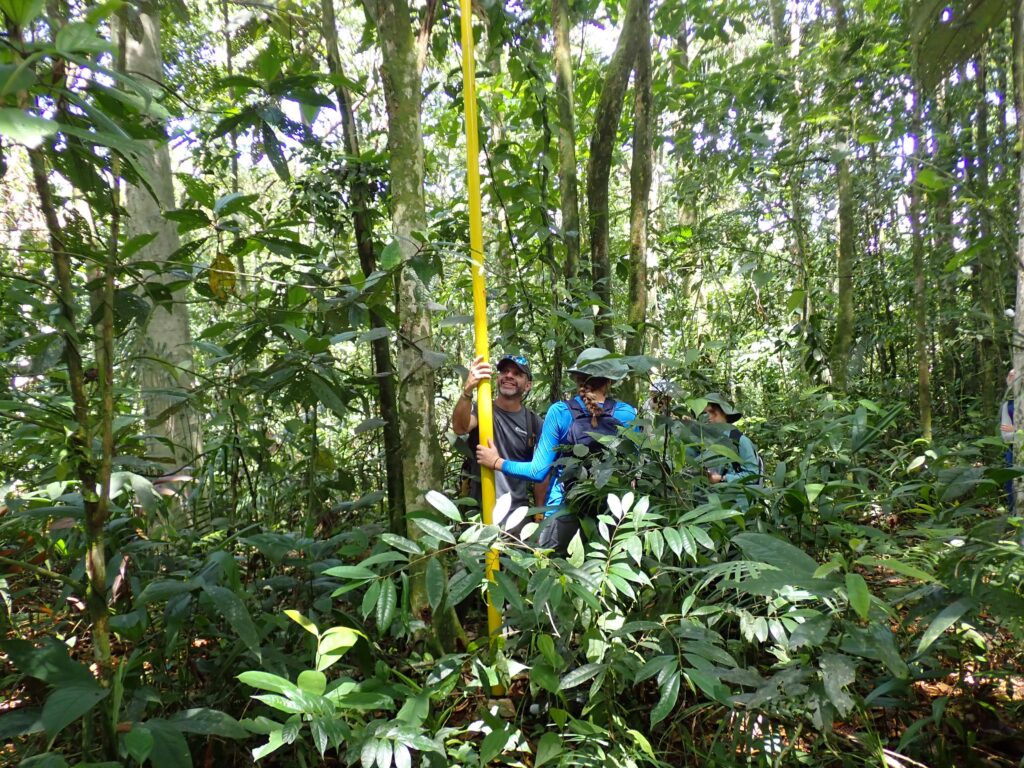
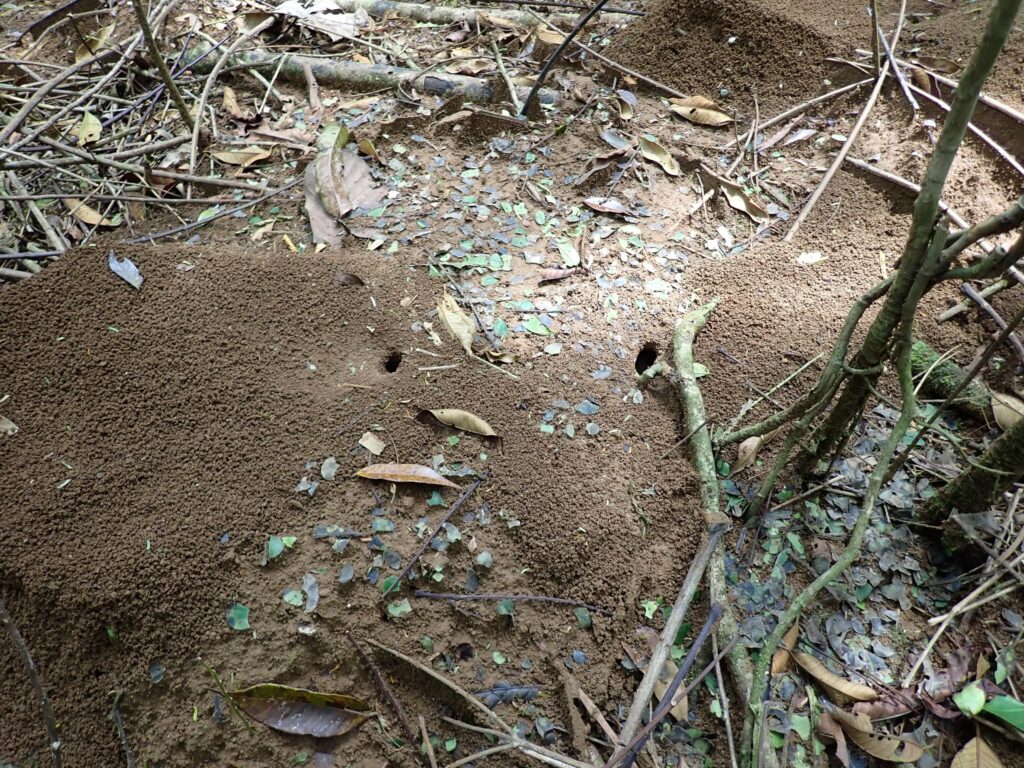
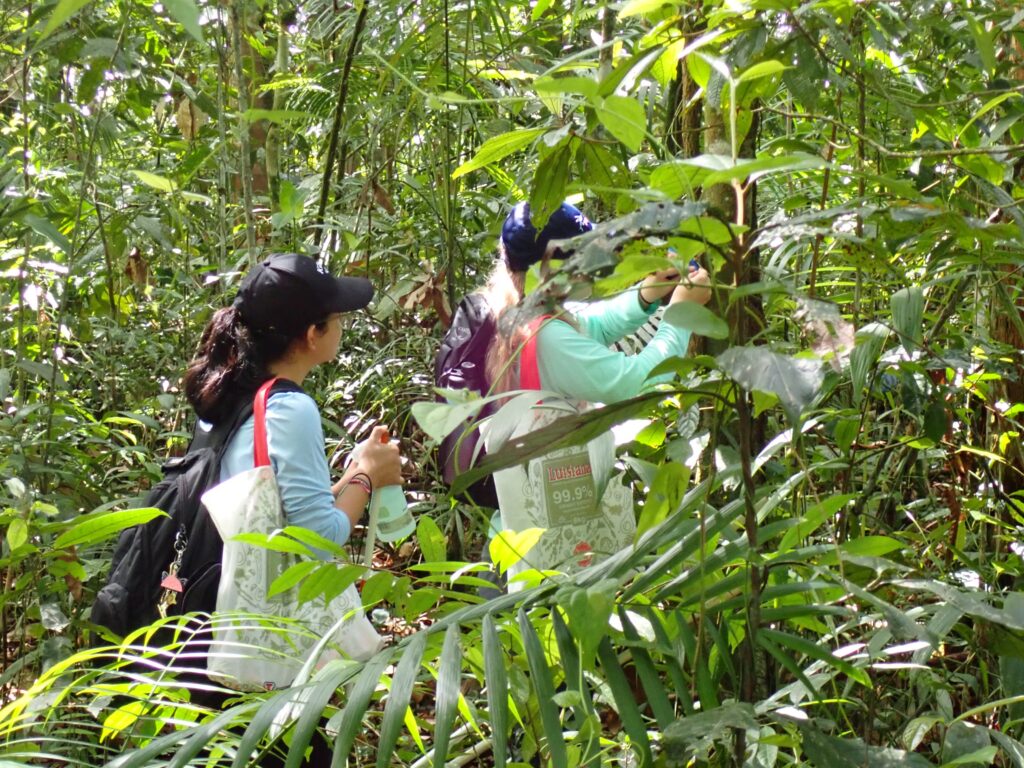
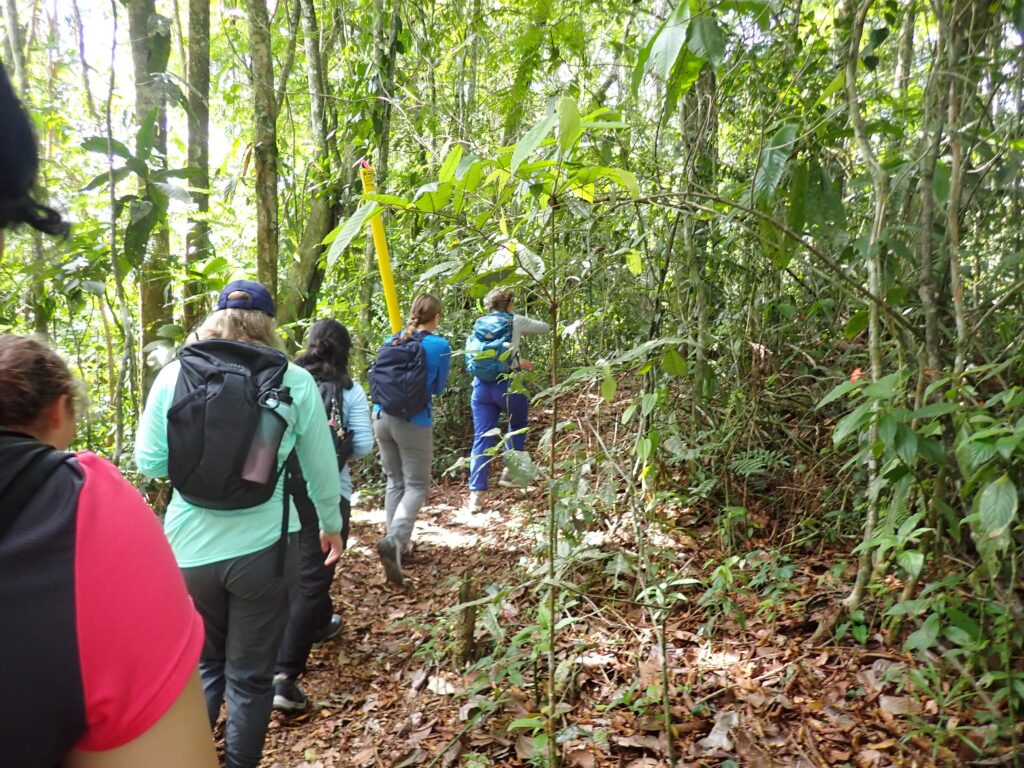
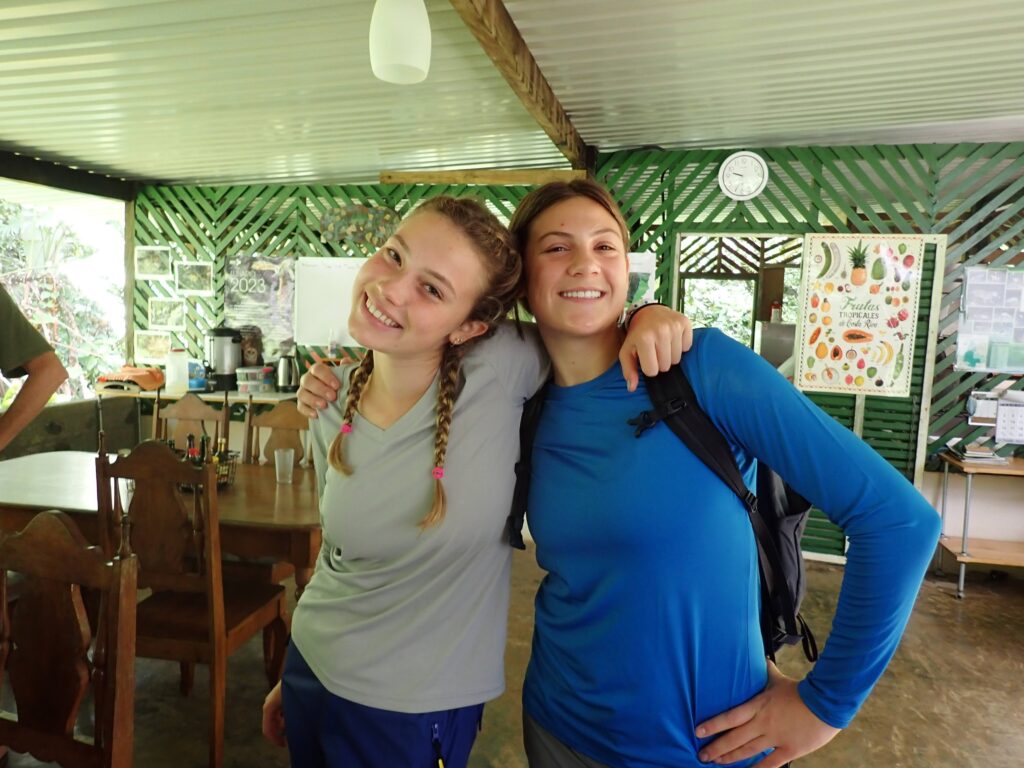
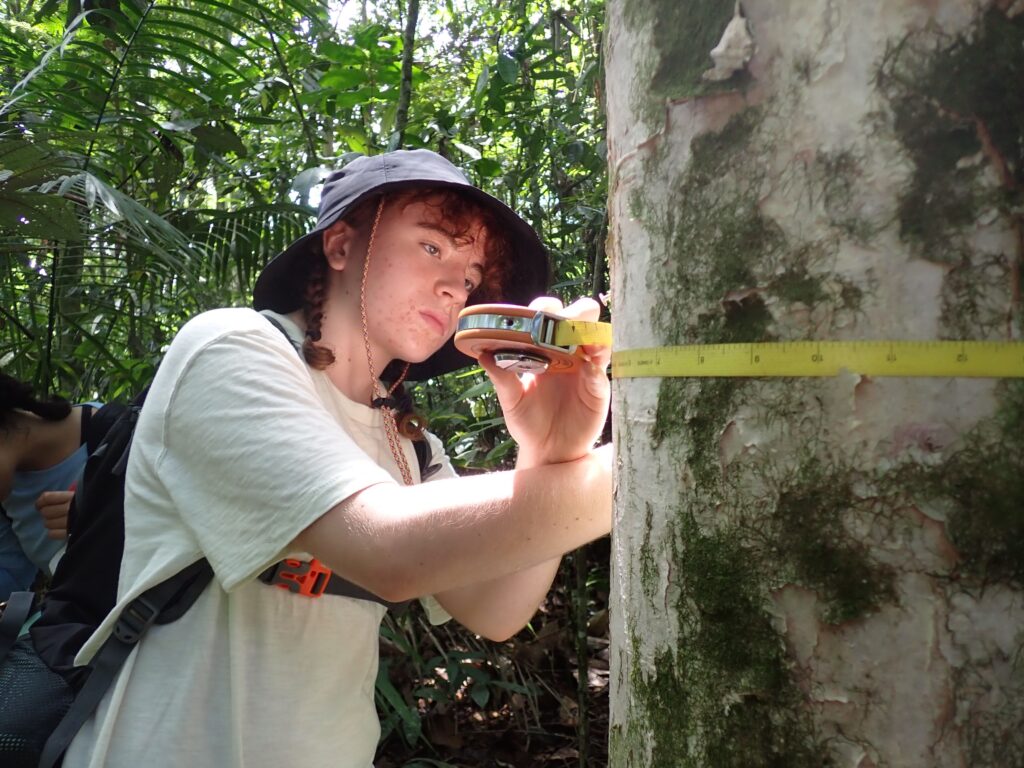
Student Author: Anna R.
¡Hola Porter’s! Happy Day 2 from Costa Rica. Today, my group and I returned to Lapa Verde for our second visit. We went for our second hike to the observation tower, where birds, mainly different species of hawks, and their migration patterns are observed and recorded. Additionally, I learned the reason why hawks chose to travel over land and not over sea; they can use the hot rising air called a thermal to conserve their energy so that they can travel for long periods. This looks like an upward spiral. Today’s hike was incredibly challenging as our guide, John, led us on a “shortcut” through the thick forest! Finally, what was most impactful was learning about John and his work in reforestation, which has greatly impacted the amount of biodiversity in the surrounding areas.
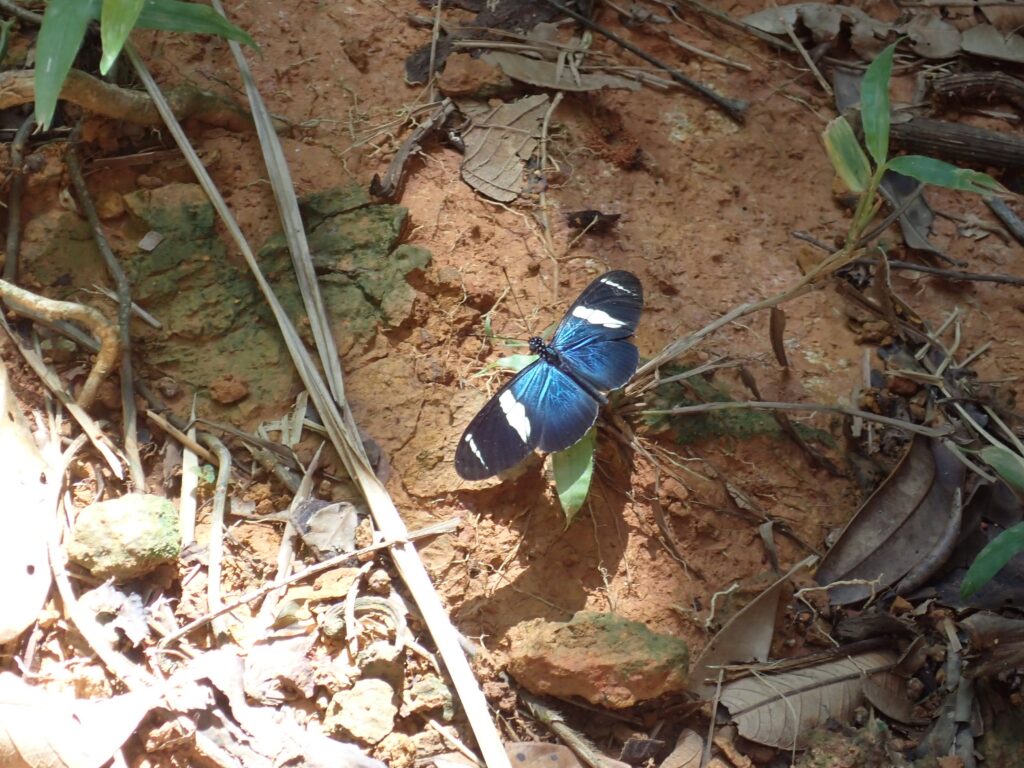
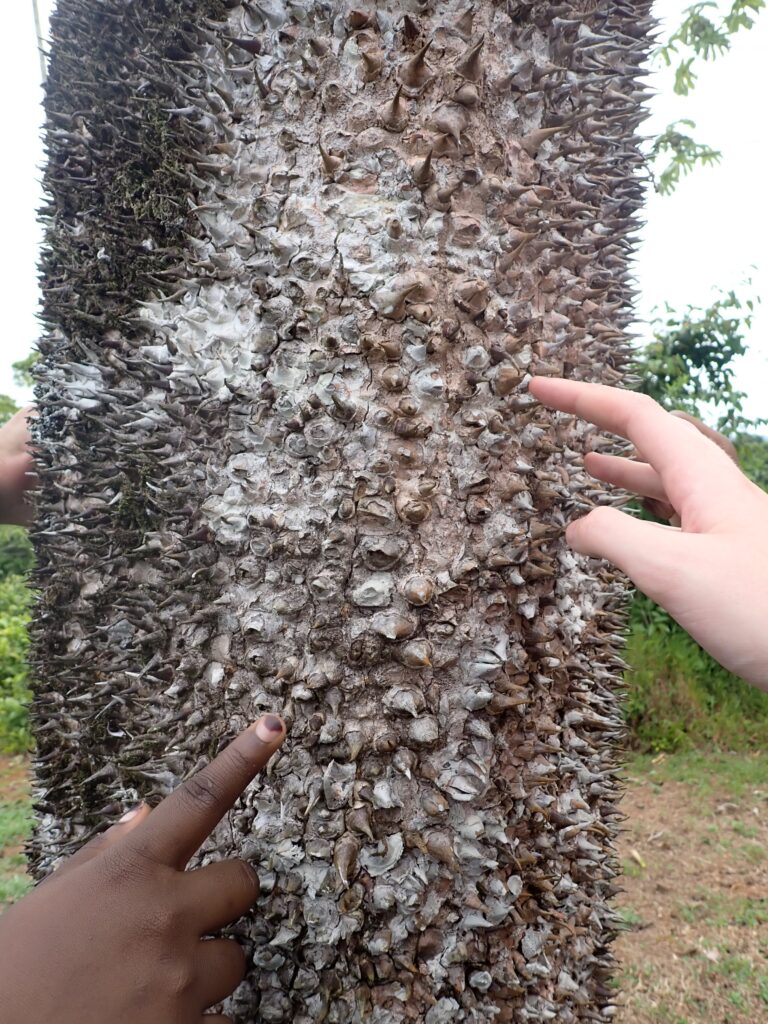
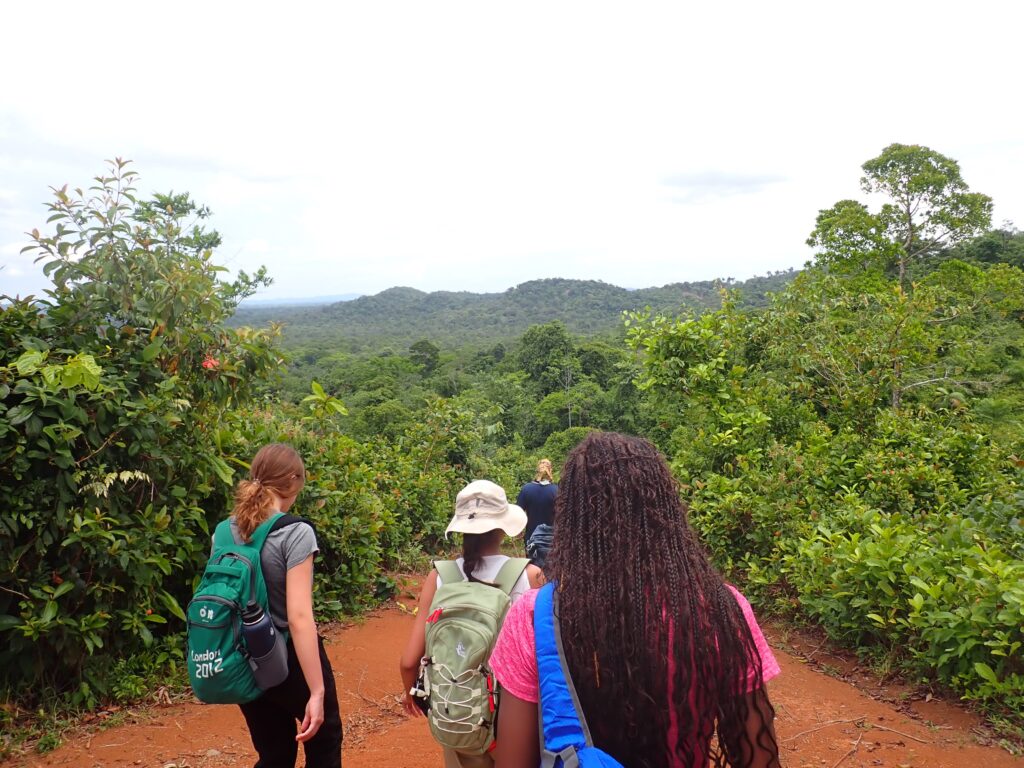
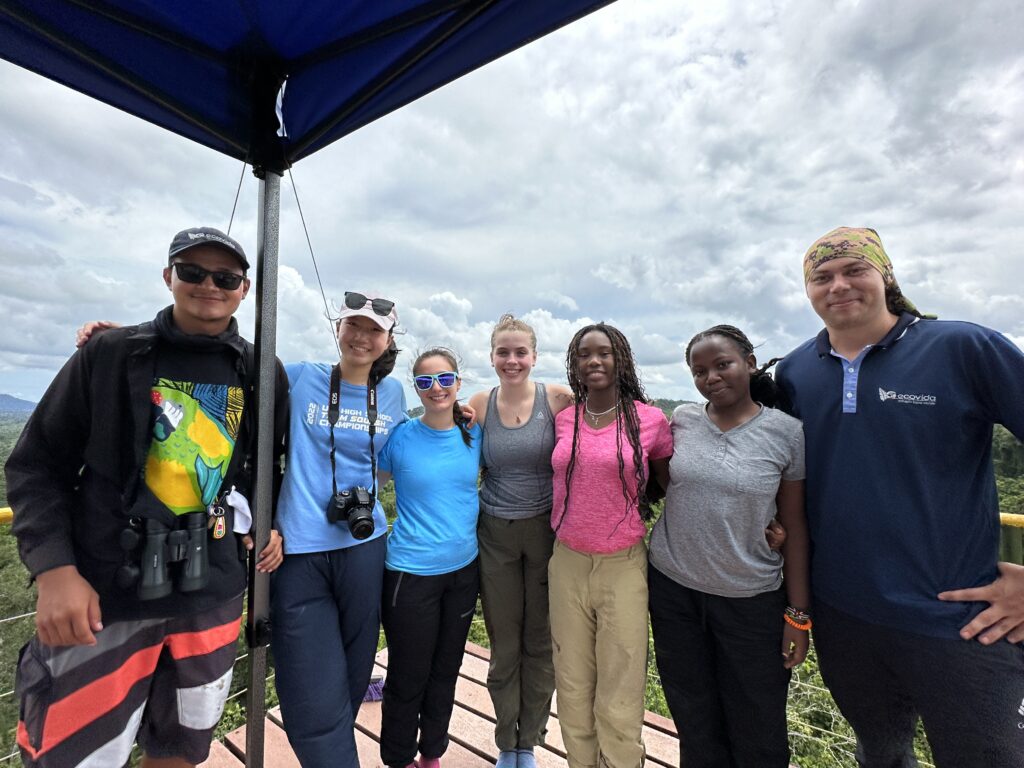
After all the groups returned to Chilamate, we had time for rest, yoga, and playing soccer before going just down the road to a lecture about the different health benefits of plants in the rainforest. Many common fruits have different effects. We tried several herbs and fruits. Most notably, one turned our mouths numb in the pins and needles way. Another paralyzed our sour taste buds and made everything super sweet. Everyone’s back to normal now. We also got to eat fresh coconut or pipa in Spanish, “ugly” oranges, and mimbros. Mimbros are super sour cousins of starfruit. We are now about to pack a small bag to head north to Pacuare, where we will study turtles on the Caribbean coast in a more remote location. While we won’t have the internet to update the blog until Thursday, we hope you stay tuned to share this adventure with us!
Hasta Luego
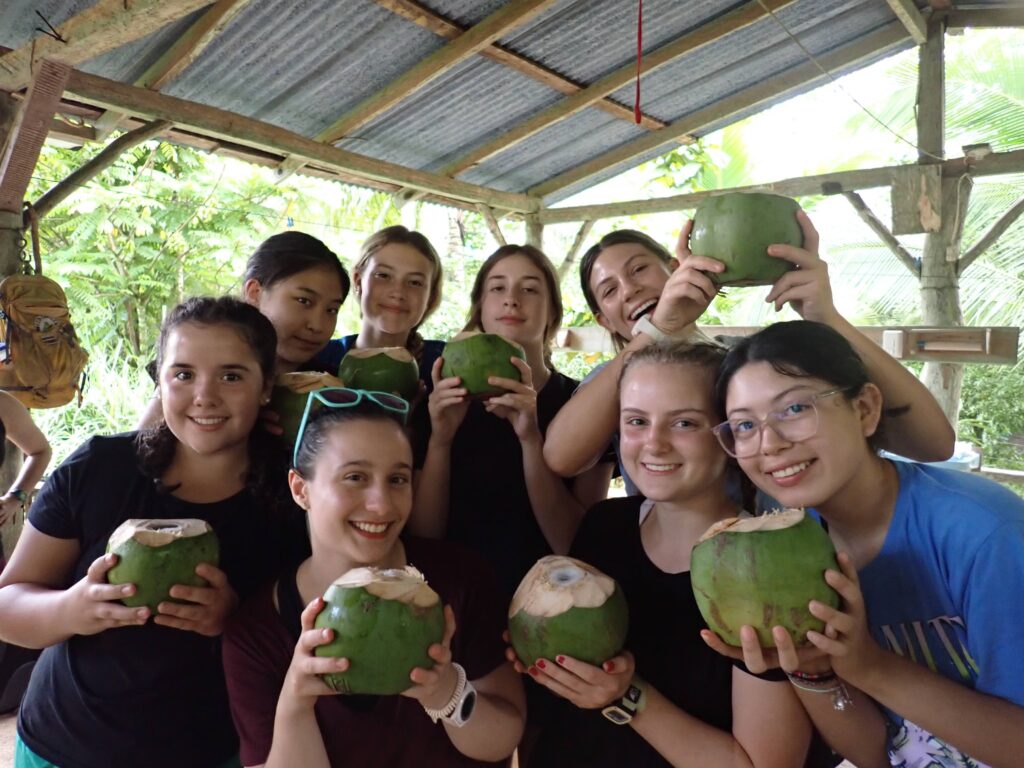
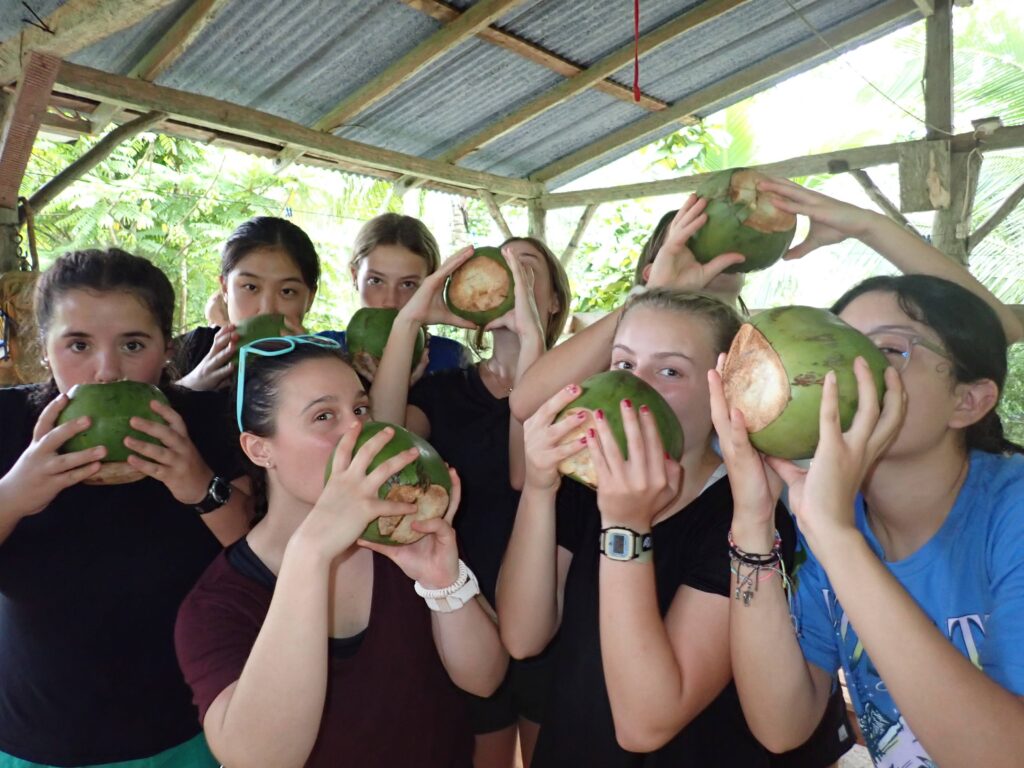
October 1, 2023
¡Hola, from Costa Rica! After a long day of traveling and arriving at the Chilamate Eco Retreat, our first day was eventful! After we had a very filling breakfast, we separated into small groups and went on a morning hike through the Sarapiquí forest, where we are staying. The students were exposed to the infamous biodiversity of Costa Rica through the professional guides. We were able to spot a small family of howler monkeys, toucans, native frogs, bats, and even iguanas perched on high branches. Soon after, the students enjoyed a cooling swim in the river near the forest. Students then split into three groups to visit with partner organizations, where we spent the afternoon investigating a specific research facility.
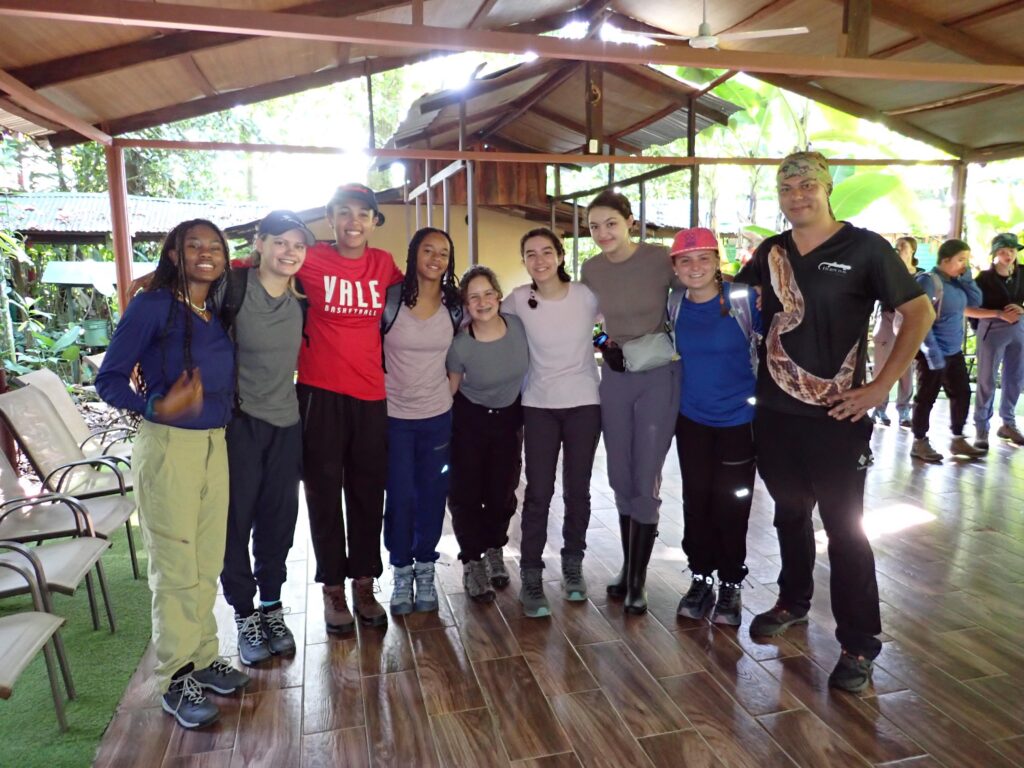
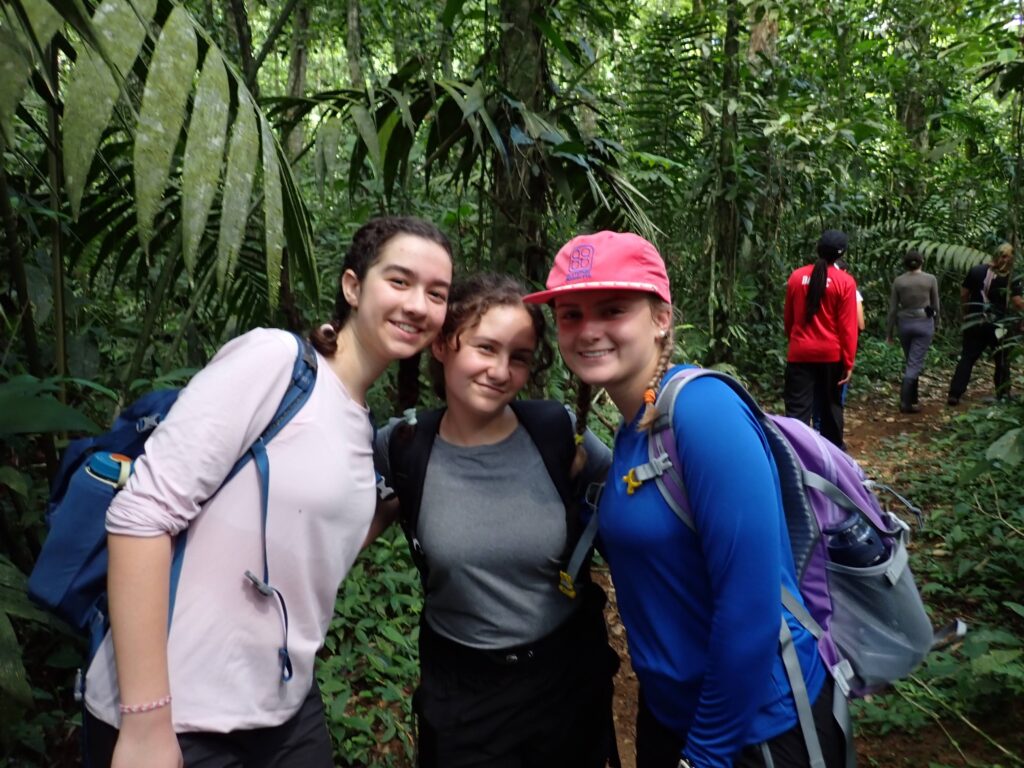
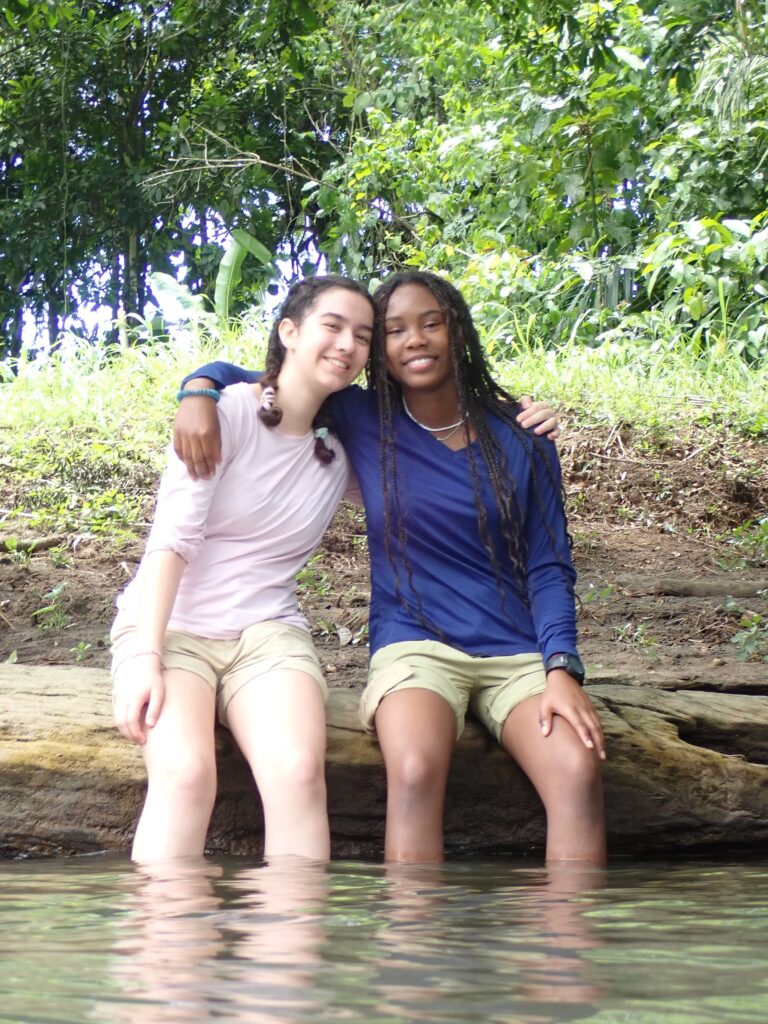
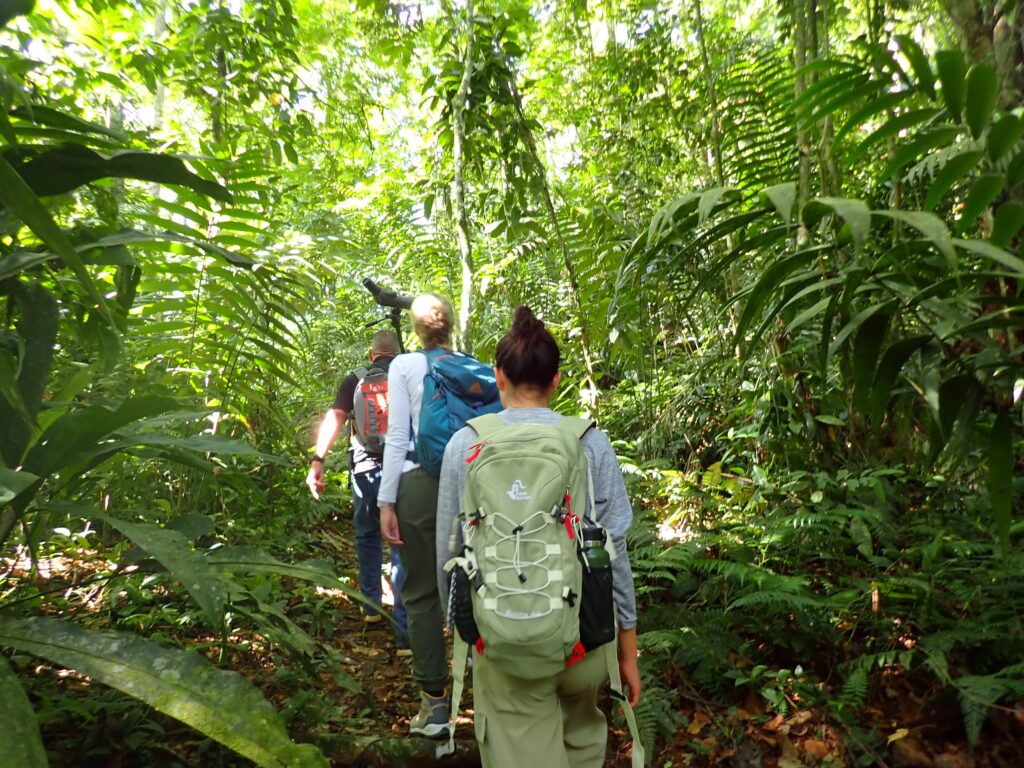
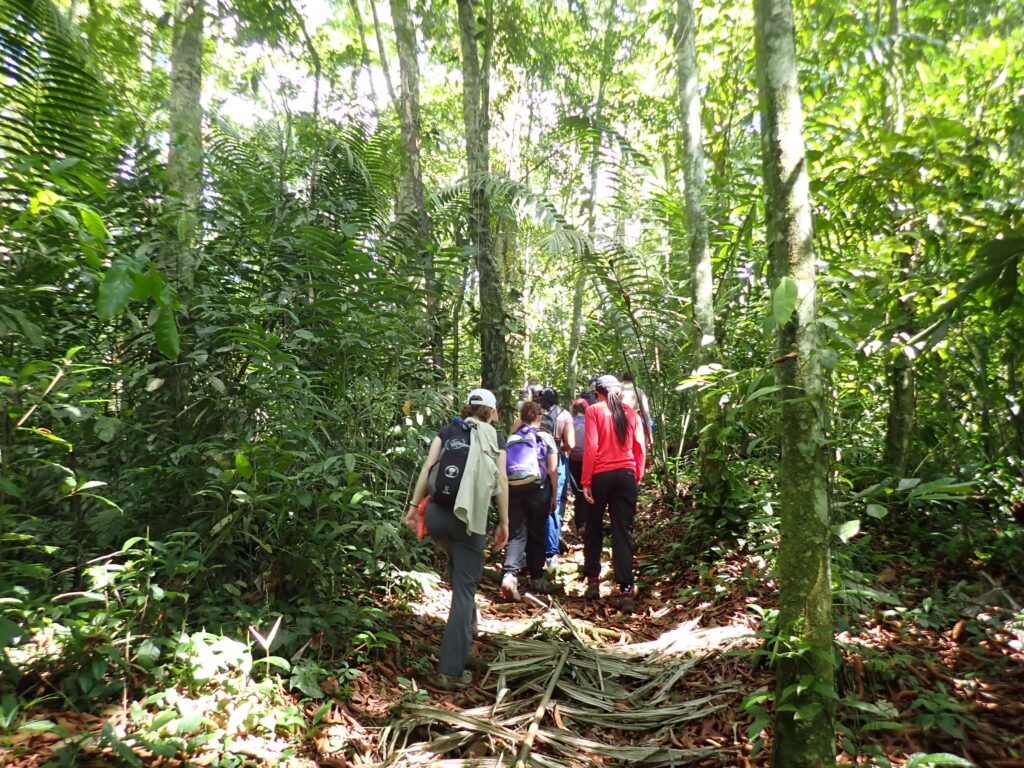
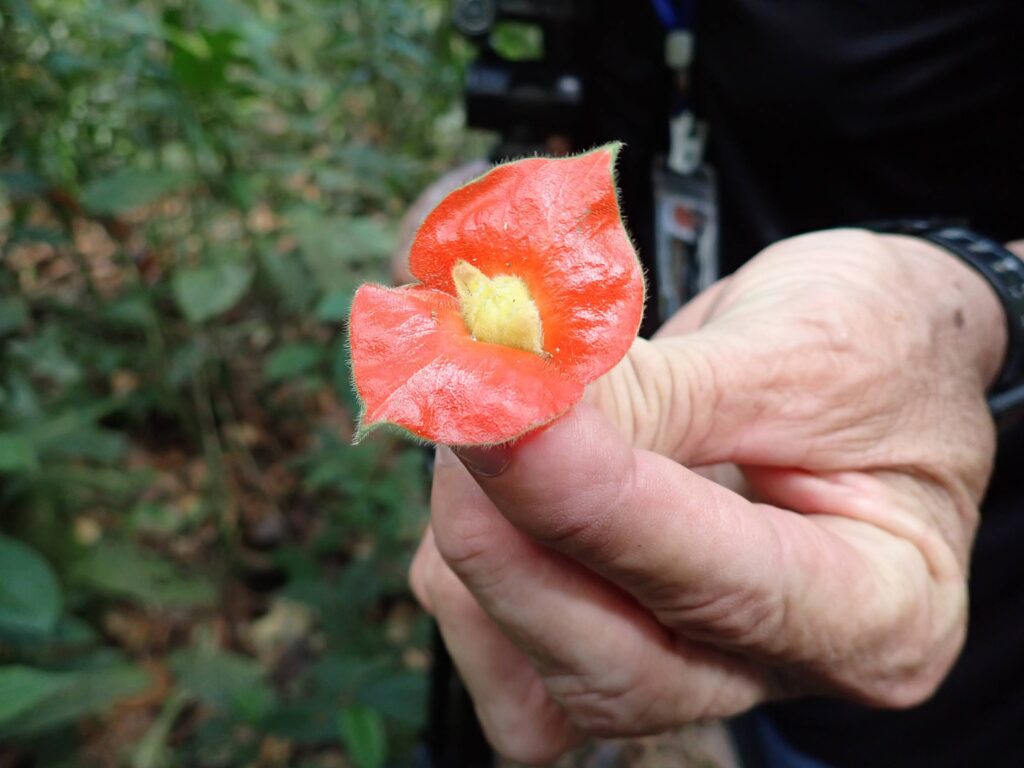
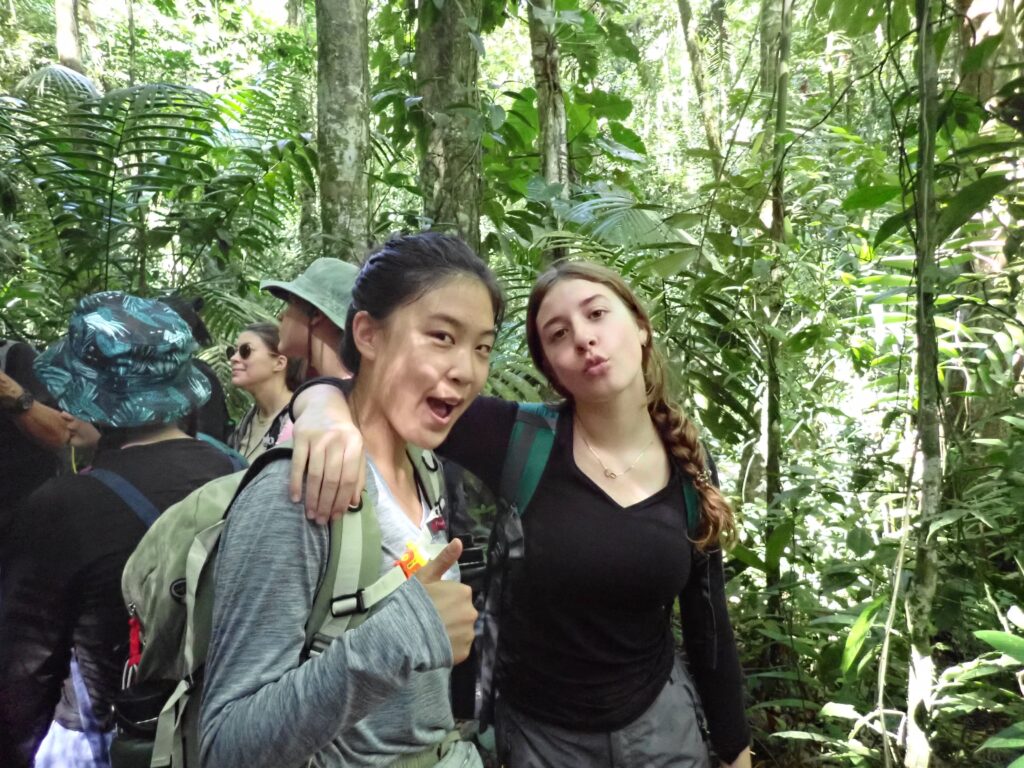
Student Author: Hadley
Today, my group went to Bijagual, an ecological reserve. The Bijagual Reserve’s mission is to help regrow the forests and restore nature that has been lost. To assist, we measured trees by their diameter, height, health, how much it contributed to the leaf coverage, and whether other vegetation was growing on the tree. We had a delicious lunch of rice, beans, rambutan/mamones, and salad. We headed out after grabbing the supplies and having a small debrief of the reserves goal. The first challenge we faced was finding the tagged trees we were meant to measure. Once we found a tree, it was Maggie and Charlotte’s job to clean the tags off and tell everyone what number tree it was. Ariana and I were in charge of measuring the tree’s diameter and reporting back to the group. Jeva and Wei’s job was recording all the tree information. Holly and Julia measured the tree’s height, health, and leaf coverage. It was an amazing experience, and I can’t wait to go back tomorrow and continue the research.
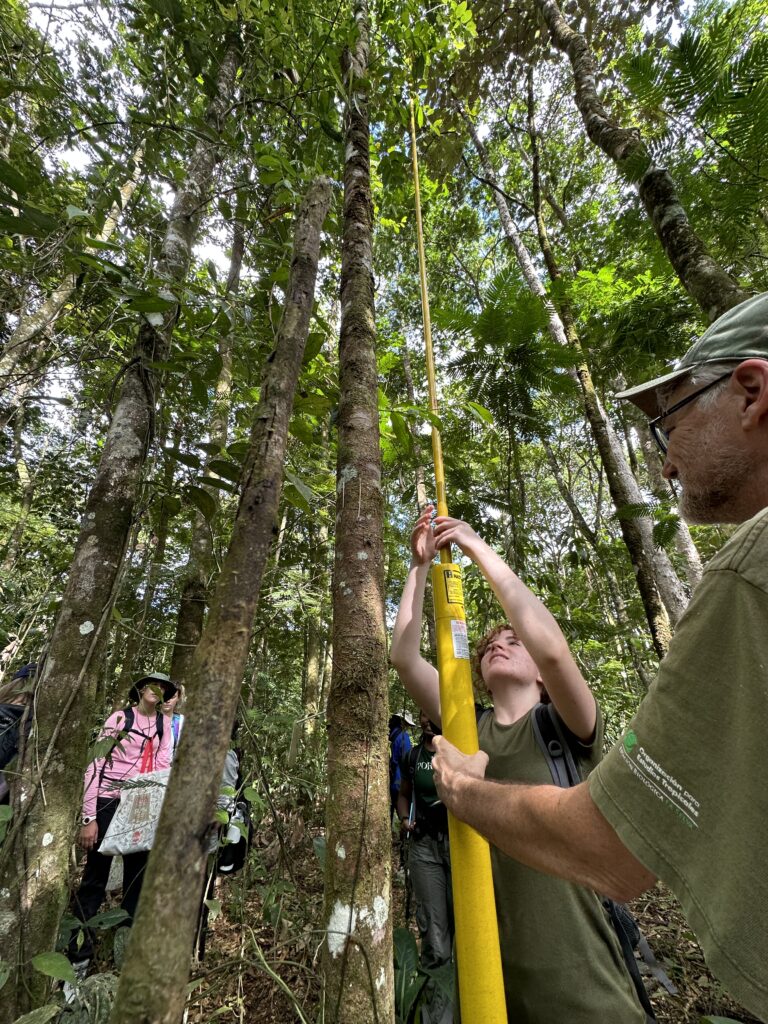
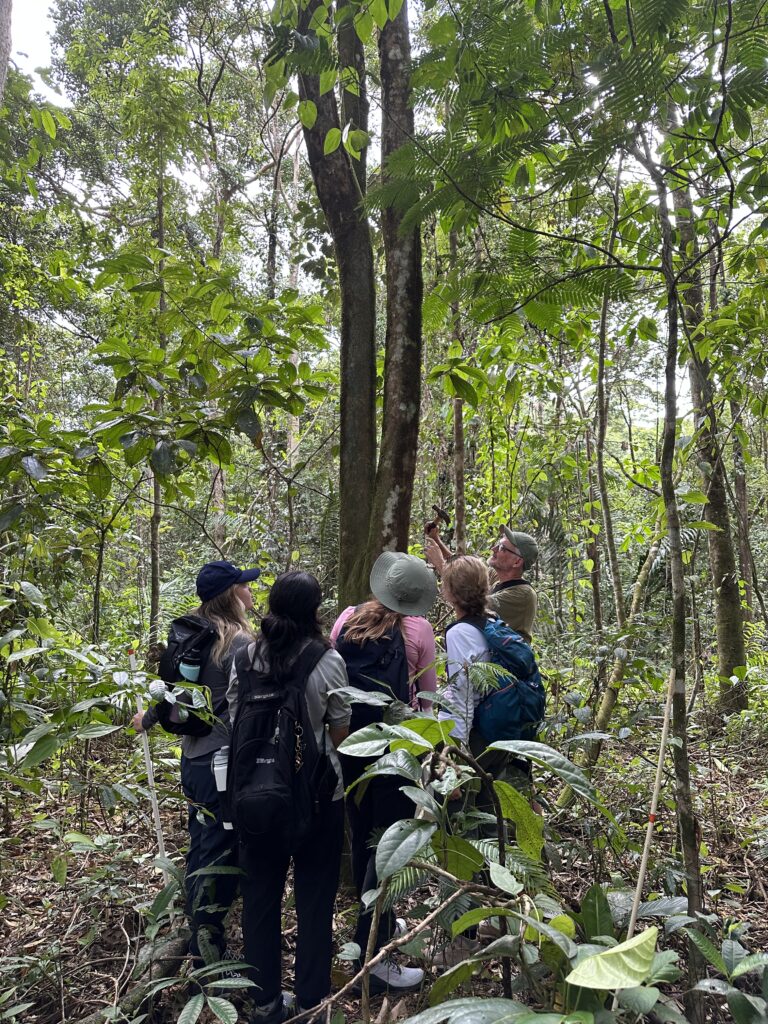
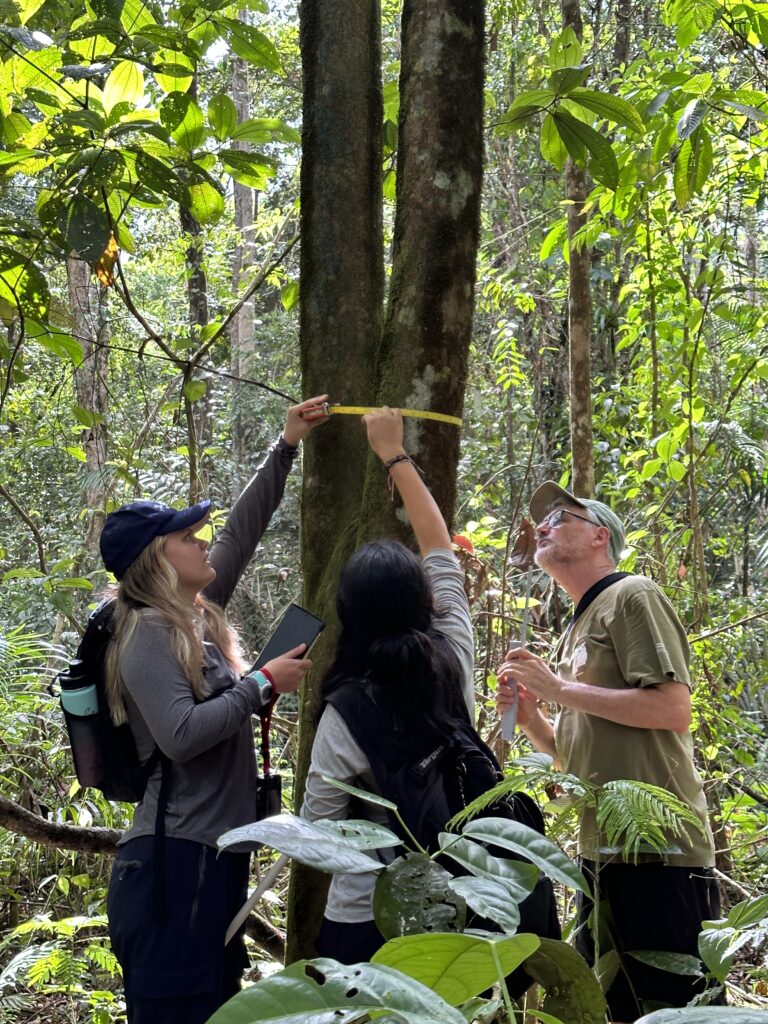
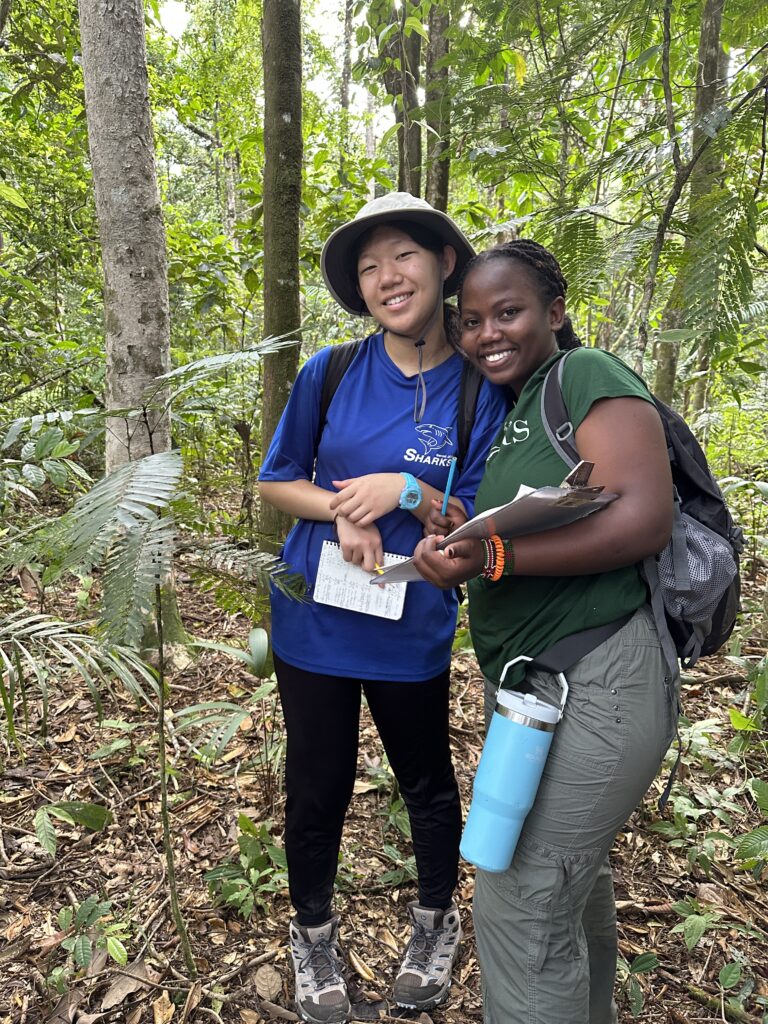
Student Author: Ari
My group went to the Tirimbina Reserve, where we learned about butterfly diversity in Costa Rica, and went on a hike to collect data on the butterflies that were caught in study nets. A short lecture taught us about how butterflies feed on the alcohol in the fermented fruit and how they have adapted to camouflage into nature or to scare other insects to avoid being preyed upon. Everyone was very excited to be able to hold the butterflies and practice their Spanish skills with the guide. At each trap site, we checked for butterflies, marked them if needed, refilled the plantain bait, and then left for the butterflies to be caught. One butterfly, affectionately called Baddie, became our friend after it had rested on our hand, joining our hike thereafter. We learned that the world of butterfly conservation is very tough but super important for the biodiversity of butterflies in Costa Rica.
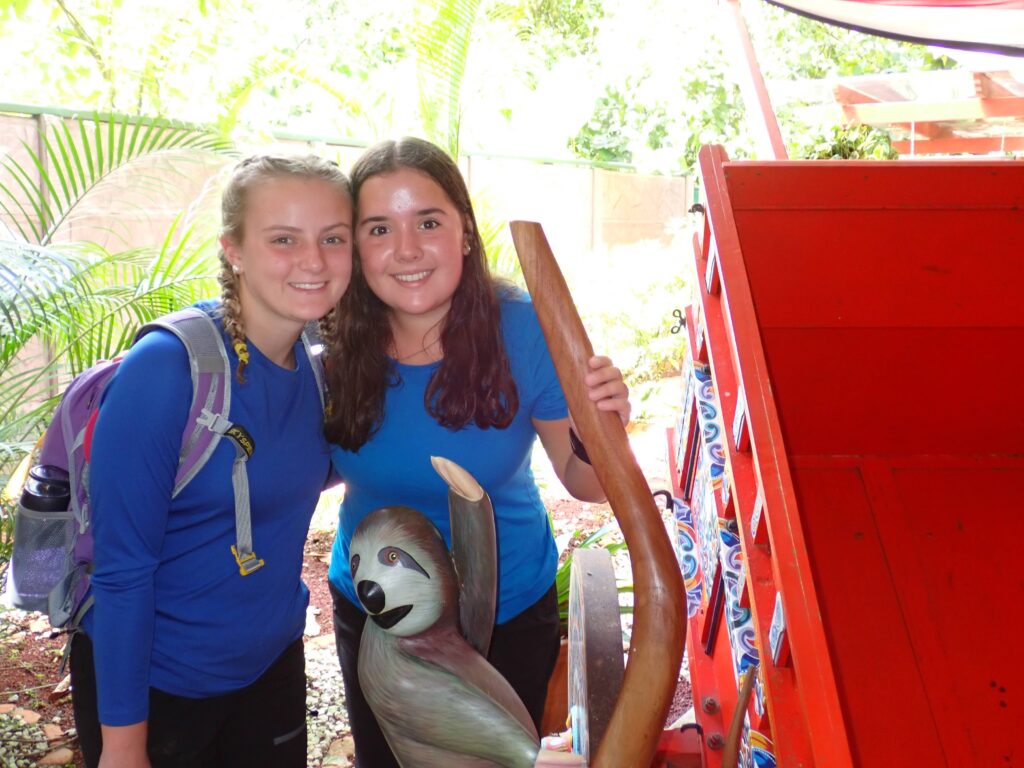
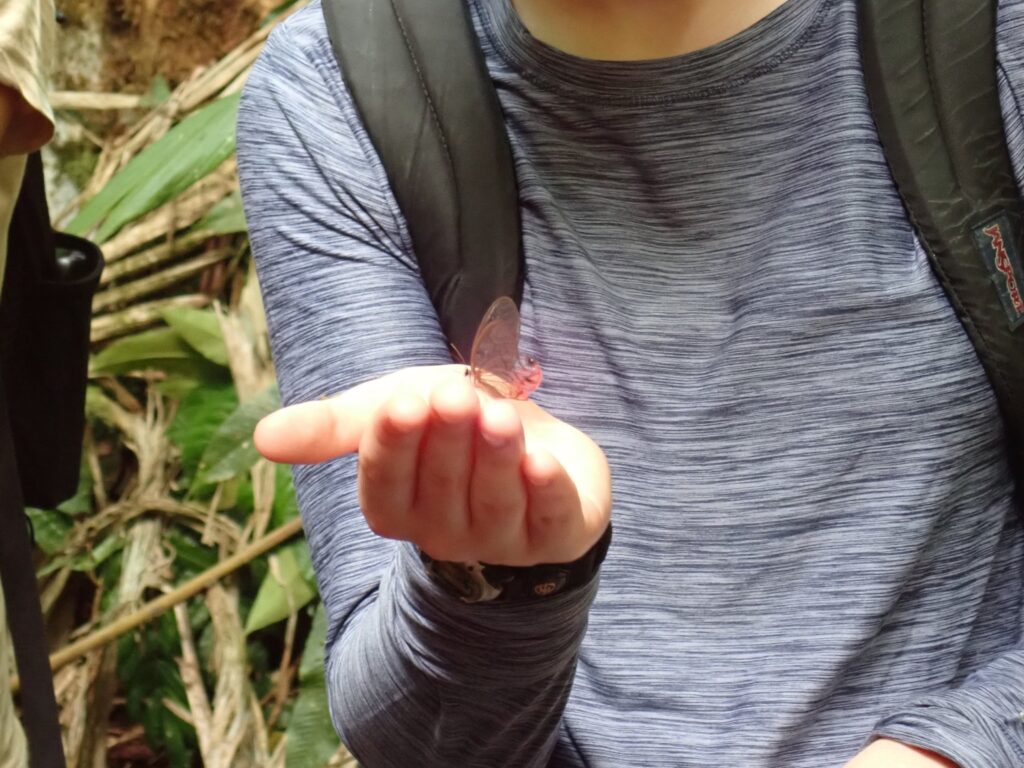
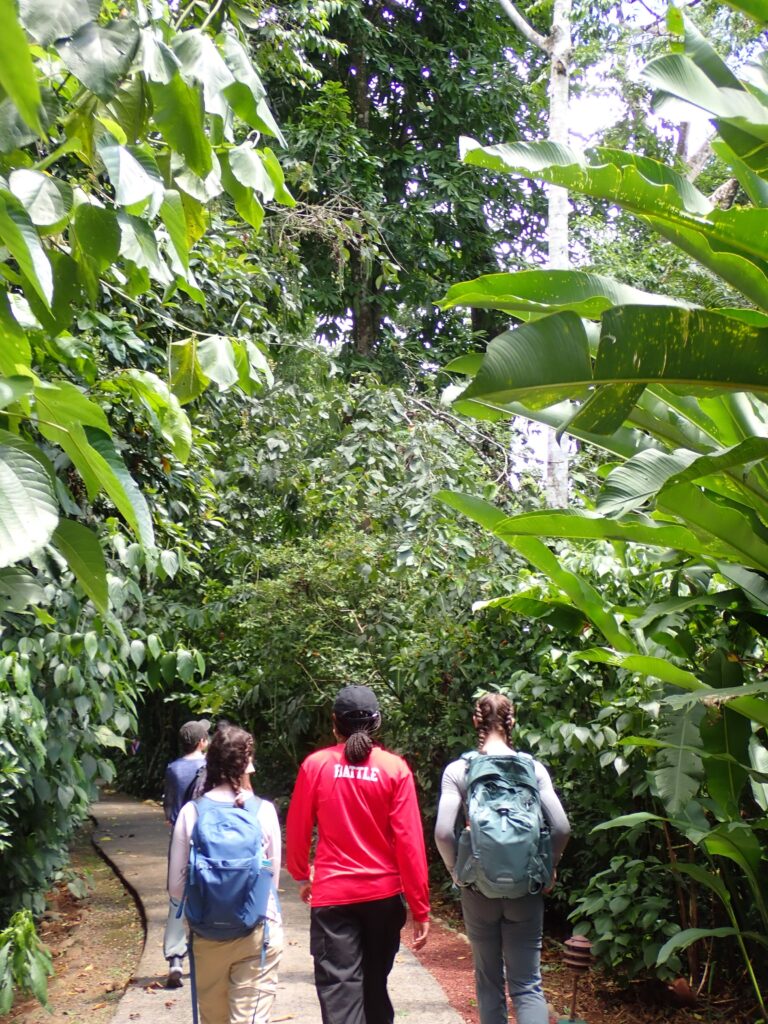
Student Author: Hua
My group went to Lapa Verde Reserve. The Lapa Verde Reserve is a place where they protect the species of reptiles and amphibians and monitor raptor migration. Before the activity, we ate lunch together: chicken, rice, chips, and salad. We also enjoyed an afternoon rest on the porch. Refreshed from our nap, we started hiking the forest to investigate different types of frogs and lizards, learning how to locate/activate camera traps, and we climbed a tower to watch raptor migration. The highlight of today was watching the raptors thermal using monoculars because everyone in our group was thrilled with having a chance to take a closer look at them.
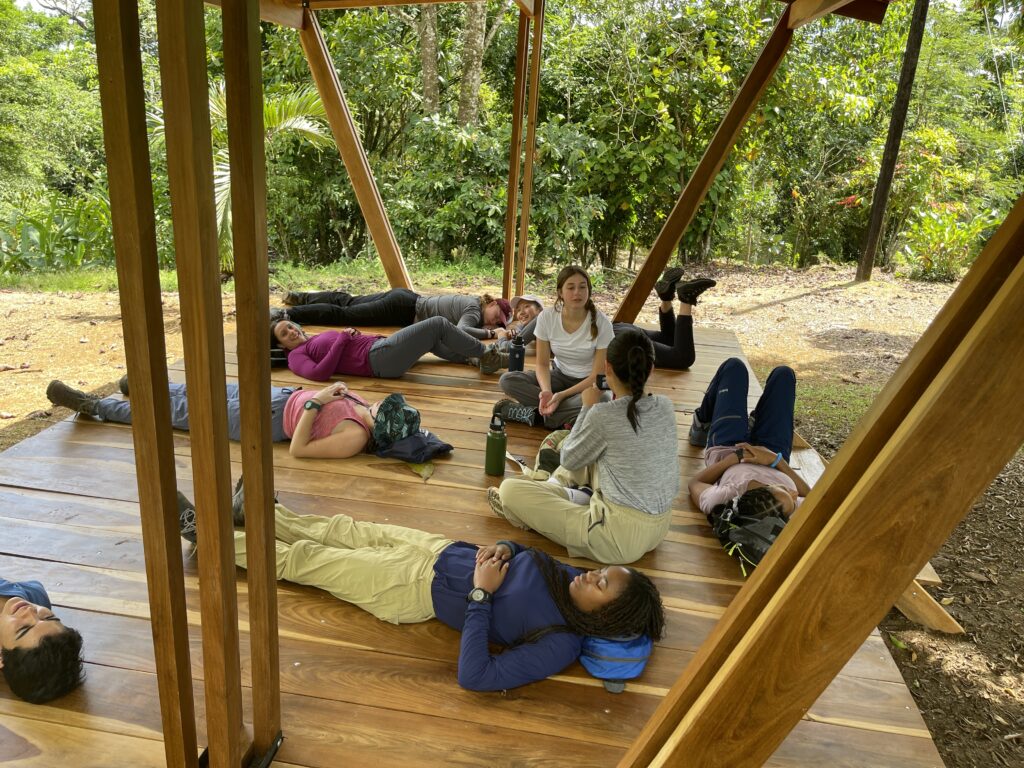
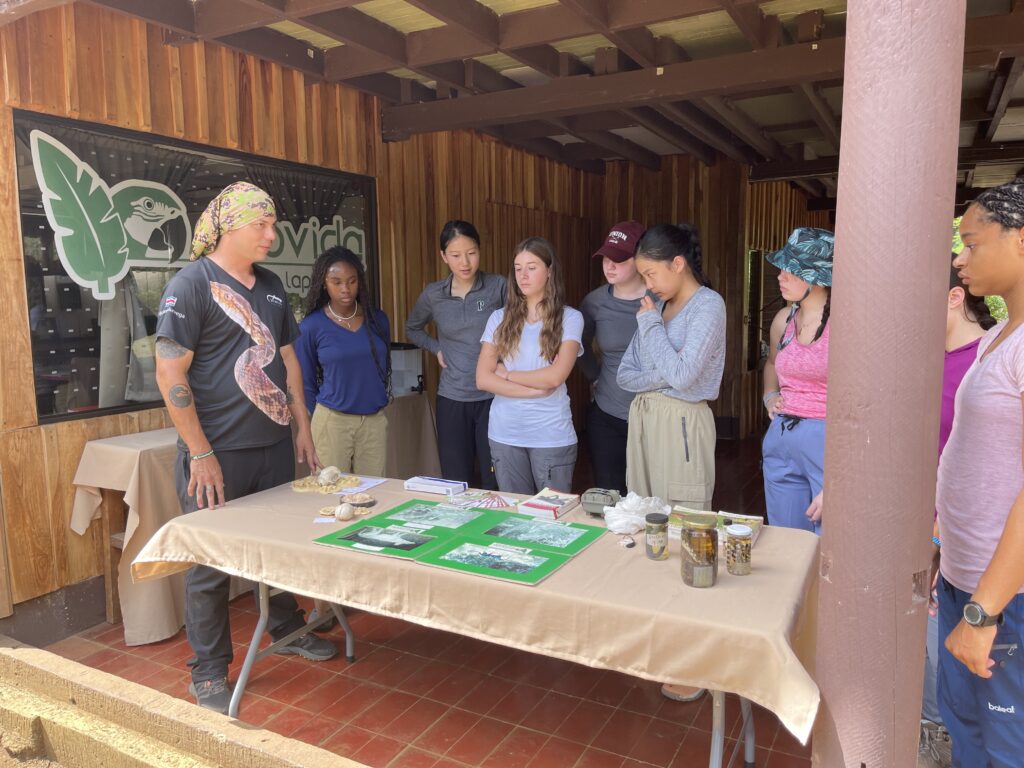
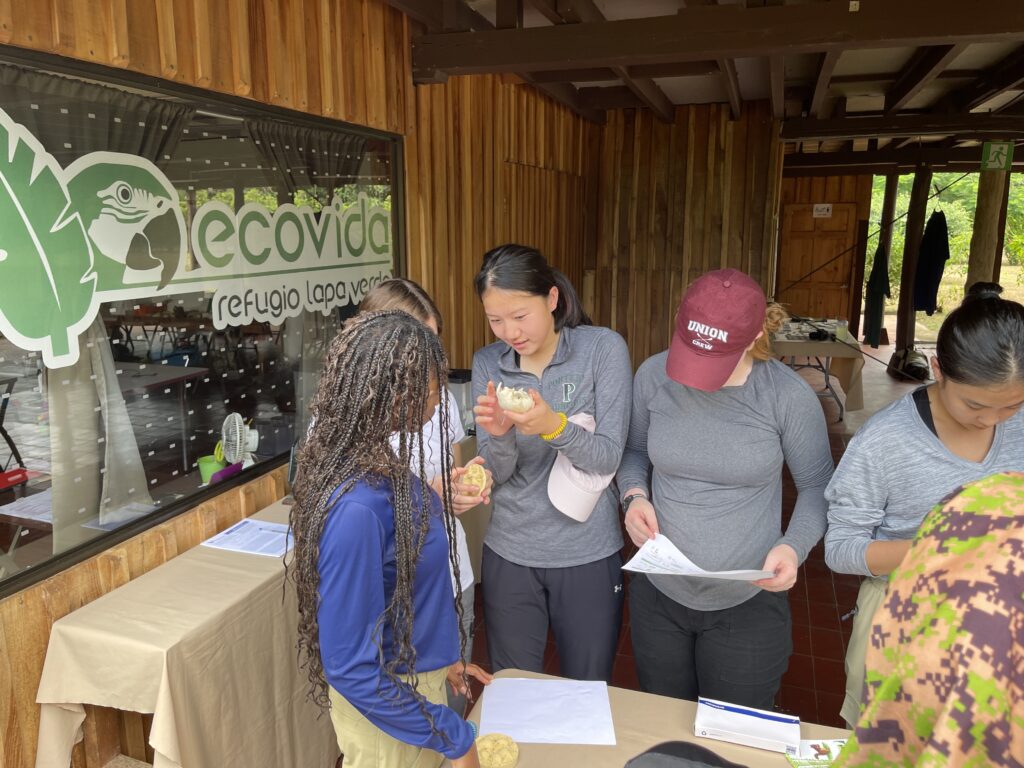
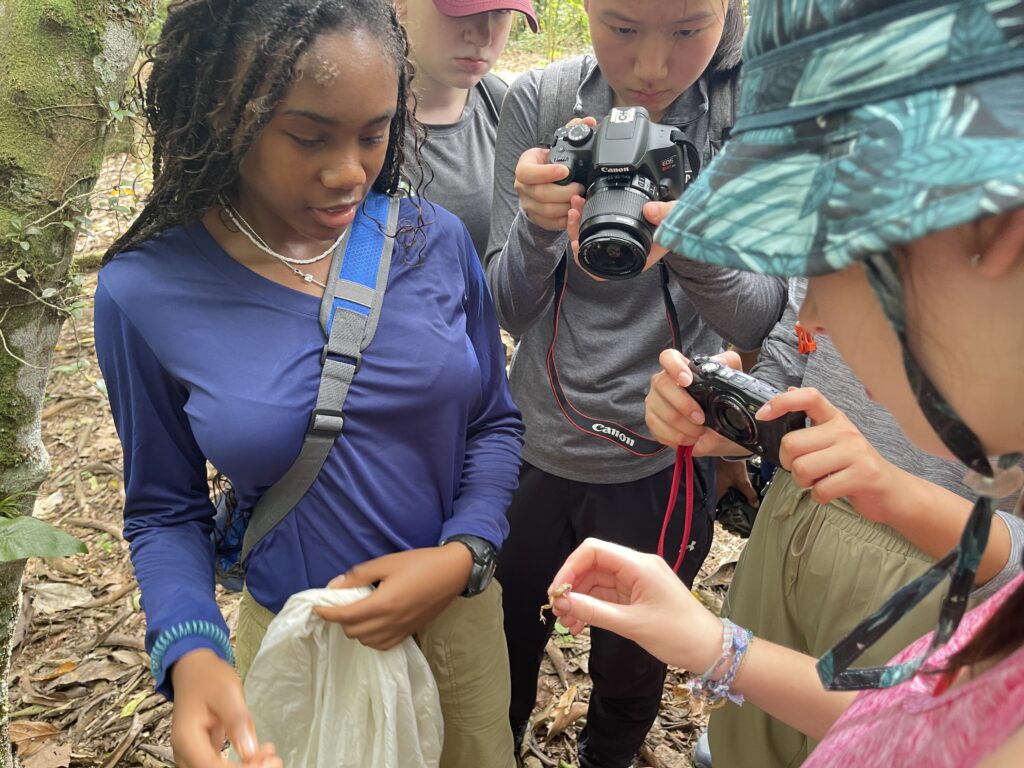
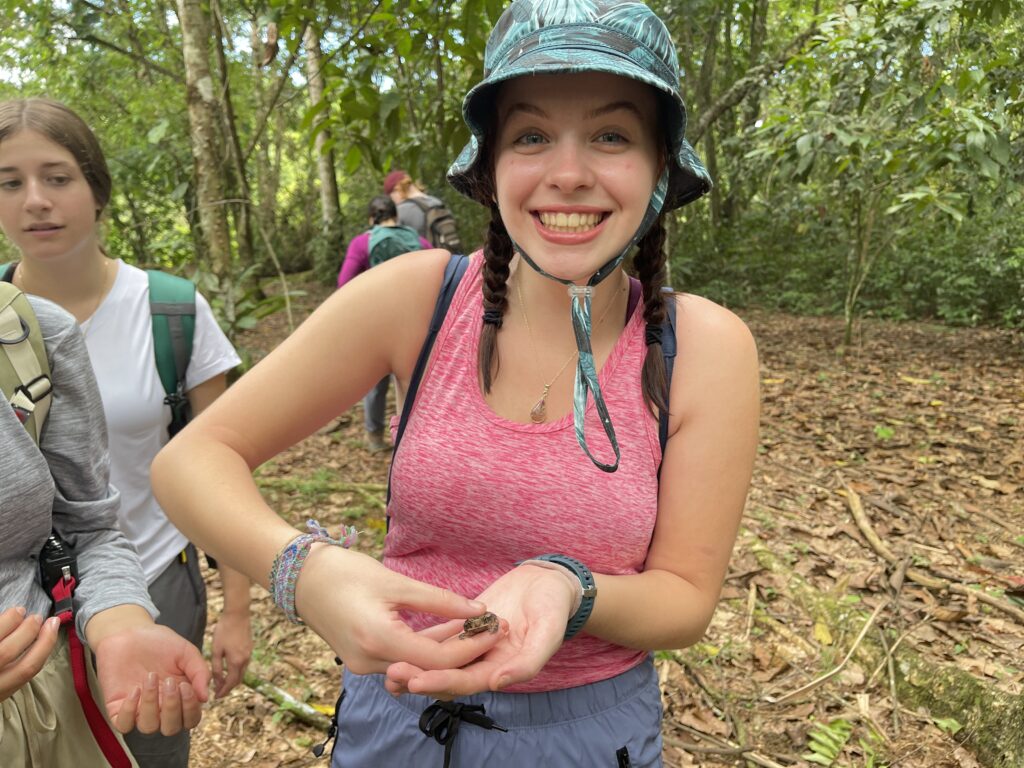
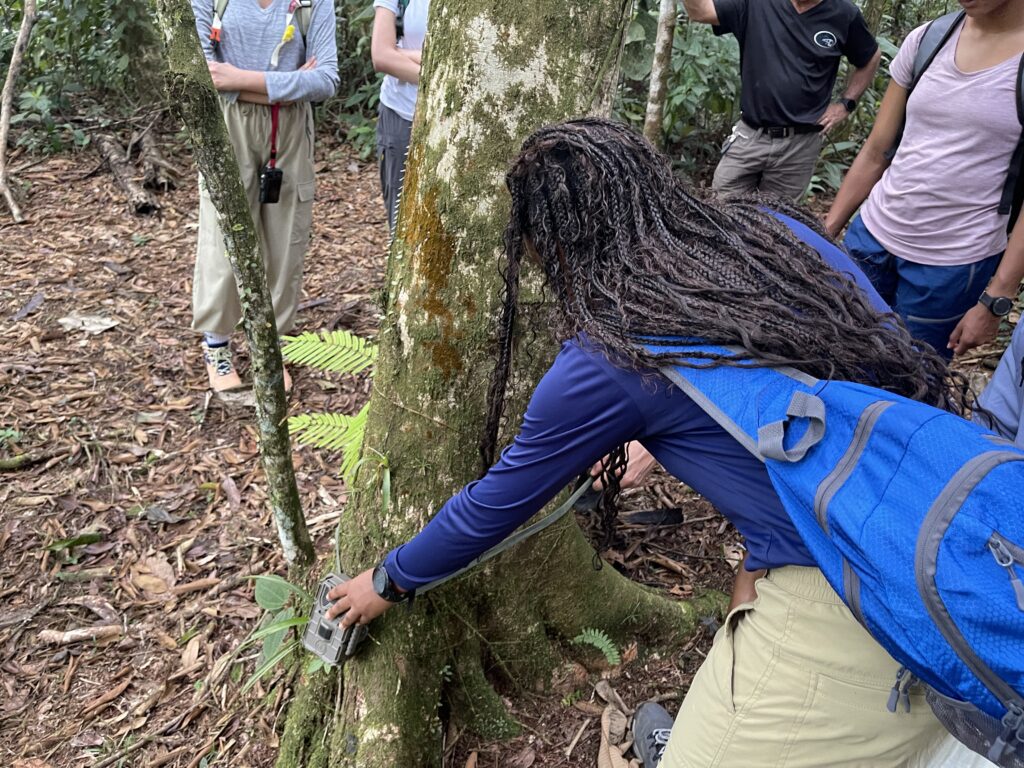
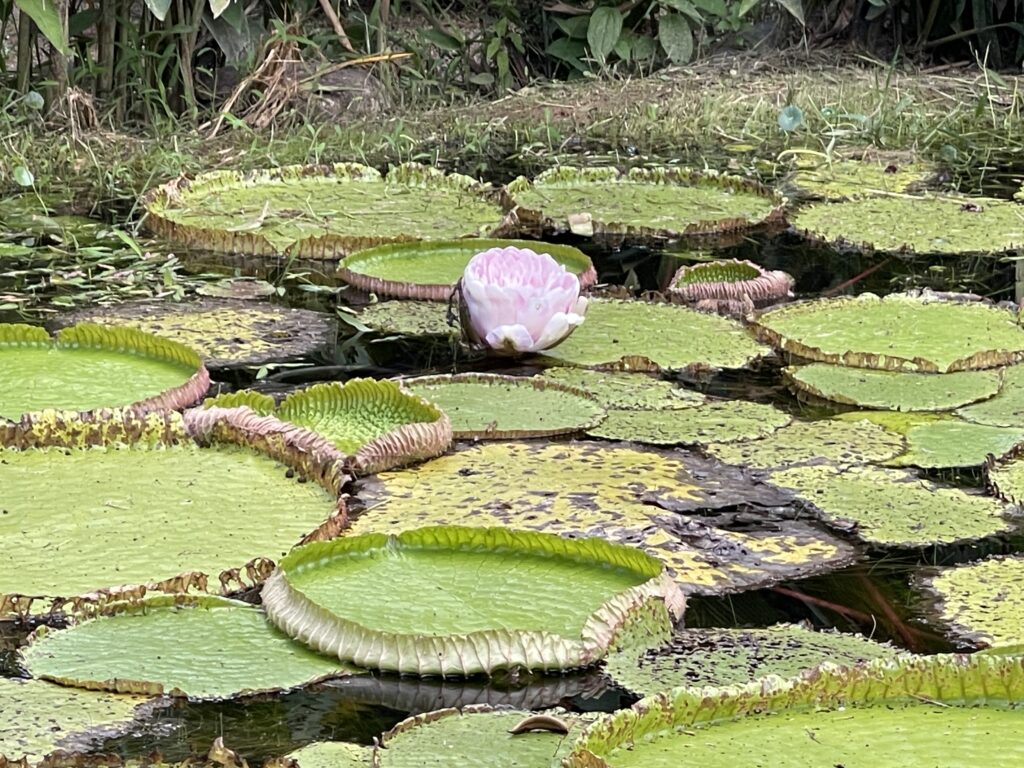
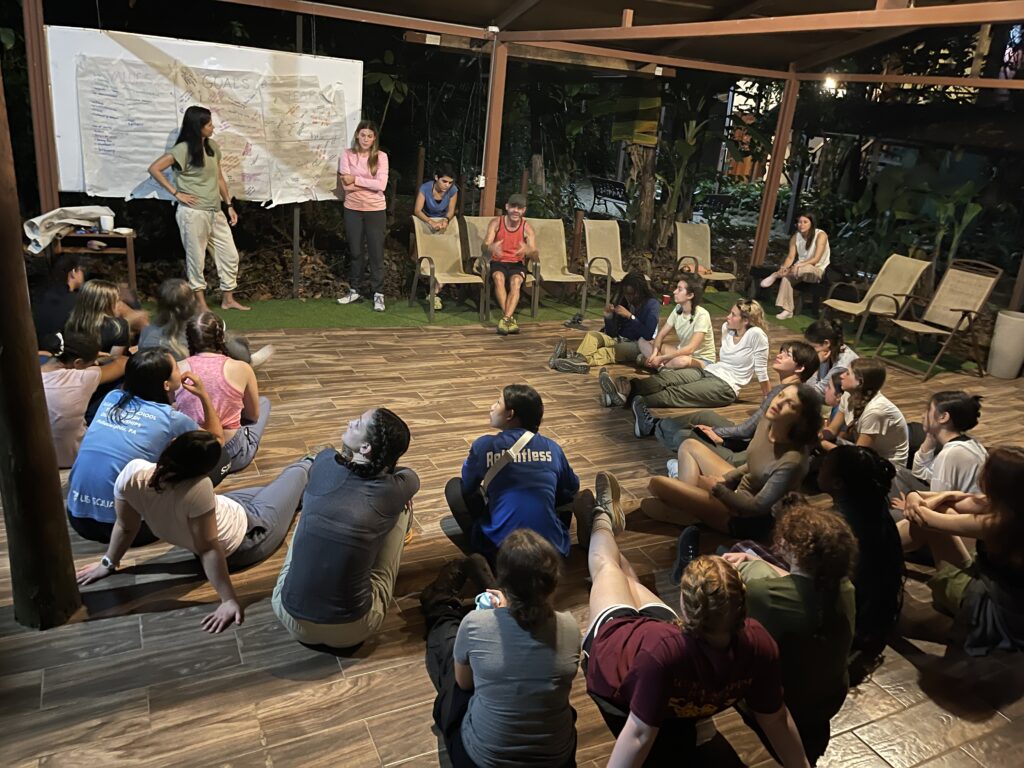
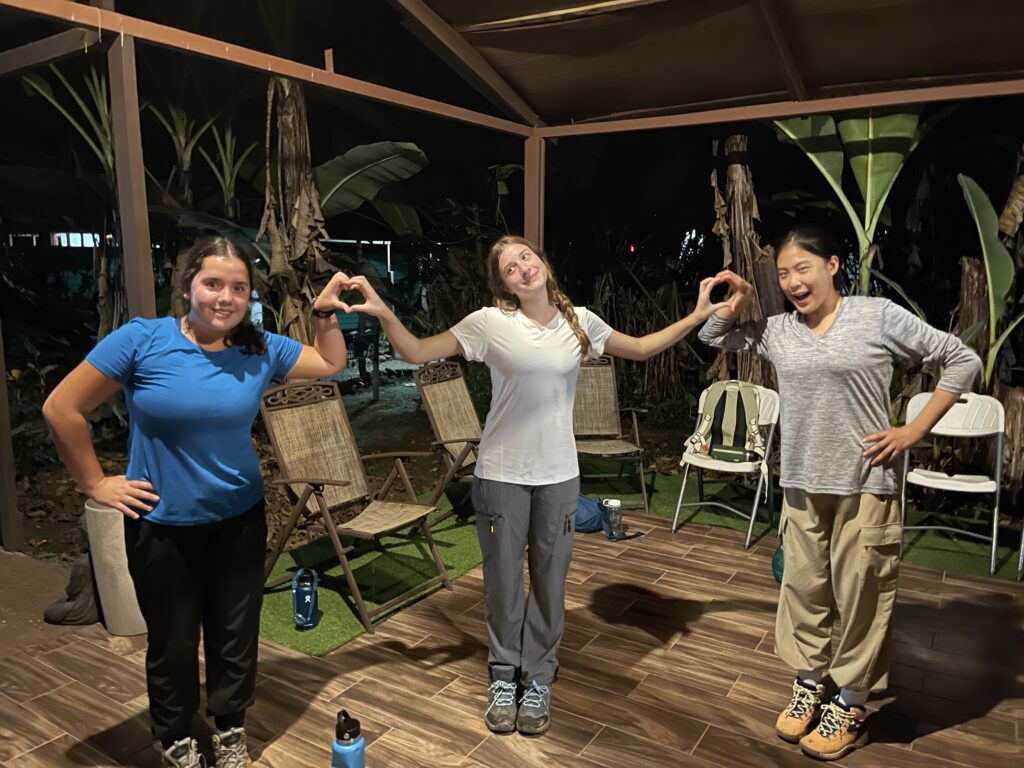
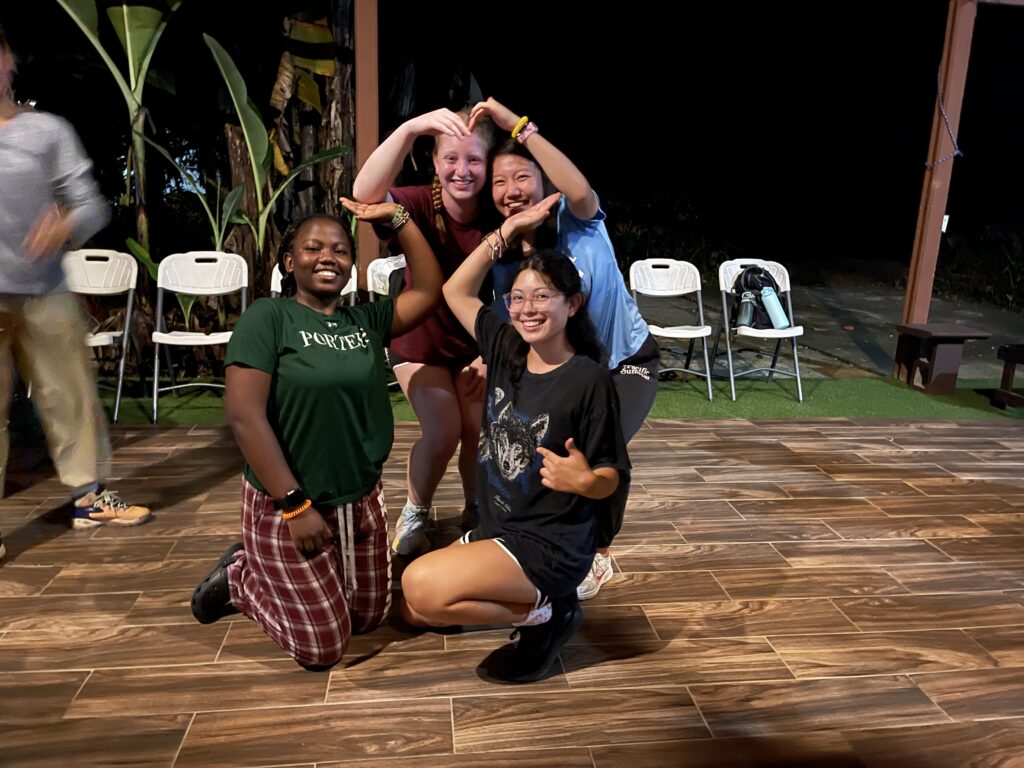

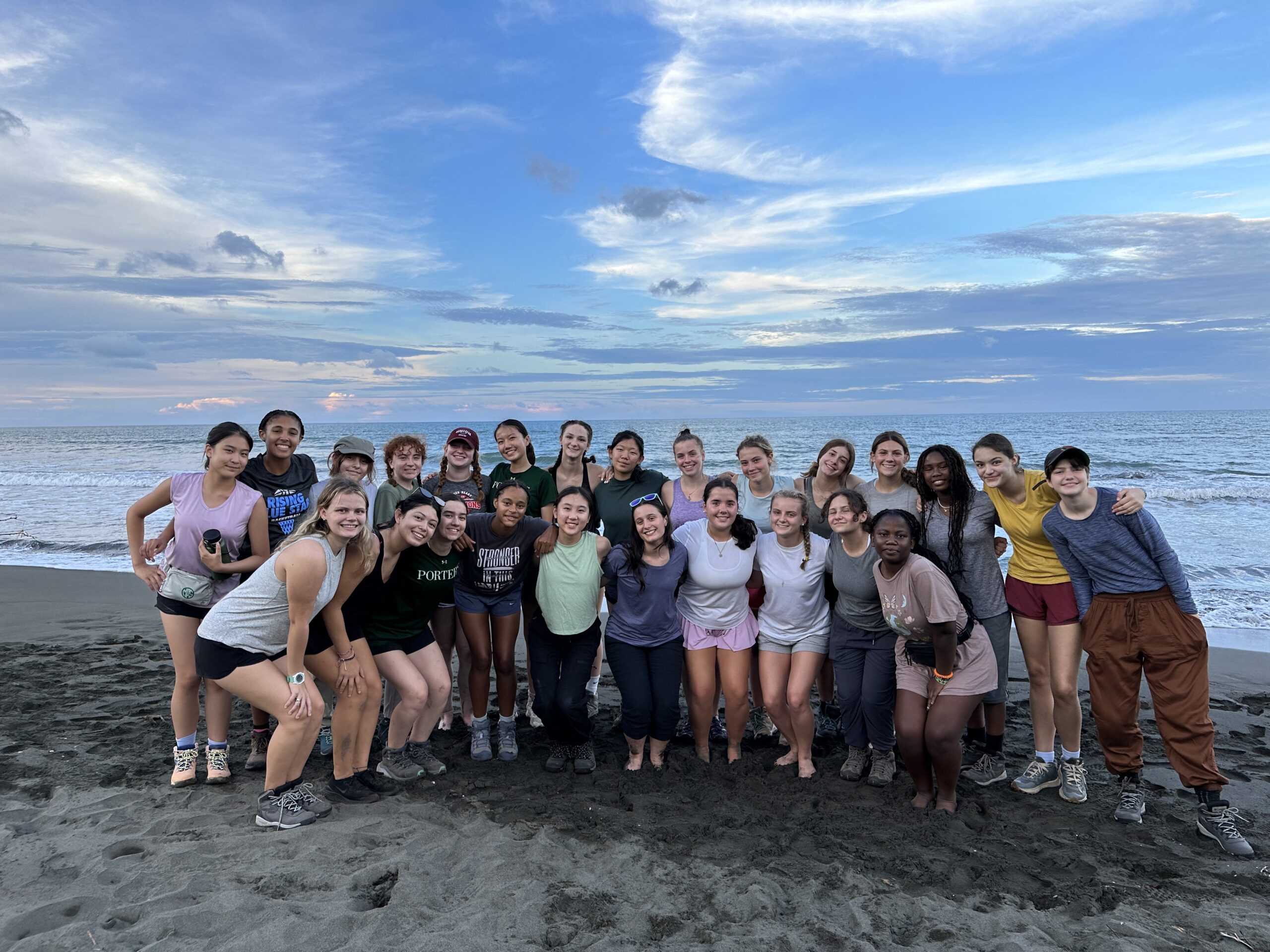
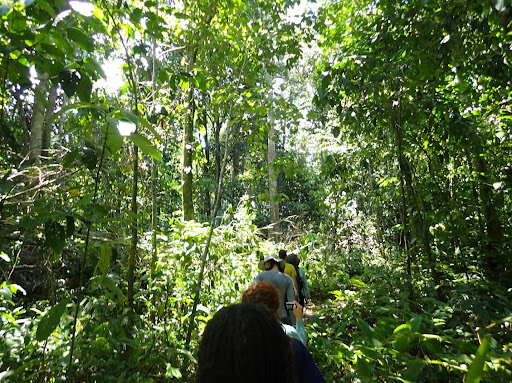

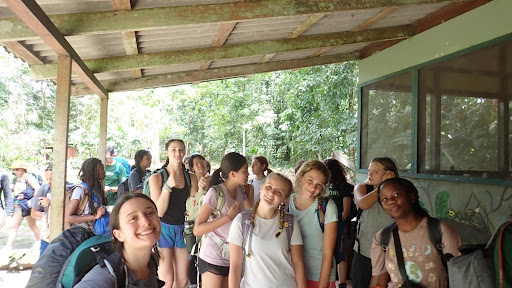
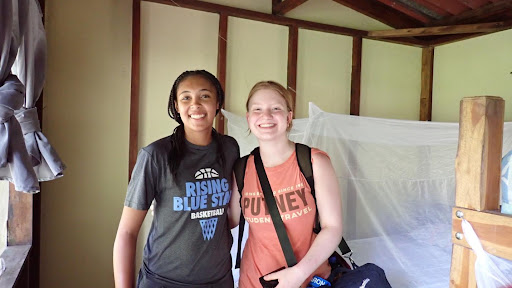
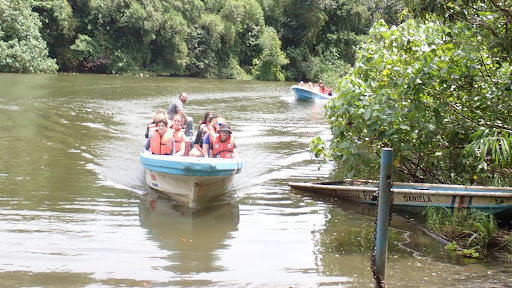
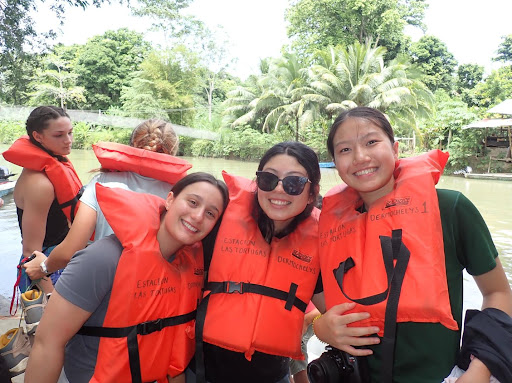


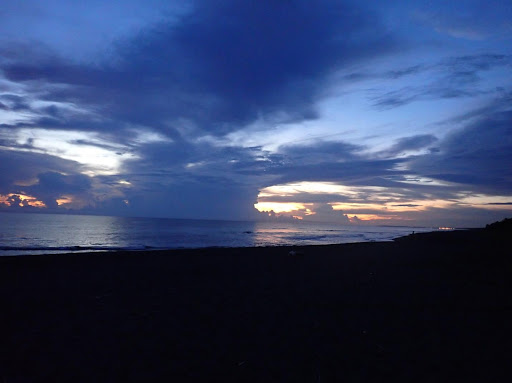
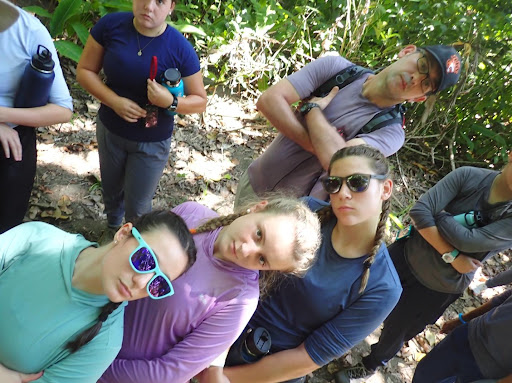
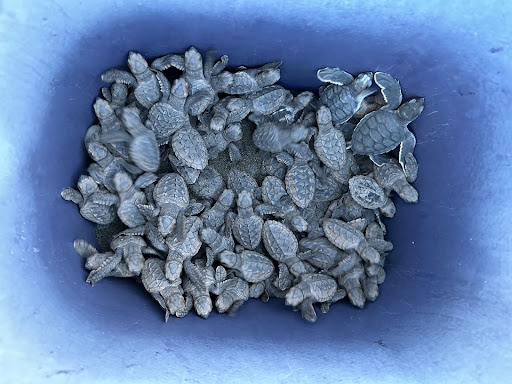
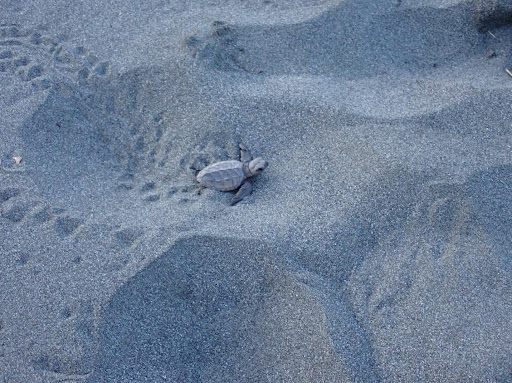
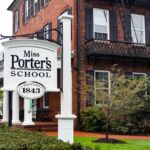

8 Responses
We’re loving all the updates! Keep them coming!
I love seeing the joy on the students faces!
#AISGlobalIntensive
#ShapeAChangingWorld
#GirlsLearnHere
I love that you are having a good time, enjoying the nature. Keep posting.
I love the beautiful pictures, and I enjoy reading the reflections. 🌼Thank you for sharing! 🫶🏾 Continue to post 🌼!
ALL looks so amazing! And I love seeing my advisee AL having a great time among all the learning!
Thanks for the amazing updates! You are all learning so much about the land, animals, and yourselves!
Thanks for all the updates! We love following your journey
Thanks for all of these great blog posts! I am just finally catching up on all of them and it is wonderful hearing about your adventures. Sounds like you are all learning so much and I can’t wait to hear more about the trip when my advisees and field hockey players are back on campus!